

Known for their intricacy and small scale, miniature paintings in medieval India were composed into personal albums (or muraqqas) and manuscripts where they illustrated the accompanying text. Such manuscripts largely consisted of romances, epics, works of fantasy, travel literature, religious texts and biographies.
The tradition of miniature painting in the Indian subcontinent has been traced to palm leaf manuscripts made in the ninth century under Pala patronage in eastern India and Nepal. From the eleventh century onwards, Jain manuscript painting began to be practised in the west and central India, first on palm leaf and then, with the introduction of paper from West Asia in the fourteenth century, in large paper codices as well. These palm leaf paintings had a limited but bold colour palette and used innovative compositions to pair the text with images.
The painting style of the Safavid court in Persia exerted a heavy influence on Mughal and Deccan miniature painting in the late sixteenth century. Mughal painting was especially influential due to the empire’s political power, and this naturalistic, restrained and yet heavily ornamented style was often imitated by smaller kingdoms. Rajasthani, Deccan, Maratha and Pahari courts often employed artists who had trained in the Mughal style, although these schools eventually came to be known for their own unique styles, techniques and subject matter.

ARTICLE
Comprising the manuscript illustration traditions patronised by the sultanates of Ahmadnagar, Bijapur and Golconda, Deccani manuscript painting flourished between the sixteenth and late seventeenth centuries. It also includes the manuscripts and muraqqas commissioned by Maratha emperors and peshwas in the eighteenth century, though these were fewer in number. Manuscript painting in the Deccan grew steadily until the Mughal conquest of the region between 1600–87 resulted in the annexation of the Deccan sultanates, after which a combination of puppet governments and appointed governors kept the practice alive, but with a heavy emphasis on emulating the Mughal aesthetic. The Deccan plateau, which extends over most of the land between the eastern and western coasts of the Indian peninsula, has enjoyed a long history of trade and artistic exchange because of its many ports, which linked it to the Indian Ocean trade routes. Further, the royal families of several Deccan sultanates also had ancestral or cultural links with Persia and Turkey. As a result, Deccan manuscript painting absorbed a range of influences, especially from the Safavid and Mughal ateliers, and, in its initial phases, from the paintings and sculptures of medieval Hindu and Jain temples in the region. It is also notable for its patronage from women rulers, whose power is reflected in the paintings, as well as in subjects such as astrological charts, the Buraq and composite animals. While the style varied somewhat between courts and time periods, overall Deccani manuscript paintings were boldly coloured, heavily ornamented, and often equal parts fantastical and detailed in their rendering of flora and fauna. The costumes and jewellery worn by the figures featured varying degrees of synthesis between the south Indian fashions of the time and the traditional attires of Persia and Asia Minor. The matured styles of the various courts — in the early decades of the seventeenth century — show a fascination with movement, especially the suggestion of a slight breeze that lent a characteristic dynamism to otherwise static figures. Persian influences can be seen particularly in the way mountains and faces were drawn, and in the high, slightly curved horizon line. However, as Mughal military expansion into the south began at the end of the sixteenth century, painters began to move between Mughal and Deccan ateliers, sometimes deliberately altering their work for their north Indian patrons. Over time, Deccani paintings became more naturalistic, more tightly composed and more muted in their colour choices – similar to the Mughal style. The oldest surviving manuscript paintings from the region belong to the incomplete Tarif-i-Hussain Shahi manuscript, made in 1565 for the Ahmadnagar court, though scholars speculate that there may have been older manuscripts that are now lost. Information on the development of the Ahmadnagar style is particularly fragmentary, as few folios and drawings have survived. The prominent position given to Khanzada Humayun, the queen regent of Ahmadnagar between 1565–69, in the paintings and the text of the Tarif-i-Hussain Shahi manuscript suggests that she likely commissioned it herself. However, she was deliberately erased later on in all but one painting of the manuscript after her son Murtaza overthrew and imprisoned her. The Ahmadnagar style appears to become more restrained and naturalistic in the 1570s, and a clear Mughal influence is visible by the 1590s. By 1600, however, political turbulence in the kingdom and the Mughal conquest of key cities in Ahmadnagar ended local patronage for the art form, although Rajput governors of the Mughal Deccan continued to hire artisans for Rajasthani-style miniatures, particularly for portraits and ragamala paintings. The Bijapur sultanate, also formed in 1490, extensively patronised manuscript painting. The earliest example is the Nujum-ul-Ulum, an encyclopaedic manuscript on astrology and magic commissioned by Ali Adil Shah I. His successor, Ibrahim Adil Shah II, sponsored manuscript painting and other art forms generously, also dabbling in painting himself. His reign marks what scholars consider the high point of Bijapur painting, which is notable for its extremely dense use of golden floral and arabesque patterns for the ornamentation of clothing, and its intricate, varied depiction of flora. Ibrahim’s interest in both Hindu mythology and Sufism allowed for the inclusion of syncretic symbolism in illustrations commissioned during his reign, and even more so in the accompanying texts. Chand Bibi, aunt and queen regent during Ibrahim’s minority, features in later eighteenth-century Deccan paintings as the ideal female ruler and warrior, typically depicted hawking with an entourage. While Ibrahim’s successors continued to commission illustrated manuscripts, this was done as a matter of courtly duty rather than personal interest. This, along with the increased presence of Mughal governors in the region following the conquest of Ahmadnagar territories in 1600–36, meant that the younger generation of local artists was encouraged to emulate the Mughal style in their commissioned manuscripts. Many artists trained in the north were also brought into the royal ateliers of the Deccan. As a result, the Bijapuri style became very close to that of Mughal manuscript paintings by 1680, soon after which Bijapur was annexed by Aurangzeb. Meanwhile, in the north Deccan, the Maratha court took an interest in manuscript painting, commissioning muraqqas, ragamalas and illustrated copies of religious texts regularly over the course of the early seventeenth and eighteenth century. Initially, these were made at Rajput kingdoms in Rajasthan, but as Maratha patronage steadied, local painters were hired in the chitrashalas or painting ateliers at Poona (now Pune). In Hyderabad, the Qutub Shahis of Golconda – the wealthiest of the Deccan sultanates – employed local, West Asian and Central Asian artists in their atelier, but the style tended towards that of the Safavids. While the idealised faces and bodies of human figures of these paintings are characteristic of Persian painting, their realistic postures suggest the hand of local artisans experienced in making stone sculptures for temple walls. The Golconda style underwent subtle changes over the course of the seventeenth century: first, in the form of the Mughal naturalism, which had already spread to Bijapur, and then as a deliberate rigidity and restraint seen in painted figures, possibly in emulation of new Persian painters of miniatures such as Shaikh Abbasi. Scholars have suggested that this style may be the work of Deccani artists who trained in Persian ateliers and returned to India or of Persian artists migrating to India themselves. Following the capture of Golconda by Mughal forces in 1687 and the deposition of the Qutub Shahis, a Mughal tributary state based in Hyderabad emerged as the major political presence in the south Deccan in the late seventeenth and early eighteenth centuries. While these rulers were governors and not royalty, they still functioned as major patrons, typically commissioning portraits in which they appear in profile with grave expressions, possibly to emulate the Mughal style – a choice that was somewhat undercut by the abundant flora surrounding them. After Hyderabad and the southern Deccan were taken over by the Asaf Jahis in 1724, the court style retained its rigid emulation of Mughal painting, steadily sponsoring artisans over the course of the eighteenth century. These works were technically well-executed and extremely formal, with the dynamism and nuance of earlier Deccan styles visible only in drawings and sketches. Today, folios and manuscripts illustrated in the Deccan can be found in museums and private collections across the world, including the National Museum, New Delhi; the Bharat Itihas Sanshodhak Mandal, Pune; the Metropolitan Museum of Art, New York, USA; the David Collection, Copenhagen, Denmark; the Los Angeles County Museum of Art, USA; and the Institute of Oriental Manuscripts, St. Petersburg, Russia.

ARTICLE
The traditions of manuscript painting that emerged in the Rajput courts of central and northwestern India between the sixteenth and the eighteenth century are collectively referred to as Rajasthani manuscript painting. Imbibing elements of naturalism, as well as Mughal and Islamic influences, these paintings were characterised by flat compositions, the use of black outlines, pointed facial features and a bold colour palette. The earliest examples of painted narratives from the region – which comprises the present-day states of Gujarat and Rajasthan – are the palm leaf manuscripts of Jain texts, which were stored in bhandaras, or libraries. By the fifteenth century, secular and Hindu religious manuscripts also began to appear, including illustrated versions of the Gita Govinda, the Devi Mahatmya, the Panchatantra and the Rati Rahasya. Despite their use of paper, these texts retained the restricted, horizontal format of palm leaf manuscripts. The illustrations themselves are characteristic of the Western Indian style of painting, featuring saturated colours, angular silhouettes, protruding almond-shaped eyes and faces depicted in three-quarter profile. By the mid-fifteenth century, a stylistic shift was precipitated by the growing influence of Persian and Islamic court art, with Jain manuscript paintings from this period incorporating elements such as decorative borders as well as embellishments like silver, gold and lapis lazuli. An illustrated Bhagavata Purana from this period also reflects the influence of Islamic codexes, with images becoming independent of text and expanding in size, sometimes occupying the entire folio. Another significant evolution was the development of an early Rajasthani style, also known as the Chaurapanchasika style, which derived its name from a group of sixteenth-century poetry manuscripts. During the Mughal era, Rajasthani manuscript painting developed in the Rajput courts of the region, in workshops that were likely inspired by their Mughal counterparts. The Mughal techniques of naturalism in landscape and physiognomy, spatial depth and perspective, were absorbed to differing degrees in these courts and co-existed alongside their own traditional styles. The themes of the manuscripts from this period were diverse, encompassing religious texts such as the Bhagavata Purana, epics such as the Ramayana and Mahabharata, as well as legends and stories about local folk heroes. Works about the life of Krishna, in particular, were popular and produced across the different royal courts. Poetical works such as Rasamanjari, Rasikapriya were also commissioned, as were devotional works like the Gitagovinda and Sur Sagar. Each Rajput court across the region had its own legacy and style of manuscript painting. These were not always limited to royal workshops. In Marwar, for example, a Meghaduta manuscript was commissioned by lay patrons in 1699 and was stylistically similar to a traditional Ragamala series dating back to 1624. At Mewar, which was another prominent school of miniature painting, the earliest manuscript, Chawand Ragamala, dates back to 1605. It is one of several notable works produced by the court’s workshop during the first half of the seventeenth century, including the Mewar Ramayana (1649–53). The central Indian region of Malwa already had a longstanding manuscript painting tradition, now known as the Malwa school of painting. After the fall of its capital, Mandu, in the second half of the sixteenth century, the smaller Rajput principalities of the region kept its tradition of illustrated manuscripts alive. In the seventeenth century, the style of the Bikaner school continued to parallel the Mughal artistic style of the time. However, by the second half of the century, the Mughal workshops suffered a decline and its local painting tradition re-emerged and gained prominence, as evidenced by a Rasikapriya series and Bhagavata Purana dating to this time. During the same period, manuscript painting was also flourishing in the workshops or chitrashalas of Bundi and Kota. The former is notable for its use of elements from both the Mughal and the Deccani schools. The latter, after its separation from Bundi, established its own painting tradition, which included detailed depictions of landscapes and hunting scenes in addition to devotional works. The apogee of the Kishangarh school, meanwhile, came in the first half of the eighteenth century, characterised by devotional paintings of Radha and Krishna. These paintings, primarily executed by the master artist Nihal Chand, were based on the Bhagavata Purana, the Gita Govinda and the poems of Savant Singh, the then ruler of Kishangarh. In the court of Amber at Jaipur as well, court painting gained prominence in the eighteenth century, with several manuscripts produced under the royal patronage of its ruler Savai Pratap Singh, including a Ragamala series and a Rasikapriya series. Like many manuscript painting traditions in the subcontinent, the administrative and economic policies of the British Crown in the nineteenth century led to a decline in patronage as the wealth of most smaller courts was reduced. Coupled with the arrival of photography, which attracted the interest of royal patrons, and new forms of employment for artists, such as Company Painting, Rajasthani and other miniature painting traditions faded away by the late nineteenth century.

ARTICLE
Bound and painted palm-leaf books commissioned during the reign of the Pala Dynasty, illustrated manuscripts were a significant aesthetic mode in early mediaeval Bengal, along with bronze and stone sculptures and architecture. Through this period, the modern-day regions of Bihar, West Bengal and Bangladesh became possibly one of the last major sites for disseminating Buddhism in South Asia and beyond between the ninth and thirteenth centuries CE. Illustrated manuscripts from the period were thus informed by various aspects of Buddhist iconography and sacred textual traditions, such as the Ashtasahasrika Prajnaparamita (The Perfection of Wisdom in Eight Thousand Lines) or episodes from the Jataka tales. While they owed the evolution of their artistic style to previous models like the Ajanta cave and mural paintings of the time, they also marked new ways of developing the miniature painting tradition in the Indian subcontinent. Apart from sites occupied by the Pala Dynasty, especially centring on Nalanda and Kurkihar, and the Varman Dynasty to its east, similar illustrated manuscripts have been found in places like Nepal, Tibet and Southeast Asian states like modern-day Burma and Thailand, possibly taken there by Buddhist monks and scholars. Many of these manuscripts were found with thickly daubed layers of vermillion, sandalwood paste, oil and milk on the covers, suggesting that they were considered to be personal objects of devotion and worship rather than books to be read for leisure. Talipot palm leaves were used for these manuscripts, cut to sizes about five or eight centimetres wide and fifty to fifty-five centimetres in length, smoothened with a stone and primed with a thin layer of white. They were strung together with cords and usually bound within varnished wooden boards, although in some cases ivory or copper was used. The text was inscribed on the palm leaves with a careful kutila (“hooked”) script and gaps were left for the paintings to be filled in later, usually in oblong spaces of 5.5 centimetre x 7.5 centimetre area. Most manuscripts tended not to have illustrations, and when they did they were arranged usually in groups of three to a page: placed either at the beginning, the middle of the text or at the end. Black or red outlines were usually sketched first to give the figures a marked lineament. These were usually filled in with solid colours, although some mixing of the organic colours could be seen in depictions of skin textures. The colours were derived from mineral sources and followed a process of extraction and grinding that was similar to the one employed for the Ajanta paintings. Typical colours included white, yellow, blue, vermilion, green and black. The colour schemes and iconographies were defined by sacred texts and practices in the Buddhist monasteries where they were made. Red ochre was used to make the final sketch, while black was applied to define the eyes and features of the face. While early instances of manuscript paintings show multiple figures somewhat crowding within the frame, later examples showed a more relaxed approach to composition, with flowing lines and increased plasticity in the figures, especially in contrast with sculptural works. Tonally flat colours were used for backgrounds, with figures fixed on singular planes. Faces were usually depicted in three-quarter views, although the Buddha was presented frontally. The roundness and volume of the figures were usually highlighted with transparent applications of dark tones of colour on the outlines. Scholars have argued that the tradition of manuscript illustration saw at least two variations within the style, loosely defined by their locations in the north or south of Bengal and Bihar. The former was also known as the “Varendra” style and was situated in the Magadhan centres of modern-day Bihar, such as Nalanda. Illustrations executed in this style usually bore hard lines and ornate compositions. Sometimes, figures of donors or patrons and their family members were painted directly onto the manuscript, usually just beyond the central frames of the main illustration. Archaeological sites in the Munshiganj district in modern-day Bangladesh, dating to the eleventh–twelfth centuries CE, led to the recovery of two manuscripts in the southern style, also known as the “Vanga” style. One features the complete text of the Ashtasahasrika Prajnaparamita and the other one a set of twenty-two illustrated folios of the same text in another, incomplete manuscript set, now lodged at the Baroda Museum and Picture Gallery in India. The southern style is marked for the simplicity of its pictorial style, minimal decorations and bold application of tonally flat colours. The manuscripts were written in a proto-Bengali Gaudiya script, rather than the kutila script preferred in the north. Many manuscript painting workshops in the region were disrupted towards the end of the twelfth century, when Turkic rulers began to establish their rule over present-day West Bengal, Bangladesh and parts of Bihar. The Bharat Kala Bhavan and The Asiatic Society of Bengal hold some Pala manuscripts, particularly of the Prajnaparamita Sutra, dating back to the eleventh and twelfth centuries CE.
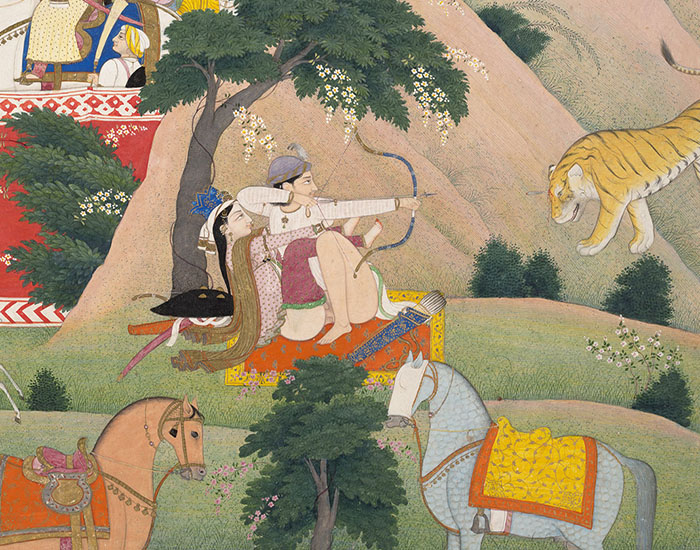
ARTICLE
Manuscript and muraqqa illustration traditions in kingdoms at the foothills of the Himalayas — including present-day Himachal Pradesh, Punjab, and Jammu and Kashmir — are grouped together under the term pahari, meaning “of the mountains.” These kingdoms were established by Rajput kings from Rajasthan in the late seventeenth century and maintained their sovereignty until the early nineteenth century. The courts at Basohli, Kulu, Guler and Kangra in particular took great interest in manuscript painting and established the careers of notable artists such as Pandit Seu and his sons, Nainsukh and Manaku, to whom the distinctive character of Pahari painting is largely credited. Manuscript painting flourished in the Himalayan foothills – which are also known as the Punjab hills as they pass through the northern part of Indian and Pakistani Punjab – until these kingdoms were annexed by the Sikh Empire and the British East India Company in the first half of the nineteenth century. Despite major changes and external influences, Pahari painting retained certain key features. The paintings usually illustrated amorous or religious Hindu texts, particularly those featuring Krishna and Radha, namely the Gita Govinda and Bhagavata Purana. To a lesser extent, the Nala-Damayanti, Mahabharata and Ramayana were also illustrated. Following Rajput tradition, Pahari courts also commissioned ragamala albums and portraits of young kings. Almost all figures – in albums as well as in manuscripts – were depicted in profile, with their facial features rendered with increasing accuracy over the eighteenth century. Costumes were carefully painted to convey their pattern and texture. While Pahari painting is often divided into a Basohli and Kangra phase due to the heightened influence of these courts, manuscripts and albums were commissioned by many other kingdoms in the region, albeit for smaller projects and sums of money. The artists hired for these commissions worked throughout the region, as a result of which it is difficult to distinguish variations of styles across different courts. The earliest manuscript from the Himalayan foothills is an illustrated copy of the Rasamanjari, made at Basohli between 1660 and 1670. This early style is characterised by the use of bright, deep shades of yellow, ochre and green; detailed depictions of ornamentation on the main figures of the painting; and the use of strong gestures to express heightened emotions. The almond-shaped eyes are wide open and intense, especially in romantic or intimate scenes. While necessary details of the environment were painted around the characters — such as trees or architectural features — these were kept in the middle ground or foreground, while the background was usually a solid colour field with a very high horizon line. When noble or royal persons were included in a painting, they were often shown to be disproportionately large compared to the structures inside which they were situated, underscoring their importance in relation to other figures. For a brief time, paintings at Basohli in the seventeenth century included the application of wing cases from beetles on the figures’ costumes to imitate jewellery. However, this technique is not seen in later paintings. As a result of the political independence and the remoteness of the Pahari kingdoms, the early Pahari style at Basohli was far removed from the naturalism, restraint and muted colours of Mughal painting, despite the strong influence of the Mughal style in Rajasthan and the Deccan during the same period. Over the course of the next century, however, Nainsukh began to occasionally work for the Rajasthani and Mughal courts and, as a highly influential painter, became responsible for the introduction of Mughal elements into the manuscripts painted in Basohli and surrounding kingdoms. Additional Mughal influences on the Pahari style were brought by the many artisans who fled from the atelier of Mughal emperor Muhammad Shah, following the seige on Delhi by Nader Shah’s forces in 1739. Notable features that distinguish this later style from that of the seventeenth century include a landscape backdrop with a lower horizon line, a lighter colour palette, less ornamentation in the costumes, and a more realistic size difference between human figures and architectural elements. This style, established in the mid to late eighteenth century, is considered to be the fully realised form of Pahari painting. The Kangra ateliers flourished in the late eighteenth century to the early nineteenth, carrying forward the themes, experiments and Mughal influences of the Basohli paintings, while also adding new elements. This was largely done by artists from the families of Nainsukh and Manaku, under the patronage of the Kangra king Sansar Chand. In addition to the features of the late Pahari style described above, Kangra paintings feature an emphasis on the green, undulating landscape of the Punjab hills as well as a continuous narrative technique practised mainly in Pahari paintings and very rarely in Rajasthani and Mughal ateliers. This composition technique typically involves the strategic arrangement of trees and architectural elements in such a way that a scene is divided into panels. The main participants of the narrative are shown multiple times in the same painting, enacting different parts of the narrative within the divisions created by the surrounding landscape and buildings. Continuous narratives were usually applied to known stories from the Bhagavata Purana, the Gita Govinda and the Ramayana, possibly so that the painting would remain intelligible to the viewer. Royal patronage for Pahari manuscript painting ceased in the early nineteenth century, prompting many Pahari artisans to take up employment at Sikh or Rajasthani courts. While some minor artists in Kangra continued to practice the art form, the Punjab hills were no longer a cultural centre for most of the nineteenth and twentieth centuries. Today, organisations such as the Kangra Arts Promotion Society (KAPS) and the Kangra Museum of Arts in Dharamshala offer training in the traditional Pahari style of painting, including the use of traditional materials and pigments. These paintings are sold commercially as individual works, although the income from sales and the stipend from these organisations remain a precarious form of livelihood for traditional Pahari artists.

ARTICLE
A major tradition of miniature painting in the history of South Asia and the wider Islamic world, Mughal manuscript painting emerged in the mid-sixteenth century in the royal ateliers (workshops) of the Mughal kings and remained highly influential until the late eighteenth century, well after the decline of its foremost patron, the Mughal court. Known for its naturalism, intricacy, luminosity and pluralism in both style and subject matter, Mughal miniature painting embodied a range of syncretic influences. Borrowing from styles as diverse as Persian miniatures, pre-existing manuscript paintings in South Asia and European Renaissance images, these paintings served as historical documents, visual aids for storytellers, illustrations for significant literary texts, ritual objects and accompanied scriptures and scientific literature. Inspired by the aesthetic achievements of Shah Tahmasp’s court in Safavid Persia (present-day Iran), the Mughal emperor Humayun had successfully negotiated to take two Persian artists, Mir Sayyid Ali and Abd al-Samad, with him to India, along with military aid. In 1555, Ali and al-Samad set up the Mughal atelier after Humayun re-established the Mughal empire in India. As Mughal power and influence grew in the subcontinent, so did the painting style’s popularity and aspirational value for many smaller courts in South Asia. As a result of this, contemporary scholars categorise Mughal manuscript paintings into two distinct categories — the imperial Mughal painting that was executed by the Mughal atelier and commissioned by the court, and a sub-imperial or popular form of Mughal painting, which was made by other, smaller ateliers without royal patronage. The difference is visible in the subject matter, intricacy and naturalism of the style, and the quality of materials used, while the similarities result from the standards set by the older and more lauded imperial atelier. During Akbar’s reign — which came shortly after the Mughal atelier was set up — the size of the royal atelier grew from about thirty artists in 1557 to over a hundred in the 1590s and consisted of painters, colourists, calligraphers, bookbinders and other specialists. Mughal manuscript painting, sponsored as it was by the wealthy Mughal court, used fine quality paper which was imported from Persia and Italy. Pigments for colours were derived from similarly rare and expensive mineral sources such as lapis lazuli, orpiment, cinnabar and gold, amongst others. Illustrated manuscripts were often commissioned from texts of classical Persian literature, biographies of Mughal rulers and their ancestors, historical documents and Persian translations of works of ancient Indian literature. Illustrations of key scenes would appear alongside the calligraphic nastaliq text. Additionally, in order to efficiently carry out a large number of projects — including illustrated manuscripts, individual paintings and designs for other objects — the hierarchy within the atelier remained somewhat fluid but highly collaborative. Within a given folio a master painter composed the image based on the text, which would then be coloured in by a junior artist. Further, there were some artists who specialised in portraiture or drawing animals. This achieved a level of consistency amongst different artists, but also maintained an individualistic style. For example, the artist Daswanth became well-known for his fantastical and frenzied compositions that stood in direct contrast to the work of Basawan, a contemporary, who became well-known for his talent for naturalism. Occasionally, the individual folios in the manuscripts also contained copious details such as the names of the artists involved, number of days taken to complete the artwork, the size of the atelier and so forth. One of the earliest examples of illustrated manuscripts from this period is the *Tutinama (‘Tales of a Parrot’), which was written in the fourteenth century and illustrated in the 1560s. It displays indigenous flora and fauna within Persianate landscapes and includes the realistically proportioned dark-skinned figures associated with South Asia, rather than the willowy, fair-skinned youths emblematic of Persian paintings. Mughal artists were also introduced to European influences around this time, when European emissaries and missionaries brought religious paraphernalia and examples of European art with them to the Indian subcontinent. This infused notions of pictorial depth and perspective into the sensibilities of the artists, though this always remained a minor component of the fully formed style of Mughal painting. Thus, the Mughal style of painting is characterised by the amalgamation of Persian, Indian and European styles. Apart from the Tutinama, some other important manuscripts that represent the Mughal manuscript painting tradition include — the Hamzanama (‘Book of Hamza’), a fictional biography of the prophet Mohammed’s uncle Hamza ibn Abdul-Muttalib (c. 569–625), made during Akbar’s reign and considered to be one the largest and most ambitious manuscripts illustrated by the atelier with its 1400 paintings; the Akbarnama (‘Book of Akbar’), a real-time documentation of Akbar’s reign, illustrated by at least forty-nine artists in the atelier; Shah Jahan’s biography, the Padshahnama (‘Book of the Ruler of the World’), known for its use of multiple perspectives and exuberant colours; and the Khamsa of Nizami, a collection of five poems from Nizami Ganjavi (c. fourteenth century), again produced in Akbar’s court. Over time, the structure of the atelier and the types of manuscripts being produced changed. In the 1580s and 1590s, the atelier mainly worked on dynastic histories such as the Timurnama (‘Book of Timur’, written in the sixteenth century) or the Baburnama (‘Book of Babur’, written in the fifteenth century), and translations of Hindu epics such as the Mahabharata (known as the Razmnama). These would often be large projects, both in the dimensions of the codices as well as the number of illustrations commissioned. In comparison, Persian poetical texts were much smaller in size and were worked on by fewer artists. During the reign of Jahangir, the focus moved away from manuscripts to muraqqas — albums of miniature paintings and calligraphic manuscripts — and the number of artists retained by the imperial atelier for long-term projects was significantly reduced because of the emperor’s tastes and interest in the works of only a few individual artists. Stylistically, Jahangir preferred naturalism and favoured elements of Persian painting along with a particular emphasis on portraiture. Flourishing under the patronage of Akbar and Jahangir, the ateliers remained functional during the reigns of Shah Jahan and Aurangzeb. While Shah Jahan maintained funding for the atelier, his interest was mainly directed towards architecture. The paintings of this period were formal and lacked the flair for experimentation or aesthetic interest under the previous emperors, as the Mughal court viewed painting at the time as a medium of courtly representation. However, the muraqqas and illustrations in texts like the Padshahnama were highly naturalistic and technically accomplished. Aurangzeb’s religious orthodoxy led him to direct funding away from the atelier a few years into his reign, but for most of the 1660s the emperor tolerated painting as a courtly art. Several highly valued examples of portraits and durbar scenes in the Mughal style were produced in this period. With the exception of a revival under the reign of Muhammad Shah (1719–48), patronage for miniature painting had dwindled enough in the eighteenth century that artists were forced to seek employment outside the imperial court, thus lending a strong Mughal element to the painting traditions of smaller kingdoms, particularly Rajput and Maratha courts. With the advent of British rule, the tradition of Mughal miniature painting, with its emphasis on naturalism, was incorporated into the Company school. Today, dispersed folios and, more rarely, whole manuscripts in the Mughal style, are housed at various museums across the world.

ARTICLE
Also called miniature paintings due to their intricacy and small scale, manuscript paintings are the illustrations of key scenes that accompany the text in a range of historical Indian books, including romances, epics, works of fantasy, travel literature, religious texts and biographies. In this sense, illustrated manuscripts are distinct from muraqqas, which were albums of individual painted images made for a patron’s personal perusal. The tradition of illustrating manuscripts in the Indian subcontinent dates back to the ninth century, or possibly earlier. Historically, most manuscripts were made on commission from wealthy patrons, as a result of which manuscript painting became a major court art during the medieval period in India. In many cases, manuscripts were also used for storytelling performances at these courts, with the image on the front-facing side and the corresponding text on the reverse side of a folio, allowing the performer to check the text as they displayed the illustration to the audience. The systems of producing these manuscripts would vary: in some cases, a single artisan illustrated an entire book, but manuscript painting was typically done by an atelier of at least a few artisans, working under a master painter. Well-established artisans were retained for long periods by particularly wealthy courts with rulers who had a keen interest in the arts, but for the most part artisans worked with clients on a project basis. Teams of artisans divided the work among themselves on the basis of specialisations such as portraiture, patterning, painting costumes and accessories, or the rendering of animals, birds and plants. While Indian traditions of manuscript painting vary greatly in style, they are typically rendered in a flattened perspective and a variety of colours, with patterned borders featuring floral or geometric motifs. Wherever patterns are included in the painting – such as on a figure’s clothes, upholstery or architecture – these are reproduced evenly as though on a flat surface and rendered with great care to maintain uniformity. Manuscript painting traditions that were directly or indirectly influenced by the Persian style typically have a lighter colour palette, a high horizon line and tend towards naturalism in the rendering of faces, flora and fauna. The intricacy of border patterns, neatness of composition and use of expensive colours such as gold and ultramarine blue are some common indicators of a manuscript painter’s skill and abilities as well as a patron’s tastes and wealth. The major traditions of manuscript painting in the Indian subcontinent are Pala Buddhist painting in eastern India and Nepal; Jain manuscript painting in western and central India; Mughal and Rajasthani painting in northern and western India respectively; Deccani painting in southern India; and Pahari painting in the kingdoms at the foothills of the Himalayas. In addition to, and often within, these categories smaller kingdoms had their own manuscript painting styles and ateliers, which usually came under the influence of the major schools. Additionally, some notable manuscripts have been found whose makers and patrons remain unknown. Among these are Majuli manuscript painting, Bengal Sultanate manuscript painting, Awadhi manuscript painting, a Jain-style Shahnama, the Nimatnama-i-Nasiruddin-Shahi cookbook, and an illustrated copy of the Chandayana. Apart from imperial patronage, wealthy merchants or noblemen also commissioned manuscripts, although these are more difficult to date and were executed by minor or inexperienced artists. Exceptions to this include the few European patrons who were active in the eighteenth and nineteenth centuries, though they typically commissioned albums rather than manuscripts. Manuscript painting in India drew influences from outside as well as within the subcontinent. External influences, which are seen primarily in Deccani and Mughal painting, came from the Safavid court in Persia (present day Iran and Iraq), which had a flourishing manuscript painting tradition from the sixteenth century onwards and became a highly influential cultural presence in Asia as well as the Indian subcontinent. Local traditions of manuscript painting are much older, with some scholars tracing it back to the third or fourth century CE, although the earliest surviving folios date back to the twelfth century and the earliest wooden covers for manuscripts date back to the ninth century. These early folios took the form of narrow, painted palm leaves that were punched with holes and tied together to make books. In fact, within India, manuscripts were made exclusively with palm leaves until the fourteenth century, when paper began to be used in Gujarat for Jain manuscripts. A paper manuscript, called a codex to distinguish it from the palm leaf variety, became the most preferred medium by the early sixteenth century due to its variable size and capacity to hold a wider range of pigments. The palm leaf manuscripts ranged from ten to twenty inches in length, while the codices could reach up to two feet. The codices also had more ornate borders around the images and some of the text as well, likely as a result of Persian influence. Expensively painted manuscripts, especially codices, often used rare or precious materials as pigment, including gold and lapis lazuli, and the high standard for intricate work meant that artists used fine squirrel hair brushes, sometimes comprising a single strand. Religious Jain and Buddhist texts were the most common illustrated manuscripts of the mediaeval period before the establishment of Islamic sultanates in India. The wooden covers discovered are speculated to have been made for a now lost Buddhist manuscript from the kingdom of Gilgit in present-day Kashmir. Later Buddhist palm leaf manuscripts that have survived were made at the monastic centres of Nalanda and Kurkihar (present-day Bihar) in the eleventh century, as part of a tradition now referred to as the Pala school. Jain manuscripts, usually religious in nature, continued to be produced well into the sixteenth century in Western and Central India, drawing influences from the emerging painting tradition in Safavid Persia through existing trade links across the Persian Gulf. Jain and Buddhist manuscripts typically gave more importance to the text, with the images playing a largely decorative role. In later traditions, however, both text and image were crafted and patronised to an equal degree. Pluralism has been a major characteristic of manuscript painting in India, with Jain, Hindu and Muslim patrons and artists creating manuscripts with themes that draw from a wide range of religious and cultural material. As a result, there was a rich and rapid exchange of styles in the subcontinent as artists trained in various schools moved from court to court. Beginning with Akbar’s patronage of the art form in the second half of the sixteenth century, Mughal manuscripts became the most influential style in India, attracting painters and calligraphers from across regions and cultural backgrounds, including some from Persia. Mughal painters were also influenced by Western art and adopted some of its attributes, most notably the more naturalistic aerial perspective. At roughly the same time, the Deccan kingdoms that had broken away from the Bahmani Sultanate in the sixteenth century began commissioning illustrated manuscripts of their own, first in a highly original elaborate aesthetic and then in a more noticeably Mughal style. Although some kingdoms in present-day Rajasthan also began patronising manuscript painters around the same time as the Mughal court, the Rajput style emerged in earnest only by the late seventeenth century, as painters left the declining ateliers of the Mughal court. From the early eighteenth century onwards, Pahari painting flourished as a distinct genre in kingdoms established by Rajput kings in present-day Himachal Pradesh. By the late nineteenth century, illustrated manuscript painting was largely replaced by photography and large Western-style portraiture. These art forms appealed to rulers of the Princely States under British rule both in a technological and cultural capacity. While illustrated manuscripts are no longer produced, the most recognisable styles of such painting have been adopted by several contemporary artists from Pakistan, most notably Shazia Sikander, Bashir Ahmad, Saira Wasim and Imran Quereshi. In India, miniature painting has also been a major influence on artists of the Baroda school and Bengali modernists such as Nilima Sheikh and Abanindranath Tagore.
The process of stamping designs fabric using dye-soaked, hand-carved wooden blocks is known as woodblock printing.
The convenience of combining motifs and intricate patterns on different blocks to create unique designs made the resulting textile affordable and appealing. Some of the more popular block printing traditions include ajrakh, bagh, bagru, sanganeri, saudagiri, mata ni pachedi, namavali and balotra, as well as the less popular traditions of the Chhimba community in Punjab and the more recent printing practices in Serampore of West Bengal.
Although block printing is believed to have been practised in a rudimentary form as early as the Indus Valley civilisation, the earliest material evidence of these textiles and their international trade came from fragments of cloth from Gujarat, found in Egypt and Indonesia, dated to the thirteenth or fourteenth century. The Indian Ocean trade in Indian textiles continued until it was taken over by the British East India Company and the Crown in the nineteenth century.
While several Indian communities practise the craft, the Khatris and Chippas in the country’s northwestern regions are the oldest known communities to have been continuously involved in block printing, going back as far as the sixteenth century.

ARTICLE
The process of stamping designs and patterns on base fabrics such as cotton or silk using dye-soaked, hand-carved wooden blocks. The technique is central to a variety of printing traditions across India in which blocks are used to create a range of designs composed of floral and religious motifs, geometric forms, and calligraphy. Some of these block printing traditions include ajrakh, Bagh, Bagru, Sanganeri, saudagiri, mata ni pachedi, namavali, and balotra, as well as the less popular traditions of the Chhimba community in Punjab and the more recent printing practices in Serampore of West Bengal. While several Indian communities practise the craft, the Khatris and Chippas in the country’s northwestern regions are the oldest known communities to have been continuously involved in block printing, since at least the sixteenth century. Although, block printing is believed to have been practised in a rudimentary form as early as the Indus Valley civilization between 3000 BCE and 1200 BCE, direct textual evidence dates the craft of block printing on textiles to the eleventh century in Kerala. The earliest material evidence of these textiles and their international trade came from fragments of cloth from Gujarat found in Egypt and Indonesia dating back to a period between the thirteenth and fourteenth centuries. It has been inferred that these textiles were printed and dyed in blue and red during that time — and some were hand-painted using the technique of kalamkari. Block-printed fabrics had experienced sustained international trade in the western and eastern regions of the Indian Ocean, before the establishment of first Europe-mediated and then European trade between the fifteenth and nineteenth centuries. The initially indirect trade was routed through the existing Indian Ocean and Southeast Asian markets by commercial officers from Portugal and the Dutch East India Company and French East India Company. The cultivation of a robust European market for Indian printed cloth such as Kalamkari and chintz, proved lucrative by British East India Company, which began to establish trade monopolies from the seventeenth century on. The visual appearance of any block printed textile depends on the quality of the carving on the block, the richness of the dye and the effectiveness of the mordant used with it. While engraved blocks of metal and terracotta are sometimes used, those made from types of wood such as sheesham, sagwan and rohida are often preferred for their texture and ease of carving. Woodblock carving has been traditionally carried out in Gujarat and Rajasthan, each with producing blocks in distinctive styles. While in Gujarat, Pethapur has been the centre of block making, in Rajasthan, it is Jaipur that serves as the primary centre, both serving printing and dyeing clusters in their respective states as well as in Madhya Pradesh. is the primary blocks from Jaipur are best known for their precise cuts, which allow for cleaner printing with a lower risk of smudging. Contemporary block makers still prefer to use hand tools such as chisels to carve the blocks, alongside some mechanised tools such as small drills. Teak is the preferred variety of wood for making blocks, as it remains undamaged even after frequent contact with water and other substances used in the printing process. Air passages known as pavansar are also often drilled into the blocks to prevent them from clinging to the fabric when lifted. A single printed motif may require the use of multiple blocks. For instance, one block can be used to create a rekh of the motif, another can be used to fill it, such as a datta, and a third block, such as gadh, can be used to create the background of the design. This requires both the block maker and printer to be aware of how every block will be used, and how the motifs will fit into the design. karigars also mark the date on each block, in case it needs to be repaired or altered, so that patterns will repeat perfectly when the fabric is printed. Prior to printing, a mordant is typically added to the dye to allow it to stick to the base fabric because many natural dyes do not easily adhere to the cloth. Only a few — such as indigo, which is used in several block printing traditions and was a key product in colonial extraction — do not require the use of mordants. Although natural dyeing and printing was a thriving practice in India until the nineteenth century, karigars eventually began relying almost entirely on inexpensive chemical dyes. The use of such dyes has allowed two types of manual printing techniques to emerge: direct printing and discharge printing. In addition to block printing, karigars also sometimes employ resist-dyeing, which includes techniques such as dabu printing and batik. Block printing, indigo dyeing and resist dyeing are often combined to produce complex, layered and multi-coloured patterns in traditions such as the aforementioned ajrakh, Bagru and Bagh. The block printing technique in each region of the country is distinct, localised in terms of the materials and tools used as well as the cultural influences and social characteristics of particular communities. Traditionally, the raw fabric, motifs, colours and intricacy of block printed garments have served as designators of the wearer’s identity, caste, community, status and occupation. However, with the onset of urbanisation and market-driven mass production, these textiles have been redefined and adapted for contemporary consumption and usage, losing much of their social and symbolic values. Block printing has had a long tradition in Asia, and particularly India, which though having undergone much change to meet varying market demands and technological and lifestyle changes, has mostly remained authentic and uncompromising in aesthetic and technique. Block printed fabrics have in recent years experienced an upsurge in Indian and international markets, leading to more concerted efforts towards the conservation and revitalisation of indigenous block printing traditions. One f the largest repositories of Examples of printed textiles and garments have constituted the collections of museums in India — such as Sanskriti Museum of Indian Textiles, Calico Museum, and the Anokhi Museum of Hand Printing.

ARTICLE
This block printing technique for textiles derives its name Balotra from the city in the Barmer district of Rajasthan where it is primarily produced. Balotra printed fabrics are characterised by their vertically arranged floral and geometric butis that appear in earthy reds and yellows, as well as cream, over a base that is dyed deep indigo or dark green. These butis are usually large and often printed without the use of a black rekh, or “outline,” resulting in bold and simple designs without the nuances of colour evident in textiles such as ajrakh or Bagru. A unique feature of Balotra printing, considered an extension of ajrakh printing, is that it is done on both sides of the cloth and in quick succession. As with block printing traditions in other parts of Rajasthan, such as — Bagru and Sanganer — the karigars in Balotra belong to the Chhipa community. Oral traditions of the community indicate that woodblock printing has been practised there for many years. After the Partition of India, many Muslim Chippa families migrated to Pakistan, leaving a gap subsequently filled by an influx of Hindu Chippas into Balotra. The waters of the seasonal Luni river and Rajasthan’s hot and dry climate made Balotra well suited to the traditional methods of dyeing and printing that the immigrant and native Chhipas and Khatris had been practising. The preparation and printing of the fabric are similar to that of Bagru, although it is not as laborious or repetitive. The fabric, usually cotton, is first washed and beaten to remove impurities and soften its fibres, and then soaked in water for anywhere between twelve and seventy-two hours. In a process known as saaj, the fabric is treated using a mixture of castor oil, camel or goat dung, and soda ash. While still wet it is soaked in a paste of harda, which lends the cloth a yellow tinge and allows it to develop deeper blacks. Once dry, the designs are transferred to the fabric with wooden blocks in multiple stages: first using direct printing — in which dye is applied to the blocks and pressed onto the fabric — and then using dabu (or dye-resist) printing. The latter of these two processes is more complex as it serves additionally to protect the base colours of the prints from the eventual dye baths. The dabu paste is first made by combining clay, beden, lime and natural gum and fermented for several days. This mixture is then printed onto cloth using wooden blocks, after which it is usually sprinkled with beden to keep up from smudging and to help it dry quickly. Once dry, the fabric is soaked in vats of dye and then thoroughly washed to remove traces of the dabu paste. When dried again, the fabric reveals the dabu printed parts as undyed. A single fabric may be subjected to multiple rounds of dabu printing and dyeing, depending on what the design demands. Direct printing is used for colours such as black, made from a mixture of iron filings, jaggery and natural gum; red, made from natural gum and alum; and grey, khaki and brown, from kashish. Other colours in the palette include indigo-blue, green and a marigold yellow — all created using natural dyes. Balotra print fabric was traditionally used for the attire of women — ghagra (skirt), choli and odhani (a draped cloth) — from various regional communities. Dark-coloured fabrics that mask traces of dirt were used every day as they were better suited to labour, whereas the relatively uncommon lighter variations were reserved for special occasions. The printed cloth also served as social designators, with colours, motifs and patterns being used as differentiators of ethnicity, religion, socio-economic position, occupation and marital status. For example, the phooli, gainda and chameli are motifs worn exclusively by the Mali community. Others such as Rabari ro fatiya and Maliya ro fatiya, named after their respective communities, and the tokriya for the Rabari and gul buta for the Jain communities are all worn by widows. The mato ro fatiya is worn by women who are pre-construction workers, the trifuli is worn by young betrothed girls in Marwar. Motifs derived from names of medicinal and talismanic plants, such as laung and nimboli are worn by married women and by Chaudhary women and Mali widows, respectively. Other motifs such as methi, worn by widows from several communities, and goonda, worn by married Chaudhary women, are based on locally available plants commonly used in cooking. Since the 1990s, traditional Balotra printing has seen a steady decline as local printers have turned to other professions and as the appeal of less-expensive chemical dyes, polyester fabric and screen-printing methods have simultaneously increased. Only a handful of Chippa karigars who use traditional methods to produce authentic Balotra prints remain. These artisans work to supply local communities while also expanding their customer base by adapting traditional designs to decorate household textiles such as floor coverings, bedsheets, pillows and cushion covers.

ARTICLE
A traditional form of block printing locally known as thappa chhapai using natural dyes, Bagh has historically been practised by Khatris in a town of the same name in the Dhar district of Madhya Pradesh. These prints are characterised by a combination of their colour palette of black, red and white, and their intricate naturalistic and geometric motifs. Other features that distinguish the Bagh printing process from ajrakh, also practised exclusively by the Khatri community, is that the colours desired in the final product are applied directly on the undyed base fabric — instead of through a resist-dyeing process — and that the cloth is printing only on one side. Members of the Khatri community migrated from Sind (now Pakistan) nearly five centuries ago and settled in parts of Gujarat, Rajasthan and eventually Madhya Pradesh. They chose Bagh due to its location on the banks of the copper-rich Baghini river and its proximity to markets. Over time, the Khatris evolved a printing and dyeing technique that utilised local resources and catered to the Adivasi (Bheel and Bheela) and Rajput communities. The distinctive Bagh tradition emerged with the development of improved black and red colours (using iron rust and alum) as well as vegetable dyes and the incorporation of regional influences and visual motifs. The motifs and designs of Bagh prints, also known as alizarin prints, are produced by wooden blocks carved in Pethapur, Gujarat. The repertoire of traditional designs and motifs include chameli , maithir, kairi and jurvaria, which are then set in nariyal, leheriya, tikona and gehwar patterns. Some patterns, such as the jaali, or “trellis,” are said to have been inspired by monuments such as the Taj Mahal. The process of making Bagh prints is laborious and demands great attention to detail. In preparation for printing, the fabric is soaked in water overnight, dried and then dipped in a mixture of goat droppings, sanchiri, castor oil and water. It is then dried, washed, dried again and laid atop low tables in front of a karigar seated on the floor. The karigar’s work begins with printing the outline, followed by filling it in with colours and details. The red and black designs are printed in separate stages, allowing the natural dye to dry before the next layer of the design or colouring is applied. Red dyes are made from Aal (Morinda citrifolia), with alum functioning as a mordant, while black dyes are made by combining iron filings and jaggery. A paste made of tamarind seeds is typically used as a binding agent. Once dried for ten days, the fabric is taken to the river, where it is washed and beaten against rocks to soften it and remove excess dye — a process known as vichaliya — after which it is laid out to dry on the banks. The dye is then fixed and the reds are deepened by boiling the cloth for a couple of hours in a solution of alizarin and local dhawda flowers. In a final step, the fabric is washed once again in large tanks known as haudis and then laid out to dry. Threatened to the point of extinction by the advent of synthetics and rapidly changing lifestyles, Bagh printing was kept alive and subsequently contemporised by the efforts of a few prominent Khatri families. An award-winning duo, the late Ismail Suleiman Khatri, and his wife Hajjani Jetun Bi, are master karigars who have been credited with keeping the printing tradition alive in Bagh. Their five sons are all acclaimed karigars who continue to practise and popularise the craft, adapting their designs to suit contemporary aesthetic sensibilities. Among them, Mohammed Yusuf Khatri is prominent for his role in preserving the craft and improving the local economy by training the local non-Khatri artisans in Bagh block-carving and printing, and by expanding the design repertoire and introducing them to a larger market in the form of sarees, stoles and home linen. The next generation of Khatris have carried on this work, extending training and experimenting with materials such as reed mats to ensure the relevance and sustainability of this block-printing tradition. In 2008, Bagh prints from Madhya Pradesh received Geographical Indication (GI) status from the Government of India for their territory-specific production and characteristics.

ARTICLE
A textile block printing technique that features repeated floral buti arranged in various patterns. Commonly seen butas in Bagru prints include gainda, gulab, badaam, kamal and bel. These motifs appear in varying sizes and combinations throughout the cloth on which they are printed. Other designs feature smaller jaali patterns, also composed of floral motifs. Bagru prints employ natural dyes, most frequently black, derived from a mixture of iron filings and jaggery and gum; red, from a mixture of madder and alum; and grey, khaki and brown, derived from kashish. Other colours in the palette include indigo, green and yellow. Named after the city in Rajasthan where it originated, the technique is primarily practised by the Chippa community in Bagru, Rajasthan. The city’s proximity to the Sanjariya river was ideal for the repeated washes required by the technique. Bagru’s clay-rich soil is also an essential element in the printing process, and the area’s warm climate allows fabrics to dry easily. Bagru printing involves multiple stages of washing, drying, printing and dyeing. The fabric, usually cotton, is first washed and beaten to remove impurities and soften the fibres, then soaked in water for twelve to seventy-two hours. The fabric is then treated using a mixture of castor oil, camel or goat dung and soda ash in a process known as saaj. The still-wet fabric is then soaked in a paste of harda, which lends the cloth a yellow tinge. The harda allows the fabric to develop deeper blacks. The fabric is then dried, after which the designs are transferred to the fabric using wooden blocks in multiple stages: first using direct printing — in which dye is applied to the blocks and pressed onto the fabric — then using dabu printing. A single fabric may be subjected to multiple rounds of dabu and dyeing according to the demands of the design. As with other block printing traditions such as Bagh and ajrakh, karigars print the outline before progressing to the filler colours and other finer details of the designs. Usually, a set of three hand-carved blocks are used to create each floral motif — a rekh block, a background colour block called gadh and a colour-detailing block called datta. The blocks are carved out of sheesham wood, with the process of carving and seasoning each block set taking about a week. In the past, chippas were printed on coarse, hardy reja cotton for local peasant and pastoral communities for garments such as ghagras, odhnis, sarees and pagdis. Bagru prints were also used for household products such as angocha, bedspreads, cushion covers and razai. Differing stylisations and combinations of the motifs and colours were developed for each community that wore the prints, allowing traders, farmers and artisans to be identified on the basis of the patterns on their clothes. The original patrons of Bagru prints included Rajputs as well as local communities. Over the last few centuries, the prints have been produced for local consumption, while other floral printed fabrics, such as chintz, have been heavily traded and appropriated in the West. Today, there are about fifty to sixty blockprinting workshops in Bagru, with a community of over five thousand workers. Both women and men participate in the printing process. To cater to contemporary markets, printers use fine fabrics that aren’t limited to cotton. While most of these workshops produce woodblock-printed cloth, some have now employed the screen-printing method, which is less laborious. Many karigars also use chemical dyes.

ARTICLE
A textile block printing technique created by resist dyeing. The term also refers to the resulting fabric, usually cotton, which features floral and geometric motifs printed in darker colours such as indigo and red. While the etymology of the word ajrakh is contested, the Arabic origin of the word — from azraq, meaning “blue” or “indigo” — is the most commonly accepted. It is also believed to derive from the Hindi aaj rakh, meaning “keep for today”. Ajrakh production can be traced back to the Indus Valley civilisation, between 2500-1500 BCE. The bust of the Priest King of Mohenjo Daro depicts him wrapped in a shawl with trefoil motifs, similar to the kakar or cloud motif seen in ajrakh prints. Numerous textile fragments dating from the twelfth to fourteenth centuries CE have been discovered at Al Fustat in Cairo, Egypt, and are considered to be the earliest known examples of printed textiles. The fragments, printed with small blocks and dyed using indigo and madder, bear a striking resemblance to ajrakh. The technique has been practised by members of the Khatri community, who migrated from Sindh in Pakistan to Kutch in Gujarat and Marwar in Rajasthan in the sixteenth century, settling in places that had access to flowing water, which is essential to the ajrakh process. Several karigars (craftspeople) relocated to Ajrakhpur in Gujarat following the 2001 earthquake. The process of creating ajrakh textiles has evolved significantly, from resist-patterning on one side of the cloth to two-sided resist-printed cloth. The printing blocks are often carved in pairs, thus registering an exact inverted image on the other side of the cloth. The production process for ajrakh is notably laborious. The fabric is first washed, beaten and rinsed to soften it and remove impurities. In a process known as saaj, the fabric is treated with a mixture of castor oil, camel or goat dung and soda ash. It is then dried and smoothened to ensure accuracy in the printing process. In the subsequent step, called kasanu, the fabric is dyed using harda, which lends it a yellow tinge. After it dries, the fabric is laid on low printing tables, where a karigar prints a rekh using a mixture of lime and natural gum, which acts as a resist. If the cloth is to be printed on both sides, the rekh is applied on the reverse side as well. The lines printed are resistant to alizarin as well as indigo, showing up as white in the finished product. In the next step, kut, a dye made of iron, jaggery, assorted millets and tamarind, is used to print another set of lines within and over the initial rekh. These lines oxidise when exposed to air and the harda and develop a black colour. Next, a dye that uses alum as a mordant is used to fill in the red details. A paste called pa, made using clay, millet flour and dhawda gum, is applied over these filled-in details to make them resistant to indigo dyeing. Dry cow dung powder is then sprinkled over the wet pa to prevent the resist from spreading. Once the printed lines have dried, the cloth is ready for dyeing. It is dipped in large vats containing a mixture of indigo, lime, jaggery and mustard seeds. The dyed cloth emerges a bright green that slowly turns blue once the dye oxidises. Various natural dyes may be added to the fabric before this stage. The cloth is then repeatedly washed and dried. Following this, the fabric is dyed red by soaking it in a solution of alizarin, natural gum, dhawda flowers and madder, and stirred continuously. It is then dried and washed, and the resultant cloth is considered a simple ajrakh. It is possible to carry out multiple rounds of resist printing and indigo dyeing to give the fabric added detail and dimension. This more intricate form of ajrakh is known as minakari, named after the detailed enamel jewellery tradition. The blocks used in ajrakh are often carved out of sheesham, rohida or sagwan wood, with cosmic and naturalistic motifs. Some blocks are carved in pairs, allowing traditional master karigars (meaning “artisans” in Hindi) to print fabrics identically on both sides with extreme precision. Traditionally, the Khatris have carved the blocks themselves, although this is now in decline, with blocks being carved in Ahmedabad or Farrukhabad in Gujarat. Ajrakh fabrics were primarily worn only by pastoralist men of Gujarat, Rajasthan and the Sindh regions, typically as a lungi, fainta or gamcha. However, its use is not restricted to special occasions, but functions as a versatile fabric for everyday needs: it is often wrapped as a turban or shawl, and is used to create women’s garments including odhnis and skirts or used as a bedsheet or tablecloth. After extensive use, the fabric softens and can be used to swathe babies, make hammocks and used as patchwork to create quilts called rillis. Today, commercially produced, cheaper versions of ajrakh are screen-printed in parts of Rajasthan. One of the current most prominent master karigars of the technique is Dr. Ismail Mohammad Khatri, who — along with his sons, grandsons and the larger Khatri community — continues to print the fabric in the traditional manner, using only natural dyes.

ARTICLE
A form of kalamkari from southern India, where designs are printed, instead of being drawn using a kalam (pen) are known as Machilipatnam block prints. These prints are presently limited to the town of Pedana, near Machilipatnam, Andhra Pradesh. As a trade textile it was known by several names: chintz by the English, sitz by the Dutch and pintado by the Portuguese. Locally, it is also known as addakam (dyeing) and Pedana kalamkari. The blocks are traditionally carved out of teakwood. The dyes are procured from minerals, leaves, flowers and barks of local trees. The colour red, a distinct presence in kalamkari, is made from a solution of alum and tamarind seed powder; the colour black comes from iron ore; violet is derived from indigo; and shades of yellow, such as mustard and lemon, are derived from varying mixes of turmeric and harad (myrobalan). The fabric is soaked in water for three days to remove starch from it. It is treated with buffalo’s milk and harad, then rinsed and dried for the first stage of printing. The edges of the carved block are pressed onto the cloth, beginning first with outlines and then filling in colour. If the design is supposed to be polychromatic, the red and black portions are printed first, after which the fabric is rinsed and dried to be prepared for a second round of printing. Once printing is finished, the fabric is boiled in a bath with dyes, creating varying combinations of colour. The fabric is rinsed and dried and after another stage of printing with natural dyes the cycle of rinsing and drying is repeated. In the Machilipatnam style, the outline drawing is carved on wooden blocks which are then used to print on fabrics. Unlike handpainted kalamkari, which was a smaller setup concentrated as an inter-generational craft, Machilipatnam print production is carried out in karkhanas (commercial workshops) where block making, washing and printing takes place simultaneously. Srikalahasti, the major centre where kalamkari developed, provided patronage to it through religious functions. Machilipatnam, on the other hand, was an important port city from the medieval period and a bustling trade centre. Due to the textile trade and varying influences of Persian, Arab and European traders, the motifs and designs of Machilipatnam block printed fabric were cross-cultural. Textiles were mass-produced in the karkhanas for trade, leading to a prioritisation of decorative function over the narrative function as was done in Srikalahasti kalamkari. Common patterns include geometric formation, floral patterns, twining creepers, animal figures and ornamental arches and niches. During British rule, Machilipatnam block printing was used to produce textiles for garments as well as for furnishing. While locally it was used for prayer mats, tents and canopies, the European market used it for clothing and bedspreads that were known as palampores. Presently, the craft faces difficult competition from techniques of mechanical printing and digital design. One of the few remaining craftspeople, Pitchuka Srinivas has established a small kalamkari museum for the tradition in the town. The production of kalamkari has been extended to markets of home linens, garments as well as souvenirs and it enjoys a great popularity in the west, where it is routinely exported. Pedana kalamkari received a Geographical Indications (GI) tag in 2013.
Indian textile dyes date back four thousand years, with the earliest evidence being madder-dyed cloth fragments from Mohenjo-Daro dating to the second millennium BCE. Trade of dyes may have begun in this same period, based on the traces of indigo found in Egyptian tombs and the later records of trade with the Mediterranean world. Commercial activity around natural dyes reached its height during the medieval and early colonial periods in the form of block-printed and kalamkari cloth before they were largely replaced by European synthetic dyes.
Indian dyes were coveted not only for their vibrancy and their use in inventive textiles but also because of the carefully guarded traditional dyeing processes, which often involved the application of mineral salts or mordants that fixed the colour to the fabric, making the colours uniquely durable. Shades of blue made from indigo, black from haritaki (black myrobalan) and khair (acacia bark), and a range of reds, lilac and burgundy made from manjistha (madder), chay root, aal (Indian mulberry) and lac insects were the longest-lasting dyes, which is why these colours are still visible on fabric thousands of years later. Yellow dyes are made mainly from haldi (turmeric root) and to a lesser extent kusumba (safflower), palash (Parrot tree) flowers and pomegranate rind. However, natural yellow dyes are relatively short-lived compared to blue or red, as are mixed dyes that use a yellow element, such as greens and oranges.
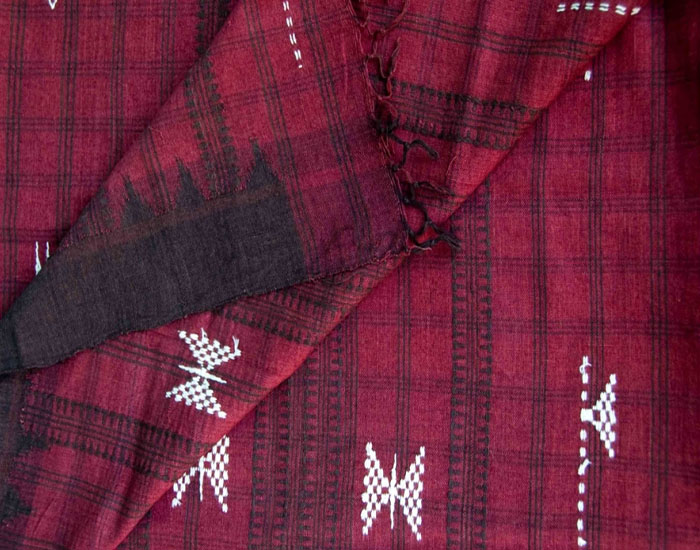
ARTICLE
A deep red natural dye produced from the roots of the aal tree (Morinda citrifolia or Indian mulberry), aal dye is predominantly used by the Panika community of Bastar, Chhattisgarh and Kotpad, Odisha to dye textiles worn by the Panika, Gond, Muria and Maria communities of the region. There is some evidence that the use of aal dye was widespread historically and that it was once exported to the Mediterranean region; textile fragments containing the dye, dating to the first millennium BCE, having been discovered on the shores of the Red Sea. However, textiles using this dye have not been sold on the general market in recent history. The traditional method of preparing the dye begins with gathering the roots of an aal tree that is between three and four years old, since the roots of older trees lose their pigment. The thin roots are selected, dried, ground into powder at a mill and added to a vat of boiling water to prepare the dyebath. Prior to this, the yarns are prepared for dyeing over nearly two weeks by rinsing and repeatedly dipping them in pots of water mixed with castor oil, after which they are covered in liquefied cow dung, wrung and dried. Wood ash sourced from household kitchens is mixed with water and left to settle overnight, after which the water is separated out. The yarns are then dipped in the ash water and wrung multiple times a day until they froth from the process, indicating that they are ready to be dyed. The alumina dissolved in the water from contact with the ash helps the yarn gain a deep, rich red during the dyeing process. Once the yarns are dry, they are added to the boiling dyebath and stirred continuously until the water evaporates, then dried and dyed again for two or three cycles. In cases where a deep brown colour is desired, iron sulphate is mixed into the dyebath on the third cycle. The resultant colour of the yarns is resistant to washing, light and heat. The roots are harvested and sold to the Panika community by the Parja, Gadva and Muria communities. The women of the community begin dyeing cotton yarn from a young age, and the men weave the yarn into their traditional clothing. Yarns dyed in aal dye are used to make headcloths for men and sarees for women. The dye is known to have a cooling effect, providing some relief to wearers who work extensively in the sun. While aal dye continues to be used today, the level of dye production has drastically reduced owing to the commercial availability of synthetic red and brown dyes as well as finished cotton fabric. The Kotpad Weavers Cooperative Society, founded in 1956, lobbies for government aid on behalf of the dyers and weavers and aids in creating a contemporary market for these goods.
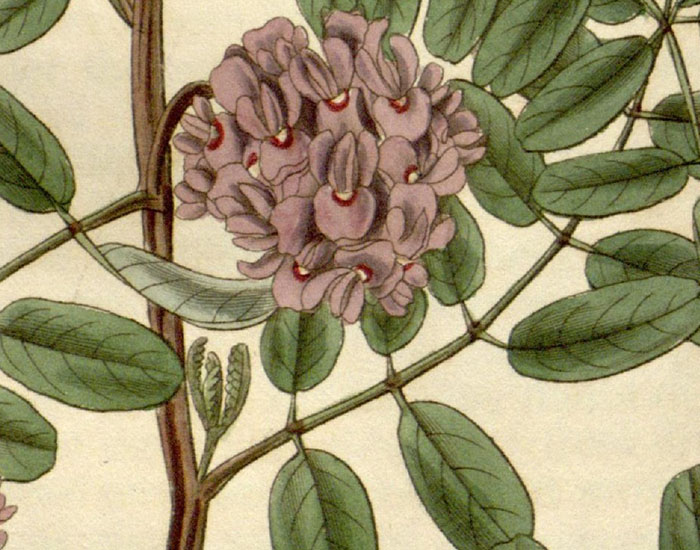
ARTICLE
A natural dye extracted from the Indigofera tinctoria plant native to South Asia, indigo dye is known for its deep blue colour and high potency compared to other blue dyes. Due to the rarity of usable blue pigments in nature, indigo has historically been a prized good, used in the Indian subcontinent for dying textiles for local use as well as for international trade. It played a major role in global economy through the medieval and colonial periods, until it was largely replaced in the late nineteenth century by a synthetic version of the dye. Indigo dye is typically produced in powder or cake form and sold either in this form or as a liquid suspension. Apart from India, indigo has historically been grown and used in Southeast Asia, West Africa and the Caribbean. Indigo dye is extracted from the small, green leaves of the Indigofera plant. Leaves are harvested before the flowers of the plant bloom and then soaked in water and churned until they release a navy blue froth. The upper portion of the mixture is drained out and used for irrigation, while the leaves are reused as fertiliser. The water and fine sediment at the bottom of the tank are allowed to settle for a day, after which the liquid is separated from the sediment. This deep blue paste is filtered for dirt and other impurities, pressed into cakes and dried for a few days, after which the indigo is ready to be used as a dye. The extraction process may be augmented with the addition of lime (Ca(OH)₂) to the first mixture of water and leaves and by dissolving various natural sugars into the paste. Indigo powder is insoluble in water, acidic or alkaline solutions. The conventional dyeing method is to add a reducing agent such as zinc or ammonia to the hot dye bath in order to make indigo soluble — a state known as “white indigo” — before the cloth is dipped into it. The dye bonds to the cloth in this altered state and returns to its deep blue shade after the cloth has been exposed to air and dried. This method was typically used for dyeing whole sheets of fabric and was the prevalent method of using indigo in pre-colonial India. Fragments of fourteenth-century block-printed cloth from Gujarat found in Fustat, Egypt, as well as some later examples from the eighteenth century show that indigo was sometimes used for printing, although the method is unclear. The earliest material evidence of indigo dye are traces found in textiles preserved in Egyptian tombs dating to the late Bronze Age. The earliest literary mention occurs in the Atharvaveda at the start of the first millennium BCE. It appears later in Periplus of the Erythraean Sea, a navigational text from the first century CE. A detailed description of the dye-making process was recorded around the same time by the Roman writer Pliny the Elder, suggesting that indigo-dyed textiles were being traded across the Indian subcontinent, West Asia and around the Mediterranean sea. The indigo trade flourished further after the consolidation of the Abbasid Caliphate in West Asia in the eighth century CE and the resulting growth in Indian Ocean commerce. The genizah documents — a set of over four hundred thousand papers found in Fustat, Egypt, containing commercial and administrative records from the ninth to nineteenth centuries — suggest a thriving indigo trade in the early medieval period. The documents even used the Sanskrit word for indigo, nili, as a suffix for the names of some Arab merchants who traded the dye. Sanjan, a port in Gujarat that exported indigo, was a key junction in early medieval trade networks. By the late medieval period, Kabul, Afghanistan, Aleppo, Syria and Jeddah had also emerged as major nodes, distributing indigo to Central Asia and Persia, Ottoman Turkey and the eastern African coast, respectively. French and British involvement in the trade took place in the Levant, where indigo prices were set for Mediterranean markets and, by extension, the rest of Europe. Despite being a very expensive dye, indigo frequently out-competed local European dyes such as woad due to its potency and fastness, leading to it being banned at various times between the sixteenth and eighteenth centuries in France, Norway and Britain. For most of the medieval period, parts of present-day Gujarat, Rajasthan and coastal Pakistan produced the bulk of indigo from the subcontinent. From the sixteenth century onwards, mercantile ventures by the Portuguese Estado da India and the British and Dutch East India Companies traded indigo from these regions. Production later shifted to Bengal as the British East India Company emerged as a ruling power in the region. British policies in Bengal, such as the Tinkathia system, made it mandatory for landowners to grow indigo in at least three kathas (a unit of land measurement) in each bigha (1 bigha = 20 kathas) of their land. These landowners (or indigo planters, as they were then known) enlisted the services of agricultural workers who were often made to cultivate Indigofera instead of food crops. While indigo planters and British traders made considerable profits by exporting indigo to Europe and Britain, workers were compensated poorly and forced into debt, sometimes even starvation. Indigo plantations were also set up in other colonies using similar policies, particularly the West Indies. During the Indigo Revolt of 1859, farmers from Chaugacha and other parts of Bengal staged a violent uprising against planters and zamindars. The human toll of indigo cultivation, especially in Bengal, has since been remembered as a symbol of colonial exploitation. In the late nineteenth century, Badische Anilin- und Soda-Fabrik (BASF), a chemical factory in Germany, developed and began the mass production of synthetic indigo. By 1914, natural indigo comprised only four percent of the global indigo usage, and despite minor revivals, it continues to have a niche presence today. The vast majority of indigo is now synthetic and is used for dyeing denim, although some natural indigo continues to be produced in south India, particularly Karnataka. More recently, freeze-dried indigo in its crystalline reduced state has become commercially available, shortening the dyeing process considerably due to its solubility in water. In addition to being used as a dye, indigo can be made to react with sulphuric acid to form a salt that is used as a colourant for food and pharmaceutical products.
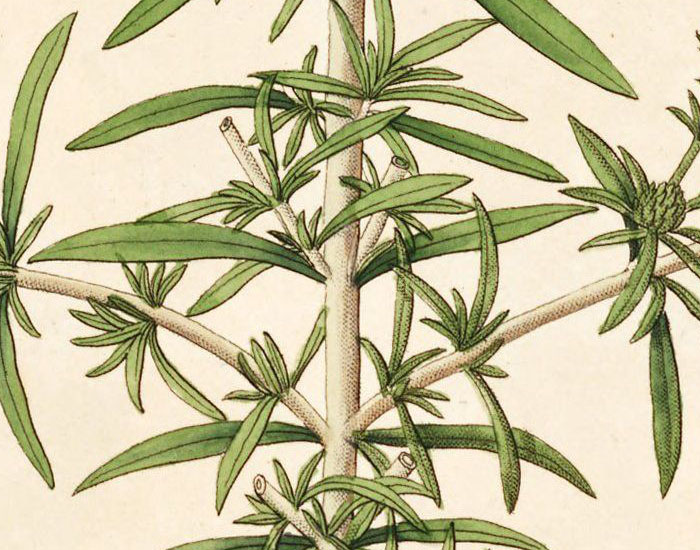
ARTICLE
A natural red colourant, chay root dye is derived from the chay plant (Oldenlandia umbellata), which is native to parts of Bengal; Puri, Odisha; Golconda, Telangana; the banks of the Krishna delta in Andhra Pradesh; and northern Sri Lanka. The dye was used from at least the seventeenth century onwards primarily in the southern states of Andhra Pradesh and Tamil Nadu on kalamkari and chintz cloth. Historical evidence of chay cultivation and dyeing is available only from the seventeenth century onwards, predominantly in the form of European travellers’ accounts that reveal attempts to gain information on Indian methods of extracting and applying the dye for use in their home countries. Chay root was extensively cultivated in Sri Lanka under Dutch and British colonial rule, where members of the non-dominant Verkuthi caste harvested the roots under bonded labour arrangements. The bark of the chay root contains alizarin, which produces the dye’s red colour. The root is boiled in water with an alkali, which extracts the alizarin from the bark and turns the solution red. The cloth to be dyed is painted with a mordant solution, usually alum, according to the planned design. After soaking it in the dyebath, the cloth is removed and the excess dye rinsed off, after which only the areas with the mordant retain the red colour. If the design involves dyes that do not need a mordant, such as indigo, an additional wax-resist step is included. Chay and other natural dyes were quickly replaced by their synthetic counterparts with the invention of aniline dyes in the late nineteenth century. Today, although natural dyes are undergoing a minor revival, synthetic dyes continue to hold the vast majority of the global market.

ARTICLE
A water-soluble colourant, lac dye is usually red to burgundy in colour and is extracted from a resin produced by the insects Kerria lacca and Laccifer lacca. Lac dye is used for dyeing wool, silk, and colouring food. The word “lac” derives from the Sanskrit laksha, meaning “100,000”, referring to the large number of insects typically needed for making the resin, dye and their byproducts. Lac was known in the subcontinent from at least the first millennium BCE. It is mentioned in three texts from the period: the Atharvaveda, the Astadhyayi of Panini, and the Mahabharata, where the Pandavas are almost killed in a flammable building made of lac resin and ghee. A dye recipe for lac is found in the Nayadhamma Kaha, a fifth century CE Jain text. Lac dye has been used in woolen Persian carpets since the eighth century, and was introduced to Europe in the late sixteenth century through Portuguese agents in India. Lac insects have a parasitic relationship with trees such as the Indian jujube (Ziziphus Mauritiana), kusum (Schleichera oleosa) and palash (Butea monosperma). The insects infest the trees by piercing the bark and drawing nutrients from the interior. The resin secreted by the insects can be processed into shellac. This can be shaped into jewellery or used to finish wooden surfaces, which is why lacquer was originally made with lac. Lac insects are cultivated by tying an already infested branch or twig to a tree, and periodically harvesting these as the colony expands across the tree. Today, lac is cultivated primarily in the states of Jharkhand, Chhattisgarh, Madhya Pradesh, Bihar, Odisha and West Bengal, often by adivasi populations in forested areas. Lac dye gets its red colour from the laccaic acid present in the hemolymph or body fluid of the lac insect. It is obtained by separating the insects from the branch and the resin, crushing them and dissolving the result in an alkaline solution. This solution is then acidified and treated with chalk, which reforms the dissolved dye as a sediment. The sediment is allowed to settle for a week. The resultant crystallised form of lac dye is then strained out and added to a hot dyebath while still damp. A mordant, ideally tin chloride, and the fabric to be dyed are added to the bath and allowed to sit for an hour as it simmers. After the colour has reached a sufficiently deep shade, the cloth is removed, rinsed and allowed to dry. Until the invention of synthetic aniline-based dyes in the late nineteenth century, lac dye was the primary product of lac cultivation in India. It continues to be used in a minor capacity for handicraft textiles, and more commonly as a natural food colourant.

ARTICLE
A natural red colorant extracted from the roots of the Indian madder or manjistha (Rubia cordifolia) and common madder (Rubia tinctorum), madder dye is known for its vibrancy and fastness. Indian madder is a cultivated species of madder that contains high amounts of alizarin, which is the main compound responsible for producing red in most natural dyes. Common madder is native to West Asia and the Mediterranean region and has been grown and used as a dye across Asia for centuries. The widespread habitat of madder plants as well as the long history of the trade of Indian cotton cloth has resulted in multiple varieties of madder being cultivated and used throughout Southeast Asia, South Asia, the Mediterranean coast and northern Africa. Madder has been used across the Indian subcontinent since the second millennium BCE, with traces of the dye found in cloth from Mohenjo-daro. The dye was also found on textiles discovered in the tomb of the Egyptian pharaoh Tutenkhamun, dating to the fourteenth century BCE. Chintz, kalamkari and other Indian textiles coloured with madder were extremely popular in Europe during the seventeenth and eighteenth centuries. Madder dye began to be directly exported to Europe after cotton cloth began to be produced in the West. Textiles dyed, painted and block-printed with madder as well as other red dyes, such as those derived from lac, Indian mulberry and safflower, were also regularly exported to eastern Africa, West Asia and Southeast Asia from the first millennium CE onwards. The roots of the madder plant are gathered when it is between two and five years old. They are then cleaned and crushed into powder or small fibres. In pre-industrial India, soft water was first heated without bringing it to a boil before adding the cloth and salt- or oil-based mordants, preferably alum, to the water. The cloth was then allowed to sit in this solution as it cooled, before being removed and wrung. A dyebath was then prepared by wrapping the crushed madder in cotton cloth and placing it in a separate vat of water, followed by the mordanted cloth. Since alizarin has low solubility in water, this method allowed the red colour to disperse through the water slowly, so that the bath was evenly coloured and the cloth dyed uniformly. The dyebath could be reused to obtain lighter shades of red or pink. Madder dye was replaced by synthetic dyes by the late nineteenth century. Today, the dye is used to a small extent in traditional textile craft.
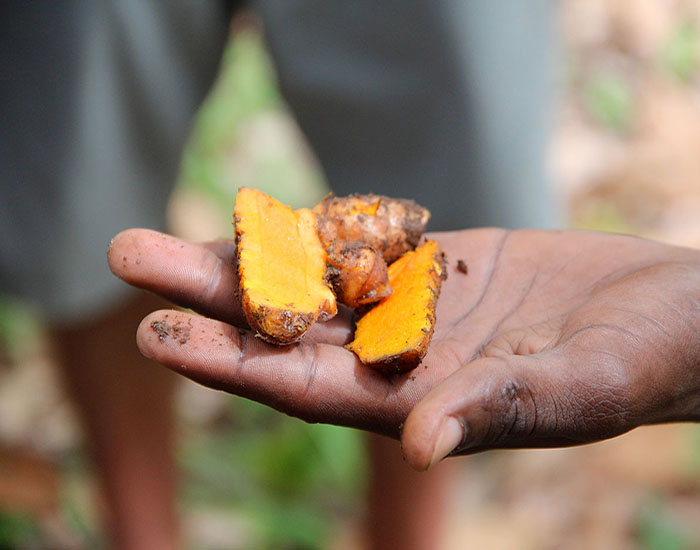
ARTICLE
A bright yellow natural dye derived from the turmeric plant (Curcuma longa) native to South and Southeast Asia, turmeric roots are used for dyeing, painting, home remedies and cooking. The turmeric plant, known as haldi in most Indo-Aryan languages, may have arrived in South Asia during the early historic period, either through a land route from China or the sea route from Vietnam, then cultivated through selective cross-breeding with wild varieties such as Curcuma aromatica. While India has been the main producer and consumer of turmeric for centuries, the root is also used in the cuisine and traditional medicine of China, West Asia and sub-Saharan Africa. Firm roots are preferred while harvesting turmeric. Like all natural yellow dyes, turmeric is not durable and fades after several washes and prolonged exposure to light. Despite this, it was widely used as a dye due to its vibrancy and affordability. Cloth to be dyed is usually soaked in a solution of hot water, powdered turmeric root, baking soda and lime juice until it turns a strong shade of yellow. When dyeing calico cloth, pomegranate rind and alum are added to brighten the yellow colour and extend its life. Turmeric is also used on wool and silk, often combined with various mordants to produce different colours, such as tin mordant, potassium dichromate and ferrous sulphate to produce orange, olive green and brown, respectively. Dyed blue or red cloth is also overdyed with turmeric to obtain shades of green or orange. However, since turmeric is a fugitive dye, the yellow component of the colour eventually fades, leaving the cloth a light blue or pink. Today, turmeric continues to be used as a spice and a natural food colourant across the world, but its use as a textile dye has dwindled considerably due to the increased availability of synthetic alternatives.
Indian mask-making traditions are typically practised by specific non-dominant castes or Adivasi communities. They are worn as part of a costume in a range of traditional performances from martial arts like Chhau to narrative dance forms like Kathakali. In most dance or theatre forms, masks are used as a way of maintaining iconographical consistency regardless of the performer, while in others, such as Cham and Bhagavata Mela Natakam, the mask is also a way to channel a supernatural entity. In a few traditions, the mask is also considered a sacred object, such as the Bhuta mask or the Narasimha mask used in Prahlad Nataka performances.
Most Indian masks are made of perishable materials like paper pulp or wood, and as a result, surviving historical examples are rare and much more recent than the performances in which they are used. In some cases, such as Kathakali, the mask is actually a thick and vivid layer of make-up that effectively replaces the performer’s face. Exceptions to this perishability include bronze Bhuta masks, examples of which date back to the eighteenth century.
Mask-making, like many Adivasi and folk traditions, is typically inherited and is less frequently practised today due to insufficient commercial incentives.
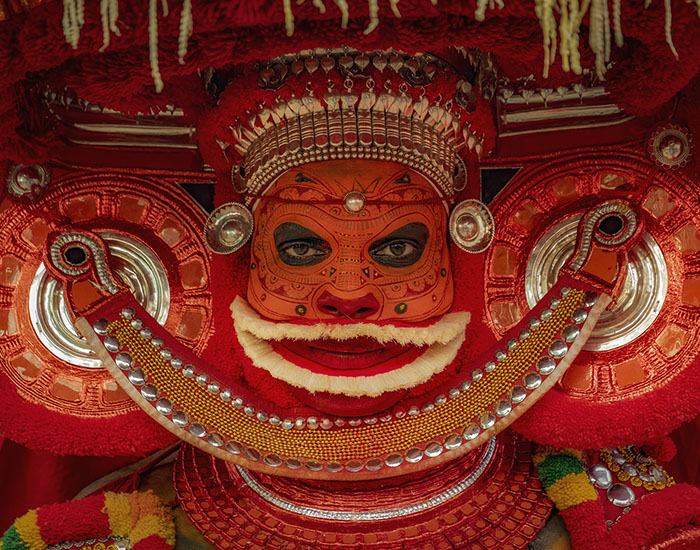
ARTICLE
Part of the costuming of Theyyam performers in Kerala, Theyyam masks combine face painting and masks to represent deities during performances. Once the performer’s face and body are painted in preparation for the performance, they wear the masks and headgear in accordance with the deity being invoked; for instance, the mask for Gulikan, a local form of the Hindu god Shiva, features a trident on the forehead and a monumental headdress. Another important deity, the goddess Edalavuratha Chamundi, is depicted using masks made of wood, painted showing a tongue sticking out of the mouth. The masks are usually made of areca palm wood, decorated with palm leaves and painted with bright colours, mainly orange, white, yellow and red. Black is used to highlight the eyes. Strong contrasts are used in the colour schemes to suggest the deities’ forceful personalities.
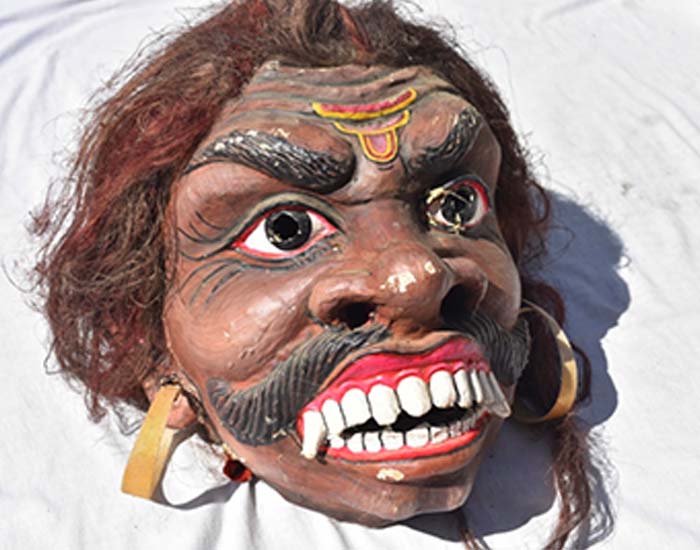
ARTICLE
Also known as mukha (face), Bhaona masks are primarily made of bamboo and wood and used in the Sattriya performative tradition of Bhaona in Assam. Representing different characters from the performative repertoire, the masks are intrinsic to the larger Sattriya tradition and considered essential for expressing rasa and bhava (emotion). According to the Sattriya tradition, the first khanikar (mask maker) was social and cultural reformer Sankardev, who laid down the process of making traditional bamboo masks. He is said to have incorporated masks in his debut play Cinhayatra in the mid fifteenth century. However, there is evidence of wooden masks and masks made from sholapith (Indian tree-cork, Aeschynomene aspera) in the region that predate the use of bamboo. Today, mask-makers in regions such as Majuli, Assam, prepare different kinds of masks from bamboo, cane wood, fabric and earthen materials such as potter’s clay, cow dung, jute, cotton fibre, paper and natural colours, depending on the intended performative tradition. To make the masks, a hexagonal base frame is first constructed using bamboo or sholapith, after which thin strips of cotton cloth coated with clay are plastered on the frame to form a base layer. This layer is then coated with a mixture of clay and cow dung, after which the mask is left to dry out in the sun. After the mask dries, traditionally, natural colours derived from flowers, leaves and tree bark are used to fill in details such as moustaches, eyes, eyebrows, lips and marks on the forehead. These have been replaced by the use of artificial colours. Ornamental details such as crowns, hair and jewellery are also added at this stage. Hengul (vermillion) is usually used for red, hiatal (arsenic) for yellow, dhawalmati (white clay) for white and smoke ash collected from kerosene lamps to make black. A variation on the bamboo mask is the xaasor mukha, which is made using a base frame (xaas) coated with multiple layers of cotton cloth dipped in a gum mixture of wheat, seeds from the kendu tree (Diospyros melanoxylon or Indian ebony) and hawthorn. Although it deviates from the traditional process of bamboo mask making, the xaasor mukha is lighter and more cost-effective, since the same frame can be used to make multiple masks. Bhaona masks may feature human and animalistic elements and can be divided into two types based on the character they represent — loukik (wordly) masks, with human and animal features, and aloukik (otherworldly) masks, which depict supernatural creatures and feature exaggerated form and design. Masks are also categorised by their different sizes. Mukh or mur mukha are masks that cover only the face of the performer and are generally used for characters such as Maricha, Subahu and Surpanakha. Contrarily, bor or su mukha masks cover the entire body and are generally used for characters with supernatural or majestic characteristics, such as Ravana, Kumbhakarna, Narasimha and Narakasura. The masks are made of bamboo and are typically around 8–10 feet tall. The masks for the face and body are prepared separately and assembled during the performance. Lutukai or Suti Su mukha, used primarily during the Rasa festival, are similar to bor mukha masks, except that the head of the mask is separate from the body, allowing for comparatively easier movement; characters such as Taraka, Trishira and Shankhasur are generally portrayed wearing these masks. Mask-making is an essential part of the Sattriya culture in Assam. However, the tradition has undergone a decline and are now infrequently included in performances. Today, bhaona masks are regularly made in the upper regions of Assam, in regions such as Jorhat, Majuli and Sivasagar.
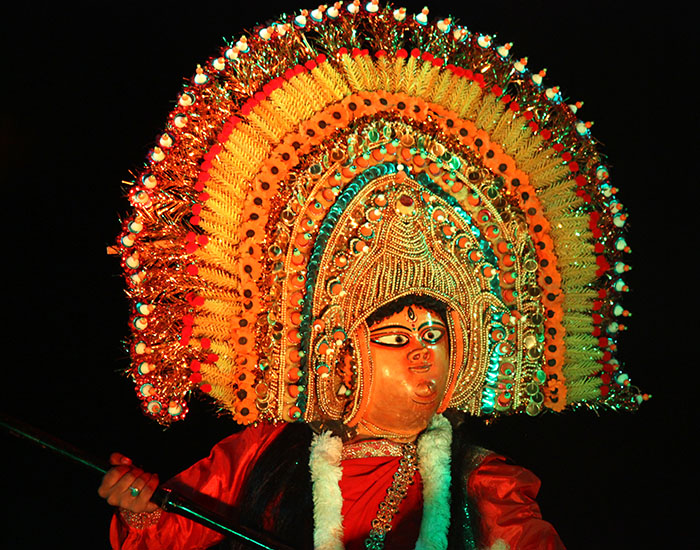
ARTICLE
Large, colourful masks of clay and wood, chhau masks are used for chhau performances in the states of West Bengal, Jharkhand and Odisha. There are three major styles of chhau: Mayurbhanj, Seraikela, and Purulia. Each has a differing approach to the use of facial covering. Mayurbhanj chhau used masks till as late as the nineteenth century, but now only uses paint, make-up and costumes, allowing its performers considerable freedom of movement. In contrast, masks are an essential feature of Purulia and Seraikela chhau. Seraikela chhau, in particular, includes subtle neck movements in its repertoire in order to animate the performers’ masked faces. Chhau masks can sometimes be very large and elaborately decorated, contributing to the arrangement of the scene and its impact on the audience. While Seraikela chhau is performed traditionally under the patronage of the indigenous royal family and the dancers are from the Kshatriya (warrior) caste, Mayurbhanj and Purulia chhau are performed by members of the Scheduled Castes. Seraikela and Purulia chhau masks are made with similar construction methods. Clay is layered onto a base of cane or wood to create a mould. When it dries, it is detached from the base and covered with papier mache, followed by another layer of clay. Cotton fabric strips are used to reinforce the structure. As it dries over the course of three days, jute and acrylic wool are used to add details such as facial hair. Additional decorations and paint are applied afterwards. Older masks may be polished to impart a sheen before a performance. Purulia chhau masks cover the entire face, reaching over the top of the head until the base of the skull. Halos of wire, decorated with colored beads and sequins to signify deities, demons, or forest animals, are added around the top. Characters depicted by these masks include the goddess Durga and the demon Mahishasura as well as figures from the Mahabharata and the Ramayana like Arjuna and Lakshmana, usually shown with pink faces and black moustaches.Rama is depicted with a green mask, while a blue mask is used for Krishna. A mask for the half-man, half-lion deity Narasimha usually has a mane and large, wild eyes; an elephant mask is used for Ganesha; Shiva’s mask features serpents and ropey, matted hair; his son Skanda, traditionally believed to be handsome, is given a pink visage. In comparison to Purulia chhau, Seraikela chau relies extensively on masks which subtly represent essential attributes of the character being portrayed. For example, Ratri (Night) is depicted with her eyes half-closed, while the Hamsa (Swan) wears a long beak. They are usually made from the dark clay found in and near the Kharkhai river, which flows through the region. Seraikela chhau masks are light but cover the whole face of the performer, with small slits for the eyes and nostrils which make it difficult to see or breathe properly. Chhau mask makers have adapted according to the changing demands of performance as well as new consumers such as art collectors. More recently, since the onset of the COVID-19 pandemic, they have also begun making safety masks for general use, basing their designs on chhau masks.
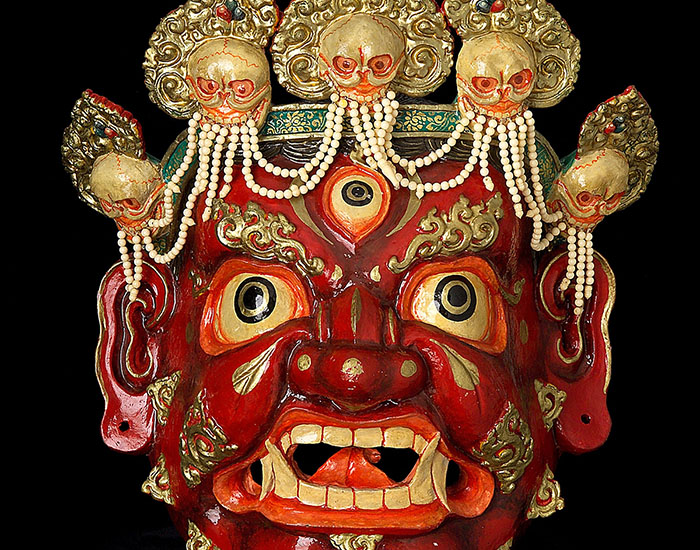
ARTICLE
Worn by practitioners of the cham dance in Bhutan, Nepal and India, cham masks are symbolic and ritualistic objects in Vajrayana Buddhism. These masks are believed to embody wrathful, protective deities and inspire fear and terror in the hearts of evil forces. These deities are also believed to remove obstacles in the path to enlightenment, and thus the masks are held to provide calm and tranquillity to the devotee and free them from the delusions of the material world. In the early twentieth century, European anthropologists termed these masks “devil masks” and used “devil dance” to refer to the cham performance. Both cham masks and the cham dance are associated with legends of the Tibetan guru Padmasambhava. Though there is some evidence of masks being used in ritual dances in Tibet from the seventh century CE, the masks used in cham today are believed to have been revealed to a guru in a dream by Padmasambhava in the thirteenth century CE. Some cham masks have been preserved in monasteries over generations and have become venerated in their own right, attracting pilgrims and worshippers to witness them being used in performances. Masks are also used for the non-ritualistic Yungdrung Shon Dance, which generally takes place as part of cham festivals today. Cham masks are made according to precise instructions from a variety of Buddhist scriptures and may have various regional variations. One manufacturing method involves preparing a clay mould and applying several layers of cloth to it using a mixture of glue and dry soil. They are then left to dry in the sunlight. When the glue has dried, the clay mould is removed and the surface of the mask is painted or decorated as required. Papier-mâché, metal and cotton strips may also be used to make the masks, especially in the case of animal masks, like those representing the Tibetan snow lion. Some masks may have marks around the mouth signifying leftover food or saliva, or the remnants of gorging on flesh, blood and intestines. Others, such as the shin yong (“protectors of the grave” in Tibetan) may consist of an elaborately decorated representation of a skull. The faces of wrathful deities such as Chogyel Yum, associated with Chamunda, may be surmounted by diadems featuring up to five human skulls. Each represents a negative affliction such as ignorance, jealousy, pride, attachment and anger, which are believed to be transformed by the dance into the positive virtues of wisdom, accomplishment, commonality, appreciation and understanding. Cham masks are usually very heavy and large, making it difficult to see through them or wear them for long periods of time. Due to their weight and sharp edges, dancers wear padded caps or folded towels covering the forehead or the sides of the face in order to prevent chafing and cuts. The masks are deeply associated with the philosophy of Vajrayana Buddhism. Tibetan scholars have suggested that they have layers of meaning: they may symbolise supernatural forces that are present both within the self and in the external world; the masks may refer to the illusory nature of the self; and their terrifying visages may be an allusion to the nature of the material world that masks the ultimate reality. The symbolism of these masks has also led the cham dance to be called the mystery play, the secret dance or the magic dance. Many traditional construction methods for cham masks are preserved only in oral histories today, owing to the destruction of texts during the Chinese invasion of Tibet in the twentieth century. In addition to South Asia, some historic cham masks are preserved in monasteries as far away as Mongolia.
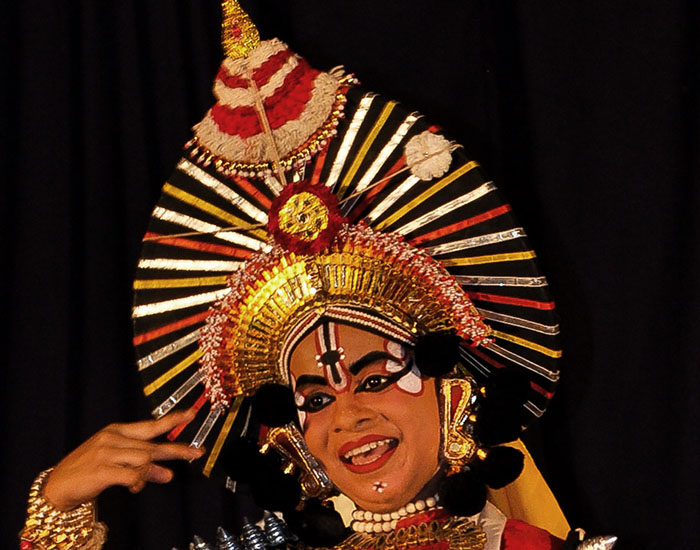
ARTICLE
Colourful masks used in open-air performances in the coastal parts of Karnataka and northern Kerala, bayalata masks generally cover the wearer’s entire face and can be used with makeup and elaborate headgear. They feature in all forms of open-air performances, including yakshagana. For the Badagatettu Bayalata performances, three masks are usually employed: the head of the ashvamedha (sacrificial) horse; the mask for Nandi, who is the vahana or mount of Shiva; and the face of a spirit. Characters for bayalata masks are derived from the Puranas and other Hindu mythological sources like the Mahabharata. Another mask that is commonly used is the Narasimha mask. Bayalata performances featuring these masks continue to be held across the southwest coast of India, and more generally across the state of Karnataka.
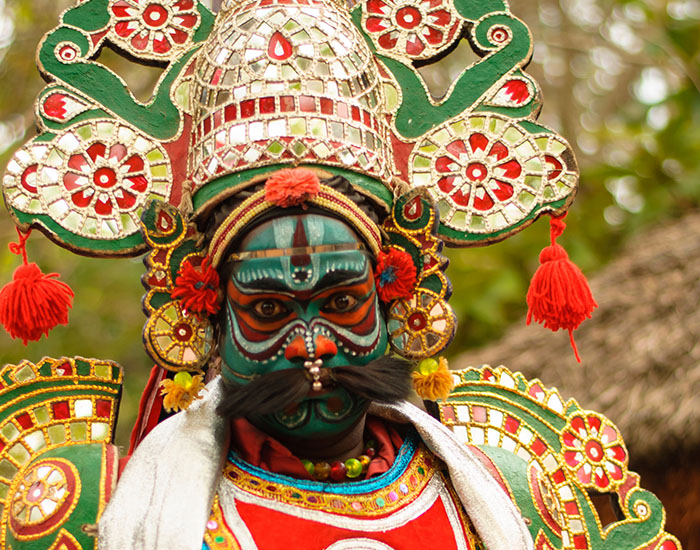
ARTICLE
Painted facial makeup and masks, therukoothu masks are used for therukoothu performances. The makeup for therukoothu performers is related to traditions of icon production, sacred mask making and face painting in the state. Each character's makeup has a basic colour upon which are drawn conventional motifs such as the kiruta (facial hair extending from the sideburns to the chin), which can be easily recognised by the audience. Actors wear partial face masks as well as the makeup, golden shoulder plates, bright skirts, headgear and crowns. Wooden ornaments are used, along with small mirrors for masks. Therukoothu costumes, colours and motifs signify forces of good and evil as well as characters’ virtues and flaws. Red face paint, for instance, is frequently used in the Mahabharata cycle. Green is associated with heroism, beneficence, morality, strength and power and is used for characters like Arjuna and Bhima. Villains’ faces are covered with black and white three-dimensional dots. Demonic characters such as Hirayam and Vallakaran usually have white fangs extending from their mouths. Various intermediate shades are also used, depicting subtle differences in personality between characters. Mal (a curved line extending from ear to ear) is used to accentuate the eyes. The makeup session generally takes the form of a ritual. An offering is made to a lighted lamp before the makeup begins. A figure of Ganesha is fashioned from turmeric powder and painted with the word Om. The make-up is then applied to the sound of music, using colouring agents such as vermillion and talcum powder. Therukoothu masks and makeup are believed to ritually charge the performance space and trigger sacred entrancement among the performers and audience members. They are still used in performances in northern Tamil Nadu today.
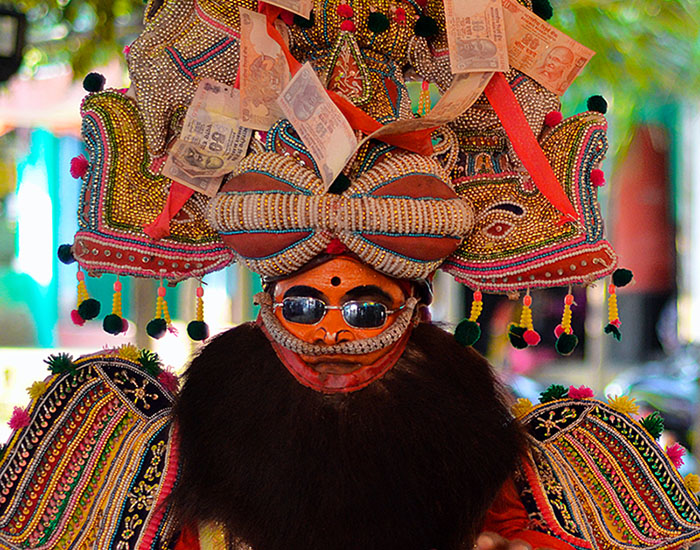
ARTICLE
Painted masks made of wood or papier mache, Prahlad Natak masks are used for Prahlad Natak performances in Odisha. The performative repertoire borrows from classical as well as folk sources. Though there are female roles in Prahlad Natak, performers tend to be exclusively male. Prahlad Natak performances, as the name suggests, depict the story of Narasimha, who rescues the devotee Prahlad from his father, the demon king Hiranyakashipu. These performances also include several minor characters and a gahaka or narrator figure. Ganesha appears at the beginning to bless the proceedings, played by an actor wearing a papier mache mask. In some performances, Hiranyakashipu wears no mask, but his face is painted bright red to suggest ferocity. His moustache is made of thick black thread twined with golden zari. Narasimha, however, is always depicted using a massive wooden mask, and the actor wears a big turban to which it is fitted. The mask is accompanied by bright makeup and tapered brass nails to simulate claws. The Narasimha mask is treated as a sacred object, and the wearer has to earn the privilege of donning it by performing a ritual to propitiate and invoke the spirit of the mask. This ritual includes water, flowers, coconut, sandalwood paste, incense, a lit lamp, and prescribed mudras. The worship is conducted off-stage prior to the performance, while the orchestra plays. While it is being conducted, all the performers gather around the mask and sing invocations to Vishnu. A similar ritual offering is performed throughout the year in the temples where the masks are kept. The oldest mask, believed to be as old as the Natak itself, is worshipped in one such temple at Sukunda near Brahmapur, Odisha. As of writing, Prahlad Natak is fading in popularity, with only a few dozen troupes still active in southern Odisha.
Two closely linked embroidery traditions historically practiced by the women of undivided Punjab since the late medieval period, both phulkari and bagh embroidery involve the arrangement of floral, geometric and sometimes narrative imagery on a red base fabric, also known as khaddar. Literally meaning “flower work,” phulkari is recognised by its neat, regular patterns that leave large portions of the khaddar visible. With the bagh embroidery — bagh means garden — the khaddar is almost completely covered, exposed only as thin lines in the design. Hence the name, which likens the embroidered garment to a field of flowers. Due to the intricate work involved, baghs are almost never made today.
The origins of the crafts are debated, with some scholars suggesting that it was introduced to India through Central Asia by the Jat community in the late medieval period, while others state that the craft is a variation of Persian embroidery designs.
Traditionally, odhinis and chaddars were embroidered and these were often given as gifts at major events in women’s lives, particularly marriage. The nineteenth and early twentieth centuries saw the beginning of the commercial application of the craft on other garments, such as coats, for women living in the cities. Following the Partition, phulkari and bagh embroidery went into a decline in India and Pakistan through the 1950s, but has since been partially revived and commercialised through efforts by government and corporate entities.
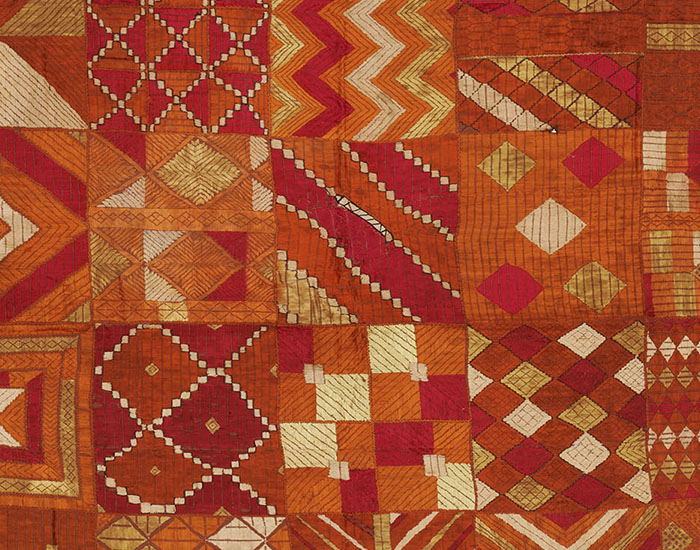
ARTICLE
A type of bagh embroidered on a red base cloth with rectangular cells, each containing a different geometric motif in threads of various colours, the bawan bagh has between forty-two and forty-eight cells placed in the main field of the base cloth — usually a chaddar — and the remainder being placed in each border at either end of the cloth. Its name derives from the Punjabi word bawan, meaning “fifty-two.” Due to the time and skill required for the craft, bawan bagh embroidery is rarely practiced today. However, examples of historic bawan baghs can be found in the Jill and Sheldon Bonovitz Collection at the Philadelphia Museum of Art.
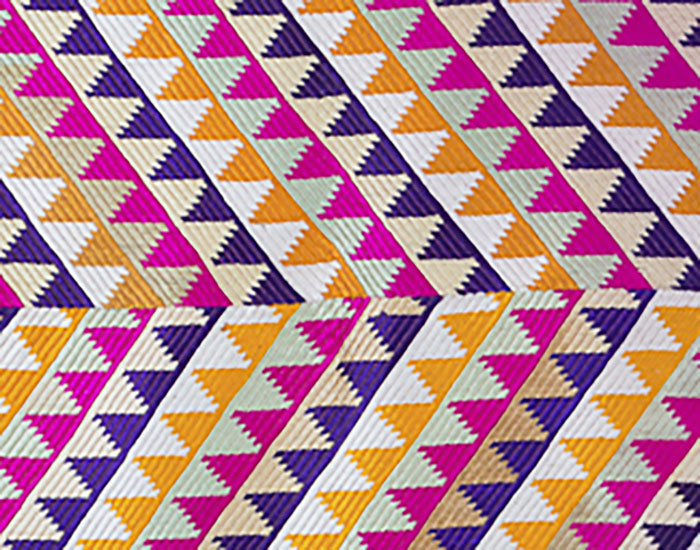
ARTICLE
A textile tradition practised in the Punjab region of India and Pakistan as well as in Haryana, bagh embroidery is ritually important and used to decorate textiles such as chaddars and odhnis, which are also referred to as baghs. The term derives from the Hindi bagh, meaning “garden,” owing to the thick layer of embroidery and the representation of monumental gardens on some baghs. Baghs are similar to phulkaris — both textiles use silk embroidery thread, the darning stitch, a similar colour palette and have the same historic centres of production. Like phulkaris, baghs are generally made to celebrate occasions such as births and weddings. However, bagh embroidery almost completely covers the base cloth, which is visible only as thin lines in the design. The base cloth is often chaunsa khaddar, a finer version of the red cotton base fabric used in phulkaris. There are several types of baghs, which are often named after key aspects of everyday life and culture in Punjab. Those used in wedding rituals include vari da bagh, gunghat bagh and sar pallu. Baghs are frequently named after their motifs: leheriya and darya baghs feature water motifs; the chandrama bagh, which uses moon motifs, is worn during Karva Chauth rituals; the tota bagh features parrot motifs; and the belan bagh depicts rolling pins — a key instrument of domestic life in north India. Since Punjab has historically been an agrarian region, some baghs use motifs of important vegetable crops, such as the karela (bitter gourd) , mirchi (chilli), gobi (cauliflower), dhaniya (coriander) and kakri (cucumber) baghs. The genda, chameli and surajmukhi baghs are named for the flowers that are used as motifs. Certain baghs, such as the Shalimar and Chamasia baghs, are named after the historic gardens they depict or the general composition of a Mughal garden, such as the char bagh. Possibly the most elaborate type is the bawan bagh, which features between forty-two and fifty-two rectangular cells decorated with geometric motifs. Pachranga and satranga baghs are named on the basis of the number of colours in the design. Bagh embroidery is time-consuming, taking several months to a year to complete. Today, they are not typically made by families, which was traditionally the mode of production; instead, they are procured from retail outlets or have been replaced by heirloom baghs for ceremonial use. Examples of historic baghs are held in the collections of the Philadelphia Museum of Art.
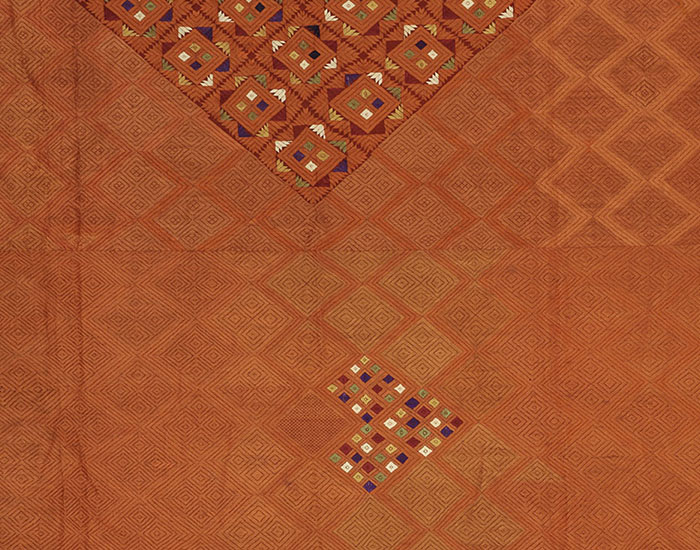
ARTICLE
A type of bagh characterised by a large, decorated triangle along its longer sides, ghunghat baghs are worn by brides as a ghunghat or veil during wedding ceremonies. The bagh is worn in such a way that a triangle falls over the bride’s face. A variation of the ghunghat bagh is the sar pallu, which has large, elaborately decorated borders on the short sides of the garment. The pattern on the triangles varies from piece to piece, although it is usually geometric. The rest of the ghunghat bagh is typically a single colour, with the border design matching the design on the triangle. It is unclear whether these baghs are produced today or whether ancestral pieces continue to be used in wedding ceremonies.

ARTICLE
A type of phulkari typically donated to temples and gurudwaras, darshan dwar phulkari has a red base fabric embroidered with threads of various colours, most often yellow. The name of the textile translates to “the gateway (dwar) for beholding the divine (darshan).” The embroidery is characterised by a set of columns running along the sides of the fabric, topped with arches pointing away from the centre. The space in the middle of the phulkari resembles a pathway and is populated with human and animal figures, giving it the appearance of a busy street. The borders are filled with geometric shapes, usually diamonds, stars and triangles. The use of dwar phulkaris in religious shrines is considered to be a recent phenomenon, primarily owing to the lack of historic phulkaris in the possession of temples and gurudwaras, as well as an absence of any rituals involving them. It is also believed that the colonnade motifs in this textile may have originally referenced colonial-era buildings in Lahore, which were popular recreational venues; this may also explain the animated people and animals depicted in the centre of the fabric. Examples of historic darshan dwar phulkaris can be found in the collections of the Philadelphia Museum of Art.
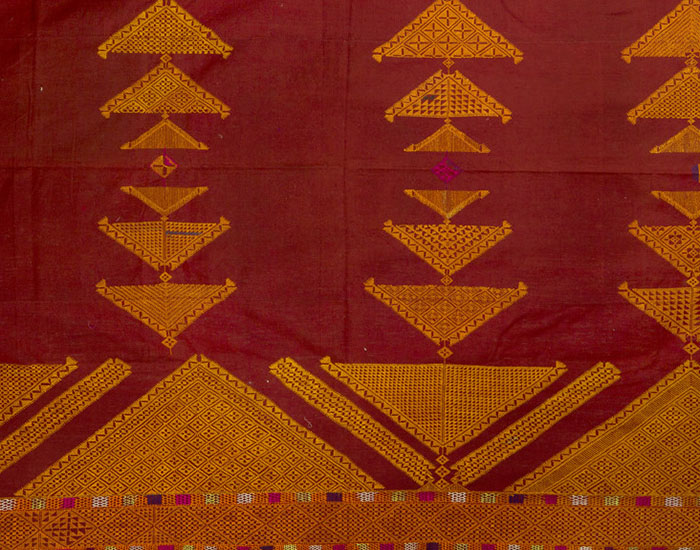
ARTICLE
A reversible phulkari that features prominently in wedding rituals, a chope is a large red chaddar (or wrap) embroidered with yellow and gold thread. The chope’s design is composed of geometric forms, mainly triangles and lattice formations, with the occasional inclusion of a peacock or cow motif. Thin lines in the pattern are embroidered in any colour other than yellow or red as a nazarbuti motif, believed to protect the bride from misfortune or malevolent stares. The embroidery is applied using a double running stitch, making the design visible on either side of the chope. The decoration is denser towards the longer sides of the chope than the middle, and the short sides lack borders. This results in a red stripe that runs lengthwise through the middle of the chaddar, narrow through the body and widening at each end, meant to signify endless fortune for the bride wearing the chope. The chope is of great ritual importance to the bride’s family. Her maternal grandmother traditionally begins embroidering the chope on the day she is born. The phulkari is then gifted to the bride by her maternal uncle during the chura charana or bangle-wearing ceremony, a wedding ritual in which the women from the bride’s family sit together and sing suhag or matrimonial songs. The chope is draped around the bride by members of her family after the vatna or ceremonial bath that she takes before the wedding. Chopes continue to be made and used in traditional Punjabi weddings. Examples of historic chopes are held in the collection of the Philadelphia Museum of Art.
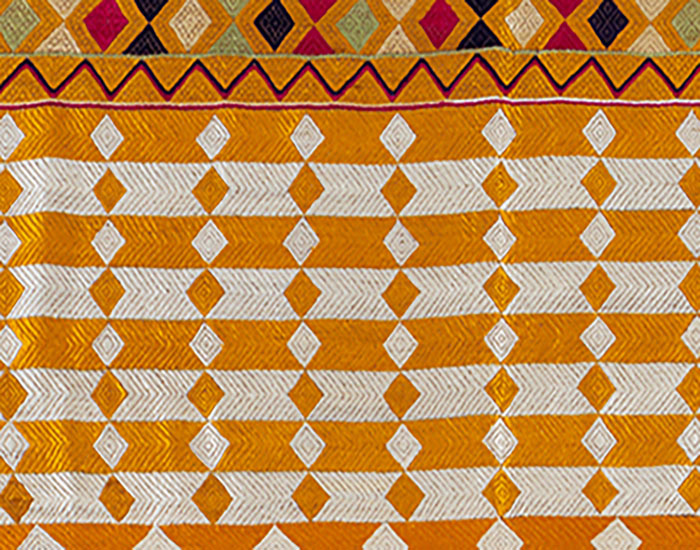
ARTICLE
An embroidery tradition historically practiced and inherited by the women of Punjab in India and Pakistan. Literally meaning “flower work,” phulkari is a counting-thread embroidery recognised by its neat, regular patterns of geometric and natural motifs. Embroidery is traditionally considered an integral skill for women in the region, and phulkari garments are closely associated with major events in their lives, particularly marriage. In the medieval and colonial periods, girls would initially learn to embroider small garments like odhinis for themselves, and as they grew older, produce chaddars to be handed down to younger generations of women in their families. Phulkari shawls are often gifted on wedding days, especially by maternal relatives. The origin of the craft is debated, with some scholars suggesting that it was introduced to India from Central Asia by the Jat community in the late medieval period, while others state that the craft was born of influences from Persian gulkari embroidery designs. Phulkari embroidery and the traditions surrounding it have been mentioned in the Sikh holy book, the Guru Granth Sahib, and the eighteenth century Punjabi epic Heer Ranjha. The coarse, handwoven cloth used for phulkari embroidery is called khaddar (or khadi), and is prepared by stitching together strips of heavy cotton fabric that are less than two feet wide. In most cases, the khaddar was traditionally dyed red using plant-based dyes obtained from palash flowers, madder or the bark of acacia trees. Earthy colours like green, brown and yellow are less frequently used, and blue relatively rarely. Phulkari embroidery is done using a running stitch with brightly coloured untwisted silk thread historically imported from Kashmir and Bengal. The floral imagery used in phulkari includes marigolds, jasmines, lotuses and Tree of Life motifs. Despite its name, phulkari embroidery usually depicts animals and geometric forms as well as flowers. Modern motifs such as trains, trucks and cars have also found their way into phulkari patterns. The counted thread method lends phulkari designs a floral symmetry. In some cases, the embroiderer deliberately breaks the geometrical pattern in a small area, exposing the base fabric below. These are known as nazarbuti motifs and are meant to ward off misfortune for the wearer. The shawls and wraps traditionally made with this craft are also called phulkaris, as the embroidery is their main feature. There are various types of phulkari, distinguished by their size, style and ceremonial value. Thechhope, made with a reversible, double darning stitch, is the largest and has the most ritual importance in Punjabi culture, as it is embroidered by a bride’s grandmother, presented as a wedding gift and worn during the marriage ceremony. Others include the sainchi phulkari from the Bathinda and Faridkot districts; the blue nilak phulkari embroidered in red and yellow; the thirma phulkari made on a white base; the shishedar phulkari embellished with glass pieces; the til patra phulkari made with patterns of sesame seed motifs; and suber phulkari, which is embroidered only in the corners. Bagh embroidery, which uses an all-over design where the base is completely obscured, is sometimes regarded as a type of phulkari, but this and its subtypes are distinct textiles. Until the colonial period in South Asia, phulkaris were not produced for commercial purposes and were circulated in what is now Pakistani Punjab, mainly in the Peshawar, Sialkot, Hazara, Rawalpindi and Jhelum districts. From the nineteenth century onwards, embroidered shawls began to be given to British officers as tokens of goodwill. This period also saw the beginning of the commercial application of the craft on other garments, such as coats for women customers living in cities. Following the Partition and the subsequent political turmoil in Punjab, phulkari embroidery went into a decline in India and Pakistan through the 1950s. Concerted efforts by both governments, in the form of classes and mechanisation, helped reduce the labour of preparing the khaddar and obtaining the silk embroidery thread. Artisans were given financial support from banks and other government organisations like the National Bank for Agriculture and Rural Development (NABARD), Khadi and Village Industries Commission (KIVC), the Ministry of Textiles and the Small Industries Development Bank of India (SIDBI). From the 1980 onwards, fashion designers and NGOs like the Nabha Foundation have also played a major role in supporting local artisans by expanding the market presence of phulkari embroidery and design. Today phulkari is produced mainly in Gurdaspur and Patiala, India, and is applied to several types of Indian garments, particularly dupattas, kurtas, blouses and sarees, using various cotton fabrics as a base.
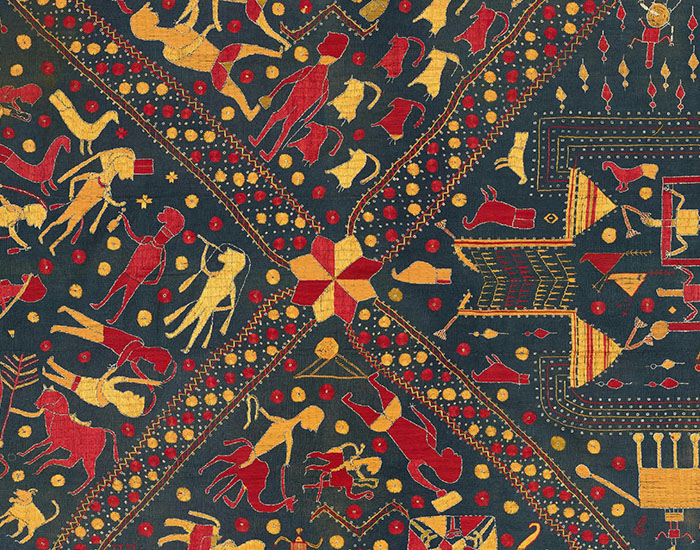
ARTICLE
A type of phulkari made on a neela khaddar, or base cloth, dyed with indigo, the nilak phulkari is characterised by red and yellow embroidery. A small amount of iron is sometimes added to the indigo to generate a darker shade of blue. Unlike chopes and suber phulkaris, nilak phulkaris are never used in wedding rituals. The blue and black shades of nilak phulkaris have been variously associated with Krishna, who is depicted with blue skin, or the neelambari musical raga, which represents longing. Young girls in Punjab sometimes begin making simple nilak phulkaris before they make more elaborate or ritually significant embroidery. Examples of historic nilak phulkaris can be found in the collection of the Philadelphia Museum of Art.
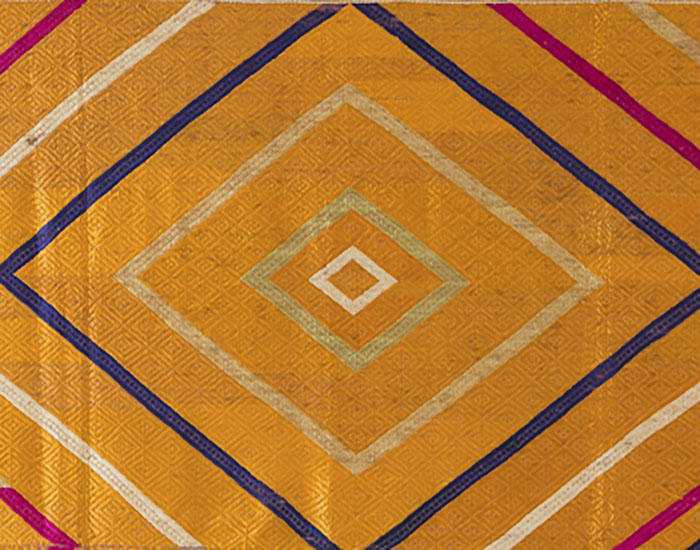
ARTICLE
Featuring rich bagh embroidery, vari da bagh is a type of chaddar or shawl used in Punjabi wedding ceremonies, its name translating literally to ‘garden of the wedding trousseau’. This bagh from north India has a main field embroidered with gold-coloured silk thread, while the borders are made with a variety of colours. Thin gaps are left between the shapes so that the red base fabric, either chaunsa khaddar or halwan, shows through as an outline. The design is composed entirely of geometric forms, the central field typically embroidered with repeating concentric diamond shapes, with a complementary pattern of diamonds and zigzag lines along the borders. While vari da bagh designs often feature a repeating block of two concentric diamonds, more elaborate ones feature three concentric diamonds, with the innermost diamond further subdivided into four parts. In some cases, the diamond shapes are made of concentric triangles. As with some other types of phulkaris and baghs such as the shishedar phulkari and the chope, the patterns on a vari da bagh may be broken by a nazarbuti in the form of a small row of black threads embroidered in a random position in one of the diamond shapes. This motif, as well as a black dot commonly introduced in a corner of the fabric, is intended to ward off the evil eye or bad luck for the wearer. In traditional Punjab, the grandmother of a boy begins to prepare a vari da bagh shortly after his birth. The embroidery is started on an astrologically auspicious date, accompanied by festivities. Years later, the completed bagh is draped around his bride just after their wedding ceremony. The bride also wears it during the vidaai or doli, when she ceremonially leaves her parents’ home. Married Hindu Punjabi women traditionally wear a vari da bagh chaddar, either their own or one passed down as an heirloom, when praying for their husbands’ well-being during *Karva Chauth rituals. Vari da baghs usually take years to embroider. While new pieces are rarely made today, some are sold through retail outlets. Examples of historic vari da baghs can be found in the Jill and Sheldon Bonovitz Collection at the Philadelphia Museum of Art.

ARTICLE
A type of phulkari with an unbleached white or cream base fabric as opposed to the red khaddar typically used in other phulkaris, thirma phulkaris are embroidered with floral or geometric motifs. Phulkaris with all-over embroidery can also be considered baghs. The design is mostly rendered with silk thread dyed in shades of red or magenta, as well as blue, yellow or green. These phulkaris used to be presented as dowry in the north-western regions of Undivided Punjab; today, this practice, along with the production of the textile, has been discontinued in these regions, spread across present-day states in India and Pakistan. Examples of thirma phulkaris are held in the collections of the National Museum, New Delhi, and the Philadelphia Museum of Art.
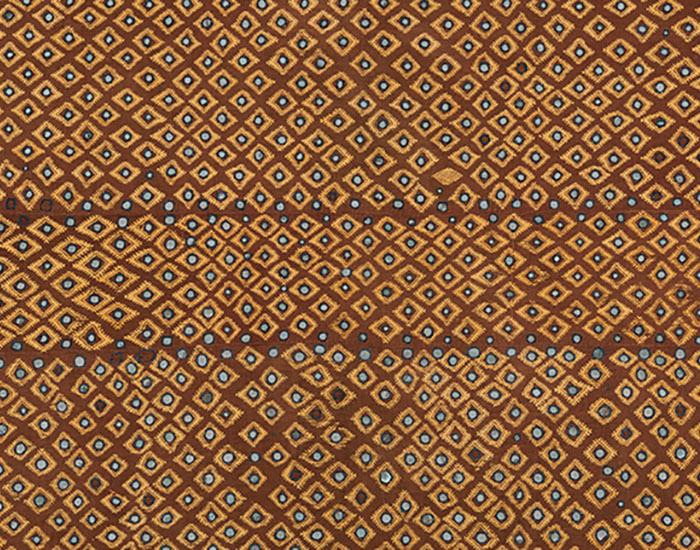
ARTICLE
A type of phulkari embellished with sheeshe (small, dull pieces of glass) that are stitched in patterns across the fabric, the shishedar phulkari acts as a nazarbuti for the wearer. While nazarbutis in other phulkaris are typically presented as interruptions in the embroidery pattern, the glass pieces in shishedar phulkaris are a way of incorporating the motif into the overall design. Shishedar phulkari shawls and odhinis are typically embroidered with geometric patterns in white or yellow thread against a dark red or brown base. Like other phulkaris, the shishedar type originated in Punjab, before the Partition. Today, it is most commonly made and worn in Haryana, particularly in Gurugram, Rohtak, Hisar and neighbouring New Delhi. Examples of older shishedar phulkaris can be found in several private and museum collections, most notably the Jill and Sheldon Bonovitz Collection at the Philadelphia Museum of Art.
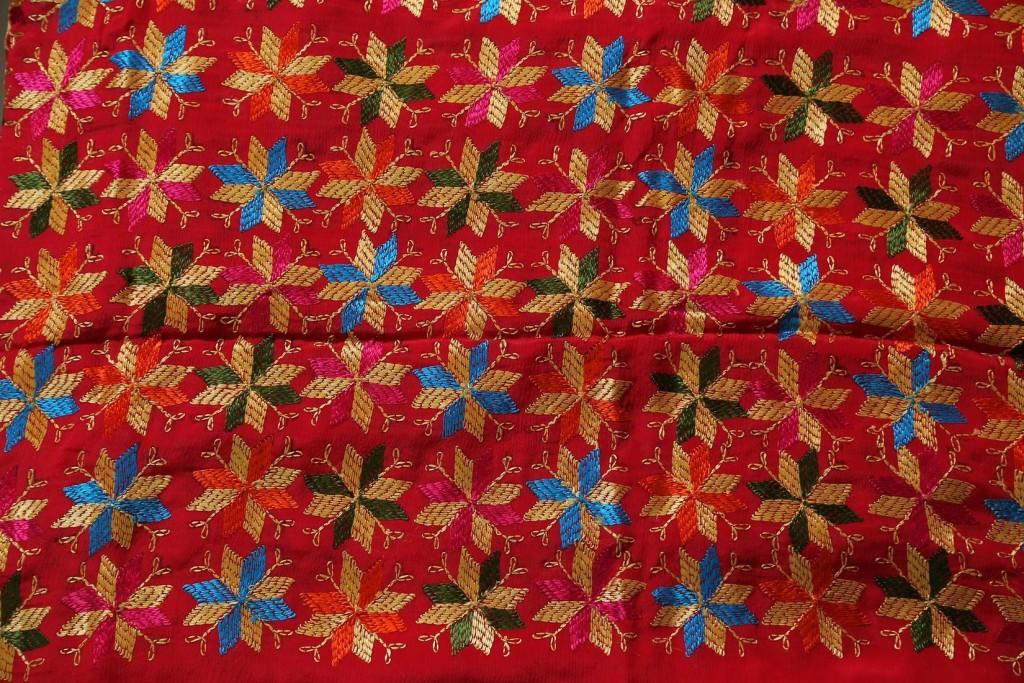
ARTICLE
A type of phulkari worn by Punjabi brides during their wedding ceremonies, the suber phulkari is an embroidered odhani that is used as a veil by a Hindu or Sikh bride as she takes the ritual pheras, or circumambulations, with the groom. Along with other phulkaris, such as the chope, the suber is a key garment in Punjabi weddings and is traditionally embroidered by the bride’s maternal grandmother. Suber phulkaris are embroidered with yellow thread on a red base cloth, which signifies fertility. Their distinguishing feature is the presence of five eight-petalled lotus motifs — one in each corner and one in the centre. Suber phulkaris continue to be produced by families in Punjab today.
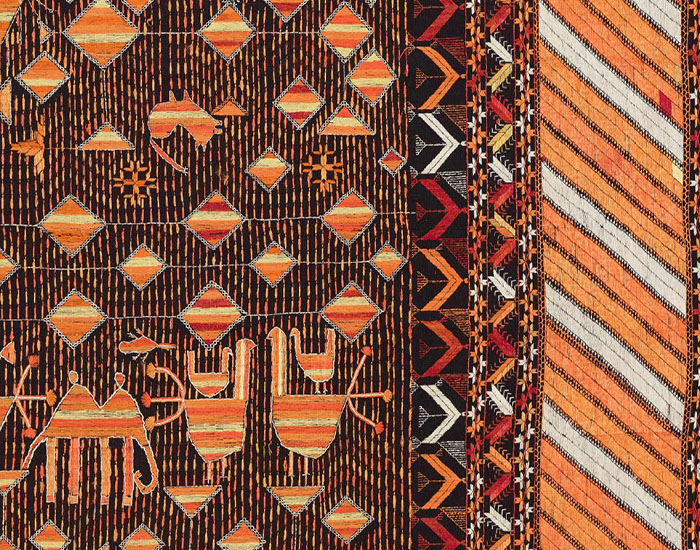
ARTICLE
A type of phulkari that depicts human and animal forms, often in a narrative format, the sainchi phulkari derives its name from the Punjabi word sainchi, meaning “authentic,” as the embroidered stories are either real events or didactic folk tales, and the imagery is more naturalistic than that of other phulkaris. The images in sainchi phulkaris are typical of life in rural Punjab: the embroidery is often a reflection of the artisans’ world. Motifs such as cattle, birds, crops and household items such as combs, mirrors and cooking utensils are frequently used. Human figures are decorated with jewellery embroidered in gold thread — silver is avoided. Narrative scenes depict agricultural activity, wrestling, games and dances. Modern imagery like trains and scenes from films can also be found, but are relatively uncommon. The more symmetrically composed sainchi phulkaris have a lotus motif in the centre and, less often, in each corner. The significance of the lotus is debated: some scholars see it as a generally auspicious symbol, while others suggest that it represents Sanjhi devi, a Hindu mother goddess worshipped in north India and honoured by prospective brides. While the embroidery itself is always done in shades of red and yellow thread, the base colour of the fabric varies between deep red, brown and blue. The borders are usually bands of geometric patterns. In the case of rectangular wraps, the borders on the shorter sides are made wider. Examples of sainchi phulkaris can be found in several private and museum collections today, most notably the Jill and Sheldon Bonovitz Collection at the Philadelphia Museum of Art.
Mudras are a set of hand gestures and finger positions that serve as symbols in Buddhist art, representing the Buddha’s various roles and states of mind. Mudras were first seen in statues from Gandhara in the first century, and appear to have been codified by the third century.
The fingers of the hand are thought to represent five levels of consciousness needed to attain buddhahood, therefore various gestural configurations are seen as syntheses of these factors. Mudras also represent the dominant themes in particular episodes of the Buddha’s life, making the gestures useful as narrative and pedagogical devices for viewers familiar with the symbolism. They are typically shown being performed by figures of religious authority such as the Buddha and bodhisattvas.
Of the large number of gestures that had subsequently evolved, the five primary mudras are the abhaya mudra (the most common), the dharmachakra mudra, the bhumisparsha mudra, the varada mudra and the dhyana mudra.
Mudras are also found in Hindu and Jain iconography, albeit to a lesser extent and only after being established in Buddhism. Classical dance forms, particularly those in India that have emerged in association with religion, also feature a repertoire of mudras.
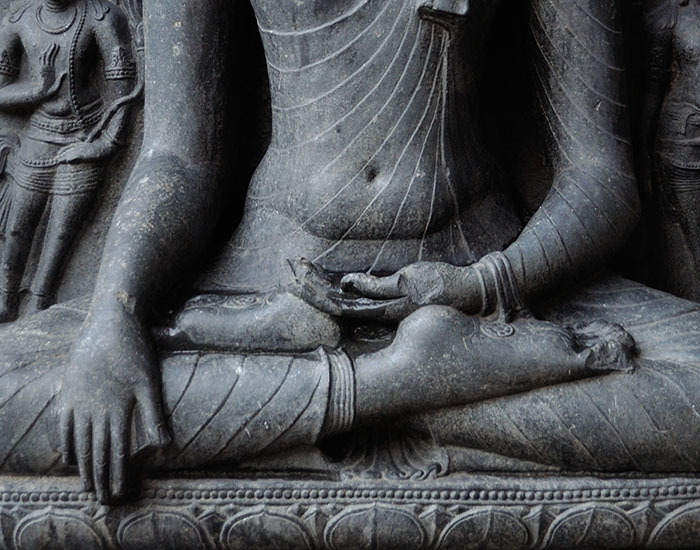
ARTICLE
A symbolic gesture in Buddhist iconography and practice – and one of five common mudras in Buddhist art – the bhumisparsha mudra symbolises the moment of inception of the Buddha, when the prince Siddhartha attained enlightenment under the pipal tree. Literally translated to “earth touching mudra,” it is also often referred to as the “earth witness” and is usually associated with the Dhyani-Buddha Akshobhya. The figure depicting the mudra is always shown in the seated position, with the right hand reaching over the knee so that all five fingers extend downwards to touch the earth. Representing unshakability, the bhumisparsha mudra is symbolic of the triumph of the spirit over matter and its liberation from worldly trappings. The gesture is believed to be an invocation of the earth goddess, who witnessed the Buddha’s ascendance to the state of enlightenment. When this gesture of the right hand is combined with the placement of the upturned left hand on the lap, in the dhyana mudra, is thought to signify the union of skillful means, or upaya, and wisdom, or prajna. The mudra is also thought to proclaim the defeat of temptation and evil intention, personified by the demon king Mara, and challenge his supremacy. The defeat of Mara is an important episode in Buddhist art canon and is a popular narrative. According to the story, Mara tried to frighten and distract Siddhartha with armies of demons and the seductions of his daughters. Claiming the throne of enlightenment for himself, Mara produced his army as witnesses to this claim. In response, Siddhartha reached out and touched the ground in a gesture that declared the earth as his witness. The moral triumph over evil is also therefore built into the symbolism of the mudra. Some traditions hold that the bhumisparsha mudra was used by Akshobhya to transform the delusion of anger into the mirror of wisdom. This signification is borne out in Buddhist teachings, in which a mastery over one’s senses and emotions is often emphasised as a means to achieve true awakening. The bhumisparsha mudra is an important mudra, as it refers to the very moment of achievement of buddhahood.
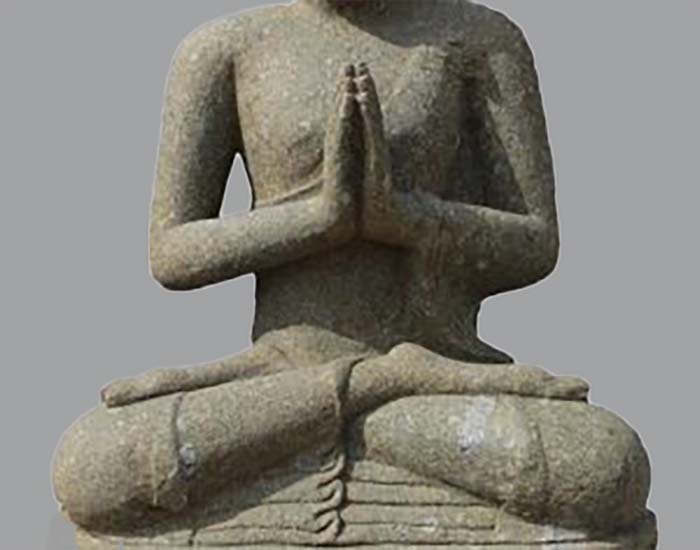
ARTICLE
One of the stylised hand gestures, or mudras, commonly found in Buddhist and Hindu iconography, the anjali mudra denotes respect and devotion. It is made by placing the palms together in front of the chest, with the fingers aligned vertically and, in some cases, the thumbs pointed backwards. Within Buddhism, the anjali mudra is particularly associated with the bodhisattva Avalokiteshvara. In his four-armed, eight-armed and thousand-armed forms, Avalokiteshvara is often depicted with his palms slightly opened and forming a cup shape during the anjali mudra. In some cases, the anjali mudra may represent humility and surrender, especially when featured in Hindu narratives. Within Buddhist art, however, the anjali mudra depicts an act of devotion and great respect. It is, therefore, shown being performed by figures such as bodhisattvas and kings when they face the Buddha, but rarely by the Buddha himself. Furthermore, while the Anjali mudra is visually akin to the namaste or namaskar gesture, there is a significant difference in the context of each gesture. The namaste is performed as a greeting in everyday life, conveying degrees of respect, and – unlike the anjali mudra – it does not always signify reverence or devotion. While the two terms are often treated as interchangeable, in the case of Buddhist art, anjali mudra is the more appropriate descriptor. Representations of the anjali mudra have been largely consistent in sculpture and painting in the Indian subcontinent since at least the first century BCE. One variation, which is seen in some relief sculptures, features the wrists twisted in such a way that the back of the right palm faces the viewer. The significance of this variation remains unclear. In Vajrayana and other eastern forms of Buddhism, Shadakshari Lokeshvara (or the four-armed Avalokiteshvara) is believed to hold a gem — representing love and enlightenment — in the slight space between his palms during the anjali mudra. The gem is only visible to Shadakshari Lokeshvara when he performs it; the mudra’s concealment of the gem is believed to represent the deeply personal nature of enlightenment, and its invisibility to those who only perceive the world in material terms.
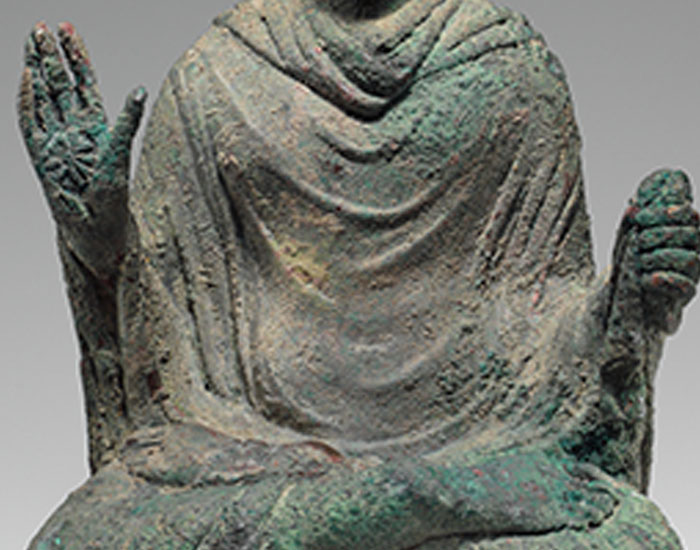
ARTICLE
One of the five commonly depicted mudras in Buddhism, the abhaya mudra is associated with the fifth Dhyani-Buddha Amoghasiddhi. The gesture, whose name translates to ‘fearless’ or ‘freedom from fear’ in Sanskrit, symbolises peace and friendship, and denotes acts of pacification, reassurance or protection. It is performed using either the right hand or both hands, with the fingers outstretched and the palms slightly cupped and facing the viewer. When it is performed using only the right hand, the left hand usually hangs loosely by the side of the body or assumes the varada mudra. This mudra is one of the most widely used symbolic and ritual gestures in Hinduism, Jainism, Sikhism and Buddhism. Across Southeast Asia, deities, saints and gurus or great teachers are depicted performing the benevolent abhaya mudra, making it a recognisable gesture and an indicator of divine associations. It appears most significantly in Buddhist art, lending particular symbolic meaning to its context in murals, sculpture, thangkas and popular prints. Section 1 The abhaya mudra made with the left hand, common in Theravada Buddhism, is thought to denote a warning or a command to halt. This interpretation is based on a popular Buddhist story in which the Buddha uses the gesture to stop the advances of a rampaging elephant released by a spiteful Devdutta — his nephew and disciple. In another incident, the Buddha performs the mudra to resolve a water dispute within a family. The mudra has been represented slightly differently across historical periods. In Gandharan art, for instance, the hand forming the gesture is held up at the shoulder level, but later, from the fifth century CE onwards, the hand is represented progressively lower, finally reaching hip level. Though primarily seen in representations of the standing Amoghasiddhi, it is also associated with the walking Buddha in the Theravada sects of Thailand and Laos. Lorem ipsum dolor sit amet, consectetur adipiscing elit, sed do eiusmod tempor incididunt ut labore et dolore magna aliqua. Ut enim ad minim veniam, quis nostrud exercitation ullamco laboris nisi ut aliquip ex ea commodo consequat. Section 2 This mudra is one of the most widely used symbolic and ritual gestures in Hinduism, Jainism, Sikhism and Buddhism. Across Southeast Asia, deities, saints and gurus or great teachers are depicted performing the benevolent abhaya mudra, making it a recognisable gesture and an indicator of divine associations. It appears most significantly in Buddhist art, lending particular symbolic meaning to its context in murals, sculpture, thangkas and popular prints. Neque porro quisquam est qui dolorem ipsum quia dolor sit amet, consectetur, adipisci velit Lorem ipsum dolor sit amet, consectetur adipiscing elit, sed do eiusmod tempor incididunt ut labore et dolore magna aliqua. Ut enim ad minim veniam, quis nostrud exercitation ullamco laboris nisi ut aliquip ex ea commodo consequat.
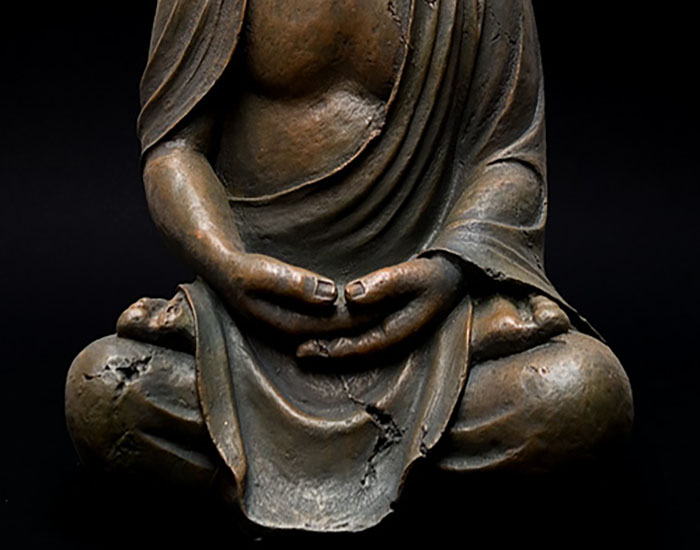
ARTICLE
Referring to the prince Siddhartha meditating under the pipal tree before he achieved enlightenment, the dhyana mudra is one of the five common mudras in Buddhist art. Dhyana, meaning “meditation” in Sanskrit, denotes a state of concentration and is most commonly associated with the fourth Dhyani-Buddha Amitabha. Also known as yoga mudra, it is thought to have developed as an iconographic element in Gandhara, although the gesture was prevalent in yogic practices much earlier. The dhyana mudra is performed in the seated padmasana position and is usually depicted using both hands, with the hands held at the level of the stomach and resting on the thigh or lap; the right hand, with all fingers fully extended is placed palm-up over the similarly placed left hand. The orientation of the thumbs differ in different traditions. In India, the thumbs are parallel to the other fingers and each other, while in the Wei Bhuddist tradition of China, they are angled outwards slightly to form a triangle, which symbolises the triratna, or the Three Jewels of Buddhism. The overlapping arrangement is meant to suggest that method or means (denoted by the right hand) can only arise out of the wisdom of meditation (denoted by the left hand). Some traditions also interpret the hand placed on top as signifying realisation or enlightenment and the hand underneath as the world of appearances, suggesting that meditation is a means to achieve the former by transcending over the latter. In certain instances, the mudra is made using the left hand, which is placed on the lap, with the palm facing upward and represents the principle of wisdom or meditative void. Occasionally ritualistic objects such as a text or a bowl of alms may be placed on the upturned hand — for instance, in certain representations of Bhaisajyaguru, or the “Medicine Buddha,” who has a medicine bowl in his hands. Popular in Theravada Buddhism, it is also depicted and practiced in a variant form known as samadhi mudra, in which the index fingers and thumb of the overlapping hands are raised to meet each other.
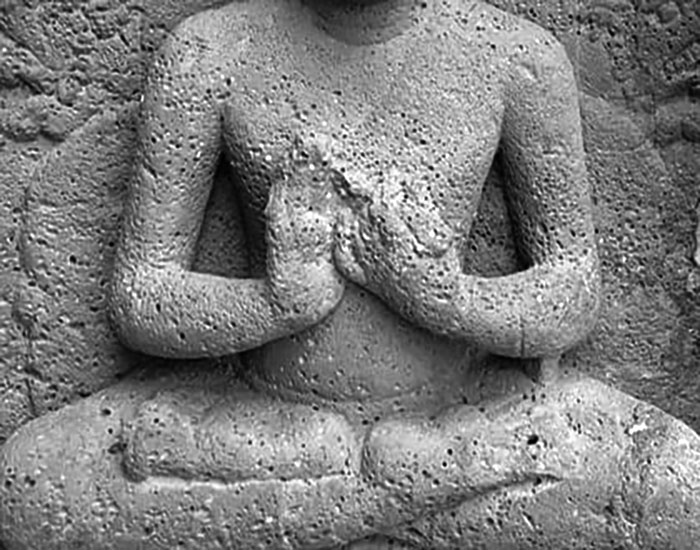
ARTICLE
The most common of the five main mudras in Buddhist art, the dharmachakra mudra is used across various sects and is associated with the first Dhyani-Buddha, Vairochana, who is one of the five aspects of Buddha according to the Tibetan concept of the five-Buddha families. The mudra gets its name from its association with the eponymous dharma chakra or “wheel of law,” and is a reference to the Buddha’s first sermon at Sarnath. It is formed by arranging the fingers and hands in a particular way in order to evoke particular spiritual states as well as values that the Buddha taught. Both the hands are held at the chest level, with the thumbs of each hand touching the respective index fingers to form a wheel-like shape. The tips of these two wheels in turn touch each other in such a way that the palm of the left hand faces inwards, while that of the right hand, held slightly higher, faces outwards. When displayed by Vairochana, this mudra is meant to convey the dispelling of ignorance with the wisdom of reality, represented by the action of setting the dharmachakra into motion through the act of teaching. According to some interpretations, the three extended fingers of the right hand are believed to represent the three vessels, or yanas, of the Mahayana Buddhism tradition, while those of the left hand are thought to denote the capacities for following these yanas. The symbolism is further extended to the open palms, of which the right suggests the method of conveying teachings and the left suggests the gaining of wisdom through the internalisation of these teachings. When the left hand is shown holding a corner of the robe, as in early iconic representations, it symbolises renunciation. A variant and possible derivative of the dharmachakra mudra is the vitarka mudra, also a ‘teaching’ mudra. In forming this gesture, the right hand is held at the chest level, palm turned outwards, and fingers upwards with the thumb touching the index finger (a representation of the wheel of law), while the left hand lies on the lap with the palm upturned. In some versions, the left hand is also held at the hip level with fingers pointing downwards, palm outwards and the thumb and index finger forming the symbolic dharmachakra.
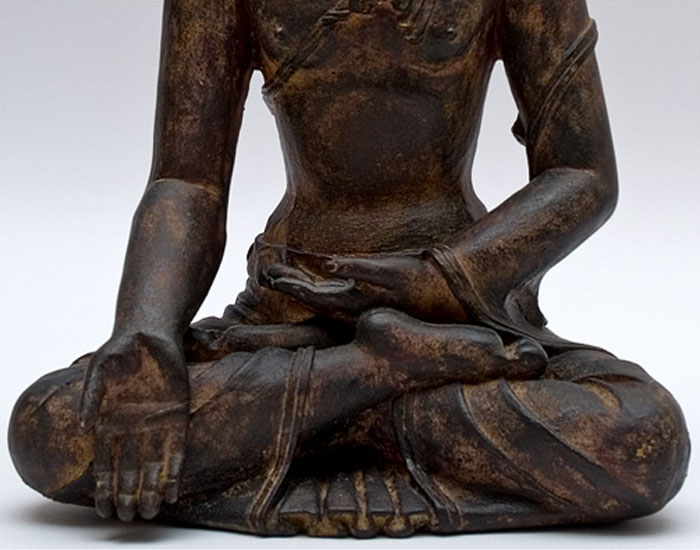
ARTICLE
One of the five common mudras in Buddhist art, the varada mudra is associated with the third Dhyani-Buddha Ratnasambhava and is seen extensively in statues of the Buddha across Southeast Asia. It is depicted or performed in both the sitting and standing positions and is commonly known as the “boon-granting” mudra, or dana mudra. In India, this mudra makes its earliest appearance in depictions of Avalokitesvara during the fourth and fifth centuries. Although the varada mudra is popularly thought to denote generosity or the fulfilling of boons or vows, it is also linked to the aspect of salvation and deliverance due to its frequent depiction in divine personages whose purpose is the liberation of humankind from greed, anger and delusion. The mudra is almost always depicted using the left hand, with the palm and all five fingers angled downward and facing the viewer. When displayed in the standing position, the left arm is extended downwards and slightly away from the body, and bent at the elbow, with the mudra performed at waist-height. In the seated position, the gesture is usually depicted at the level of the chest. In some interpretations, the extended fingers also have symbolic value, connoting the five perfections of paramitas of generosity, morality, patience, perseverance and meditative focus. When rendered as a two-handed gesture, the accompanying mudra performed with the right hand is typically the abhaya mudra. As a composite, this gesture is thought to imply the conceptual union of the female and male aspects of wisdom and agency respectively.
Folk painting traditions in India are distinct from murals and illustrated manuscripts because they are intended for a mass audience and are often moved from place to place by performers who use these paintings as narrative aids.
In many such painting traditions including Phad, Cheriyal and Manjusha, the painting and performance of the narrator is a joint effort and is undertaken by artisans from non-dominant caste communities. The content of the paintings varies from tradition to tradition but typically has a strong regional character, whether it is entirely devoted to the deified folk heroes of Phad paintings, or the regional versions of the Puranas illustrated in Cheriyal painting. In the case of traditions like Patua, illustrations are tailored to the myths and stories of the communities that make up each town or village that the performers visit.
At times, but not always, the performances are attended by audiences that belong to Adivasi and non-dominant caste groups. Such arrangements are a major component in regional networks among marginalised groups, in addition to barter and trade textiles, produce and handicraft items.
In painting traditions like Patachitra and Phad, as well as related practices like mask-making, the objects themselves have sacred value and are treated as portable shrines.
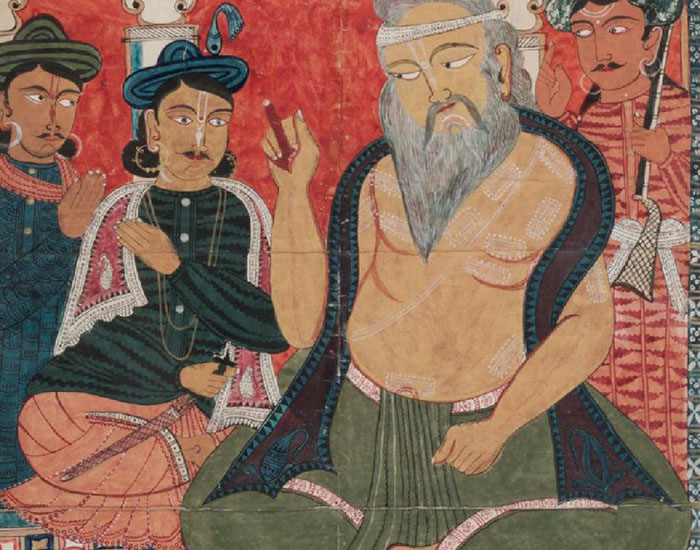
ARTICLE
A folk tradition of scroll-painting in Bengal, patua combines visual and oral storytelling narrated by a community of roving performers. Patua carries three different connotations simultaneously. First, it refers to a community named Patua which has held the occupation of handling the pata, meaning “scroll” or “canvas” in Sanskrit. Second, it refers to someone who paints or displays scrolls. Third, it refers to the practice of showcasing pictures. In the patua tradition, all these three meanings overlap often, but not always. The history of patuas is untraceable since it was a performance tradition that lacked written records. In documents from the colonial period, the word patua is used interchangeably for the caste and the practice, making it additionally harder to discern which of the either two is indicated. Presumed to be dating from as early as the tenth and eleventh centuries, the oldest surviving evidence of the scroll comes from the eighteenth century. The tradition – popular in Bengal, especially in Midnapur, Murshidabad, Birbhum and Purulia districts – is known to have been constituted by members of a specific caste (Patua), who narrated a body of stories through performance and demonstrated images by unravelling the scroll, moving across villages where they had been invited for festivals such as Durga Puja. The unfolding of pata is known as pat khelano and the narrative is called paater gaan. Patuas belonged to the Islamic faith and the narratives in the paintings included themes from the Ramayana and Mahabharata; religious texts like the Magalakavyas; and stories of Radha and Krishna, Behula and Lakhinder, renunciation of Chaitanya, Krishan Leela, among many others. The patuas bore symbols of flora and fauna and other decorative motifs along with the story. While initially painted on dried leaves, the patuas used cloth canvases, painting them with naturally extracted colours, prepared in broken coconut shells. Depending on their themes, there are several different kinds of patas. The Satyapir Pata is part of a syncretic belief system that fuses various local faiths. The Santhali Patai, also known as Jadu Pata or Chakshudan Pata is associated with the Santhal tribe and their rituals. The Manasa Pata centered around the snake-goddess, Manasa, who cures diseases and grants fertility. The Jama Patas depicts Yama, the god of death, and some variations depict his assistants torturing subjects in hell. The Kalighat Pata was created by Patuas who migrated to Kolkata in the eighteenth–nineteenth centuries and centred around the Kalighat Temple. In Odisha, the practice of Patachitra emerged in relation to that of patua. During the Bengal Renaissance, Gurusaday Dutt, an Indian civil servant who was the district magistrate of Birbhum in 1930, devoted himself to collecting scroll paintings and songs, becoming instrumental in popularising and exhibition of patas. The first public exhibition was organised at the Indian Society of Oriental Art, Calcutta in 1932, followed by another exhibition in Shantiniketan (now Visva Bharati University) in 1934. He also wrote and published extensively, arguing that Patuas claimed ancestry from the ancient Chitrakar caste, which was well-known as a painter caste across India. This gave Patuas a significant impetus and saw a revitalisation of the tradition as they were commissioned by individuals and organisations to depict subjects beyond religion. From the 1970s onwards, the scenes they depicted began to include family planning, literacy campaigns, anti-dowry campaigns and environmental appeals. In the 1980s, the demand for patua increased substantially, as its popular usage attracted people outside of art collecting circles. Since the 1990s, selling patua paintings has become the mainstay of the artists. Therefore, the patas came to be divorced from the performance tradition and got consolidated as a visual folk art. In 1986 and 1991, the Handicrafts Board of West Bengal financed training courses for Patuas in Midnapur and in 1992 a workshop was organised at the Ashutosh Museum, Calcutta University. Presently, the artists have adapted the form to offer depictions of contemporary life, and have shifted their scale to medium and small size canvases to cater to the market.

ARTICLE
The tradition of iconographic painting practised in West Bengal and Odisha on scrolls made out of cloth, patachitra tradition is among the many art forms to emerge from the Jagannath Temple, Puri. Initially, patachitra was called anasar patti in reference to the fifteen-day ritual period known as anasara or anavasra, during which the idols in the Jagannath Temple were kept in isolation, creating a need for substitute images to be in place for worship at the temple. Therefore, paintings of Jagannath, Balabhadra and Subhadra were painted on scrolls. Patachitra was originally practised by the artisan class of Odisha, the Mahapatra chitrakars. In Bengal, it is a blend of the tradition of patua along with bardic oral traditions, hence forming a part of a performance tradition. The patachitra scrolls, while traditionally painted on a gauze-like fine cotton cloth, are also rendered on palm-leaves and handmade paper. When painted on a cloth, the canvas goes through several layers of treatment. The first base involves a coat of soft, white stone powder made out of chalk and glue derived from tamarind seeds. This strengthens the surface, making it smooth and semi-absorbent enough to absorb paint. Instead of making preliminary drawings from pencil or charcoal, the artists directly begin making rough sketches through brushwork using light red and yellow colours. This is followed by the application of main flat colours, most commonly, white, red, yellow and black. The painting is then finished with fine strokes of black brush-work, which give the effect of pen-work. Upon completion, the painting is held over a charcoal fire and the surface is sealed with lacquer. This gives the painting a glossy finish and makes it resistant to dust and water. The colours used for patachitra are naturally sourced; white is derived from the powder of conch-shell, yellow from the stone Haritala, red from the red oxide stone (geru) and red sulphide of mercury (hingula), black from burning lamps and coconut shells, blue from indigo and green from leaves. The gum of the fruit kaitha is used to mix and bind the colours together. Given the dense narrative depiction, the fabric is partitioned into sections, each known as a pata. Often, the paintings would be made on scrolled cloth (jorani patas) so they can be carried. The travelling artists would roll open these scrolls and sing the narrative depicted. When rendered over palm-leaf manuscripts, patachitra is known as talapatachitra. These palm-leaf paintings are made with sharp drawings etched out through incisions on zig-zag folds of leaves and are strung together by threads. Patachitras depict religious, mythological and folkloric themes. Foremost among these are Vaishnavite narratives of two of Vishnu's avatars: Jagannatha and Krishna. Prominent depictions include highly stylised paintings of the Jagannath Temple, scenes from the epics Ramayana and Mahabharata, and regional mangalakavya texts such as the Chandimangala and Manasamangala. The painters follow certain conventions from the classical treatises on Indian art such as chitralakshana, paying attention to formal aspects of painting composition. One of the most distinguishable features of patachitra is its typical style of portraying faces such as long noses, prominent chins and elongated eyes. The paintings also have ornately designed borders that follow the colour scheme of patachitra’s narrative scene. The tradition is presently concentrated in and continued by the artist community of the village Raghurajpur in Odisha. No longer restricted to ritual use, these paintings enjoy a commercial market within India and internationally and are now rendered over a wide range of materials from synthetic cloth to paper, and in varying sizes.

ARTICLE
A traditional form of textile painting for the ritual worship of the goddess is known as Mata ni Pachedi. The craft has been associated with the nomadic Vaghri community of Gujarat which was not allowed to enter the temples since they were a non-dominant caste and had to create their own shrines for worship. The main image in Mata ni Pachedi is that of Hindu goddesses situated within enclosures demarcating a temple. The paintings, quite like the phad tradition from Rajasthan and kalamkari from south India, depict narratives from mythological texts, epics and popular tradition through illustrations. Traditionally Mata ni Pachedi was used as a canopy resembling a ceiling and backdrop in temporary wooden shrines. To make Mata ni Pachedi, a rectangular fabric is used, which is then divided into seven to nine columns to create a grid for the narrative to unfold. The grid is structured by almost-architectural insertions that reproduce windows, doors and archways in a stylised form. Earlier, the colours used were naturally procured and processed and consisted of a visual scheme of masoor (red) and black on a white cloth: black was extracted from jaggery, iron rust and water and red from alum, alizarin, tamarind and dhawadi flowers. Before painting, the cloth is soaked, washed, de-starched and treated with a harda (terminalia chebula) solution. Both wood-block printing and hand-painting are used to paint the fabric. While wood blocks are usually used for the borders, many drawings, embellishments and motifs are painted with a bamboo kalam (pen). With the ready availability of artificial textile colours and high demand during Navratri, when Mata ni Pachedi is elaborately decorated, the artists have now switched from natural colours to speed up their process. In Mata ni Pachedi the central figure of the goddess has a commanding presence. She is flanked on her sides by worshippers, musicians and animals. The many forms of the goddess – known through mythological and oral narratives, textual sources and popular local traditions – are found in this textile including Durga and Ambe. Also included are goddesses from the local folk culture of Gujarat, such as Vishat Mata, one of the most important goddesses for the Vaghris (it is believed that the community descended from her); Vahanvati Mata, who is worshipped by seafarers and traders; Momai Mata, more popularly known as Dashamaa, a goddess of the Kutch region and protector of health, livestock and harvest; Khodiyar Mata, who is known to be powerful enough to predict the nature of incoming monsoon; and Hadkai Mata, who protects her flock from rabies. The defining presence of the local goddesses in the textile not only records a religious tradition but also offers a glimpse into the social and cultural life of the Vaghris, the precarity of a nomadic and agricultural community, dependence on yearly monsoon rains and the naval trade along the coastline of Gujarat. In Mata ni Pachedi the goddesses are depicted according to their iconographic aspects. In some variations, the Hindu god Ganesh appears in either the upper portions of the cloth or to the left of the goddess. Narratives from Mahabharata and Ramayana also find a portrayal where the artists improvise the scenes to suit the form of textile painting. For instance, it was difficult to render the golden deer (from the scene of Sita’s abduction in Ramayana) in colour so the artists depicted it as two-headed. Similarly, the game of dice from Mahabharata was substituted by a game of cards which is easier to portray. The need to improvise and adapt the form has led to significant changes in the art; the grid-like structure for the narrative is no longer a requirement and traditional depictions of rows of worshippers carrying garlands and flags have been supplemented by angels carrying them. In some cases, the temples appear to be domed like mosques. The art has also incorporated a vast array of artificial colours including sap green, yellow ochre and indigo. The popularity of Mata ni Pachedi is no longer restricted to its ritual aspect and its significance during Navratri. Artists now produce decorative consumer goods such as bed sheets, pillowcases, wall hangings and garments in the textile’s traditional style.
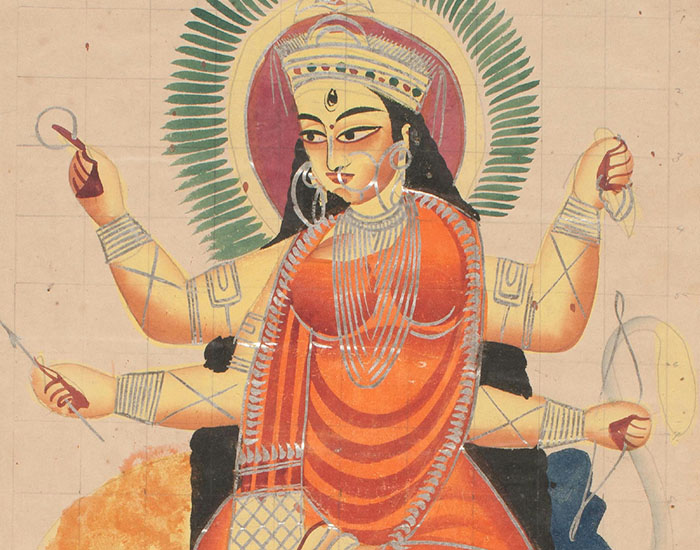
ARTICLE
A tradition of watercolour painting that originated in Calcutta (now Kolkata), Kalighat painting was practised by artisans from the Patua community between the mid-nineteenth and early twentieth century. The name derives from the city’s Kalighat temple, around which the painters had established their business, and the paintings were known for their bright colours, sweeping brush strokes and strong lines. Though these paintings were originally intended to be souvenirs for devotees visiting the temple of Kali and featured primarily Hindu imagery, they expanded over time to include other religious traditions as well as socio-political commentary. Some scholars believe that the tradition can be traced to the 1830s or earlier when Patua artisans first moved to the city and began making paintings around the temple, while others argue that the thematic and visual characteristics that are more definitive of Kalighat painting, such as political caricatures, hairstyles and ornaments, only go as far as the 1850s. It is, however, broadly accepted that Kalighat painting reached its peak around the mid 1870s and began to decline after the late 1880s, owing to the rising popularity of photography and printing technology imported from England and Germany. Unlike the sequential narratives of the patachitras, each Kalighat painting depicted a single and simplified scene, usually featuring opaque figures on neutral backgrounds. The paintings were made on mill-paper treated with a paste of lime, on which watercolours were dabbed using a large brush or a rag. The pigments used were derived from a mix of natural and industrial sources, including black from lampblack, red from lead, yellow from arsenic and blue from indigo. The black outline of the forms was drawn using a pencil or a brush made from squirrel or goat hair, after which paint was reapplied to the edges that needed shading. The creation of a Kalighat painting was often a family affair, with different members completing different steps of the process. The key characteristics of the Kalighat style are the rounded, tapering limbs and pointed faces with small mouths and elongated, almond-shaped eyes. The neck and limbs may be bent at sharp angles or drawn as fluid curves, allowing the figures to have dynamic poses. Only the human figures are drawn with heavy shading and outlines, giving them a three-dimensionality that was not applied to the backdrop. This removed depth from the painting, made the characters appear more radiant, and sharply separated them from the background. In the case of many secular paintings, the background was omitted altogether. In the early 1800s, Calcutta –– the then capital of British India –– was developing into a thriving centre of industry and tourism, attracting, among others, migrant groups of rural artisans and craftspeople. This included the Patuas, who traditionally painted over twenty-feet long narrative scrolls known as patachitras. Costly and cumbersome to carry, these patachitras found few takers among pilgrims visiting the city, compelling the artisans to create smaller, less detailed but more portable images, which would come to be known as the Kalighat pats. The number of such visitors increased as trains began to connect more parts of the country to urban areas in the nineteenth century. Partly because their patronage came primarily from ordinary people, and partly because Patua painters were known for sometimes using their craft as a documentary tool, Kalighat paintings developed a reputation for keeping up with the visual culture of the time. Based on the broadest date range assigned to the tradition by scholars, the development of Kalighat painting can be divided into three distinct phases. The first phase covers the period immediately after the patua artists moved to the city, when the paintings were heavily influenced by the patachitra tradition. During this time, the Kalighat pats were sold as religious souvenirs for pilgrims at the temple, and therefore, portrayed religious icons such as Kali, Durga, Lakshmi and Saraswati, as well as related deities such as Ganesh, Krishna and Shiva who feature in the myths around these goddesses, and scenes from Hindu epics such as the Ramayana and Mahabharata. Although the paintings were mainly religious, secular elements were often incorporated for added appeal, including depicting deities wearing Western shoes or holding violins instead of veenas. As the style gained popularity, Kalighat painting moved into the second phase, with groups other than the Patuas taking up the profession. Soon after, the paintings began to incorporate Islamic and Christian scenes and iconographies, including Islamic saints, angels and tazias. During the third and final phase –– from the mid-nineteenth century onwards –– Kalighat painting began moving away from religious themes and icons to depict more contemporary, humorous and satirical subjects. The artworks, which had grown popular among the migrants and non-elites of the city, began reflecting socio-cultural and political themes, ranging from topics such as courtesan culture, domestic pets, murder trials, horse racing and wrestling, among others. A frequent topic in this category was women’s emancipation: the education, legal sanctions and increased independence of upper class Indian women in the nineteenth century was satirically shown in paintings depicting husbands cowering before their wives, possibly as opportune references to Durga or Kali. The paintings also discussed colonial politics in the subcontinent, criticising the British government’s Indian collaborators through caricatures of complacency and greed, while praising iconic freedom fighters like Rani Lakshmibai, also known as Rani of Jhansi, and Tipu Sultan. Despite its popularity, the Kalighat style was subjected to severe criticism from British artists and Bengali elites for its politically charged subject matter and perceived non-conformity to Victorian modes of representation. Kalighat painting gained international attention in 1895, when Maxwell Sommerville donated fifty-seven paintings to the University of Pennsylvania Museum of Archaeology and Anthropology, USA. Following this, in 1917, Rudyard Kipling donated a collection of 233 Kalighat paintings to the Victoria & Albert Museum, London, UK, which later developed into the largest collections of Kalighat paintings in the world. Other notable collections of Kalighat paintings can be found at the Bodleian Library, Oxford, UK; the British Library, London; the Naprstek Museum, Prague, Czech Republic; and the Pushkin Museum of Graphic Arts, Moscow, Russia. Within India, the most prominent Kalighat collections can be found at museums across Kolkata, including the Victoria Memorial Hall; the Indian Museum; the Gurusaday Museum; the Birla Academy of Art and Culture; the Asutosh Museum; and Kala Bhavan, Visva-Bharati University, Shantiniketan. As most Kalighat paintings were undated, unsigned and developed by multiple individuals, the names of most artists remain unknown. The last well-known Kalighat artists, Nibaran Chandra Ghosh and Kali Charan Ghosh, passed away in 1930. However, Kalighat paintings were instrumental in influencing subsequent generations of Indian artists, most notably Jamini Roy, and more recently the Midnapore-based contemporary artist Uttam Chitrakar.
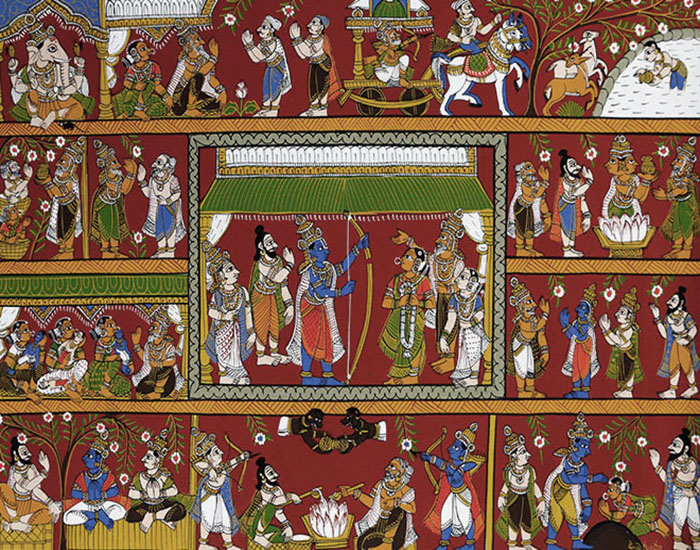
ARTICLE
A narrative painting and performance tradition, Cheriyal scroll painting has been practised in the town of Cheriyal in Siddipet district, Telangana since the seventeenth century. Cheriyal scroll paintings are made by artists known as Nakashis, who belong to the Madiga, Goud, Mudiraj, Mala, Padmashali, Chakali and other non-dominant caste communities in the region. Their folktales form a major part of the narratives in the paintings, along with caste-specific renderings of tales from the Puranas, the Mahabharata and the Ramayana. Historically, the scrolls were used as illustrations for storytelling performances by travelling bards. In the past, these paintings were made using handmade tools and natural pigments and materials. The perspective was flat, with elaborately dressed figures depicted in vivid colours against a red background. Traditionally, the base material was khadi cloth treated with a mixture of rice starch, tamarind paste and chalk powder, applied in two or three layers. The width of the cloth was usually 3 feet while the length varied depending on the number of panels. A squirrel hair brush was used to make thin black outlines on the fabric, after which a goat hair brush was used for painting in the details. Dyes were derived from natural sources, such as white from crushed sea shells, blue from indigo, black from soot and yellow from turmeric. While white and pink were used to paint the skin tone of human figures, other colours were used for deities and supernatural beings, some of which were specific to certain figures: black for Ram, blue for Krishna and green for Hanuman. The longer scrolls reached up to twenty metres in length and contained as many as fifty panels, each of which was unfolded as the performance progressed. Artisans usually work in conjunction with narrators while producing Cheriyal paintings. As a rule, images of Ganesh and Saraswati were painted first, followed by Shiva, Vishnu, Brahma and other deities. Narrators then travelled from town to town, performing the scenes depicted in the scrolls. Other performers and musicians often accompanied them with musical instruments and props such as masks and puppets. These performances — and, by extension, the scrolls — were often commissioned by entire communities and were treated as a major cultural event in the area, with people coming from nearby villages or towns to watch. Following cultural changes in India, since the 1990s Cheriyal paintings have increasingly foregrounded tales of Ram and Krishna instead of the Mahabharata. As the travelling storytelling function of the scrolls has become less relevant due to the arrival of television, cinema and the Internet, painters have reduced the size of the scrolls, often making large wall-hangings that depict one or two scenes instead of entire narratives. These are now usually made with synthetic colours on readymade surfaces like paper or plywood. To cater to tourists, artisans also make souvenirs such as keychains, dolls and masks in the characteristic Cheriyal style. In 1976, the government of India officially recognised Cheriyal scroll painting as a handicraft practice, and accorded it a Geographical Indication tag in 2008. Other incentives to preserve the practice include providing a stipend to apprentices to learn the craft, although their number remains small. Cheriyal paintings are exhibited and displayed at government emporiums and museum exhibitions, and the craft is taught to interested students through workshops conducted by Cheriyal painters.
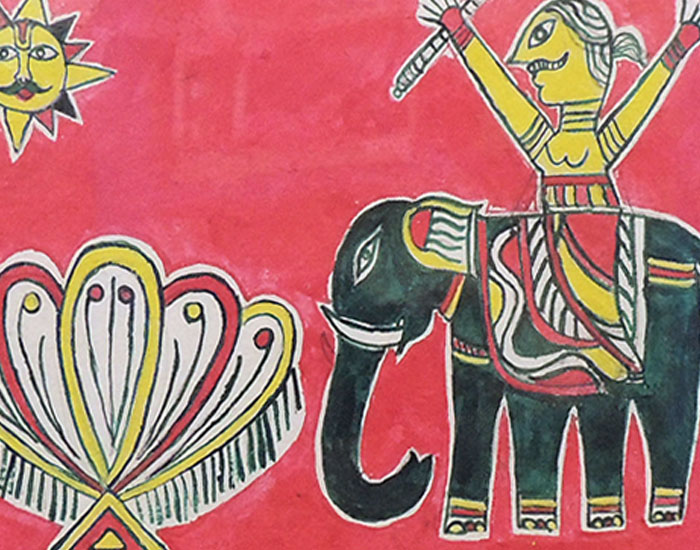
ARTICLE
Practised primarily in Bhagalpur, Bihar, Manjusha painting includes narrative scrolls, murals as well as painted temple-shaped boxes or pots called manjusha, from which the tradition derives its name. The painted boxes, along with the narrative scrolls, are of cultural and ceremonial significance during the Bishari Puja, an important local festival honouring the Bishari goddesses, while murals of Bihula, also known as bhitti chitra, were typically painted on the walls of a newlywed couple’s home as bearers of good fortune. Traditionally, members of the Kumbhakar community made the manjusha boxes, which were then painted by the Malakar community, who also painted the scrolls and murals. Scholars believe Manjusha painting originated in the seventh century when the Bhagalpur region was known as Ang Pradesh and was an important centre of trade and commerce. Manjusha paintings typically depict the folk story of Bihula and the five Bisharis or manasputris. The Bisharis are believed to be the adopted daughters of Shiva and Parvati, and are closely associated with snakes in the region’s mythology. Manjusha painting is done using only three colours: green, pink and yellow. The outlines and intricate details are drawn in green, after which sections are filled in with pink and yellow. The style has a flat perspective, and the characters are typically rendered in profile with their limbs spread in an “X” shape unless they are shown engaged in an activity that requires the use of their arms. The motifs that make up the borders of a Manjusha painting incorporate the significant features of the Bihula-Bishari story. It is believed that Shiva is fond of bel, or the wood apple tree and motifs of its leaves are often used to signify his favour in Manjusha paintings. Leheriya, or waves, represent Bihula’s journey on the river. Other significant motifs include sarp ladi, or a group of snakes, and the champa or frangipani flower. The five Bisharis, each of whom holds at least one snake, can be further identified by their weapons: Jaya wields a bow, an arrow and an amrut kalash, possibly referencing the Bisharis’ ability to cure snakebites; Dhotila holds the rising sun; Padmavathi carries a lotus; Mynah holds a mynah bird; and Maya holds snakes in both her hands. Following the excavation of the Vikramshila monastery in the 1930s and the discovery of artefacts that placed the origin of Bishari Puja as early as the seventh century, Manjusha painting received steady patronage from the colonial British government. An exhibition of Manjusha paintings on canvas was also organised at the India Office Library in London, UK. However, after India gained independence, public interest in Manjusha painting declined significantly. It was revived once again in the 1980s due to the efforts of the Bihar government’s Department of Information and Public Relations, which worked with local Manjusha artists such as Chakravarty Devi, Jyoti Chand Sharma and Shrimati Nirmala Devi to promote and popularise the art form. In 2007, a not-for-profit organisation called Disha Gramin Vikas Manch collaborated with the National Bank for Agriculture and Rural Development to re-establish Manjusha paintings as a viable source of livelihood by holding training and awareness programmes. The two organisations provided incentives in the form of marketing campaigns and exhibitions as well as financial support for businesses that sold the paintings. Today, Manjusha paintings feature on a variety of commercial products, such as upholstery and masks, as well as on the exterior of the Vikramshila Express train, which connects Bhagalpur with New Delhi.
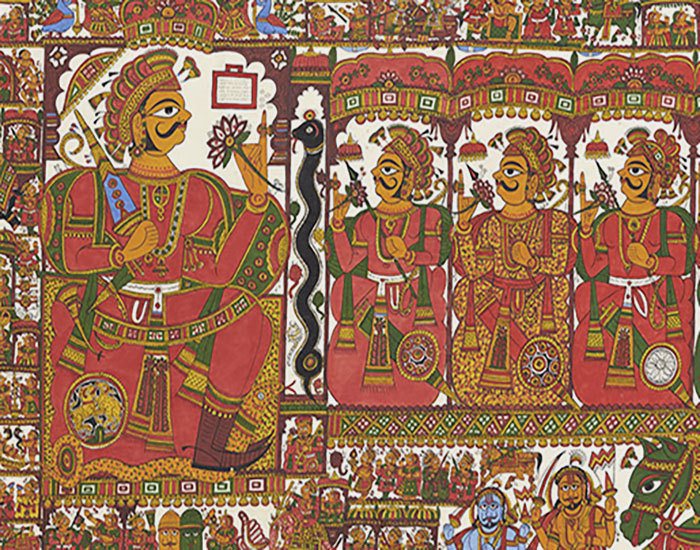
ARTICLE
A form of scroll painting from the Mewar region of Rajasthan, Phad painting chronicles the stories of local folk heroes and deities (or bhomiya), such as Ramdevji from the Meghwal and Regar castes, Devnarayanji or Devji from the Gujjar community and Pabuji from the Rabari community. Historically, these painted cloth scrolls were used during performances of the stories by travelling Rabari priests and priestesses, locally known as bhopas and bhopis, who would commission artisans to illustrate them. Phad painting is believed to have originated in Shahpura in the fourteenth century, where it was practised exclusively by members of the Chhipa caste. This was also the period around which the local folk stories, or veergatha, documented by these scrolls first emerged. Stories of notable Rajput kings were also painted, although this was comparatively rare. Phad paintings are traditionally large, ranging from five to thirty five feet in length. The base of the painting is made of coarse cotton cloth or khadi. The cloth is soaked in water overnight, then dried and treated with primer, after which it is burnished with a stone, usually by male artisans. The primer is a mixture of flour and gum boiled in water. The pigments are traditionally prepared by women and derived from naturally occurring minerals. The artisan makes a rough plan of the painting in yellow, and fills in more colours once the composition is ready. The pigments are applied to the cloth with a medium made of kheriya gond, a local gum. The gum and the burnished surface are the main reasons for the longevity and vibrancy of Phad paintings. The style uses a flat perspective and bright colours. Each painting is framed by black and white borders composed of intricate floral patterns, while the edges of the cloth itself are always red. Human figures are depicted frontally, although their faces are shown in profile. These figures are painted in orange, with jewellery and clothing in red, yellow, blue and green. The bhomiya of the story is placed in the centre of the composition, sometimes with a companion. The veergatha is painted around him, either in part or full, and while this is not necessarily composed in a linear manner, the scenes are usually arranged horizontally and divided into panels with thin borders of vines. The painting is concluded by drawing a pupil in the eye of the central figure: a gesture that symbolically brings it to life. Phad paintings are considered sacred and scrolls that have suffered extensive wear and tear are disposed of through ritual immersion in the Pushkar lake. The bhopa and bhopi traditionally perform through the night: the bhopi uses a lamp to highlight different scenes in the painting and plays a two-string instrument called the ravanhatta, while the bhopa narrates the story. The performance, also called phad baanchna (“reading of the phad”), was historically commissioned as a religious service and each painted scroll was treated as a shrine. The ceremony traditionally began with a series of purification rituals in the performance area as well as an arti to the bhomiya central to the Phad painting. In 1960, notable Phad artisan Shree Lal Joshi founded the Joshi Kala Kunj (now renamed Chitrashala) in Bhilwara, where people from any community could enrol and learn Phad painting. The historical system of commissioning has also changed in recent years, with artisans preemptively preparing paintings of standard scenes such as royal hunts or religious imagery. While only a few artisans make Phad paintings professionally today, many hobbyists have embraced it and continue to follow the traditional methods of making the paintings. The religious performances associated with these scroll paintings, however, are rarely practised now. Recently, other deities from Hinduism, such as Ram and Krishna, have also been featured prominently in Phad paintings in a bid to draw in a wider audience. With commercial buyers in mind, artisans have also scaled the scrolls down to two to six feet in length.
The Indian subcontinent is home to several traditional tabletop games, including some that have come to be known by other names today, such as Snakes and Ladders (originally known as Moksha Patam) and Ludo (Pachisi). Games and game ideas moved to and from India along trade routes: Ganjifa was brought to India by the Mughals, Naqsh was a confluence of Ganjifa and card games played by Portuguese sailors, and Pallanguzhi arrived through trade with eastern Africa, where its ancestor mancala was invented. Games like Moksha Patam, Carrom and Pachisi travelled to Europe, UK and USA through colonial agents.
Indian board games are typically cross and circle games with randomisers, played by two to four players. The players’ status was reflected in the choice of game or the type of board, with emperors like Akbar playing a life-sized version of Chaupar. At one time considered talismans and even a form of currency, cowrie shells were used as an affordable randomiser or token for board games by most people, while wealthier classes used ivory dice.
The idea of luck in games, extrapolated as divine play, is a recurring theme in Indian mythology, notably in the Mahabharata and the Skanda Purana. Most Indian tabletop games contain underlying moral commentary and heavy symbolism. Among variations of Ganjifa, the images on the cards and the suit divisions are indicative of the social and religious context from which they emerged.
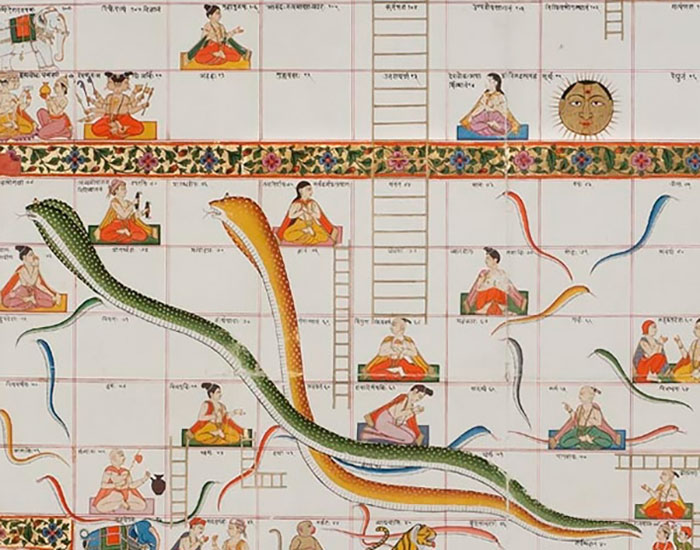
ARTICLE
Also known as Gyan Chaupar, Moksha Patam is a board game dating back to mediaeval India. It was traditionally played on a board made of cloth, featuring a series of squares, snakes and ladders. Some more elaborate boards included additional imagery, such as portraits or decorative borders. The origins of Moksha Patam remain a matter of debate, with some scholars attributing its invention to Dnyaneshwar, a thirteenth-century Marathi saint, while others interpret a passage from the tenth-century text Rishabh Panchasika as an even earlier reference to the game. The oldest surviving example of the game is from seventeenth-century Mewar. The gameplay of Moksha Patam was as follows: each player has a token and moves between numbered squares from the bottom to the top of the board, according to the roll of the dice. The board contains images of snakes and ladders, which function as conduits between squares on different vertical levels: if a token lands on a box at the head of a snake, it must immediately descend to the box containing the snake’s tail, and if it lands at the foot of a ladder, it may ascend to the topmost rung. The objective of the game is to reach the last box at the top and exit the game. In addition to being a form of recreation, the traditional Moksha Patam had a spiritual and didactic purpose. The last square of the game represented the attainment of moksha or release from the cycle of death and rebirth. The snakes and ladders on the board were meant to function as karmic devices, either thwarting or aiding a player’s efforts to reach moksha. To emphasise this, the squares from which the tokens either ascended or descended were labelled with names of various virtues or flaws. The positive attributes listed were dependability, asceticism, faithfulness, generosity and knowledge, while the negative attributes and crimes were rebelliousness, vanity, crudeness, theft, lust, debt and violence, to name a few. The game, as a whole, was meant to educate players on which personality traits were morally desirable and which were repugnant. The number of snakes was typically much larger than that of ladders — often twice as many — to underscore the difficulty of the path to enlightenment. In the 1890s, Moksha Patam made its way to Britain, where it eventually acquired the name Snakes and Ladders. While the British version retained some emphasis on ideas of morality – with illustrations of good and bad deeds on the squares that bookended each ladder or snake – it did away with the spiritual connotations and nuances of the Indian version. Later, in 1943, the game was introduced in the USA by Milton Bradley under the name Chutes and Ladders, as the company felt that the image of snakes would scare children away. Other versions of the game include Leiterspiel, a German version that used pictures of circus animals. Although the modern version of the board has been standardised as a hundred squares arranged in a rectangle, the mediaeval Moksha Patam varied widely in design, containing anywhere between 72 to 124 squares, arranged in a cross or in a custom shape that followed a theme. For instance, in a Mewari board that is housed in the National Museum, the playing area is shaped like a Rajput fort. Some versions of Moksha Patam made for Hindus featured Vaishnavite imagery and labelled the last square as Vaikuntha, or the abode of Vishnu. Gyan Chaupar, as the Jains called Moksha Patam, was especially popular during the period of Paryushan, when devotees fasted and played the game as a form of spiritual engagement. Some Gyan Chaupar designs depicted the playing area surrounded by an image of the Cosmic Being or Lok Purusha. To a lesser extent, versions of Moksha Patam were also made using Islamic or Sufi references, with the last square denoting the moment of merging with God. Moksha Patam boards from mediaeval India are housed in the collections of the National Museum, New Delhi; the Rajasthan Oriental Research Institute, Jodhpur; the Calico Museum of Textiles, Ahmedabad; and the British Library, London, UK.

ARTICLE
A Persian card game that has been popular in the Indian subcontinent since the sixteenth century, Ganjifa is notable for its hand-painted playing cards. The name Ganjifa likely derives from the Persian word ganj, meaning treasure or money. The game has several variations across West, Central and South Asia. The oldest surviving reference to Ganjifa in India was made in the early fifteenth century by the historian Ibn Taghribirdi, who wrote that a Mamluk sultan gambled with kanjifa (a medieval Arabic name for Ganjifa) as a young man. The game likely made its way to India through the Mughals and is referenced in a journal entry by Babur dating back to 1527 CE. A description of the gameplay of this early version of Ganjifa can be found in the Humayun-nama, a sixteenth century text by Gulbadan Begum. There have been several variations of Ganjifa since the game was first introduced, each with a distinct iconography, deck and cultural context. In the case of Ganjifa decks made with Hindu imagery, there is also considerable influence from Kreeda Patra, an older card game from India. Like games such as chess, the cards of Mughal Ganjifa (also known as Safvid Ganjifa) depict figures and objects closely associated with imperial courts of the time. There are ninety-six cards in a pack, divided into eight suits of twelve cards each. The pack is divided into two parts or bhedas containing four suits each, with every suit containing two court cards called shah (king) and wazir (minister) as well as numerical cards from one to ten. The court cards of a suit are its strongest. The bishbar bheda has ten as its strongest number card and one as its weakest. The kambar bheda is reversed, with one being the strongest. The names of the suits – according to the set described by poet Ahli Shirazi in the early sixteenth century – are gulam (servant), taj (crown), shamsher (sabre, or curved sword) and tanka (silver coin) in the bishbar bheda, and barat (cheque or draft), qimash (material wealth, usually in the form of textiles), ashrafi (red or gold coin) and chang (a small harp) in the kambar bheda. While packs used by the Mughal court were made with precious materials such as ivory and tortoiseshell, the cards used by the general public were made with starched cloth, papier mache or palm leaf, and sometimes with a lacquered face. Ganjifa cards were historically elaborately painted, although factors such as demand, prevailing tastes and scale of production did impact the quality of card design at different points in time. Unlike the rectangular West Asian cards, Indian Ganjifa cards are typically circular in shape. The court cards are usually the most meticulously designed, reflecting their typically high status in the gameplay. These cards, especially those from packs used by royalty and nobility, were often treated as miniature paintings in their own right, with a king or minister painted atop a horse against a background of hills or forest, and the symbol of the suit deftly worked into the composition. As with Western playing cards, the numerical Ganjifa cards depict their suit in the relevant number: a ten of taj will feature ten crowns, a six of ashrafi will show six gold coins, and so forth. Visually, these may be arranged loosely on the card’s face following no particular order, or by dividing the circular card into triangular segments, akin to a pie chart, or in some cases as individual flowerheads on a tree-like form. Despite the word gulam meaning slave or servant, cards of this suit often feature comical characters or stereotypes from local stories, or even full scenes of human figures, with the number of individuals reflecting the value of the card. In such cases, the shah and wazir are given an entourage in their respective cards. The jewelled crown of the taj suit is likely modelled after the Sassanian-style crown used in Persia, or the Timurid headdress from Central Asia, which is in turn a more elaborate version of the Mongolian hat. The shamsher suit is relatively uniform, usually showing a similar curved sword in every pack, with the grip sometimes being covered by a knuckle-guard. The figures of the shamsher court cards are often shown in battle armour, perhaps to compliment the weapon. The motif on cards in the chang suit is a small harp of Persian or Chinese origin. The court cards for the chang suit show only women playing the harp. In the case of the shah card, the woman sits on a throne among companions, and in the wazir card she rides a camel. The instrument itself never gained popularity in India and has historically caused the most confusion among Ganjifa artists, leading to this suit being drawn in a variety of imaginative ways. The two money suits, tanka and ashrafi, are represented by silver and gold coins respectively. Additionally, the ashrafi suit’s court cards are shown as lions, tigers or the sun, possibly due to the association of these symbols with the imperial courts of West and Central Asia at the time. The qimash suit, intended to represent comfort, depicts stylised bolsters commonly used in North India. The barat suit has the simplest motif, usually a rectangle, or occasionally a circle, with a green outline. The rules of Ganjifa are largely consistent across its various versions. A game typically has three players and lasts three rounds, although this can be adjusted if required. The objective of each round is to make hands or tricks. When the round concludes, the player with the lowest score is obliged to exchange their high cards for the others’ low cards in the next round. The number of cards exchanged depends on the number of tricks lost. Several variations on the Mughal game have been designed over time, some of which include: a twelve-suited version invented by Akbar; Ganjapa, which is played in Odisha today and closely follows Mughal Ganjifa; the ten-suited Dashavatara Ganjifa, made according to the ten incarnations of Vishnu; Mysore Chad Ganjifa; Naqsh Ganjifa; Sawantwadi Ganjifa from Maharashtra; and Ramayana Ganjapa, also from Odisha. The game is rarely played today, with painters (or chitrakars) in Odisha, Maharashtra and Mysore occasionally producing novelty packs intended as display pieces. From the early twentieth-century onwards, Western playing cards became more popular in India than Ganjifa, due to their simpler four-suit system, easily mass produced cards, and the wide variety of games that could be played. In recent years, artists and institutions have taken some steps to revive Ganjifa, a notable example of which is Splendours of Ganjifa Art, a book on the game’s history released by the Chitrakala Parishath, Bengaluru in 2019.
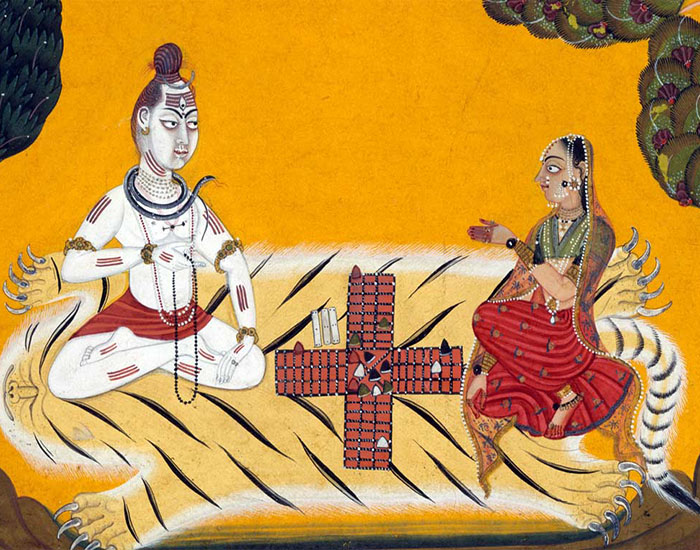
ARTICLE
Meant to be played by two or four people, Pachisi is a cross and circle board game that originated in India. While the game is traditionally played on a cross-shaped cloth, any surface may be used, including a drawing or engraving on the floor. The origins of Pachisi are disputed, with some scholars speculating that a version of the game was played in the pivotal gambling scene in the Mahabharata, or was being played by Shiva and Parvati in a relief at Cave 29, Ellora. However, in the absence of any description of a board or gameplay, there is no evidence that these games were Pachisi and may have simply been bets made on rolls of the dice. The oldest evidence of Pachisi itself are the Mughal-built Pachisi courts at Agra and Fatehpur Sikri, which date back to the sixteenth century. Here, the Mughal emperor Akbar and his noblemen would play the game at a grand scale, with courtesans in colourful costumes taking on the role of tokens. Details of these games and the gameplay have been recorded by his biographer, Abu’l Fazl, who notes that the game was already popular at the time, implying that Pachisi substantially pre-date Mughal rule. Further evidence of the game exists in the form of surviving boards and tokens, as well as paintings from Mughal and Rajput-era manuscripts, which depict people playing the game. Most cross and circle games use a board made of a circle enclosing a cross, usually in the form of paths. This can also mean that the tokens used by players follow a circular movement along the central cross without the presence of an actual circle, as is the case with Pachisi. The board for Pachisi consists of four pathways, each of which is eight tiles long and three wide. All four pathways meet in a central area known as charkoni. Some tiles, usually three or four per arm of the cross, are marked with an “X” and are called castles. They are arranged such that there are always twenty-five paces between the first castle on one arm and the last castle on the next arm, hence the name pachisi, which means twenty five in Hindi and Urdu. In the traditional gameplay, four players were divided into teams of two, with the players sitting across from each other being part of the same team. Each player had four tokens, all of which were placed in the charkoni. Players took turns casting the cowrie shells, and the one with the highest roll made the first move of the game, followed by the other in a counterclockwise order. Once the game began, each player moved one of their tokens according to the roll of the cowrie shells, first going down the middle column of the arm that faced the player, then up and down the outer paths of each of the remaining arms in a counterclockwise progression, with the last path being the same as the first. The first team to return all their tokens to the charkoni after completing a full circuit of the board won the game. Capturing and blocking tokens was also a major component of the gameplay. An opponent’s token was considered captured when a player landed on the same square as that token. Captured tokens were sent back to the charkoni and had to begin the game anew. In some versions of the game, a token could only finish at the charkoni if it has captured at least one enemy token during its time on the board. Another Indian game that is similar to, and possibly also contemporaneous with Pachisi, is Chaupar (not to be confused with Gyan Chaupar) which uses stick dice in place of the cowrie shells used in Pachisi. Early European variations of Pachisi include Ludo, a British game invented in the late nineteenth century, and Mensch ärgere Dich nich, an early twentieth-century German game. Later American adaptations of the game include Sorry! and Parcheesi. Today, Ludo is the most commonly played version of Pachisi in India, although the original version is still played in some parts. Pachisi boards and tokens from various periods of Indian history can be found in the collections of the National Museum, New Delhi; The British Museum and the Victoria and Albert Museum, London, UK; the Swiss Museum of Games; the Children's Museum of Indianapolis, USA; and in the Nasser D. Khalili Collection of Islamic Art.
A sculpture or building made by cutting a single piece of rock into the desired shape is called a monolith. Monolithic architecture may be considered a subset of rock-cut architecture; it is carved internally and externally, while still attached to the surrounding landscape. Monolithic sculpture, however, may be separated from its original location and moved elsewhere, prime examples of which are the Lion Capital at Sarnath, the Gomateshvara statue at Shravanabelagola, Karnataka and the Ugra Narasimha statue at Hampi.
The decision to carve a living rock is widely assumed to have been based, at least partially, on convenience as evenly sized blocks did not have to be quarried and transported to the construction site. Another reason is spiritual; living rock architecture is seen to possess a connection to nature. The earliest example is the caves in the Barabar hills where Buddhist ascetics could take refuge from the weather since caves (even artificial ones) were considered an extension of the natural world as opposed to the material civilisation which the ascetics had disavowed. Such monolithic architecture has thus been reserved exclusively for ambitious religious buildings, such as the Pancha Rathas at Mahabalipuram and the Kailasanatha temple in Ellora.
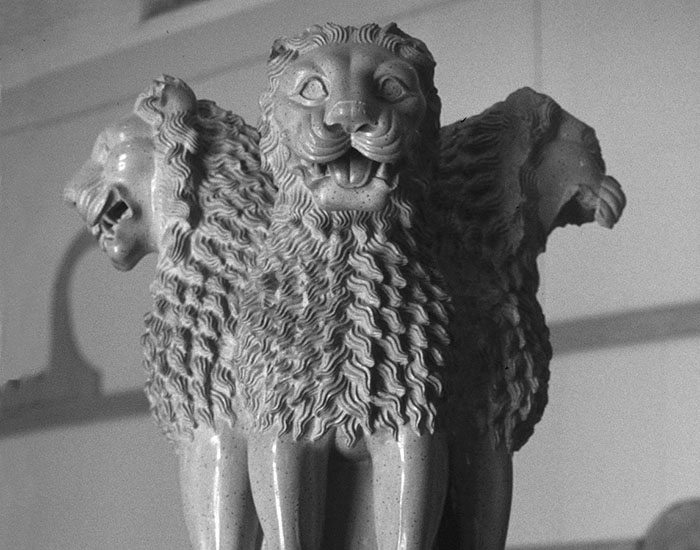
ARTICLE
One of the earliest stone sculptures made under the patronage of the Mauryan king Ashoka, the lion capital at Sarnath, Bihar, depicts four male Asiatic lions seated on a round abacus with their backs to each other. The capital is carved from a single block of highly polished Chunar stone that is separate from the block used for the pillar shaft, which features the inscribed edicts of Ashoka. The most elaborately carved of all surviving Ashokan capitals, the lion capital stands at a height of two meters and is dated to ca. 250 BCE. The broken remnants of the pillar, as well as the complete, but detached, capital were formally excavated around the year 1905 by F O Oertel. The capital is believed to have originally been attached on top of the pillar. Also among the findings were fragments of a large dharmachakra stone with thirty-two spokes, which is presumed to have rested on the capital in a likely reference to the Buddha’s first sermon. The four lions comprising the capital are depicted with their mouths open as if mid-roar and their manes are arranged in neat ringlets. They also portray an understated but carefully studied musculature. Scholars claim that the eye sockets of the lions were once fitted with semi-precious stones. The overall form of the lions is poised, heavily stylised and compact, similar to the lion images carved in Achaemenid Persia, which is a known source of influence for Mauryan architecture. In addition, the abacus features four animals — an elephant, a lion, a bull and a horse, carved in high relief and suggesting that the sculptor(s) may have been familiar with the anatomies of the animals. They appear to be moving in a clockwise direction and are separated by four chakras with twenty-four spokes each. The abacus rests on an upturned, bell-shaped lotus with elongated, fluted petals, which are also believed to have been borrowed from the Achaemenid style of architecture. Sarnath is the site of the Buddha’s first sermon and the lion capital is believed to have been built to commemorate the occasion. Therefore, the various icons that appear on the capital are recurring symbols within Buddhism. The dharmachakra is a solar symbol with its origin in many faiths and, therefore, has multiple interpretations. Here, it is believed to represent the Buddha “turning the wheel of the law” with his first sermon at Sarnath. It also possibly refers to Ashoka’s title of Chakravartin, meaning “a ruler whose chariot wheels roll everywhere.” Some sources interpret the lions as personifying the Shakyamuni (of the Shakya, or lion, clan) Buddha who preached his sermons at Sarnath. Their open mouths are interpreted as spreading the Buddha’s teachings, the Four Noble Truths, far and wide. An almost identical lion capital with its mouth open is found at the Sanchi pillar, which is another site where the Buddha is believed to have delivered sermons. Some interpretations suggest that the lions symbolise not only Buddha, but also Ashoka. As a significant ruler of the first historical empire in India with a vast geographical reach, strong relations with foreign states and diverse secular cultures, Ashoka was held in parallel with the Buddha, having limitedly imbibed the Buddhist way of life. The animals on the abacus are interpreted differently by various scholars. According to Alfred Charles Auguste Foucher, and later accepted by most other scholars, the four animals are associated with the four milestone events in the Buddha’s life: the elephant, representing his mother Queen Maya’s dream of a white elephant entering her womb; the bull, representing his birth under the astrological sign Vrishabha; the horse, representing Kantaka, the horse on which Buddha fled his palace to pursue asceticism; and the lion, representing the enlightened Buddha and often known as Shakyasimha. The animals are depicted running in the clockwise direction and separated by four dharma chakras, possibly signifying the intention of setting the wheel in motion through the cycle of life or representing the Buddha setting the wheel in motion at the sermon at Sarnath. Another prevalent opinion is that these animals face the cardinal directions. They have also been identified as the four perils of samsara — birth, disease, death and decay — following each other in an endless cycle. The upturned lotus that the capital rests on represents purity in Buddhist art, sculpture, ritual and theory and symbolises rising above the mundanity of life to attain enlightenment. In 1950, three years after Indian independence, the lion capital at Sarnath was adopted as the emblem of the Republic of India, with the lions representing virtues such as pride, power, courage and confidence. The inverted lotus bell has been omitted, and the motto ‘Satyameva Jayate, meaning “truth alone triumphs,” is inscribed in Devanagari script below the abacus. The original lion capital is now preserved at the Sarnath Museum, near Varanasi, Uttar Pradesh.
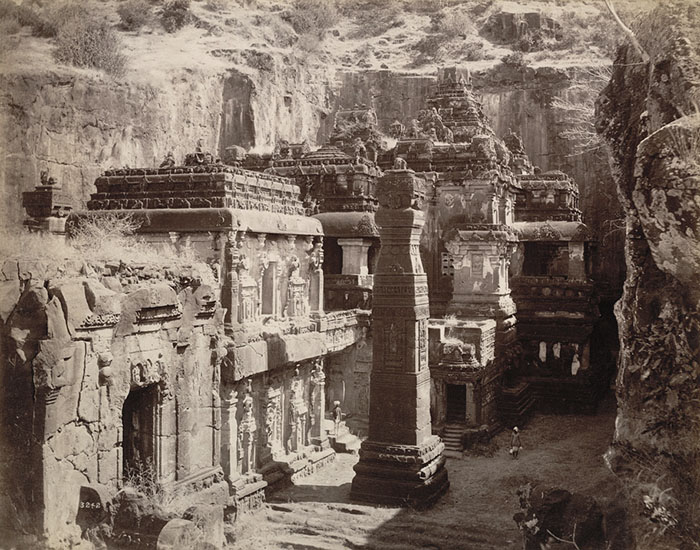
ARTICLE
Also known as the Kailasa and Cave 16, the Kailasanatha temple at Ellora is the largest monolithic rock-cut monument in the world. At 32 metres high and 78 metres long, it is widely considered remarkable for its size, architecture and sculptural treatment. The temple is unusual in that it is not a recreation of interior spaces like earlier Deccan cave temples such as those at Badami and Ajanta. Rather, it is a rock-hewn rendition of a structural Shaivite temple executed as a freestanding form in a large open court. The temple’s design appears to have been appropriated or developed from the Chalukya Dynasty’s Lokeshvara or Virupaksha temple at Pattadakal. Scholars have suggested that this is meant to represent the victory of its patrons, the Rashtrakuta Dynasty, over the Chalukyas, their former sovereigns. The temple’s iconography is influenced by Shaivite myths as well as the avatars of Vishnu; many sculptures appear to have been selected based on themes of the successful upholding of cosmic order, supporting the claims of its patrons to political ascendancy over the Deccan. Scholars initially believed that Kailasanatha’s diversity in sculptural styles, coupled with the scale of its excavation — requiring over two million tonnes of rock to be removed — meant that it must have been added to over the course of many generations, through the patronage of multiple dynasties. However, the temple’s uniform architectural programme, combined with more recent studies of sculpture and iconography, have led to a new consensus attributing it to around two decades of activity under the Rashtrakuta kings Dantidurga and Krishna I in the late eighth century CE. The carving was most likely executed from the surface of the rock to the centre, from the top to the bottom. Additional halls and sculptures may have been added through the early ninth century. The temple is entered through a two-storeyed rock-cut gateway, or gopuram. Directly facing the entry is a carved panel of Gajalakshmi, generally associated with kingship, flanked by two colossal dvarapalas. Beyond this is an open courtyard 47 metres wide on average. Two free-standing elephant sculptures are positioned in a space adjoining the gateway, which transitions into a circumambulatory space around the temple proper through a short flight of steps. The temple proper stands on a moulded plinth about 8 m high within this. Such a tall plinth is unusual for structural temples of this period, leading scholars to suggest that it was designed to allow for light and air to reach the bottom storey. The plinth is decorated with carved elephants and lions and appears to be influenced by models from Pallava sculpture; it has also been argued that sculptor guilds from Pallava territories may have been drawn to Ellora by Rashtrakuta patronage. Large galleries are carved into the side and back walls of this enclosure, further increasing the space available for circumambulation at ground level. Scholars have argued that some of these — specifically the river goddess shrine carved into the northern cliff face and the sacrificial hall or yajnashala on the southern cliff face — might have been added by later Rashtrakuta monarchs. Other galleries, such as the sixteen-pillared Lankeshvara temple on the first storey of the northern cliff face adjacent to the temple, appear to have been a part of the initial excavation. The upper storey of the Kailasanatha includes the temple proper, consisting of a Nandi mandapa; a sixteen-pillared sabhamandapa with porches on the north, west and south; the garbhagriha surmounted by a vimana with four talas; and five subsidiary shrines to the north, northeast, southeast and south of the vimana. Sculptural stone bridges connect the Nandi mandapa with the gopuram and the sabhamandapa; a bridge that originally extended from the sabhamandapa to the southern cliff face has since collapsed. On the ground floor, on the lower exterior walls of the Nandi mandapa and the sabhamandapa, are large sculptures of Gajasurasamharamurti and a meditating Shiva facing each other. The southern lower exterior wall of the sabhamandapa is carved with detailed narrative friezes depicting the Ramayana, while the northern lower exterior wall is carved with the Mahabharata narrative. Both of these reliefs omit the beginnings and ends of the epics and include scenes not seen in the classical recensions, suggesting that the artisans and patrons of the temple used local or regional variations of the stories instead. The sculptures on the south exterior wall of the sabhamandapa on the upper storey depict the abduction of Sita and the battle of Vali and Sugriva; the north includes various forms of Shiva. Scholars have suggested that this is meant to suggest a collapse and a restoration of cosmic order respectively, which in the temple’s iconographic programme appears to be closely linked with Shiva and by extension the Rashtrakutas as Shaivite kings. Scholars have also suggested that the Kailasanatha collected and represented aspects of Shaivism that were still evolving in the eighth and ninth centuries: the galleries on the ground floor contain among the earliest known depictions of Ravana sacrificing his heads to Shiva, a legend that is directly linked to later jyotirlinga traditions. The vimana of the Kailasanatha may be considered an example of the continuing evolution of Deccan temple architecture. It is surmounted by an octagonal shikhara over a platform with reclining bulls at four corners. In the three subsequent talas, the shrines at the centre of each side are crowned by barrel-roofed aedicules known as shalas, and those at the corners by square-shaped aedicules called kutas. The overall elevation of the vimana shows a radial continuity by repeating the basic architectural scheme in each of the lower talas giving the impression that the whole vimana expands outward with each tala. A barrel-roofed antefix or sukhanasa extends from the vimana towards the roof of the sabhamandapa, a feature also seen at the Virupaksha temple at Pattadakal. The roof bears kuta aedicules at each corner interspersed with shala aedicules; at the centre is a lotus surmounted by four lions arranged around a central kuta. The lions’ bodies are pointed towards the ordinal directions, whereas their faces are turned towards the cardinal directions; it is possible that this is also meant to support claims to Rashtrakuta political ascendancy. The sculptures at the temple are characterised by movement: plasticity and fluidity of form replaces the solidity and verticality seen in the sculpted volumes of earlier caves at Ellora, a trend first seen in the Dashavatara cave. This sculptural trend provides further art historical support to the attribution of the Kailasanatha to the Rashtrakutas, since the Dashavatara cave is directly associated with the Rashtrakuta king Dantidurga through an inscription. The sculptors at the Kailasanatha appear to have moved away from older compositional styles emphasising the central axis of symmetry; the figures they produced are mobile and animated, as observed in the dvarapalas and the Gajasurasamharamurti. The sculptural depiction of Ravananugrahamurti under the sabhamandapa on the south side has also been remarked upon for its dramatic quality, with palpable psychological contrasts and tensions. The multi-armed, multi-headed demon-king Ravana is carved completely in the round under a platform on which Shiva sits; the whirling motion of the demon is balanced by the stillness of Shiva. Like other sculptural depictions of Ravananugrahamurti, such as those seen at Pattadakal, this may be meant as a political allegory for the dominance of the Rashtrakutas over their rivals. However, the lack of inscriptional evidence from the temple itself makes such associations difficult to establish definitively; the only references to what may be the Kailasanatha temple are found in inscriptions from Rashtrakuta vassals. The Kailasanatha temple continued to attract visitors, admirers and patrons for centuries after the collapse of the Rashtrakutas. These included various rulers of the Bahmani and Nizam Shahi dynasties, who visited the temples for recreational visits along with their courts; the Mughal emperor Aurangzeb Alamgir visited it in the late seventeenth century and in the eighteenth century, the Maratha queen Ahilyabai Holkar sponsored a renovation and the repainting of some sections of the temple. The temple was declared a UNESCO World Heritage Site in 1983 as part of the Ellora Caves complex.
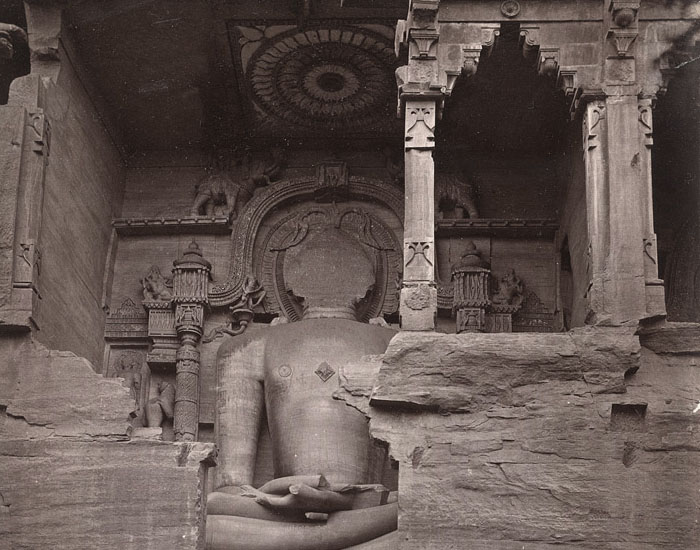
ARTICLE
Stone sculptures, often reliefs, that are carved from living rock and are typically associated with monolithic architecture. Monuments built by excavating and carving rock on site differ from structural buildings that are made with materials such as stone, wood, bricks and so forth that are sourced from elsewhere, segmented into units and transported to the site of construction. Rock-cut sculpture has independently arisen in various part of the world, from subterranean structures in Malta in the Neolithic Period to tombs in ancient Egypt and the Phrygian kingdom in present-day Turkey. Given the size of some of these early monuments, the decision to carve living rock is widely assumed to be made based on convenience. Hillsides containing rock like sandstone and basalt — found abundantly in the Deccan region, where many such caves are located — were typically used for this purpose because they are relatively easy to carve while remaining structurally sound. As a tradition specific to the religious art of Hinduism, Buddhism and Jainism, rock-cut sculpture in South Asia is found in cave temples and prayer halls, and reflects shifts in regional trends and cultural patronage. The earliest surviving example of rock-cut sculpture in India can be found in the Lomas Rishi cave in the Barabar hills, Bihar. These caves date back to the third century BCE, when they were excavated — in this case, hollowed and shaped — with the patronage of Ashoka and his successor Dasaratha of the Mauryan Empire. The Barabar caves were created so that wandering ascetics might be able to take refuge there during the monsoon, since caves (even altered ones) were considered an extension of the natural world as opposed to the material civilisation which the ascetics had disavowed. Early approaches to rock-cut sculpture emerged from broader traditions of rock-cut architecture, aided by the tastes of patrons and the development of religious iconography. Cave sites dating to the second and first centuries BCE in present-day Maharashtra — such as Bhaja, Pitalkhora and Karla — were also built to house travelling Buddhist monks, but the collective patronage from officials of different faiths meant that Hindu and Buddhist iconography feature alongside one another in the sculptures carved on the cave walls. At Bhaja, for instance, narrative scenes are rendered in low relief over the cave walls, with characters packed densely together. The later reliefs at Karla show a deeper integration of the natural structure of the cave in the architecture and the sculptures; here, the figures are rendered in high relief in proportion with the cave size. In the first millennium CE, rock-cut sculptures saw a movement from dynamic, often asymmetrical forms to a stricter, standardised style of sculpture. Key examples of the former are date back to the fifth century at the Udayagiri caves in Madhya Pradesh and the Ajanta caves in Maharashtra. The carving of whole caves or particular images at these sites was funded by officials and rulers of the Gupta Empire and Vakataka Dynasty respectively, with spaces dedicated to Buddhist, Jain and Hindu worship. The sculptural treatment of the human figure at these sites is naturalistic and affective, suggesting that this visual vocabulary may have already been established in the fourth century or earlier, but possibly in a more easily perishable medium. The formal dynamism apparent in the transitory style of the early sixth century Shaivite temples at Elephanta was soon replaced with a more regularised style. By the eighth century at Ellora, the human form was carved in front-facing, symmetrical poses with neat patterns of recurring elements such as the folds of a figure’s clothing or ornamentation. The dense but carefully balanced narrative scenes depicted in the Kailasanatha Temple reflect this new style, which incorporates multiple iconographies while drawing from a variety of architectural forms. The sculptural elements of later caves at long-patronised sites such as Ellora were often carved in imitation of earlier ones, or other important sites. The rock-cut temples of Badami and Aihole borrow elements from the earlier Ajanta and Udayagiri style as well as the stricter Ellora style. The largely Hindu temples at these sites, all built with the patronage of the Chalukya Dynasty in the sixth century, are carved from soft red sandstone, which allowed for naturalistic and densely composed reliefs. In the seventh century, the period following the Pallava king Narasimhavarman I’s victory over the Chalukyas saw a large number of rock-cut structures being carved from the granite boulders and caves at the newly established town of Mamallapuram in present-day Tamil Nadu, all of which were in some way designed to memorialise the victory. Stylistically, the rock reliefs of Mamallapuram are rougher and more rigid than those of caves in western India and the Deccan. This is partly due to the lack of specialised craftsmen for rock-cut sculpture in the region and partly a difference in material: the basalt rock of the Deccan and the sandstone at Badami and Aihole are softer and relatively easy to carve than the granite boulders at Mamallapuram. Built toward the end of the tenth century, the Gomateshvara statue dedicated to the Jain figure Bahubali, is the world’s largest rock-cut sculpture at a height of seventeen metres. Situated in the town of Shravanabelagola in Karnataka, it is carved entirely from a single block of granite. There are also a few significant examples of monumental rock reliefs beyond the subcontinent. Carved on a sandstone cliff, the two sixth-century Bamiyan Buddha statues in present-day Afghanistan, measuring 53 and 35 metres respectively, were the largest known examples of Gandhara sculpture before their destruction in 2001 by the then-incumbent Taliban government. Despite their large numbers, very rarely are the artisans of these sculptures identified, even when inscriptions of patrons or dedications are present. Moreover, most artisans worked in guilds, and individual contribution was secondary to collective work, especially in the case of lower caste artisans who worked on temples dedicated to upper caste worship.
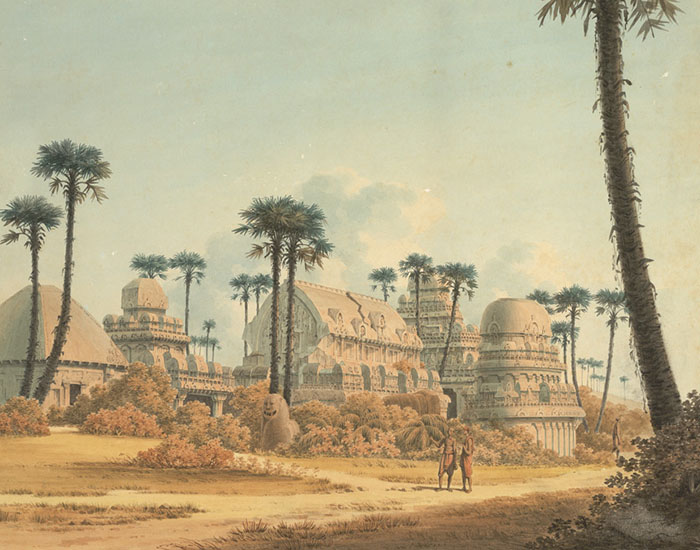
ARTICLE
A complex of five monolithic, rock-cut, granite structures located in Mamallapuram in Tamil Nadu, the Pancha Rathas – meaning “five chariots” in Sanskrit – are attributed to the Pallava king Narasimhavarman I, and were carved between 630–668 CE. The shrines are considered significant examples of early Dravida architecture. They are now named after the Pandavas and their wife Draupadi from the Mahabharata epic: the Arjuna Ratha, the Bhima Ratha, the Dharmaraja Ratha, the Nakula Sahadeva Ratha and the Draupadi Ratha. However, the original structures have no known correlation with the epic, and it has been argued that they were probably intended as individual shrines rather than as chariots. The complex also includes three large sculptures of a lion, an elephant and a bull. The vimanas of these structures are marked by the presence of shalas, kutas and chandrashalas, dormer-shaped windows typical of Pallava architecture. Of the five rathas, four are in a line, suggesting that they were carved out of a single stretch of granite rock approximately 49 metres long and 12 metres tall at the southern end, and around 6 metres tall at the northern end. Fissures in between were likely used to create the individual structures. The fifth ratha, which is not in the same line as the others, was probably carved out of an adjacent boulder. Scholars believe that the granite was cut from top to bottom, with the uncut rock below used as a support base. The Pancha Rathas fall under the sculptures at Mamallapuram, listed as a UNESCO World Heritage Site in 1984. They are also a protected site of the Archeological Survey of India under the Ancient Monuments and Archaeological Sites and Remains (Amendment and Validation) Act, 2010. As of writing, they continue to be a major tourist attraction.
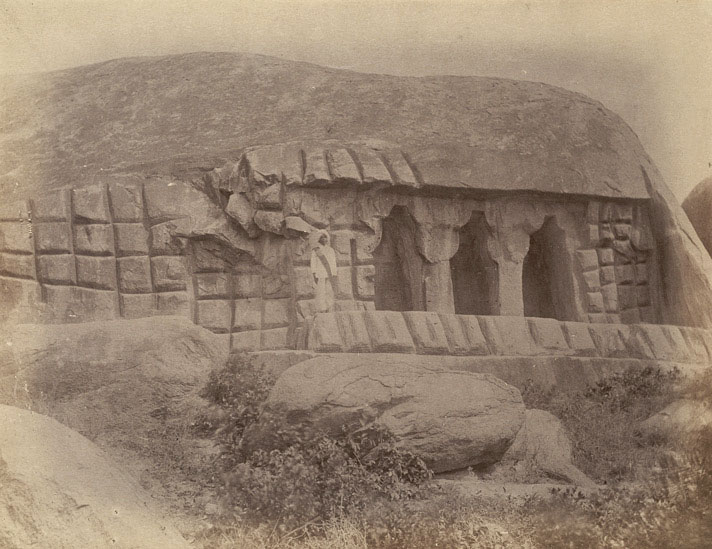
ARTICLE
Two rock-cut shrines excavated during the seventh and eighth centuries CE, the Thirumalapuram cave shrines are located on a hillock in Thirumalapuram (also known as Varunachimalai) in the district of Tirunelveli, Tamil Nadu. The two shrines, which have identical façades, are located on the northern and southern sides of the hillock. The northern cave contains a linga carved out of the rock, suggesting it was dedicated to Shiva, while the southern cave appears to have been left incomplete. The shrines provide important evidence of the movement and interaction of artistic styles through the region in the medieval period. The completed northern shrine has an entrance porch or mahamandapa followed by a rectangular pillared ardhamandapa and a sanctum or garbhagriha, excavated into the lateral wall rather than the back wall of the cave. The entrance to the sanctum is flanked by sculptures of dvarapalas, which had become commonplace in south Indian temple architecture by the eighth century; a Nandi faces the linga. The façades and the pillars appear to be influenced by the shrines of the Pallava court. Lotus medallions are present in the cubical portion of the pillar shafts as well as in the pilasters that frame the reliefs on the inner walls. The underside of the bracket capitals are decorated with scroll ornaments. Carved in relief panels are images of Ganesha and a Trimurti scheme featuring a four-armed Vishnu flanked by ganas; a dancing Shiva, also similarly flanked; and Brahma, with two of his four faces shown in profile. This representation of the three deities may also be inspired by Pallava models. The northern cave shrine was also decorated with frescoes, dated to the eleventh to twelfth centuries CE. They depict dancing ganas, the group of men in floral robes, and a celestial figure riding a lion (possibly Durga) near the Brahma relief. These paintings reflect influences from the mural traditions of Sittanavasal and Thanjavur. Although the Thirumalapuram cave shrines’ original purpose is unknown, an inscription from the eleventh century CE, attributed to the Pandya king Maravarman Vallabhadeva, recorded that religious ceremonies and rituals were regularly performed at the site. As of writing, the shrines have attracted little scholarly attention, and their sculptures and frescoes are in a state of neglect.
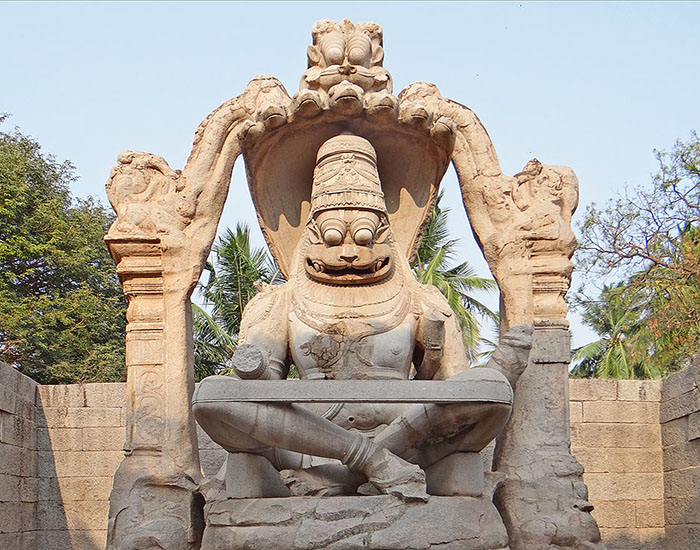
ARTICLE
A large granite statue of Narasimha, the Ugra Narasimha statue was commissioned in 1528 CE by Krishnadevaraya, a ruler of the Tuluva Dynasty of Vijayanagara (present-day Hampi, Karnataka). At the time of its construction, and until its partial destruction in the aftermath of the battle of Talikota in 1565, the statue was a composite Lakshmi Narasimha statue. The accompanying Lakshmi image, once seated on the god’s knees, was destroyed in 1565. The statue shows Narasimha seated in a frontal posture with bulging eyes and a gaping mouth. The god, 6.7 metres tall, is framed by a prabhavali arch with a kirtimukha (face of glory) at its top. Unlike most Narasimha images, here the god is depicted is seated atop three coils of the snake Adishesha, and is surmounted by its seven hoods. In this aspect, as with its original coupling with the image of Lakshmi, the statue shares iconographic attributes conventionally assigned to Vishnu. Behind the statue is a small shrine dedicated to Narasimha. The Narasimha statue’s colossal proportions and fearsome form suggest that it was considered a protecting image for the city. Vijayanagara rulers of the Tuluva Dynasty were devotees of Narasimha; the god was one of the earliest Vaishnavite deities to be widely worshipped at Vijayanagara. Two early Vijayanagara temples were dedicated to him at Anegondi, and on the south bank of Tungabhadra. The Narasimha cult expanded under the rulers Krishnadevaraya and his successors Achyutaraya, and Sadashiva; it was given special impetus through the activities of the Madhava sect, who were active in and around Vijayanagara between the early fourteenth and early seventeenth centuries. Madhava Brahmins were also closely associated with the military administration of Krishnadevaraya. The defeat of Vijayanagara by an alliance of the Deccan Sultanates in 1565 led to a sack of the city, during which the structure was also harmed. Both knees of Narasimha, and the Lakshmi image seated atop them, were broken off. This has commonly been interpreted as an act of iconoclasm by Muslim rulers, a view that has been questioned by recent scholarship. It has been pointed out that a monumental statue of Ganesha near the Narasimha statue was left untouched by the attacking armies, suggesting that the vandalism of the Narasimha statue was driven by its association with the power of the Tuluva Dynasty, rather than primarily by religious considerations. Such politically-driven acts of violence were commonplace in the sixteenth century: the rulers of Vijayanagara, especially Krishnadevaraya, are attested to have done so during campaigns in Odisha and the northern Deccan. Restoration attempts in the 1980s brought the figure back to a cross-legged position by adding in a pair of knees. A yogapatta band was also added, strapping the knees together. This addition has often led the image to be described as Yoga Narasimha, as a result of which the restoration remains controversial. As of writing, the Ugra Narasimha statue continues to feature in debates over religious and political violence in the sixteenth century and remains a major tourist attraction at Hampi.
India’s international trade history is extensive and it can be divided based on periods and routes. Trade primarily occurred in the Indian Ocean from the Bronze Age onwards and arguably still continues, connecting the Indian peninsula to Southeast Asia, the Persian Gulf ports, the Red Sea ports and the East African coast. The oldest known use of this route was between the Indus Valley cities and ports in ancient Egypt and Mesopotamia, as evidenced by stamp seals, textiles dyed with indigo and madder root, and agate beads.
Following the expansion of the overland and maritime silk routes, Indian trade with the Mediterranean reached its peak in the first century CE, leading to artefacts like an ivory yakshi statue — believed to be from either Bagram or Bharuch — finding its way to Pompeii. Mediaeval Indian Ocean trade, particularly in the case of dyed cotton textiles with kalamkari or block-printed designs, flourished until colonial encroachments in the eighteenth century. Thereafter, Indian goods became models for imitation and alteration during the British Raj, eventually being replaced through mechanisation. This effectively ended the major role that India played in global trade until the country’s economy was liberalised in 1991.
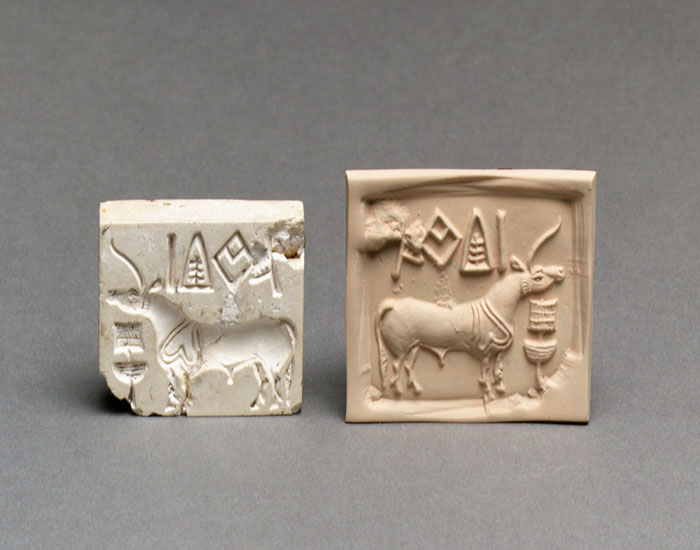
ARTICLE
Square or rectangular objects used for stamping that are typically made from steatite, featuring carvings on the front and a perforated boss on the back, stamp seals are one of the most extensively found cultural artifacts from the Indus Valley Civilisation. Numbering approximately two thousand, they were likely in use during its Mature Harappan Phase. They were excavated from many urban sites in the Indus Valley but were most prevalent in the Mohenjo-daro archaeological site in present-day Pakistan. These seals are understood to have been used primarily in trade as a designatory device, and their discovery from sites beyond the known Indus Valley region — such as Kish and Umma, and in Iraq — is indicative of an early system of trade with other societies such as the Mesopotamian Civilisation of Western Asia, where both flat and cylindrical seals existed. Typically, the front of the seal is carved in intaglio so that a positive imprint is produced on the material on which it is impressed. The back of the seal is in the form of a knob-like protrusion or boss, for easy handling, with a perforation that possibly allowed the stamp to be strung and worn as an amulet. Apart from the steatite, or soapstone seals, believed to have been given a surface glaze by treating with alkali and heating, rarer seals made of terracotta, silver and faience have also been recovered from Indus Valley sites. The symbolic and formal imagery on the seals are typical of Indus Valley iconography and consist of bovine figures such as bulls, water buffalo, Indian gaur or wild ox and zebu; other animals such as elephants, rhinoceroses, tigers; fantastical creatures such as unicorns (sometimes interpreted to be bovine animals in strict profile) and plants, although less common; and human and human-like figures. Seals also often carried illustrated scenes of people seemingly engaged in religious activities, accompanied by motifs such as the sacred fig, vessels and agricultural tools. The geometric forms and naturalistic figurations are almost always accompanied by inscriptions of four to seven characters in the as-yet-undeciphered Indus script, making the Indus Valley stamp seals the most dominant set of artefacts to feature it. Although the exact use and the meaning of the seals cannot be confirmed, it is suggested that they could have been used as marks of identification, owing to the uniqueness of the inscriptions found on them. It has also been suggested that they were used in trade, to stamp clay insignia on ropes to seal and secure packages during transportation, ( the depiction of pack animals lending support to this interpretation), and by traders and merchants to designate their goods by name, place of origin and so on. A ritualistic function has also been ascribed to these seals due to renderings of thematically central human or humanoid figures of priests or deities, such as in the famous Pashupati seal, and of narrative scenes, as in the Seal of Divine Adoration. The largest collection of Indus Valley stamp seals is housed in the National Museum, Delhi, while a significant number of them are in museums across Pakistan such as the Harappa Museum in the Punjab province and the Mohenjo-daro Museum in Sindh. Smaller collections of seals can be found in museums in the United States of America and the United Kingdom, including at the Metropolitan Museum of Art, New York and the British Museum, London.
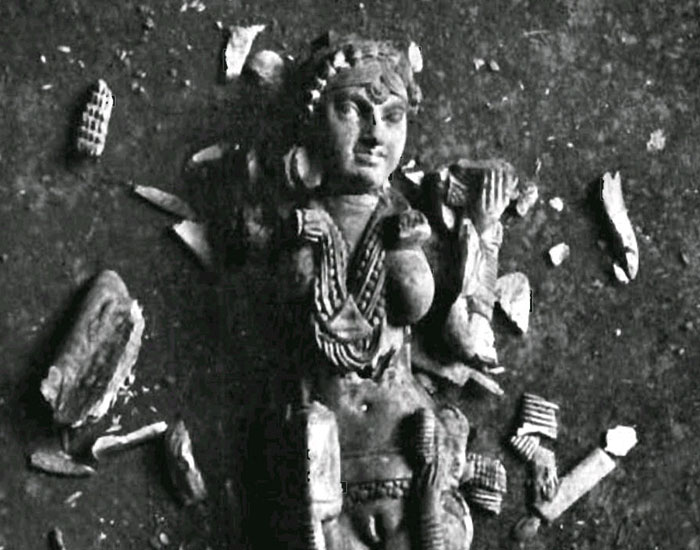
ARTICLE
A carved ivory statuette of a female figure, the Pompeii Lakshmi was recovered during archeological excavations at the site of the ancient Roman city of Pompeii in 1938. The statuette, along with the city, had remained buried under volcanic ash since Mount Vesuvius had erupted in 79 CE. Its discovery established the existence of flourishing trade networks spanning the Indian Ocean and Mediterranean Sea. The statuette’s style and iconography has led to scholars variously identifying it as Sri, Lakshmi, and a yakshi among others. The figure is 25 cm high and 5 cm wide, possibly sculpted from a single elephant tusk. It consists of a primary female figure accompanied by two smaller, female attendants attached to either side. A hole on top of the primary figure suggests that the statuette might be a fragment of a larger object, like a piece of furniture or a mirror-handle. The statuette is relatively flat, but is sufficiently rounded and detailed to suggest that it was intended to be viewed from all sides. The primary figure is almost completely nude, with the exception of jewellery, including a necklace, bangles and a lotus-shaped head ornament. A flat belt is worn around the hips, while the right arm is raised and held behind the head. The left leg is placed in front of the right. The figure’s hair is braided in coils that reach the waist, with a large flower, perhaps a lotus, woven into the braids. The genitals are visible, suggesting that the figure may be a fertility goddess or yakshi. Scholars have also argued that it may be a syncretic form combining the Indian and Roman goddesses Sri, Lakshmi and Venus. The latter identification is suggested by the fact that a number of Venus representations in the Greco-Roman world show her accompanied by two attendants. While the lotus later came to be associated with the goddess Lakshmi, it has been argued that the Pompeii statuette’s ornament may not have been intended as a mark of a goddess or yakshi at all, but a general symbol of beauty. The statuette is marked with a Kharosthi inscription at the bottom, suggesting an origin in the northwestern regions of the Indian subcontinent, perhaps Begram in modern-day Afghanistan. Begram was a major production centre for carved ivories around the time the statuette was exported. Other scholars suggest that it was made in the interior of the Indian subcontinent, pointing out stylistic similarities to the Mathura school and to examples of yakshis from Bharhut and Sanchi. Similar statues have also been recovered at Bhokardan in present-day Maharashtra, which had steady trade with the Roman world. However, all of these centres did interact with each other; thus the statuette’s style is probably a mixture of influences, making it difficult to attribute an exact origin to it. It is generally assumed that the figure was produced in the early half of the first century CE and subsequently brought to Pompeii, probably via a port on the west coast such as Bhrigukaccha (present-day Bharuch). The house where the statuette was found is now named “The House of the Indian Statuette”, although the figure itself is now lodged at the National Archaeological Museum in Naples, Italy.

ARTICLE
The process of stamping designs and patterns on base fabrics such as cotton or silk using dye-soaked, hand-carved wooden blocks. The technique is central to a variety of printing traditions across India in which blocks are used to create a range of designs composed of floral and religious motifs, geometric forms, and calligraphy. Some of these block printing traditions include ajrakh, Bagh, Bagru, Sanganeri, saudagiri, mata ni pachedi, namavali, and balotra, as well as the less popular traditions of the Chhimba community in Punjab and the more recent printing practices in Serampore of West Bengal. While several Indian communities practise the craft, the Khatris and Chippas in the country’s northwestern regions are the oldest known communities to have been continuously involved in block printing, since at least the sixteenth century. Although, block printing is believed to have been practised in a rudimentary form as early as the Indus Valley civilization between 3000 BCE and 1200 BCE, direct textual evidence dates the craft of block printing on textiles to the eleventh century in Kerala. The earliest material evidence of these textiles and their international trade came from fragments of cloth from Gujarat found in Egypt and Indonesia dating back to a period between the thirteenth and fourteenth centuries. It has been inferred that these textiles were printed and dyed in blue and red during that time — and some were hand-painted using the technique of kalamkari. Block-printed fabrics had experienced sustained international trade in the western and eastern regions of the Indian Ocean, before the establishment of first Europe-mediated and then European trade between the fifteenth and nineteenth centuries. The initially indirect trade was routed through the existing Indian Ocean and Southeast Asian markets by commercial officers from Portugal and the Dutch East India Company and French East India Company. The cultivation of a robust European market for Indian printed cloth such as Kalamkari and chintz, proved lucrative by British East India Company, which began to establish trade monopolies from the seventeenth century on. The visual appearance of any block printed textile depends on the quality of the carving on the block, the richness of the dye and the effectiveness of the mordant used with it. While engraved blocks of metal and terracotta are sometimes used, those made from types of wood such as sheesham, sagwan and rohida are often preferred for their texture and ease of carving. Woodblock carving has been traditionally carried out in Gujarat and Rajasthan, each with producing blocks in distinctive styles. While in Gujarat, Pethapur has been the centre of block making, in Rajasthan, it is Jaipur that serves as the primary centre, both serving printing and dyeing clusters in their respective states as well as in Madhya Pradesh. is the primary blocks from Jaipur are best known for their precise cuts, which allow for cleaner printing with a lower risk of smudging. Contemporary block makers still prefer to use hand tools such as chisels to carve the blocks, alongside some mechanised tools such as small drills. Teak is the preferred variety of wood for making blocks, as it remains undamaged even after frequent contact with water and other substances used in the printing process. Air passages known as pavansar are also often drilled into the blocks to prevent them from clinging to the fabric when lifted. A single printed motif may require the use of multiple blocks. For instance, one block can be used to create a rekh of the motif, another can be used to fill it, such as a datta, and a third block, such as gadh, can be used to create the background of the design. This requires both the block maker and printer to be aware of how every block will be used, and how the motifs will fit into the design. karigars also mark the date on each block, in case it needs to be repaired or altered, so that patterns will repeat perfectly when the fabric is printed. Prior to printing, a mordant is typically added to the dye to allow it to stick to the base fabric because many natural dyes do not easily adhere to the cloth. Only a few — such as indigo, which is used in several block printing traditions and was a key product in colonial extraction — do not require the use of mordants. Although natural dyeing and printing was a thriving practice in India until the nineteenth century, karigars eventually began relying almost entirely on inexpensive chemical dyes. The use of such dyes has allowed two types of manual printing techniques to emerge: direct printing and discharge printing. In addition to block printing, karigars also sometimes employ resist-dyeing, which includes techniques such as dabu printing and batik. Block printing, indigo dyeing and resist dyeing are often combined to produce complex, layered and multi-coloured patterns in traditions such as the aforementioned ajrakh, Bagru and Bagh. The block printing technique in each region of the country is distinct, localised in terms of the materials and tools used as well as the cultural influences and social characteristics of particular communities. Traditionally, the raw fabric, motifs, colours and intricacy of block printed garments have served as designators of the wearer’s identity, caste, community, status and occupation. However, with the onset of urbanisation and market-driven mass production, these textiles have been redefined and adapted for contemporary consumption and usage, losing much of their social and symbolic values. Block printing has had a long tradition in Asia, and particularly India, which though having undergone much change to meet varying market demands and technological and lifestyle changes, has mostly remained authentic and uncompromising in aesthetic and technique. Block printed fabrics have in recent years experienced an upsurge in Indian and international markets, leading to more concerted efforts towards the conservation and revitalisation of indigenous block printing traditions. One f the largest repositories of Examples of printed textiles and garments have constituted the collections of museums in India — such as Sanskriti Museum of Indian Textiles, Calico Museum, and the Anokhi Museum of Hand Printing.
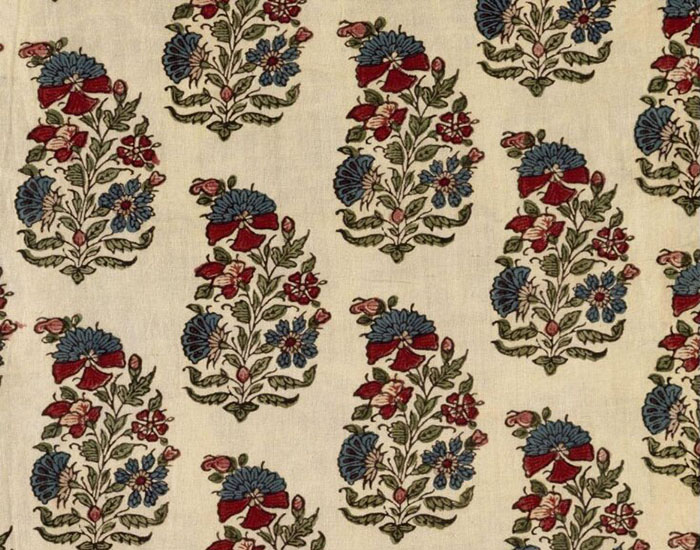
ARTICLE
An umbrella term that broadly refers to motifs of flowers, leaves, trees, shrubs and buds. It derives its name from the Persian boteh, meaning “shrub” or “flowering plant” and is commonly used to decorate textiles. Butas appear in various sizes, colours and orientations and often in combination with butis. The term originally referred to the teardrop-shaped motif, also known as Boteh Jegheh, kairi motif, mankolam and paisley. The motif is believed to have originated in Babylon, c. 1700 BCE, and has been widely used to signify nobility and royalty. Although the exact origins of the buta in India are unknown, it has been in use since the sixteenth century, primarily in Kashmiri shawls, which were popular among the Mughals. While Indian craftsmen adapted the motif to represent indigenous flora and fauna such as genda, kamal, mor and gulab, fabrics meant for royalty portrayed non-indigenous flowers such as tall tulips, irises and poppies, interspersed with smaller butis of rose buds. The late eighteenth century also saw the emergence of the European cabbage rose as a popular motif in Indian textiles. Another widely used buta is the teardrop- or mango-shaped kairi/keri buta, also known as the mankolam, which is used along with symbols such as swastika and om as well as indigenous birds and flowers such as peacocks, parrots and lotuses. This buta is popularly used in Kanchipuram sarees in Tamil Nadu. Today, butas are used in a variety of Indian textiles such as shawls, sarees, bedspreads, cushion covers, ghagras and cholis, among other garments. Specific floral butas also appear in Bagru and Sanganeri prints, Benarasi brocades, Ashavali sarees and Pashmina shawls.
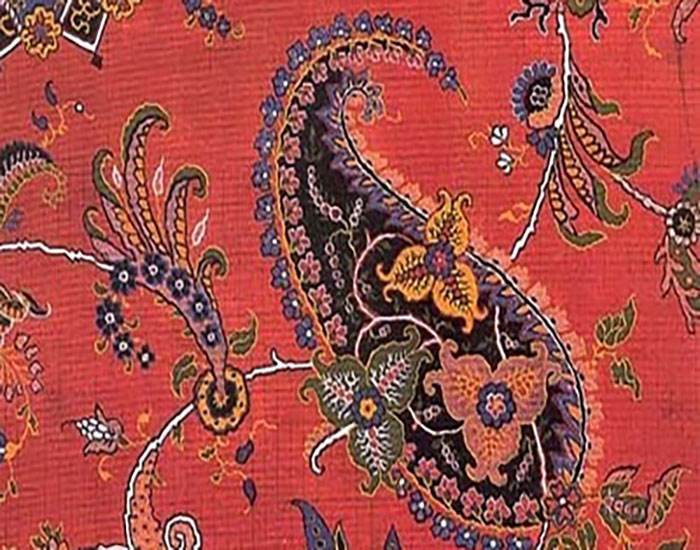
ARTICLE
Recognisable by its stylised almond-like shape, the badaam motif bears visual similarities to the Persian boteh, or buta, and the kairi, or kalka motif. Its name is derived from the Persian term badaam, meaning “almond”. The badaam motif has several variants and analogues in various textile traditions, the best-known among which is the Paisley motif. In India, the badaam motif is especially associated with the Kashmir Valley, where it developed in the sixteenth century with the arrival of the Mughals. It appears most commonly on the pashmina shawl as a part of the floral border design or as stand-alone outline motifs filled in with grouped flowers. The use of this motif has since extended beyond the traditional format of the Pashmina shawl and into other forms of printed, woven and embroidered fabric such as shawls and bed linen The motif entered the popular visual idiom with its adoption and subsequent adaptation by the hippie culture of the 1960s and 70s and, later, the cowboy culture in the American Southwest. This paved the way for its entry into contemporary formal wear produced by large European luxury fashion houses and the couture of high-fashion brands. In India, besides continuing to be seen in traditional Kashmiri shawls, the badaam motif is now also a prominent feature of the chikankari embroidery tradition of Uttar Pradesh.
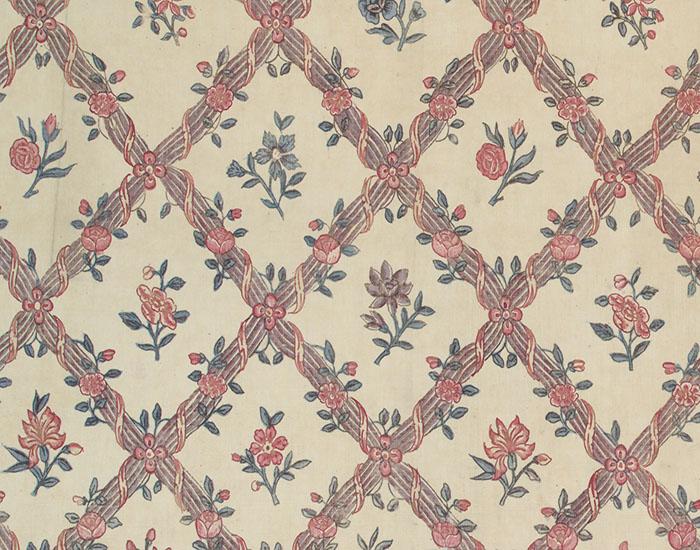
ARTICLE
A glazed cotton fabric with a plain or tabby weave, typically printed with floral and geometric patterns, chintz is believed to have originated in Golconda, Hyderabad. Along with calico, it was traded across the Indian Ocean as far back as the fifteenth century, usually as painted (kalamkari) or printed cloth. It gained popularity during the eighteenth and nineteenth centuries, when it began to be exported from India to North America and Europe. The word derives from the Hindi word chint, meaning “spotted.” Indian chintz is characterised by its printed or painted floral designs and vibrant, durable colours. This was primarily the result of natural dyes like chay and indigo, and the carefully guarded techniques employed by Indian dyers. The bright floral designs are considered to be the result of Mughal patronage as well as that of smaller sultanates in southern India, owing to similar designs in Mughal miniatures and architecture. Alternately, textiles for the European market were characterised by a light background featuring intricate floral imagery or larger, asymmetrical patterns and narrative scenes. A popular motif among British consumers was the Tree of Life, which was frequently depicted with deep red flowers characteristic of Indian chintz. The Netherlands, Britain and France were early manufacturers of imitation chintz in the late seventeenth century, often using plain cotton cloth imported by the Dutch East India Company. The fabric was exported to North America and Europe as well as Portuguese colonies such as Brazil and the Philippines. The Company dealt in Guinea cloth (a simple, striped cotton cloth) in and around present-day Indonesia through pre-existing trade routes between southern India and South East Asia, while exporting the more expensive chintz cloth to the Netherlands for sale in Europe. Chintz was either printed or painted, with the former being done at workshops along the western coast of India, whereas the painting tradition was particular to towns such as Masulipatnam (now Machilipatnam) on the south-eastern coast. Printing was the faster method and allowed for mass production even before British control over the industry. The production of Indian chintz involved covering the cloth in resin, which helped confine the mordant to certain areas of the cloth while also brightening the colours. The resin would later be washed off before the cloth was printed or dyed, making this technique unique to Indian chintz and differentiating it from imitation chintz produced by early European manufacturers; since resin alum had to be imported to Europe at high prices, the cotton cloth printed or dyed in Europe had duller, less defined colours. After being washed, the cloth was printed using wooden blocks that had the pattern carved onto them. The block was coated evenly with dye and pressed on the fabric, with a different block used for each colour and outline. Chintz is used extensively in upholstery and clothing. In Europe, until the nineteenth century, imported Indian chintz was the preferred cloth to make curtains, upholstery and, to a lesser extent, dresses. Some scholars believe that chintz began to be used for garments when maids were given old or damaged household textiles, which they would fashion into dresses. As chintz dresses became more fashionable, manufacturers began to sell the dull, heavier cloth for household use and a lighter, more glazed cloth to serve as clothing. By the early nineteenth century, chintz printing and glazing were being produced in Europe with the aid of synthetic dyes, specialised machinery and systems of mass production. Owing to the ban on imported Indian cotton, cheaper British cotton began to outnumber block-printed textiles from India, and Indian exports of the fabric became limited to a small number of painted chintzes from the Coromandel coast. Today, most chintz fabrics are produced through mechanised printing, which became the norm from the late nineteenth century onwards.
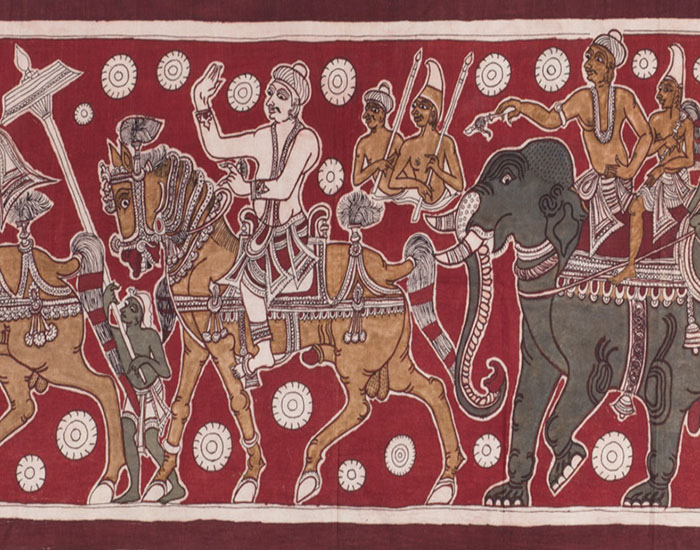
ARTICLE
A textile tradition where cotton textiles are traditionally hand-painted with pictorial narratives through a bamboo pen known as kalam, kalamkari emerged across the Coromandel coast in southern India and the state of Andhra Pradesh has long been considered its focal centre. Concentrated largely around the town of Srikalahasti, kalamkari’s other major centres of production include Machilipatnam (formerly Masulipatnam) and Madurai. It was originally referred to as vraata pani, which stands for writing (vraata) work (pani) in Telugu and during the reign of the Qutub Shahi dynasty in the sixteenth century, it was renamed kalamkari. While the exact point of origin for kalamkari remains unknown, the oldest surviving samples of the craft are dated from the fifteenth and sixteenth centuries. These samples were made as trade fabrics, to be exported to Southeast Asia, implying that kalamkari must have enjoyed sustained popularity in the region, pre-dating these samples. Kalamkari consists of twenty-three steps including treating the fabric by bleaching it and then softening it; sun-drying; preparing natural dyes; hand-painting; air drying; washing; and finishing. Commonly, cotton is used which is then treated with a solution of cow dung and bleach casting the fabric in an off-white colour. This is followed by the immersion of fabric in a mixture of buffalo milk and myrobalans so that it absorbs and retains the colour of dyes and paints without smudging. The fabric is then rinsed twenty times and dried under the sun before it gets ready to be painted over. When ready for painting, the artists sketch out their drawings and later fill them in with colours. Kalamkari features drawings rendered with a strong black outline and the use of naturally extracted colours; black was made by mixing jaggery and iron filings with water, red from the bark of madder or alizarin, blue from indigo, mustard by boiling pomegranate peels and green by combining yellow and blue colours. The painted kalamkari textiles were initially associated with temple worship as they were used as visual companions in both religious and secular contexts; they were used as hangings and canopies commissioned by Hindu temples, monasteries (maths) and by individuals. For the markets and court, kalamakari was used to produce textiles with secular narratives. The layout of the textiles was largely influenced by local traditions of mural painting as well as architectural forms such as lobed arches and pillars, trees and shrubs, which were used as framing devices. Themes depicted in the textile included scenes from Puranas and epics such as Mahabharata and Ramayana, with the latter enjoying a notable popularity. Other scenic depictions common to kalamkari were sacred sites of the region, such as the Kallalagar temple, Alagar Koyil and the Sriranganatha temple, Srirangam island. Additionally, Telugu epics, such as Katamaraju Katha, as well as biblical themes, were illustrated. The major centres of kalamkari production have their own thematic and stylistic peculiarities. In Machilipatnam, kalamkari was used to produce canopies with mythological scenes for Hindu clients, prayer carpets for Muslims, tentage with floral designs for the royal courts, as well as yardage of chintz to be imported to the European markets. From the middle of the nineteenth century, the city saw a flourishing printing and dyeing industry which dwindled in the twentieth century. Madurai was particularly famous for its fine red dye, which had a distinctly deep colour. The kalamkari here was produced on coarse cloth that was stained and dyed in only two colours – red and black. At Srikalahasti, which is a temple town located close to Tirupati, the craft practice remains active to date and it is probable that the history of kalamkari work in the city dates further back than the fifteenth–sixteenth century, but due to the corrosive nature of the textile and lack of written records, there are no ways to qualify the claim. The local zamindars (landlords) patronised the craft, most of which was carried out to make temple cloth. By the 1930s and 40s, with the independence of India and ousting of the zamindari system, the patronage tapered off. However, it was revived by the All India Handicrafts Board, which inaugurated a production-cum-training centre at Panagal, on the outskirts of Srikalahasti. The Weavers’ Service Centre also promoted and offered commissions and training to the artisans. Presently, kalamkari is predominantly secular in nature and caters to Indian and foreign markets with fabric for apparel and home linens such as curtains and bedspreads. In catering to these markets, the textile has witnessed a transformation, one that began with the trading textiles from Machilipatnam to European and Southeast Asian markets itself, wherein floral motifs were integrated instead of pictorial narratives and block-printing was employed for faster production becoming integral to kalamkari products especially when mass-produced. In 2006, Srikalahasti kalamkari registered a Geographical Indication (GI) tag, and Machilipatnam kalamkari did so in 2009.

ARTICLE
A popular motif used in textile design, in the shape of a curvilinear almond, the paisley motif’s popularity was facilitated by the trade interests of the British East India Company. The motif travelled around, especially due to its presence in Kashmiri shawls which were incorporated into European fashion of the time. Paisley was either woven into the shawls using the kani twill-weave or embroidered using sozni and amli styles. In its formative presence, the motif is found in kani shawls of Kashmir, bearing distinctive patterns associated with the Mughals was called the boteh which symbolised organic forms of flowers and leaves. Under the Afghans in Kashmir, the boteh became more stylised and abstract and came to be portrayed in a cone-like shape where the bouquet transformed into non-descript foliage; the enclosed curvilinear walls around the shape appeared during this period. In the period of Sikh rule that followed, certain elements of the boteh were developed further, such as the aigrette, the serrated leaf, the hooked vine and medallious, concentric cones. Developed alongside the principal weaving method of the period –tapestry shawl, the motif’s composition changed as the boteh was hollowed out. It also became detached from the dominant ground design of the fabric as a wide range of images and motifs were incorporated. In Europe, the design went through another transformation as the hollow of the boteh came to be filled in with intricately stylised floral compositions. The earliest iterations of manufactured Kashmiri shawls came from Edinburgh, Scotland which was soon eclipsed by another Scottish town, Paisley, hence giving it its popular name. It was also the first town to successfully adopt the Jacquard loom in production, which allowed an intricate pattern while easing the weaver’s task. With its integration into European fashion and industry, especially in Great Britain and France, the paisley motif was not only used on other garments besides the shawl, but also came to be painted and printed. The motif drew on more design references from Parisian design books from the 1840s than it did from the designs of the Kashmiri shawls. Through the nineteenth and early twentieth century, it came to be printed on dresses, coats, ties, wallpapers, bedspreads and so on. Additionally, during the 1960s, the fashion movement now termed as “Peacock Revolution” saw menswear become more flamboyant, employing the paisley motif. Today, the paisley remains one of the dominant motifs used in garments, decorative textiles and textile arts. It is difficult to pin down a source of origin for the boteh but the trajectory of its transformation from boteh to paisley records a significant episode in textile design history and qualifies its ubiquity.

ARTICLE
Also known as Gyan Chaupar, Moksha Patam is a board game dating back to mediaeval India. It was traditionally played on a board made of cloth, featuring a series of squares, snakes and ladders. Some more elaborate boards included additional imagery, such as portraits or decorative borders. The origins of Moksha Patam remain a matter of debate, with some scholars attributing its invention to Dnyaneshwar, a thirteenth-century Marathi saint, while others interpret a passage from the tenth-century text Rishabh Panchasika as an even earlier reference to the game. The oldest surviving example of the game is from seventeenth-century Mewar. The gameplay of Moksha Patam was as follows: each player has a token and moves between numbered squares from the bottom to the top of the board, according to the roll of the dice. The board contains images of snakes and ladders, which function as conduits between squares on different vertical levels: if a token lands on a box at the head of a snake, it must immediately descend to the box containing the snake’s tail, and if it lands at the foot of a ladder, it may ascend to the topmost rung. The objective of the game is to reach the last box at the top and exit the game. In addition to being a form of recreation, the traditional Moksha Patam had a spiritual and didactic purpose. The last square of the game represented the attainment of moksha or release from the cycle of death and rebirth. The snakes and ladders on the board were meant to function as karmic devices, either thwarting or aiding a player’s efforts to reach moksha. To emphasise this, the squares from which the tokens either ascended or descended were labelled with names of various virtues or flaws. The positive attributes listed were dependability, asceticism, faithfulness, generosity and knowledge, while the negative attributes and crimes were rebelliousness, vanity, crudeness, theft, lust, debt and violence, to name a few. The game, as a whole, was meant to educate players on which personality traits were morally desirable and which were repugnant. The number of snakes was typically much larger than that of ladders — often twice as many — to underscore the difficulty of the path to enlightenment. In the 1890s, Moksha Patam made its way to Britain, where it eventually acquired the name Snakes and Ladders. While the British version retained some emphasis on ideas of morality – with illustrations of good and bad deeds on the squares that bookended each ladder or snake – it did away with the spiritual connotations and nuances of the Indian version. Later, in 1943, the game was introduced in the USA by Milton Bradley under the name Chutes and Ladders, as the company felt that the image of snakes would scare children away. Other versions of the game include Leiterspiel, a German version that used pictures of circus animals. Although the modern version of the board has been standardised as a hundred squares arranged in a rectangle, the mediaeval Moksha Patam varied widely in design, containing anywhere between 72 to 124 squares, arranged in a cross or in a custom shape that followed a theme. For instance, in a Mewari board that is housed in the National Museum, the playing area is shaped like a Rajput fort. Some versions of Moksha Patam made for Hindus featured Vaishnavite imagery and labelled the last square as Vaikuntha, or the abode of Vishnu. Gyan Chaupar, as the Jains called Moksha Patam, was especially popular during the period of Paryushan, when devotees fasted and played the game as a form of spiritual engagement. Some Gyan Chaupar designs depicted the playing area surrounded by an image of the Cosmic Being or Lok Purusha. To a lesser extent, versions of Moksha Patam were also made using Islamic or Sufi references, with the last square denoting the moment of merging with God. Moksha Patam boards from mediaeval India are housed in the collections of the National Museum, New Delhi; the Rajasthan Oriental Research Institute, Jodhpur; the Calico Museum of Textiles, Ahmedabad; and the British Library, London, UK.

ARTICLE
Meant to be played by two or four people, Pachisi is a cross and circle board game that originated in India. While the game is traditionally played on a cross-shaped cloth, any surface may be used, including a drawing or engraving on the floor. The origins of Pachisi are disputed, with some scholars speculating that a version of the game was played in the pivotal gambling scene in the Mahabharata, or was being played by Shiva and Parvati in a relief at Cave 29, Ellora. However, in the absence of any description of a board or gameplay, there is no evidence that these games were Pachisi and may have simply been bets made on rolls of the dice. The oldest evidence of Pachisi itself are the Mughal-built Pachisi courts at Agra and Fatehpur Sikri, which date back to the sixteenth century. Here, the Mughal emperor Akbar and his noblemen would play the game at a grand scale, with courtesans in colourful costumes taking on the role of tokens. Details of these games and the gameplay have been recorded by his biographer, Abu’l Fazl, who notes that the game was already popular at the time, implying that Pachisi substantially pre-date Mughal rule. Further evidence of the game exists in the form of surviving boards and tokens, as well as paintings from Mughal and Rajput-era manuscripts, which depict people playing the game. Most cross and circle games use a board made of a circle enclosing a cross, usually in the form of paths. This can also mean that the tokens used by players follow a circular movement along the central cross without the presence of an actual circle, as is the case with Pachisi. The board for Pachisi consists of four pathways, each of which is eight tiles long and three wide. All four pathways meet in a central area known as charkoni. Some tiles, usually three or four per arm of the cross, are marked with an “X” and are called castles. They are arranged such that there are always twenty-five paces between the first castle on one arm and the last castle on the next arm, hence the name pachisi, which means twenty five in Hindi and Urdu. In the traditional gameplay, four players were divided into teams of two, with the players sitting across from each other being part of the same team. Each player had four tokens, all of which were placed in the charkoni. Players took turns casting the cowrie shells, and the one with the highest roll made the first move of the game, followed by the other in a counterclockwise order. Once the game began, each player moved one of their tokens according to the roll of the cowrie shells, first going down the middle column of the arm that faced the player, then up and down the outer paths of each of the remaining arms in a counterclockwise progression, with the last path being the same as the first. The first team to return all their tokens to the charkoni after completing a full circuit of the board won the game. Capturing and blocking tokens was also a major component of the gameplay. An opponent’s token was considered captured when a player landed on the same square as that token. Captured tokens were sent back to the charkoni and had to begin the game anew. In some versions of the game, a token could only finish at the charkoni if it has captured at least one enemy token during its time on the board. Another Indian game that is similar to, and possibly also contemporaneous with Pachisi, is Chaupar (not to be confused with Gyan Chaupar) which uses stick dice in place of the cowrie shells used in Pachisi. Early European variations of Pachisi include Ludo, a British game invented in the late nineteenth century, and Mensch ärgere Dich nich, an early twentieth-century German game. Later American adaptations of the game include Sorry! and Parcheesi. Today, Ludo is the most commonly played version of Pachisi in India, although the original version is still played in some parts. Pachisi boards and tokens from various periods of Indian history can be found in the collections of the National Museum, New Delhi; The British Museum and the Victoria and Albert Museum, London, UK; the Swiss Museum of Games; the Children's Museum of Indianapolis, USA; and in the Nasser D. Khalili Collection of Islamic Art.
Early Indian photographers were usually hobbyists from wealthy families, as they had access to the equipment and leisure time needed to practice the craft. Typically male — with rare exceptions like Annapurna Dutta — these photographers imitated British and European practitioners in their methods and choice of subjects. This included monuments, landscapes and portraits. The latter included commissioned portraits of royalty or wealthy clients, and anthropological documentation of Indians from non-dominant caste or indigenous groups. This exchange between Western and Indian photographers occurred mainly through journals, exhibitions and amateur photographic societies in Bombay, Madras and Calcutta (now Mumbai, Chennai and Kolkata, respectively).
By the twentieth century, cameras were affordable (while still being a major investment) and portable, making it feasible to learn and apply photography as a skill. Photographers and photojournalists, such as Narayan Virkar, Homai Vyarawalla and Kulwant Roy, were more conscious of the socio-political applications of the camera than their nineteenth-century predecessors. They documented the freedom movement, took portraits of prominent leaders, and captured instances of colonial suppression. Others, like AL Syed, Mitter Bedi and Madan Mahatta, worked in homegrown industries that had embraced photography, such as fine art, cinema, advertising and tourism.
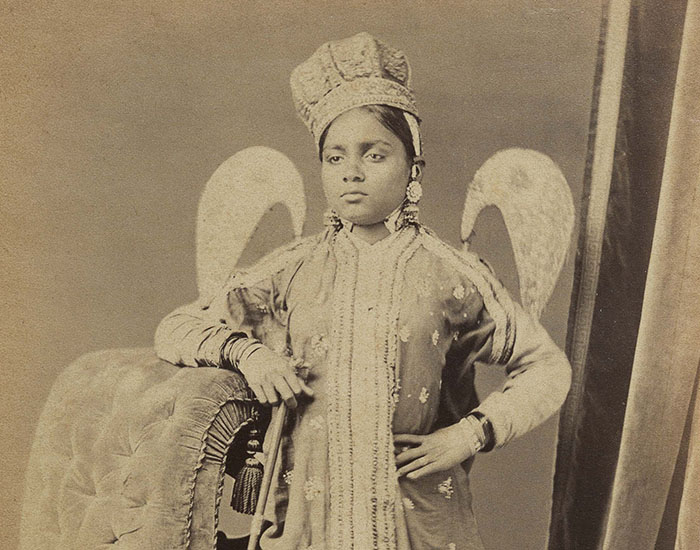
ARTICLE
A professional photographer and engineer from Lucknow, present-day Uttar Pradesh, Darogah Abbas Ali is best known for his photographic albums featuring cultural sites and architectural views of the city. Although his books are well documented and discussed among scholars of Indian photography, little is known about the photographer’s own life. Darogah Abbas Ali attended the Thomason Civil Engineering College (which later became the Indian Institute of Technology, Roorkee), after which he worked as assistant municipal engineer for the British government in Lucknow. He took up photography after his retirement in the 1860s, eventually compiling and publishing three albums of albumen prints: The Lucknow Album and The Beauties of Lucknow were both published in Calcutta in 1874 and The Rajas and Taaluqdars of Oudh was published in Allahabad in 1880. Of these, the first and last are very clearly signed and authored by Abbas Ali, while the second is unsigned, but was attributed to him by a later photographer, PC Mukherjee. The Lucknow Album was intended as a guide for European tourists visiting the city and, in its sequence of photographs, follows the path of the East India Company troops who recaptured Lucknow during the Indian Mutiny. It also contains a detailed plan of the city drafted by Abbas Ali himself — evidence of his calibre as a municipal engineer. The Beauties of Lucknow documents courtesans and performer-entertainers working in Lucknow as living reminders of a much-feted royal court (of the former Kingdom of Oudh before its annexation in 1856) where they were valued as custodians of culture and wielded much social influence. The Rajas and Taaluqdars of Oudh consists of 342 carte de visite albumen prints of landlords and other members of Lucknow’s elite who remained loyal to the British during the Uprising. In the portraits of women, their figures are replaced entirely by medallions inscribed with the word pardanashin (woman in purdah) as a way of accommodating the Muslim tradition of veiled anonymity. All three albums have detailed textual descriptions of the photographs; the text being printed in English, as in The Lucknow Album — due to its intended British readership — or English and Urdu, as in the case of the others. The latter editions also carry stylistic and compositional traces of the Mughal muraqqa tradition of illustrated albums, as a tribute to Abbas Ali’s cultural lineage. The production of these albums, not inexpensive enterprises, was funded by the patronage of Sir George Couper, the Lieutenant Governor of the North-West Frontier Province and, after 1856, the Chief Commissioner of Oudh. Abbas Ali is thought to have developed a rapport with Couper during his employment with the government, which aided him greatly in his later photographic endeavours. The success of his practice has also been attributed to the goodwill he cultivated with the Company and its officials during and after his tenure. The last of his albums was published in 1880, after which there are no records of any active photographic or publishing activity. It is possible that his patronage began to wane, following the departure of Couper after the end of his service in 1882, or that colonial attention began to shift away from Lucknow after the dust of Mutiny settled. There is no information presently available, however, to ascertain the course of Abbas Ali’s life following the publishing of his final album.
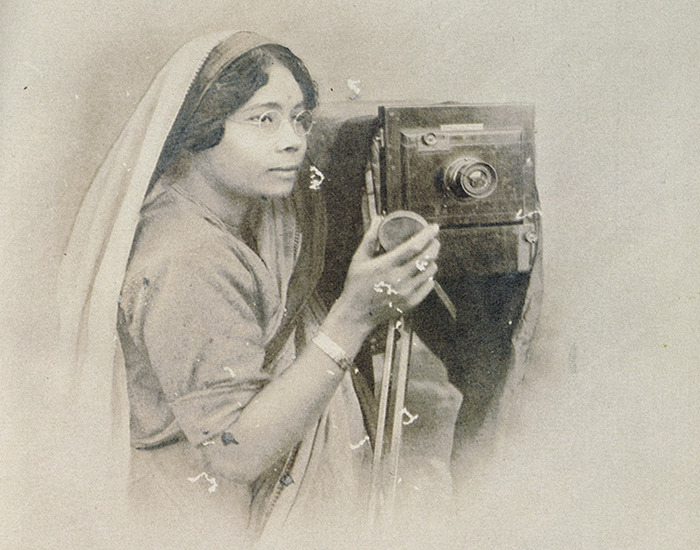
ARTICLE
Born in 1894 in undivided Bengal, Annapurna Dutta was one of the first professional female photographers at a time when photography was largely a male-dominated profession. She is known for her portraits of families in the domestic space, as well as notable figures, such as Sarojini Naidu. Her husband, Upendranath Dutta, though a lawyer by profession, was also an amateur photographer himself. Dutta came to prominence as a photographer in the 1920s, producing a bulk of her work in the ’30s and ’40s. Since it was uncommon for women of the era to work outside the home, Dutta did not operate out of a studio; instead, she visited wealthy Indian families for commissioned portraits, and developed and printed the photographs herself in her home studio. Her portraits depicted subjects in their homes, usually wearing traditional clothing and surrounded by their families and possessions. Dutta frequently visited and photographed the Muslim elite, including the politician and Bengal’s erstwhile premier Hassan Suhrawardy, the poet Jasimuddin and the singer Abbas Uddin Ahmed. Interestingly, despite her being a female visitor to their households, the Muslim women in her photographs are shown in purdah, possibly because the photographs might later be seen by men. Her most well-known image is perhaps a self-portrait in which she stands beside her plate camera in a three-quarter profile, holding the lens cap while looking beyond the frame. In the image, she wears the clothing and jewellery typical of a married woman, suggesting that domestic life was still expected to be represented traditionally, even as more women became involved in newer practices such as photography. Today, this photograph, along with other glass plate negatives made by her, are part of a collection held by her son Amarendranath Dutta. Annapurna Dutta passed away in 1976, at the age of eighty-two.
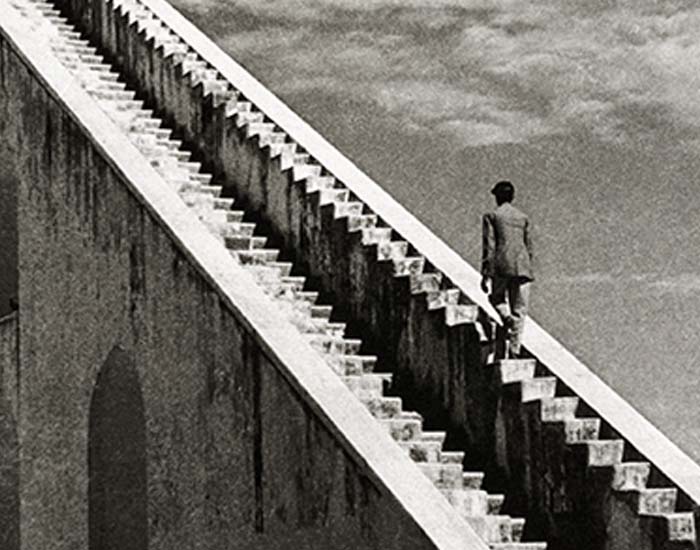
ARTICLE
A twentieth-century photographer known for his images of rural India and life in the princely states, Abid Miyah Lal Miyah Syed, commonly known as AL Syed, captured dramatically lit black-and-white images of pre- and post-Independence India. Active from the early 1920s, Syed was additionally interested in desert landscapes and portraiture, and also created stills for a number of Bollywood films, including Mughal-e-Azam (1960). Syed was born in Varnavada, Gujarat. His father, Lal Miyah Syed, worked as a physician to the Nawab of Palanpur, Zobdat al-Molk Shir Mohammad Khan. AL Syed’s older brother, Khanji Mian Lal Mian Syed (KL Syed), worked as the Nawab’s official photographer and is renowned for his image of the last Nawab of Palanpur, Taley Mohammed Khan Bahadur, made in 1930. Syed began assisting his brother from 1919, but his earliest known photograph is a 1923 image of the sunset at Chowpatty Beach in Bombay (now Mumbai), made on a school trip. The photograph won him the first prize in a contest held by the Illustrated Weekly of India, where his work continued to be featured for most of his career. From 1925 until 1940, Syed published a monthly column in the Gujarati magazine Kumar, featuring his photographs along with corresponding written pieces. He continued working for the Palanpur royal court alongside his brother, expanding the scope of his work to cater to other Indian kingdoms across present-day Gujarat and Rajasthan, such as Baroda, Saurashtra, Bikaner, Kotah, Jodhpur, Udaipur, Bundi, Dungarpur and Narisinghgarh, as well as much further north in Kashmir. He also became popular with the various royal families and established a personal connection with them, including the Nawab of Palanpur, the Maharana of Udaipur and Gayatri Devi of Jaipur. Syed accompanied the Nawab of Palanpur to Bombay in 1946 and continued living in the city until 1975. During and after this period, he travelled extensively to fulfill commissions from royal families while also making photographs independently. These images, made while travelling through rural India and developed in photographic studios across the country, make up the bulk of Syed’s surviving work and are the reason he is best remembered as a Pictorialist photographer. These images place him as one of the earliest practitioners in India to consciously create images with a commitment to this stylistic approach, often capturing his subjects from a lower angle and creating high contrasts between light and shadow, adding to the sombre tone of his black-and-white images. His photographs have been exhibited across the world. He gained recognition internationally with a 1934 photograph titled “Traveller of the East,” published as part of Odhams Press’ compilation of the World’s Best Photographs. The photograph was displayed in over forty exhibitions, including a solo show in New Delhi held as part of the sixth Convention of the Federation of Indian Photography. His photograph “Difficult Ascent” won the 1977 Asia Pacific Cultural Center for the UNESCO (ACCU) Photo Contest, Tokyo. In 1980, he inaugurated an exhibition held by the Illustrated Weekly of India in honour of the magazine’s centennial. In 1983, he was granted an Honorary Fellowship by the India International Photographic Council in recognition of his long career in photography. AL Syed was diagnosed with Parkinson’s disease in 1971 but continued to practise photography until his death in 1991.
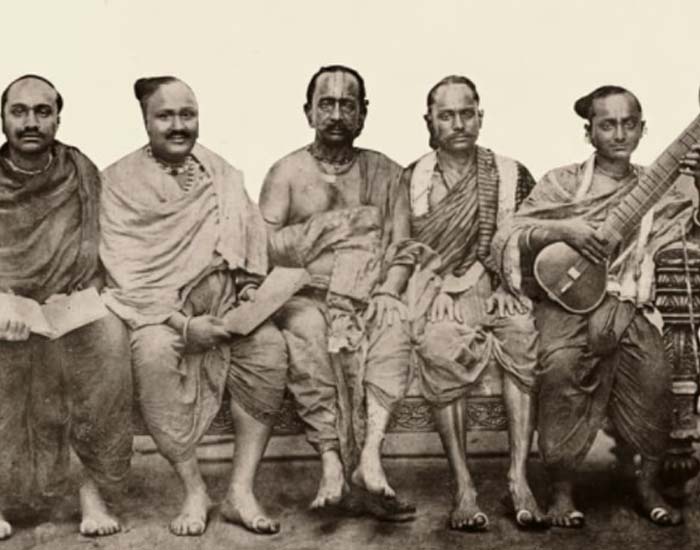
ARTICLE
A nineteenth-century photographer, doctor and academic, Narayan Daji was one of the few Indian members of the influential Photographic Society of Bombay and also one of its earliest council members (1857–61). A largely self-taught photographer, he achieved distinction through the knowledge and proficiency he demonstrated and the social privileges he had access to as a well-known public figure, medical practitioner and academic in Bombay (now Mumbai). Though known by many for his philanthropy, scholarship and passion for teaching, he is most commonly associated with early photography in and of Bombay and its surroundings. Daji’s work, which spanned landscape and architectural views and ethnographic studies and portraits, was exhibited at the Photographic Society of Bombay, the Bengal Photographic Society and featured in the ethnographic album The Oriental Races and Tribes, Residents and Visitors of Bombay (1863). Daji was born in a village near the present-day Maharashtra–Goa border. Although he came from a humble background — his father Vitthal Daji was a poet and painter of figurines — he, like his brother Bhau Daji Lad, received his education at Elphinstone College and then Grant Medical College, Bombay, from which he graduated in 1852. Although there is no published information on how he was first introduced to photography, some scholars believe that he may have taken an interest in it while studying practical chemistry, at which he excelled. He was also likely guided and influenced in part by his brother’s more fleeting involvement in photography. Daji applied for the position of lecturer for Elphinstone College’s first course on photography in 1855, citing his many awards and a glowing recommendation, but was ultimately turned down in favour of photography studio-owner and secretary of the Society WHS Crawford. Already comfortable with the waxed paper process, he submitted his photographs to the Bombay Photographic Society, of which two, including one of a Rajput man from Kathiawar smoking a hookah, were displayed at its first annual exhibition. Over the next year, he shared more images, this time of architectural views of the city, with the Society, which were well-received, leading to his formal induction in 1856. For the Society’s annual exhibition the following year, he contributed over two hundred photographs, mostly of architectural studies and landscape, attracting high praise from viewers. One newspaper even remarked ironically in their review of the exhibition that he surpassed Crawford in his photographic ability. That year, thirty one of his photographs — mostly ethnographic studies that comprised images of snake charmers, toddy tappers, ryots (farmers), Bhils, as well as group and individual portraits — were featured at the annual exhibition of the Bengal Photographic Society. From around 1858 and over the next decade, he operated his own studio at Rampart Row (now known as K. Dubash Marg), an emerging hub for independent photographic studios, making photographs using waxed paper negatives as well as the wet collodion process. Throughout his practice, his photographic direction — from landscapes and monuments in the 1850s to ethnographic portraiture from the 1860s — were aligned with or anticipated the British government’s interests in and imperatives for photographic documentation. As Daji’s work was not produced under financial or colonial compulsions, its success has been attributed to a combination of his social position and the commercially and visually fertile location of his practice. While the culturally diverse and cosmopolitan character of Bombay lent itself well to his ethnographic projects, his social stature and worldview, which he shared with the British elite, brought him closer to the elitist preoccupation with the practicalities and colonially driven objectives of photography. The resulting distance created between his lens and his subjects, and the attendant objectivity, a benchmark of colonial photography, ensured his success among his peers. Apart from photography, Daji was also involved in political and civic life, being appointed Sheriff of Bombay in 1856. As a medical practitioner, he ran a dispensary at Nagdevi where he, later joined by his brother, provided free service to the less privileged. He was also a professor of botany and pharmacology at his alma mater, Grant Medical College, during which time he published several texts on chemicals and dyes. Daji’s photographs were displayed publicly for the first time at the Bhau Daji Lad Museum, Mumbai, as part of the exhibition The Artful Pose: Early Studio Photography in Mumbai, 1855-1940 (2010). Many of his surviving photographs and negatives are, at the time of writing, part of the Alkazi Collection of Photography. Daji passed away in 1875 from bilious remittent fever.
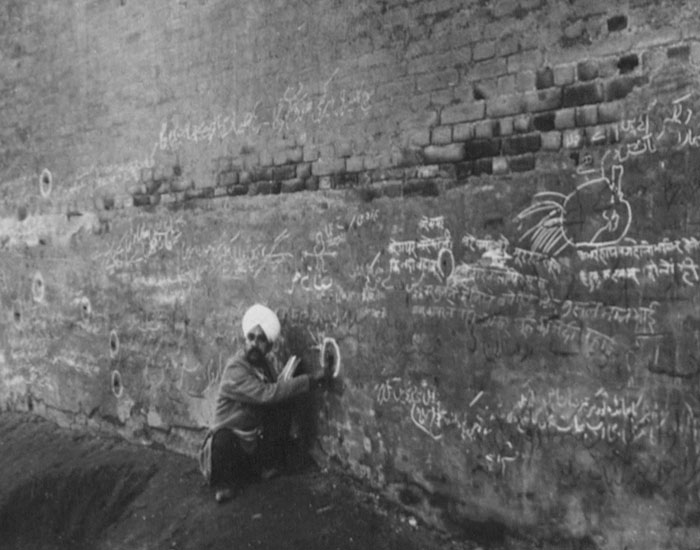
ARTICLE
An Indian portrait photographer and photojournalist who was active in the early twentieth century, Narayan Vinayak Virkar is best known for documenting the aftermath of the 1919 Jallianwala Bagh massacre by General Dyer, and also for his portraits of Indian nationalist leaders. Virkar was born at Ratnagiri, present-day Maharashtra. He studied photography under the artist, nationalist activist and Vedic scholar Shripad Damodar Satwalekar in Lahore. He then worked as an X-ray photographer aboard the hospital ship, HS Madras. Shortly after this, he set up his own studio in Girgaum road in Bombay (now Mumbai) and later in Nashik as well. As for other studio owners at the time, his clients were mostly local elites looking for portraits of themselves and their families. In addition to catering to this demand, Virkar, a staunch nationalist, also took portraits of leaders involved in the Indian freedom struggle such as Mahatma Gandhi, Chittaranjan Das, Subhas Chandra Bose and Bal Gangadhar Tilak. These portraits were usually set up in the aspirational aesthetic of European interiors, along with stacks of books, armchairs, and Greco-Roman art, but they also contained revealingly nationalist elements, as seen in Tilak’s portrait in which the stack of books beside him includes a copy of Kesari, his anti-colonial publication. Patronage from nationalist leaders was, apart from being important to photographers sympathetic to the cause, a useful market niche to occupy, even if in secret. Among other projects that were not linked to him at the time, Virkar was also tasked with documenting multiple meetings of the Indian National Congress (INC). He is best remembered for capturing photographs of the aftermath of the British-led massacre at Jallianwala Bagh in 1919 in Amritsar, a flashpoint of the freedom struggle. Virkar arrived on the scene a few days after the incident, and photographed the bullet holes in the walls, took portraits of the injured and generally documented all traces of the destruction and violence that had occurred there. The aim was to preserve evidence of the atrocity and share it with the public, a practice far removed from his usual work as a portrait photographer. The following year the INC published two of Virkar’s photographs in their Punjab Inquiry Report without revealing his identity. Virkar’s photographs and negatives, both from his commercial studio practice as well as his documentation of the Jallianwala Bagh massacre, are housed at the Nehru Memorial Museum Library in New Delhi.
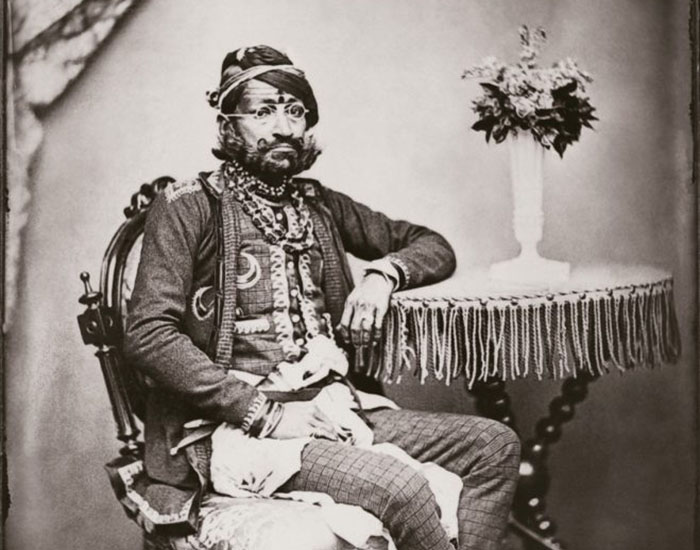
ARTICLE
Known for his photographic practice and pro-reform state policies, Sawai Ram Singh II was the Maharaja of Jaipur, reigning from 1851 until his death in 1880. Informally known as the “photographer prince of India,” he was an avid photographer, creating over six thousand individual photographs and nearly two thousand glass plate negatives throughout his life. He was also a lifelong member of the Bengal Photographic Society. Ram Singh was born to Maharaja Jai Singh III of Jaipur. After his father’s death in 1835, he was appointed the successor, ruling through regency until 1851, when he formally ascended the throne as the Maharaja of Jaipur. He is believed to have learned photography from the British photographer T Murray, who visited Jaipur several times and was later appointed court photographer from approximately 1867–70. His passion for photography is evident from the personal studio at his court, called the photukhana or tasveer khana (meaning “the picture department”), where he housed his extensive collection of cameras and processing equipment and developed his images. Ram Singh primarily made portraits of himself as well as Indian and European royalty visiting Jaipur. He is also known for his photographs of landscapes and architectural views across the country, including Agra, Varanasi, Lucknow and Calcutta, always carrying his equipment with him during his travels. His photographs of foreign men and women follow the conventional portrait format, but with the subjects posed against backgrounds he painted himself. He would also experiment with the photographs, often superimposing the subjects’ faces on different bodies. Ram Singh is renowned for having photographed the women who resided in the zenana of the royal household, at a time when the women lived almost entirely out of public view and were rarely photographed. He used modes of representation similar to traditional Victorian portraiture. Some of these photographs show the women staring directly into the camera, with one image showing a woman dressed in men’s clothes and carrying traditionally male accessories such as a sword. He also occasionally showed his photographs to visitors, possibly with the aim of demystifying the zenanas. It is important to note that while his transgressions across the social divisions of his court were largely driven by aesthetic curiosity, the subjects were denied agency over their representation in the photographs, despite their royal status, and their names were never included in the final images. Most of what is known of the Maharaja’s photographic practices is from a journal he maintained in 1870, detailing his everyday activities, including information about the subjects he photographed, his process of developing prints from glass negatives and the problems he faced during the photographic process. He also collected prints from other photographers such as Samuel Bourne which, along with his own, he preserved in albums. He also initiated a project, along with Thomas Holbein Hendley, amassing a collection of arts and crafts in India that eventually resulted in the Jeypore Exhibition of 1883, and later contributed to the collection at the Albert Hall Museum, Jaipur. A collection of his photographs is currently on display at the Sawai Man Singh II Museum, Jaipur. The Maharaja died in Jaipur in 1880.
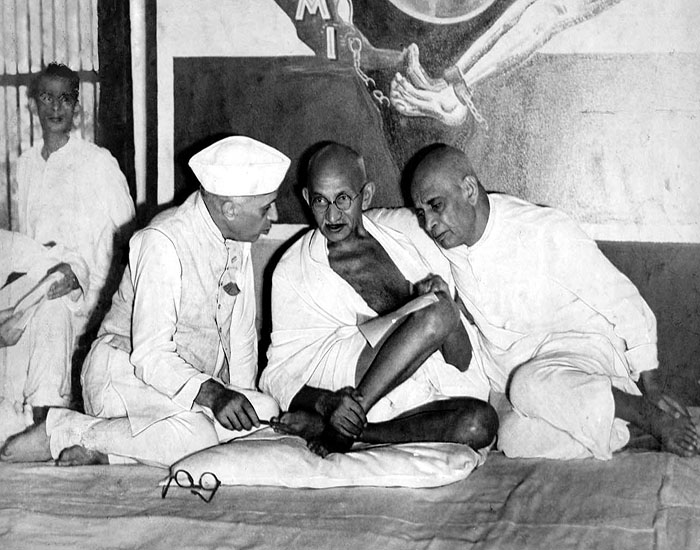
ARTICLE
A pioneering Indian photojournalist photographing for much of the twentieth century, Kulwant Roy was behind some of the most iconic images of the Indian freedom movement and the post-Independence decades. Although he fell into obscurity towards the end of his life, posthumous recognition of his work grew after a large number of his photographs and negatives resurfaced in 2008 and were subsequently archived by his legal heir, photographer and collector Aditya Arya. Roy was born in Bagli Kalan, Ludhiana, Punjab. He was introduced to photography by Raj Gopal, Arya’s great-granduncle, who ran the Gopal Chitter Kuteer Studio, Lahore. He began work as a photojournalist in the 1930s, trailing leaders of the Indian National Congress (INC) as they moved around the country for protests, marches, speeches and other activities aimed at garnering support for the freedom struggle. It is during this period that he did some of his most notable work, photographing prominent personalities such as Jawaharlal Nehru, Mahatma Gandhi and Muhammad Ali Jinnah. He used a Speed Graphic camera, which allowed him to immediately process individual exposures as opposed to full rolls and shoot at high shutter speeds to clearly capture even the briefest of moments. An image of Jinnah and Gandhi having a private argument is a part of the Hulton-Getty archives (better known through its online presence, Getty Images) but is not formally attributed to Roy, despite Arya having recovered the original negative in 2008. Photographs from this period often went unattributed as photojournalism was still in its nascent stage and photographers had not yet begun to seriously safeguard against future appropriation of their work. By the late 1940s, Roy had become more cautious in this regard, often stamping his name on the photographs he took. In 1941, he joined the Royal Indian Air Force, and was stationed in Quetta (now in Pakistan) to photograph the North-West Frontier Province from the air. Two years later, however, he was ousted from the Air Force for protesting its discriminatory rules against its Indian members. He then returned to Lahore and set up a photojournalism agency, Associated Press Photos. He soon shifted the agency office to Mori Gate, New Delhi, where others in the profession were based. He hired assistants at the studio and for his shoots, considerably speeding up the process of capturing, developing and printing photographs. He continued to document the freedom movement alongside his studio work, photographing key moments like the transfer of power from Lord Mountbatten to Nehru, and Nehru’s famous speech on the eve of Independence. He also established a rapport with several INC leaders, as there were few photojournalists at the time and the Congress was keen on presenting a positive image of the movement through his work. Throughout most of the 1940s, it was difficult to procure photographic film due to the disruptions and shortages caused by the Second World War, and the colonial government’s aggressive censorship of press coverage of the freedom movement and the Bengal Famine. However, Roy’s former colleagues from the Air Force occasionally supplied him with short rolls of large film, which he would cut into single pieces to fit his camera and shoot individual photographs, which is why many of the negatives in the collection bequeathed to Arya are not part of a roll. After Independence, Roy stayed back in New Delhi and continued running his agency. His most prominent project at this time was documenting the construction of the Bhakra Nangal dam in Himachal Pradesh, which became a symbol for a rapidly modernising India. Between 1958 and 1962, he travelled to over thirty countries, sustaining himself through the sale of his existing photographs as well as other commissions he received on the way. Notably, his work appeared in the German magazine Stern and in an exhibition comprised of photographers shortlisted for the World Press Photo Contest during this time. Over the next decade, Roy remained busy. He shot the Sino-Indian war of 1962 and the Indo-Pakistan war of 1965 from the frontlines. He also covered important diplomatic visits to India by foreign dignitaries, such as Jacqueline Kennedy’s trip to India in 1962. In the 1970s, he was diagnosed with leukemia. This, combined with the theft of the negatives of the photos from his world tour and the increasing difficulty of sustaining himself as an independent photojournalist, led to a steady decline in his practice and income between the 1970s and early 1980s. In 1984, soon after his last assignment — photographing the seventh conference of the Non-Aligned Movement at Vigyan Bhavan, New Delhi — Kulwant Roy passed away. Roy’s legacy was obscured for nearly thirty years between his death and the recovery of his negatives. Since then, Arya has archived all of his surviving images and incorporated them into the India Photo Archive Foundation. Three decades of his photography are featured in the book History in the Making: The Visual Archives of Kulwant Roy (2010), authored by Arya and Indivar Kamtekar. Notable posthumous exhibitions of his rediscovered work, also organised by Arya, were held at the Indira Gandhi National Centre for the Arts (IGNCA), New Delhi in 2008; as a part of the show Where Three Dreams Cross: 150 Years of Photography from India, Pakistan and Bangladesh at the Whitechapel Gallery, London, UK in 2011; and at the National Gallery of Modern Art (NGMA), New Delhi under the title The Visual Archives of Kulwant Roy (2012), and then again at the NGMA, Mumbai in 2014.
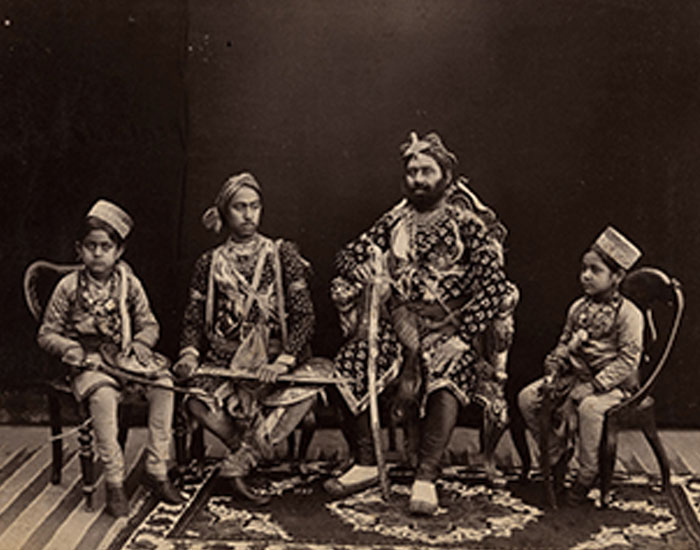
ARTICLE
A pioneering Indian photographer in British India, Lala Deen Dayal, also known as Raja Deen Dayal, was known for his architectural and landscape views of India, as well as those of the lives of the colonial and native elite in the country. Over the course of his career, Deen Dayal produced over thirty thousand glass plate negatives using the wet-collodion process. Born into a family of jewellers in Sardhana, Meerut, Deen Dayal trained at the Thomason College of Civil Engineering at Roorkee (now the Indian Institute of Technology). In 1866, he began his career as a surveyor and draughtsman in the Public Works Department, Indore, where he measured and documented the land through photographs. He began photographing infrastructural projects — primarily bridges, railway lines and other construction work — for the Central India Agency in the 1870s and subsequently found enthusiastic patrons, notably Maharaja Tukoji II of Indore and British Indian Army officer Henry Daly. Supported by Daly, Deen Dayal photographed then-Viceroy Lord Northbrook in 1874 as well as the Prince of Wales, during his visit to India in 1875–76. Later, he accompanied Daly as a photographer on his tour across Bundelkhand and subsequently, in 1882–83, travelled with Lepel Griffin of the Bengal Civil Service across central India, photographing temples, forts and palaces at Gwalior, Orchha, Khajuraho, Sanchi and Indore, among others; eighty-nine of these photographs were reproduced in Griffin’s book Famous Monuments of Central India (1886). By the mid-1880s, Deen Dayal had retired from government service to take a two-year furlough (1885–87) during which time he travelled to north India, documenting sites such as the Taj Mahal, and making photographs of visiting British dignitaries and their entourage. In 1885, Deen Dayal was appointed photographer to then-Viceroy of India, Lord Dufferin, followed by a Royal Warrant of Appointment as photographer to Queen Victoria in 1887. The same year, he was appointed court photographer to Mahboob Ali Khan, the sixth Nizam of Hyderabad, where he photographed the royal palace and estates, processions, hunting parties, as well as sites and monuments including temples, mosques and newer infrastructural projects such as bridges and streets. Deen Dayal compiled 110 of these photographs in an album titled Views of the HH the Nizam’s Dominion, Hyderabad Deccan (1888), copies of which the Nizam presented as gifts to visiting dignitaries. Individual photographs from the collection were also sold as prints and postcards, as well as engravings in British magazines. Consequently, in 1894, the Nizam officiated Deen Dayal’s position with a salary and the title of Raja Musavvir Jung Bahadur (meaning “Bold Warrior of Photography”). Deen Dayal’s studio portraits were known for their painted backdrops as well as conspicuous staging and alignment of human figures to create a marked distinction between the background and foreground. His work was also characterised by conspicuous staging and alignment of human figures to create a marked distinction between the background and foreground. His photographs were instrumental in serving the interests of both the colonial government and the princely states by reflecting the interactions between both groups. Alongside his appointments, Deen Dayal also established a franchise of commercial photography studios named Deen Dayal & Sons. The first studio was set up at Indore in the mid-1870s, the second at Secunderabad in 1886 and the third and largest in Bombay (now Mumbai) in 1894. He also opened a zenana studio in Secunderabad in 1892, which was run by photographer Mrs Kenny-Levick. In 1893, Deen Dayal was awarded a medal of excellence at the World Columbian Exposition, Chicago. His autobiography, A Short Account of My Photographic Career, was published in 1899. As of writing, his photographs are part of the collections of The Alkazi Collection of Photography; the Peabody Essex Museum; Robarts Library, Canada; University of Toronto, Canada; the Clark and Joan Worswick Collection, USA; and the J. Paul Getty Museum, USA. Deen Dayal died in 1905 in Bombay.
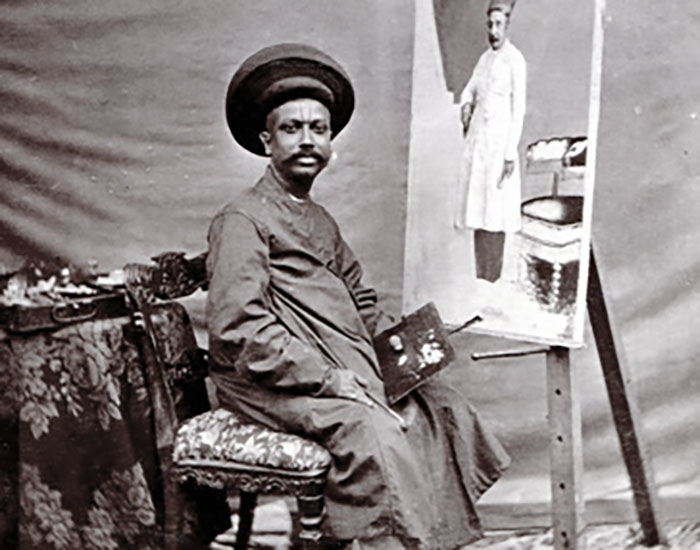
ARTICLE
One of India’s earliest commercial photographers who specialised in portraiture, Hurrychund Chintamon was based in Bombay (now Mumbai). He received his training at Elphinstone College in 1855 under WHS Crawford, a secretary of the Photographic Society of Bombay, where Chintamon also exhibited his work the following year. He subsequently set up his photography studio in the city, initially photographing members of local mercantile families and later expanding his clientele to aristocracy and important political, administrative and literary figures, including Jamsetjee Jejeebhoy and Manickjee Antarya. When Elphinstone introduced a course in photography in 1855, under instruction from the British East India Company, Chintamon was among the first batch of forty students to enroll. He graduated in 1856 with distinction, having twice earned the best photographs prize. The same year, he exhibited his photographs at the Bombay Photographic Society, along with others such as Narayan Daji, gaining the visibility he needed to operate as an independent professional. He also went on to produce a number of ethnographic images, some of which were displayed at the Exposition Universelle, or the Paris International Exposition, of 1867 for industrial, art and craft manufactures. His studio, Hurrychund & Co., which he set up at Rampart Row in 1858 flourished until 1881, when it ceased operations. The development of cost-effective processes such as wet collodion negatives and albumen prints, resulted in a greater demand of family or personal portraits among European residents and the affluent noble and mercantile classes of the local population. While running his studio, Chintamon recognised cost effective techniques, such as the wet collodion process, and also quickly adopted the newly introduced carte de visite format for making albumen-print portraits. The cartes de visite were convenient to mail, exchange and incorporate into albums (that were specially made), making them all the more popular and earning him a steady clientele among the local elite. It was, however, his photograph of Maharaja Malhar Rao of Baroda (now Vadodara) — who appointed him as his official photographer in the late 1960s— that gave his studio a significant boost. Accompanying the proliferation of independent photography studios in the mid-nineteenth century, was the development of a hybrid aesthetic, seen also in Chintamon’s work. He evolved a visual style that combined the Victorian iconographies of class and refinement with the Indian symbols of ethnicity, caste and status. In staging his sitters, he used the popular European conventions of painted backdrops as well as props such as printed carpets and flower vases. The sitters were often posed or arranged to suggest an air of casualness or informality, in conspicuous contrast to their own self-conscious formality — likely a result of having to hold still during extended individual exposure times. This unintended tension between setting and sitter is another notable characteristic of Chintamon’s portraits. His oeuvre also consisted of ethnographic images, typically in the form of group portraits of people representing various ethnicities, communities, occupational classes, castes and other social groups. Among the hundreds of such images that he produced were those of communities such as the Prabhus, Marathas, Parsis and Rajputs, photographed in their traditional costumes, carrying weapons, accessories and other markers of social identity. Several of his ethnographic studies were commissioned for use in the records of the Archeological Survey of India (ASI) and some others featured in the multi-volume album The People of India published for the India Museum, London. The display of some of his works for the 1867 Paris exhibition also attested to his distinction in ethnographic photography. Despite his commercial success, there is very little information about Chintamon’s personal background or photographic career. It is known that he had been a disciple and representative of Swami Dayananda Saraswati, a Hindu religious leader, and that he was president of the Bombay chapter of the religious group Arya Samaj in 1878. Records also show that he was involved in the merger of the group with the Theosophical Society, but was subsequently expelled following allegations of mishandling funds. The dishonour of his expulsion and his subsequent departure to England spelled the end of his successful photographic practice in India. Although he was later dogged by scandal, it did little to sully his reputation as a photographer.
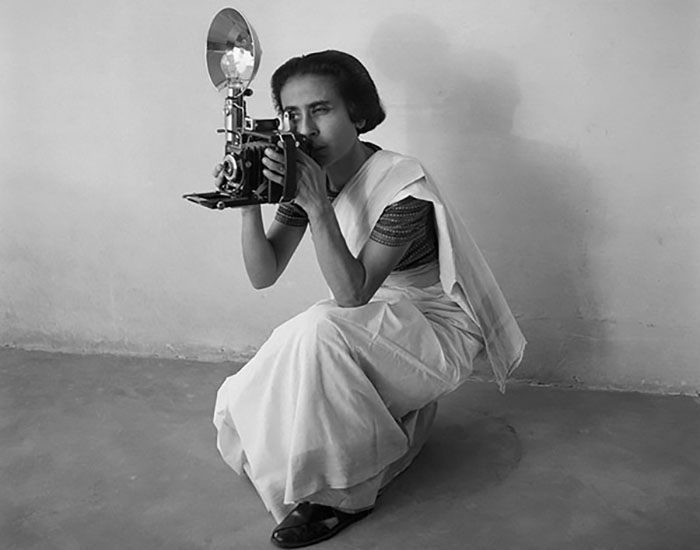
ARTICLE
An official photographer for the British government and a widely recognised photojournalist from the twentieth century, Homai Vyarawalla is best known for her work documenting the final days of the British Raj and the emergence of India as an independent nation. She was born in 1913 to a Parsi family in Navsari, Gujarat. Her father was an actor, and after spending a few itinerant years travelling with his theatre troupe, the family settled in Bombay (now Mumbai). Encouraged by her mother, she went on to attend the Bombay University and the Sir JJ School of Art, getting degrees in teaching and art. She first encountered photography through her cousin, Maneckshaw Vyarawalla – a photographer and accountant with The Times of India, who she married in 1941. Self-taught and using a Rolleiflex camera, Vyarawalla made images of urban life and young, modern women in Bombay. These were published in the Bombay Chronicle in 1939, following which she found work at the Illustrated Weekly of India in the early 1940s, publishing photographs depicting civil life during wartime. Entering photography at a time when the profession was a male preserve, she initially published her photographs using her husband’s name or under her pseudonym, Dalda 13. More contemporary accounts of her life and work have widely recognised her as India’s first female photojournalist. With the outbreak of the Second World War, the British Information Services (BIS) relocated to India and sought photographers on the ground. The Vyarawallas were recommended for the job by Stanley Jepson, then-editor of the Illustrated Weekly. In 1942, they moved to New Delhi, with The Times allowing her husband to work for a year with the British Information Service (BIS), while Vyarawalla became a full-time employee, with the provision to take on freelance projects. Vyarawalla’s training at art school proved useful for her work at the BIS, which needed photographers to generate material for information, advertising and propaganda. It has been reported that she had a quick instinct with her compositions, melding her photographic skill with her knowledge of visual aesthetics. She worked for the BIS as an official press photographer until 1951, and as a freelancer until 1970, covering events and ceremonies at the British High Commission, photographs of which would get published in magazines, including Life. At the same time, she was also chronicling the transition of India from a British colony to an independent nation. Her photographs of Jawaharlal Nehru, Mahatma Gandhi, Lord Mountabtten and other members of the political establishment were published in national news outlets such as the Statesman and the Times of India, and internationally in the Picture Post. Some of the significant moments in India’s history documented by her include the victory parade by the Allied Forces through Connaught Place, Delhi in 1945; the swearing in ceremony of Lord Mountbatten as the first Governor General of India in 1947; Nehru’s first national address as Prime Minister at the Red Fort, also in 1947; Gandhi’s funeral in 1948; the first Republic Day parade of India in 1950; and then-First Lady Jacqueline Kennedy’s visit to the country in 1962. In 1947, Vyarawalla started using a Speed Graphic camera for her photography of political events and later settled on less cumbersome cameras such as those made by Contax, Nikon, and Pentax, which required less manual manipulation between exposures. She also became a founder-member of the News Cameraman’s Association, one of the first photography unions of independent India, and presided over it for some time. In 1969, Vyarawalla’s husband passed away due to accidental poisoning. Grief-stricken by his death, she set her camera aside and retreated into semi-retirement. In 1982, she moved to Baroda (now Vadodara), where she lived until her death in 2012. Her life and legacy faded out of public memory until 1998, when Sabeena Gadihoke’s documentary Three Women and a Camera reignited interest in her work. Gadihoke’s biography of Vyarawalla, Camera Chronicles of Homai Vyarawalla (2006), further brought her into the spotlight. In 2011, a year before her passing, she was awarded the Padma Vibhushan by the Government of India. As of writing, her work and photographs are in the collections of the Alkazi Foundation for the Arts and the National Gallery of Modern Art, New Delhi.
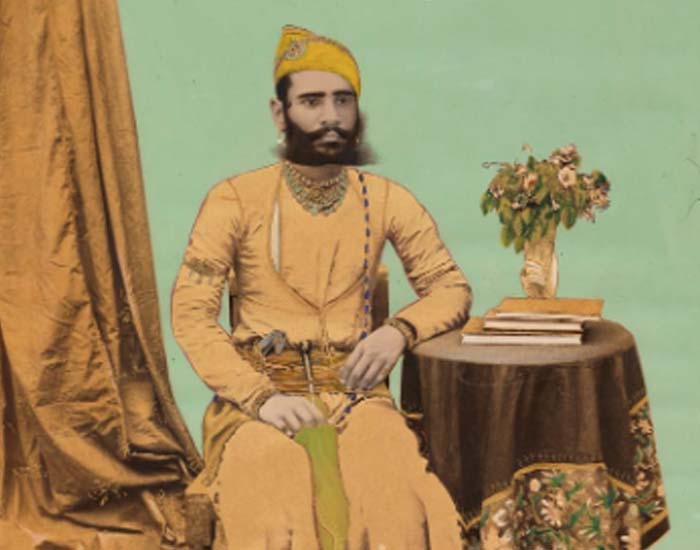
ARTICLE
One of the chief painters and photographers associated with the Shrinathji Temple at Nathdwara, Rajasthan, Ghasiram Hardev Sharma was a significant figure in the Indian art practice of the nineteenth century. He worked under the head priest and his foremost patron, Tilkayat Govardhanlalji. One of the most prolific Nathdwara artists, he undertook mural paintings for the Raja of Jhalawar, and went on to head the painting department as its mukhiya (chief). Together with his apprentice Narottam Narayan Sharma and associate Hiralal Udayaram, Sharma’s embrace of photography consolidated a particular style within his studio. The Ghasiram studio offered the devotees of Shrinathji (Krishna in the form of a seven-year-old child) an opportunity to have their portraits made, prints of which they could take back as souvenirs from their pilgrimage. These portraits were likely used as references for manorath paintings, which were commissioned by patrons to depict themselves in worship inside the Shrinathji shrine. Photographs became a very crucial visual source around the mid 1970s and entered the repertoire of Nathdwara artists. While photographic conventions didn’t supplant the prevailing visual style, rather, it broadened representational possibilities for the artist. Notably, it offered them an opening to develop a photographic aesthetic, where they could render portraits with Photorealistic semblance and Naturalism. This photorealism was distinct from hyperrealism — the artists sought to replicate even the black and white monochromatic tonality of the photographs and chose to paint over it in thin veils of colour. In addition to photography, the Ghasiram studio’s photorealism was also shaped by an encounter with the Academic Realism in the work of Raja Ravi Varma in Udaipur, after which he is said to have begun using oil paints. Khubiram Gopilal, another prolific Nathdwara artist, was also influenced by Varma and some of his earlier works are considered replicas of Varma’s chromolithographs. At a time when realism was elevated to a formal style, the integration of photography with Academic Realism was instrumental to the aspirations of many royal patrons in India.
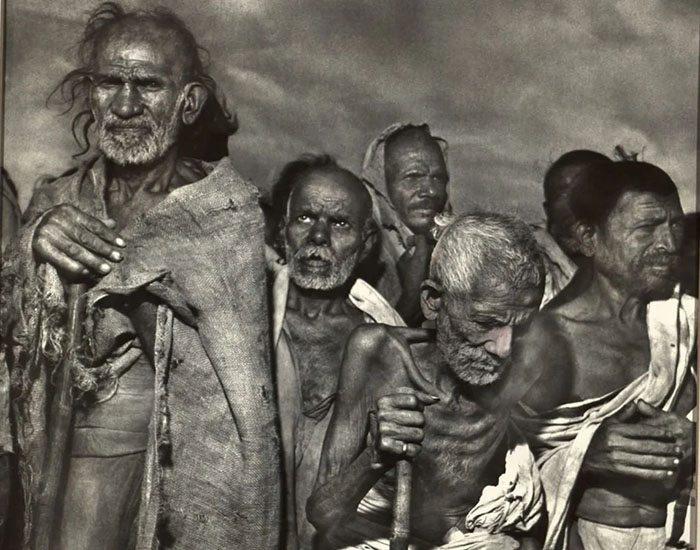
ARTICLE
An Indian photojournalist whose work spans much of the twentieth century, Sunil Janah documented India through the waning decades of British colonialism as well as its post-Independence transformation. He is best known for his photographs of the Bengal famine, the burgeoning Indian independence movement, industrialisation under former prime minister Jawaharlal Nehru, as well as his studies of Adivasi communities. Janah was born in 1918 in Dibrugarh, Assam to Sarat Chandra, a prominent advocate at the Calcutta (now Kolkata) High Court. He developed an interest in photography as a young boy, and although he never received formal training, he was able to learn the skill by working with professional photographers in their darkrooms. While pursuing his degree in English literature at St. Xavier’s College, Mumbai – and later Presidency College, Calcutta – he became involved in left-wing political activism. He was a member of the Communist Party of India (CPI), and received encouragement from the General Secretary PC Joshi to pursue photography. In 1943, Janah abandoned his studies and accompanied Joshi and the artist Chittoprasad across undivided Bengal to document the devastating effects of the famine. Together with a narrative text, his photographs were published in the Communist party’s paper People’s War, which at the time had a readership of nearly 36,000. His powerful black and white photographs of the Bengal famine presented a sympathetic picture of the impoverished masses, following the stylistic device of portraying the subject in a heroic mode, where photographs taken from a low-angle create an imposing figure. This coverage, which revealed the enormity of the crisis for the first time, soon became a staple at political meetings and funding drives across the country. The photographs were circulated as postcards and were republished in communist newspapers around the world. In 1945, Life magazine sent American photographer Margaret Bourke-White to India to witness the dwindling of the colonial empire. Compelled by his photographs and their impact, Bourke-White sought him out and they went on to have several collaborations. After covering the famine, Janah moved to Bombay (now Mumbai) to live in the Communist Party’s commune. Here, he became associated with the Progressive Writers Association (PWA) and the Indian People’s Theatre Association (IPTA). In 1948, following the split in the Communist Party, he was expelled along with other members who were associates of Joshi. After this, he completely dissociated from party politics and moved back to Kolkata. Here, he opened a photo studio and founded the Calcutta Film Society with CD Gupta, HD Gupta and Satyajit Ray, who also designed his first book of photographs, The Second Creature (1949). During this time, he also began working with the Government of India. He covered projects that came under the government’s first Five-Year Plan (1951–1956), which was part of its drive towards rapid industrialisation. Through the 1960s, he photographed the infrastructure and industries being set up by businessmen such as JRD Tata and GD Birla. His work for the government and the industrialists stands in stark contrast to his earlier framing, with the human figure now becoming subordinate to its surroundings. His later photographs are focussed on machines and factories instead, and the spectacle of modernity itself. These images celebrate the infrastructural strength and economic foundations of postcolonial India. Towards the end of his career, frustrated that his images were often used without credit or compensation, Janah retreated from public view and focused on photographing the life of Adivasi communities across India, which he published as his second book, The Tribals of India (1993). For several decades, his photographs had served a public and documentary function, but by the late 1970s they began entering the world of art as well. His photographs were exhibited at the Festival of India in the United Kingdom in 1982. In 1996, his work was shown at the Indira Gandhi National Center for the Arts (IGNCA), New Delhi, and the following year, it also appeared in a travelling group exhibition titled India: A Celebration of Independence, 1947–1997 at the Aperture Foundation, New York, USA. In 1998, Delhi-based photographer and activist Ram Rahman curated the largest retrospective show of his works at Gallery 678, New York, titled Photographing India, 1942–1978. The Government of India awarded Janah the Padma Shri in 1972, followed by a Padma Bhushan award in 2012.
Re-discovered art objects from pre-modern India provide valuable clues about the artistic styles, patronage, material use and religious iconography of their time and place. In rare instances, however, objects of clear importance but no context are found, sparking debate among historians about their place in South Asian history. When ensuing debates are sustained over time, they often elevate the artwork well beyond its actual historical significance.
Colonial-era historians have been accused of making ill-fitting comparisons between Indian art and movements in European history, such as Gothic architecture or Hellenistic sculpture. Early Indian art historians who received a Western education but whose values were shaped by the independence movement, may bring a nationalistic lens that emphasises the antiquity of an Indian art object while rejecting the foreign influences it may have received. The effect of colonisation — and by extension, Victorian morality — in India can be seen in writing that forefronts the spirituality of Indian art, while downplaying the importance of violent or erotic imagery. In some cases, over-extrapolation motivated by religious agendas may pose as fact, creating myths for later historians to dispel.
Practical factors that affect the process of reassembling this lost context include technological limitations for dating artefacts, lost or missing objects, undeciphered languages and so forth.
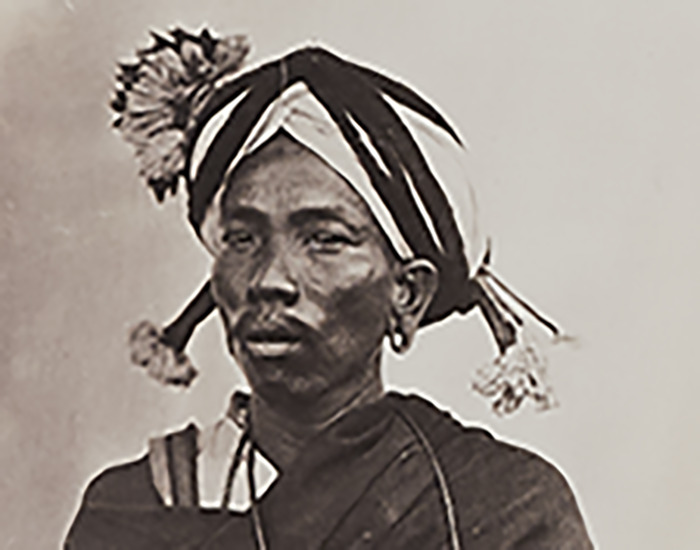
ARTICLE
The multi-volume photographic and print publication, The People of India: A Series of Photographic Illustrations, with Descriptive Letterpress, of The Races and Tribes of Hindustan, was an illustrative document of the various social and ethnic groups across the Indian subcontinent. This included several of the country’s native castes and tribes that were represented through a clinical and taxonomic gaze typical of colonial ethnography at the time. Primarily consisting of 468 annotated photographs compiled by chronicler John Forbes Watson and historian John William Kaye, the series was published by the Government of India under the British Crown. Containing over five hundred (15 x 11 cm) albumin prints accompanied by detailed descriptions by Capt. T. Meadows (administrator, novelist and artist), the publication also formed an exhibit in the India pavilion of the 1862 London Exhibition. Produced shortly after the 1857 Rebellion, The People of India is considered a significant early publication that integrated photography and colonial ethnography as tools of administration and governance. The undertaking started out as a personal project for the first viceroy of India, Charles Canning, and his wife Charlotte, who wanted to build a collection of photos of the native people of India. When formalised in 1861 as a call from the colonial offices to military officers to submit photographs with detailed notes on various social groups across the Indian subcontinent, the initial result was a large collection of inconsistently annotated images of varying quality. The classifications of subjects specified in the official circular included ethnicity, caste, social group, regional power, language, clothing, profession and attributes such as trustworthiness, honesty and propensity of violence. The years leading up to the formal dissolution of British East India Company rule in 1874, and the reorganisation of administrative power under the British Raj, allowed publications such as The People of India to gain added significance as a form of colonial control. However, the subjectivity of some of the series’ parameters, and a general lack of organisation, resulted in discrepancies, overlaps and omissions (it completely excluded communities of fewer than two thousand people), delaying the project until it was eventually passed, after the demise of the Cannings, into the remit of the Government of India. Despite the scope afforded by its hundreds of images and its simple format, the series was received poorly by the colonial elite, for whom it was ostensibly meant to serve as a guidebook on the locals. According to scholar and educator Syed Ahmad Khan, one of the foremost critics of the series, the Indian elite also viewed it poorly, as they thought the categorisation was demeaning to their own identities. Whatever the original intent, the project — touted by some scholars as a surveillance program rooted in early ethnology and criminology — was quickly dismissed during its time. The series has however, in the last fifty years, received renewed interest, especially from postcolonial scholarship, for its overt, if unarticulated, ethnographic ambitions. Of particular interest to scholars is its frequent focus on the varying degrees of criminality among the indigenous groups of the subcontinent. Scholars argue that the photography–ethnography model was introduced as a pseudo-scientific justification of colonial rule, by categorising the Indian people as an aggregate of largely regressive and barbaric groups, in order to exercise a deep, precise control over them. In addition, its indexing of social groups further perpetuated ill-informed and at times outright discriminatory belief systems held by many aspects of the Indian caste system. The contemporary position on the book series is that it was fuelled by the insecurity following the 1857 Rebellion by Indian troops in the colonial military and was the result of a profiling exercise carried out to help prevent other such insurgencies. The various interpretations and analyses themselves are not without their flaws and controversies, as they are all largely derivative. The foundational scholarship that underpins much of the discourse on this ethnographic series has been attributed to John Falconer and Christopher Pinney; the former’s A Pure Labour of Love (2002) is credited as the most exhaustive publishing history of the People of India series and the latter’s Camera Indica (1997) is thought to lay down the analytical framework of the series. Aside from its discrepancies and harmful taxonomy, there is now a clear consensus on the value of The People of India as an illustrative historical document of the early British Raj’s strategic and discriminatory use of photography as an ethnographic tool. In 1908 and 1992, two other volumes bearing the same title were also published, but each separately and with different motivations that had no direct connection to the first series. Meanwhile, the 1868 multi-volume series continues to be a subject of much scholarly debate.
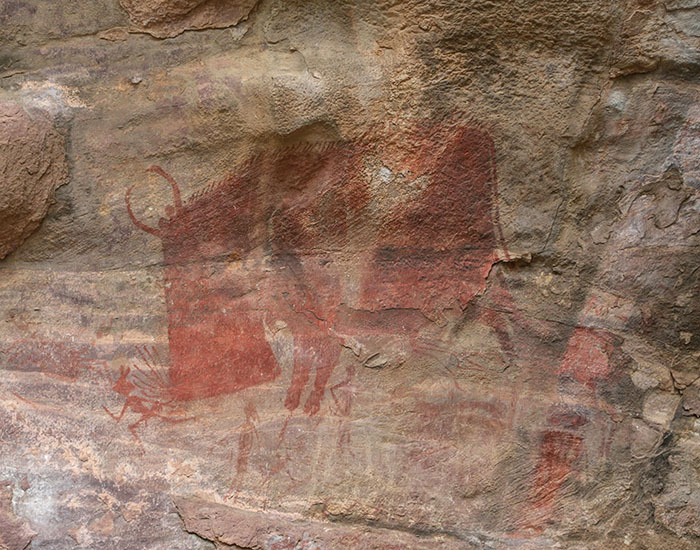
ARTICLE
Also known as Bhimbetka Shelter III F-19 and Bull Rock, this rock shelter derives its name from its depiction of a large, boar-like creature and is prominent among the hundreds of structures that comprise the Bhimbetka cave paintings in the Raisen district of present-day Madhya Pradesh. The animal depicted in the painting has a large head, horns and what appears to be fur on its back. It appears to be charging leftwards, towards two figures — a human and a crab. The painting is rendered in deep red, which is believed to have been obtained from haematite, and is known for its magnitude, which is over 1.2 metres tall and 0.87 metres wide. Unlike the other hunting scenes depicted in the Bhimbetka rock shelters, the scene illustrated at Boar rock depicts a human figure being attacked by, and fleeing, a wild animal. While paintings of boars appear in several other instances in the region, scholars believe that the animal at Boar rock is mythical and seems to be a combination of a boar, an ox and an elephant. Apart from the Boar rock, the Zoo rock and the central Auditorium cave are notable sites at the Bhimbetka rock shelters. Although there are no clear conclusions regarding the purpose of the cave paintings in these shelters, archaeologists have used them to gain a better understanding of human behaviour and the social and cultural environment in the Prehistoric period. This region is also an important archaeological location and was marked as a UNESCO World Heritage Site in 2003.
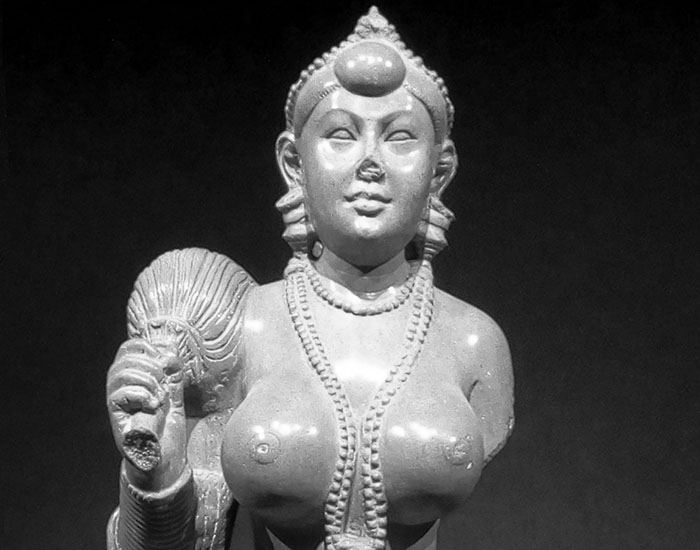
ARTICLE
A life-sized Chunar stone statue of a female deity or guardian figure, possibly a yakshi, excavated from Didarganj, near present-day Patna, the Didarganj yakshi statue is widely celebrated for its intricacy, polished surface and overall symmetry, as well as naturalistic and standardised style. The figure is depicted carrying a fly-whisk in her right hand, while her left arm and nose are damaged. The statue rests on a 40-centimetre tall stand, bringing it to a total height of 203 centimetres — all of which was carved from a single block of stone. The Didarganj yakshi was rediscovered by accident on the banks of the Ganga by local residents in October 1917 and was worshipped for a brief period before being acquired by colonial-era archaeologists and moved to the Patna Museum. The explanation offered to the locals was that the statue represented a guardian figure, not a deity, and so was not intended for worship. This claim has been debated; the statue is widely, if not universally, considered to be a yakshi, qualifying as an elevated guardian deity meant to flank a more important figure on a temple wall or entrance. The interpretation rests on whether the fly-whisk is considered a sign of an attendant’s subservience or a guardian’s shared glory. Other features of the sculpture, namely its size, polished surface and carefully carved details such as the jewellery and drapery, have favoured the latter interpretation, indicating that the statue may have been positioned in a place of importance. The Didarganj yakshi has also been the focus of much debate on style, valuation, colonial and postcolonial biases and the representation of women in both ancient art and written art history. The age of the statue is also disputed, with earlier scholars placing it in the third century BCE while more recent scholarship places its origins in the first century CE. As a result, the artistic tradition and imperial patronage of the statue remains uncertain. Its naturalistic and standardised style may have been overvalued by colonial-era scholarship’s emphasis on Gandharan sculpture and Ashokan capitals. And so, possibly in an attempt to create distance between the history of Indian art and the Hellenic and Achaemenid roots of these sculptural traditions, the Didarganj yakshi, along with other sculptures, were dated to the third century BCE and presented as examples of a fully Indian style that was at least as old as sculptures like the Persianate lions of the Sarnath capital. The nationalistic fervour of the twentieth century encouraged the argument that the statue was of Mauryan origin, but without the Persian influence. This claim was further developed on the basis that the statue was made from polished stone — which is characteristic of Mauryan sculpture — and its discovery near Patna, the former capital of the Mauryan Empire. However, more recent scholarship asserts that both the polish and the naturalistic rendering of the figure was a lingering stylistic influence adopted by sculptors operating under the Central Asian Kushan Empire in the first or second century CE, about three hundred years after the Mauryans. This theory is supported by the double bundle in the yakshi’s hair, a popular style and artistic choice among sculptures of the Kushan Empire. This later date aligns with the progressive standardisation of Indian sculpture in the first millenium CE, whereas placing the yakshi in the third century BCE would create a centuries-wide gap in that history. The statue’s prominent breasts and wide hips have also been the focus of much debate. One interpretation has been that — much like the surasundaris on the walls of the Khajuraho temples from nearly a millennium later — the yakshi’s voluptuous form was seen as the beginning of an aesthetic path to spiritual understanding, wherein eroticism is seen simply as another play of form. Another view was that the yakshi’s exaggerated and sexualised features represented fertility and young motherhood, although both these views are at odds with the guardian duties or the iconographic role of a yakshi. It is generally agreed that her appearance was originally envisioned as an idealised version of the female body, and a depiction made as a matter of course rather than a conscious act of representation. The Didarganj yakshi was first housed in the Patna Museum and has been exhibited across the world as a fine example of Indian sculpture, including the 1947 exhibition “Art from the Dominions of India and Pakistan” in London and the “Festivals of India” exhibitions in France and the USA in the mid-1980s. Upon discovering slight damage to the yakshi’s left cheek when the statue returned to New Delhi, the Patna Museum refused to take it back without compensation to the Bihar government. The statue was finally returned to Patna in 1989 and moved to the Bihar Museum in 2017.
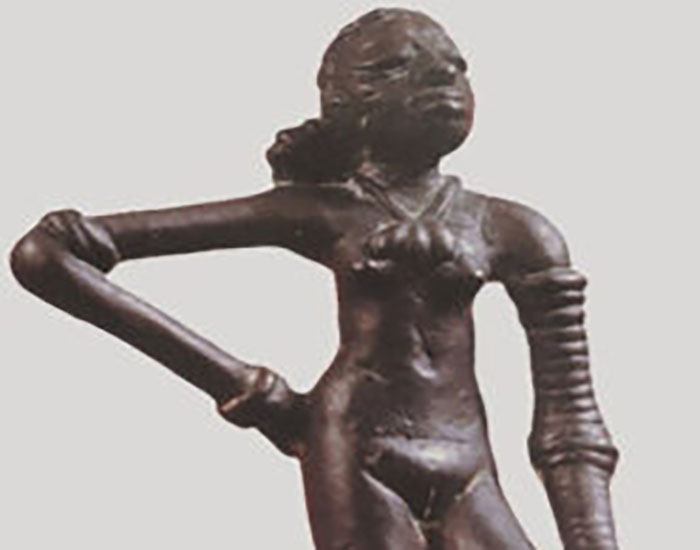
ARTICLE
A bronze statuette depicting a free-standing nude female, the Dancing Girl was excavated from the Indus Valley Civilisation site of Mohenjo-daro (in present-day Sindh, Pakistan). Dated to c. 2500 BCE of the Mature Harappan Phase and recovered in 1926 by British archaeologist Ernest MacKay, the figure measures 10.5 centimetres in height, 5 centimetres in width and 2.5 centimetres in depth. Made using the lost-wax casting technique, this artefact is set apart from its terracotta counterparts by its representation of complete female nudity and its spare ornamentation. The Dancing Girl is so named for the assumed profession of the female figure — that of a nautch girl — and the pose she is shown holding. The slender figure is depicted as being exaggeratedly long-limbed and nearly bare, aside from some jewellery. Leaning slightly on the right leg, the figure’s asymmetrical stance mirrors the uneven distribution of ornamentation on her body. The left arm, covered almost entirely in approximately twenty-four bangles, hangs down to just above the left knee, against which she appears to be holding a pot-like object. The right arm, ornamented with just four bangles around the elbow and wrist, is cocked at the elbow and clenched into fist (with the thumb outside), which rests on the back of the slightly-raised right hip. Both legs are bent at the knees, but the left appears to be positioned ahead of the right. Around the neck and the chest is a necklace strung with three, or possibly four, large bead-like pendants. The slightly upward-tilted face has a high forehead, large eyes, wide nose and full cheeks and lips, with long hair that is tied and bundled, resting off to the right on the nape of the neck. As with many other Indus Valley artefacts, the identity and significance of this bronze figure is undetermined, with scholars presenting competing views. The original and dominant interpretation, by British archeologist John Marshall, that lent the artefact its name, has been challenged by more recent scholars who question its assumption (deemed inaccurate and discriminatory) of the figure’s stance as that of a dancing pose. These contemporary and alternate interpretations include that of the figure being a warrior — because of the uneven ornamentation of her hands — and a woman in a defiant stance. Some scholars even believe the Dancing Girl’s face to have Dravidian features, giving rise to various other theories about the ethnic identity of the figure depicted and the demographic makeup of the Indus Valley Civilisation. This artefact is a telling index of the Indus Valley Civilisation’s advanced understanding of metallurgical processes and its active patronage of the arts. The Dancing Girl is now displayed in the National Museum, Delhi, as a part of its Pre-History and Archaeology collection.
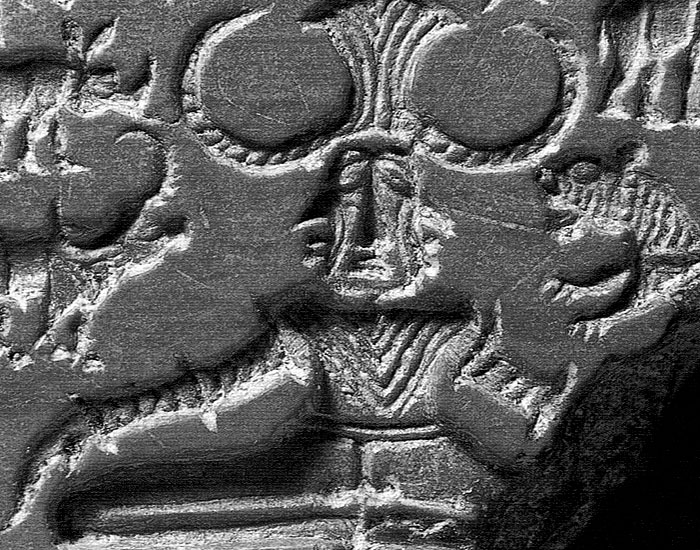
ARTICLE
A well-known stamp seal from the Indus Valley, the Pashupati seal is carved in steatite and gets its name from the Sanskrit word for “lord of all animals,” referring to the Hindu deity Shiva. One of the earliest of the few similarly illustrated seals and tablets from the region, it is dated to around 2500–2400 BCE of the Mature Harappan Phase of the Indus Valley Civilisation and was excavated from the Mohenjo-daro archaeological site in the Sindh province of present-day Pakistan. Also designated as Seal No. 420 or the proto-Shiva seal for its evocation of the eponymous deity, it is 3.56 centimetres high, 3.53 centimetres long and 0.76 centimetres wide. The defining aspect of the pashupati seal, and the subject of much interpretive debate, is its iconography. The central figure is seated on a dias in a meditative pose resembling the yogic padmasana. The figure’s arms are covered in what appear to be bangles and the torso features a series of striations that may represent multiple necklaces or triangular pectorals. While the waist is adorned with a double-banded sash ending in hanging tassels, the lower body appears bare. The headdress, the most noticeable element, consists of two long, curved horns, pointing upwards and inwards to a fan-shaped central component. The face bears distinctive features as well — narrow, high-set, downward slanting eyes; a prominent, elongated nose; and a downturned mouth. On either side of the head are lateral projections that have been interpreted as having various meanings. Below the dias stand two creatures, believed to be deer facing each other with curved, downward-pointing antlers, and surrounding the figure are other animals, including a tiger, a buffalo, a rhinoceros and an elephant. This seal, like many others recovered from the region, has inscriptions in the Indus Valley script along its top edge. While the identity of the figure has been the subject of much debate, there is a consensus on its supposed associations with the divine. The earliest and most influential, as well as disputed, theory was advanced by British archaeologist John Marshall who was the first to document the seal. The interpretation of the main figure as pashupati emerged from his understanding of medieval iconography of Shiva — the trishula shape of the headdress, the yogic pose, the encircling of the figure by animals, tricephalic and ithyphallic extensions — leading to its identification as a proto-Shiva or the Rudra. Disagreements over this interpretation, believed by some to be erroneous, gave rise to other analyses. For instance, the lateral projections on either side of the face, interpreted as a bovine feature, led some scholars to claim that the figure represented a bovine deity, such as Mahishasura, or a divine bull-man such as was found on other masks and anthropomorphic figures excavated from the region. Other interpretations of the features of the visage, ornaments, and scenography suggested identifications with the Vedic deities of Agni, Anila and Varuna, and with the sage Rishyasringa. As the inscriptions are yet to be deciphered, the identity of the principal character of the seal remains contested. At the time of writing, the pashupati seal is housed in the National Museum, Delhi, as part of the Pre-History and Archaeology collection.

ARTICLE
A carved ivory statuette of a female figure, the Pompeii Lakshmi was recovered during archeological excavations at the site of the ancient Roman city of Pompeii in 1938. The statuette, along with the city, had remained buried under volcanic ash since Mount Vesuvius had erupted in 79 CE. Its discovery established the existence of flourishing trade networks spanning the Indian Ocean and Mediterranean Sea. The statuette’s style and iconography has led to scholars variously identifying it as Sri, Lakshmi, and a yakshi among others. The figure is 25 cm high and 5 cm wide, possibly sculpted from a single elephant tusk. It consists of a primary female figure accompanied by two smaller, female attendants attached to either side. A hole on top of the primary figure suggests that the statuette might be a fragment of a larger object, like a piece of furniture or a mirror-handle. The statuette is relatively flat, but is sufficiently rounded and detailed to suggest that it was intended to be viewed from all sides. The primary figure is almost completely nude, with the exception of jewellery, including a necklace, bangles and a lotus-shaped head ornament. A flat belt is worn around the hips, while the right arm is raised and held behind the head. The left leg is placed in front of the right. The figure’s hair is braided in coils that reach the waist, with a large flower, perhaps a lotus, woven into the braids. The genitals are visible, suggesting that the figure may be a fertility goddess or yakshi. Scholars have also argued that it may be a syncretic form combining the Indian and Roman goddesses Sri, Lakshmi and Venus. The latter identification is suggested by the fact that a number of Venus representations in the Greco-Roman world show her accompanied by two attendants. While the lotus later came to be associated with the goddess Lakshmi, it has been argued that the Pompeii statuette’s ornament may not have been intended as a mark of a goddess or yakshi at all, but a general symbol of beauty. The statuette is marked with a Kharosthi inscription at the bottom, suggesting an origin in the northwestern regions of the Indian subcontinent, perhaps Begram in modern-day Afghanistan. Begram was a major production centre for carved ivories around the time the statuette was exported. Other scholars suggest that it was made in the interior of the Indian subcontinent, pointing out stylistic similarities to the Mathura school and to examples of yakshis from Bharhut and Sanchi. Similar statues have also been recovered at Bhokardan in present-day Maharashtra, which had steady trade with the Roman world. However, all of these centres did interact with each other; thus the statuette’s style is probably a mixture of influences, making it difficult to attribute an exact origin to it. It is generally assumed that the figure was produced in the early half of the first century CE and subsequently brought to Pompeii, probably via a port on the west coast such as Bhrigukaccha (present-day Bharuch). The house where the statuette was found is now named “The House of the Indian Statuette”, although the figure itself is now lodged at the National Archaeological Museum in Naples, Italy.
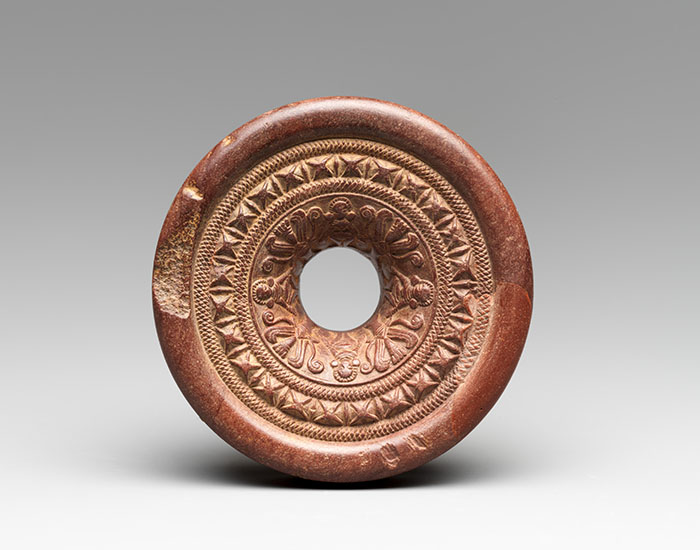
ARTICLE
Small ring-shaped stones, typically made from sandstone or steatite, with a carved upper surface that curves in towards a central void and an unmarked, but highly polished, underside. Ringstones of this type date back to the Maurya and Shunga periods, and are characterised by their uniformity of style and composition. Of the estimated seventy ringstones, measuring between 4 centimetres and 10 centimetres, most were found between present-day Punjab and Bihar with unclear provenance, suggesting their distribution and trade throughout the Indo-Gangetic plains of north India and Pakistan. So far, the only ringstone excavated from outside the Indian subcontinent was found in 2014 in peninsular Thailand and is unlikely to have been made with state patronage. The relief carvings on the convex surface of the ringstones are rendered in concentric bands of figurations with depictions of female figures, floral motifs, animal motifs or a combination of these — interpreted as representing fertility and prosperity. These bands are also separated by decorative geometric patterns such as cable-edging or rope borders. The innermost band usually contains alternating female figures and floral motifs that appear to be emerging from the central void. Figures of amorous couples or individual women, possibly goddesses, are typically rendered nude and in some cases with splayed legs, reinforcing the fertility symbolism. Creepers usually form a running base, terminating in trefoil forms between the figures. The Tree of Life motif, in its flowering form, is also commonly featured, possibly as a symbol of fecundity. The outer bands typically depict animal figures along with criss-crossing patterning that, in some cases, frames the overall design and has been compared to the Buddhist vajrasana motif. Due to the small size of the ringstones and the concentric-band format of the design, the figures depicted on them have minimal detailing. They have often been compared to discstones with which they share some characteristics — such as size, sculptural content and general provenance — but differ in shape and composition and, most notably, lack a central hole. Mauryan ringstones are amongst the most enigmatic artifacts of Mauryan and Shunga art. Interpreting their iconographic content as having socio-religious symbolism, scholars have speculated that they may have been used as amulets and ritualistic objects or designators. Some have also proposed that they could have been used as moulds for jewellery-making, a heavily contested view that has been bolstered by the recent discovery in Thailand, where pieces of embossed, gold reliefs were found near the site of excavation. While this discovery supports the possibility of its use in jewellery-making, it fails to definitively establish the original and intended purpose of the ringstones, which remains debated among scholars. At the time of writing this, these ringstones are housed in various museums in India and abroad, with some in private collections. The largest collection of ringstones exists at the Patna Museum, Bihar.
Dating back to the tenth century, traditional Indian hand-knotted carpets and rugs rose to prominence in the sixteenth century under sustained Mughal patronage. Carpets were a major trade textile in the colonial period as well and were sometimes made by inmates in prisons.
Indian carpets are typically made of knotted wool with a woven cotton base. Most traditions use the asymmetrical Persian knot, for which a strand of yarn is tied around two adjacent warp threads, and fineness is determined by the kind and number of knots. Carpets typically feature recurring motifs, including palmettes, geometrical shapes, flowers, the tree of life and occasionally, animals. Some Indian carpets also contain representations of landscapes.
Since the sixteenth century, many Indian carpet varieties have borrowed design elements from Iran and Central Asia; but they were soon distinguished from these traditions by the relatively brighter colours of Indian dyes. Additionally, Tibetan rugs like khabdan have been produced by Tibetan artisans at centres in Himachal Pradesh and Assam since the 1950s.
Notable types of carpets and rugs from across India include gabba, kaleen, galeecha and dhurrie. Most historic carpet and rug manufacturing centres were located in the northern and western regions of the Indian subcontinent, while contemporary centres include some in the south and north-east India as well.
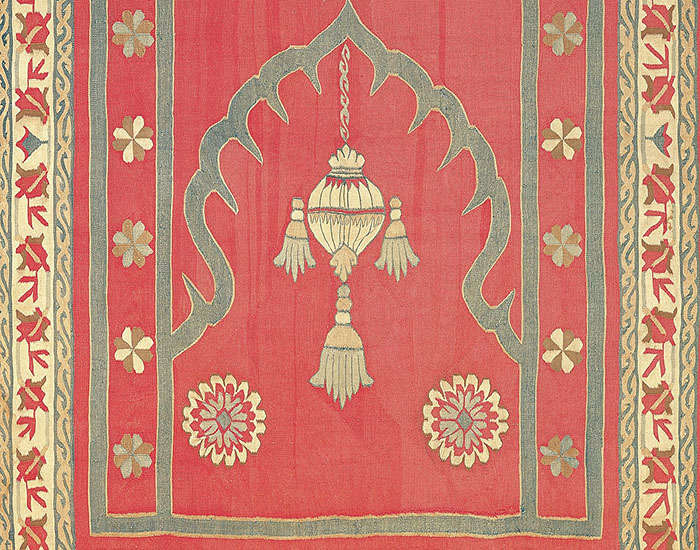
ARTICLE
Thick, flat woven rugs or carpets, dhurries in India are primarily used as floor coverings. They are characterised by weft-facing weaves in plain, striped, extra-weft (peddle) or tapestry (cut-shuttle) designs. The decorative woven patterns of a dhurrie are based originally on the vernacular tradition of temporary or painted floor decorations such as rangoli and kolam. The word dhurrie has multiple etymologies in different Indic languages: the Sanskrit dara refers to a mat of split cane; dari in Sindhi and Punjabi means “a piece of matting,” while the same in Bengali, Oriya, Hindi and Nepali denotes “carpet.” Dhurrie weaving is also linked to the ancient tradition of grass mat weaving, which continued to develop independently. Dhurries are distinguished from carpets by their flat weave, their relative lightness and their often-reversible designs. The craft practice has a long heritage in several states in India, such as Arunachal Pradesh, Assam, Delhi, Karnataka, Madhya Pradesh, Maharashtra, Manipur, Odisha, Puducherry, Punjab, Rajasthan, Sikkim, Telangana (formerly part of Andhra Pradesh), Uttar Pradesh and West Bengal. The earliest evidence of rug-like floor-coverings is from a 200–400 BCE fragment of woollen carpet with a tapestry base weave excavated from the Krorainic region of Western China. The material evidence is corroborated by documents in Kharosthi that refer separately to ‘rugs’ and ‘carpets’ from the region. The 200-300 CE treatise of the Arthashastra refers to different kinds of floor coverings, including the rug or pravaraka, that are made from the hair of animals. A tenth-century travelogue by Arab geographer al-Maqdisi makes a more definitive reference to rugs (called busut), specifically from the Sindh region of British India (now of Pakistan). Pictorial references to rugs are seen in sixth-century Ajanta murals; Sultanate period manuscript paintings — such as the Bustan of Sa’di (c. 1500); the sixteenth-century Padshahnama; and sixteenth-to-eighteenth-century Mughal and Deccan miniatures from the St. Petersburg Muraqqa. Later material evidence of a flat-weave Indian rug is provided by a seventeenth-century fragment from the Amber Palace in Rajasthan housed in the Calico Museum; a prayer rug dated to 1686 and from the Jama Masjid of Bijapur; and a dhurrie sample from the karkhana (workshop) of the Nizam of Hyderabad, attributed to 1700. These remains along with manuscripts from the period attest to the use of rugs for secular and religious purposes and to the existence of storehouses or farrashkhanas for palace dhurries in the various princely states. Dhurries are typically woven by hand, using horizontal pit looms, with some rare exceptions such as the Belgaum dhurries of Karnataka. The various types of dhurries, while sharing the overall process, differ in the materials used, their design vocabulary and some aspects of production. Commonly made with cotton, fleece, jute, wool and silk yarns in various combinations, the weaves are typically made in the weft interlocked or interlocking tapestry technique. First, a design is prepared and traced onto a graph paper along with the colour specifications. The loom is then prepared, first by winding the yarns, then passing them through a reed and finally by tying them to a warp beam. The warp yarns, usually made of undyed cotton or wool, form the backbone of the weft-facing dhurrie weave. The coloured weft threads are wrapped with a pirn rod to be transferred to a weft shuttle. The weaving process involves throwing the alternate weft thread across the stretched warp. After each line of the weft design is completed, it is beaten down with a metal comb or panja to tighten the weft-thread line. After the design is woven, the extra threads are trimmed and cut, while the fringe formed by the cut and lost threads of the weft are hard knotted to prevent the weave from unravelling. The design vocabulary for dhurries typically consists of stripes, geometric designs that are either abstract or inspired by architectural forms, or naturalistic motifs inspired by flora and fauna. Striped dhurries are amongst the most common, used in mosques, as tent rugs, festival and ceremonial floor coverings and as decorative and functional household items. Among the striped dhurries are the multicoloured ones, such as the jamkalams woven in Bhavani, Tamil Nadu; the blue-and-white striped varieties of Uttar Pradesh, such as the nili chitti and gilasdar patti; the shatranji and chindi or rag dhurries of Maharashtra. Prayer rugs or jainamaz dhurries contain intricate patterns prominently featuring a single mihrab (arched niche) motif and saf (multiple arch) motifs. The panja dhurrie integrates the motifs and designs of phulkari and bagh embroidery designs, used to symbolise birth, marriage and death. Colourful Warangal dhurries, produced in Andhra, are characterised by repeating geometric motifs and zigzagging lines, and more recently kalamkari and ikat patterns. The Navalgund jamkhans of Karnataka are woven with motifs of peacocks (mor) and choukas (dice game board), the latter of which also feature in the shahnashin of Punjab. Pictorial dhurries, popularised by the Mughals, are woven in the regions of Uttar Pradesh and Uttarakhand, with stylised motifs of trees, flowers (phuldar), birds, fish (machlidar) and reptiles around a central medallion. A popular pictorial theme that emerged in the nineteenth and twentieth centuries was Noah’s Ark. The showcase of dhurries at the Great Exhibition in 1851, led to a surge in demand for floor coverings manufactured in India. Dhurrie manufacturing at the time was divided into private sectors, village production, and the prison industry. Private dhurrie enterprises, monopolised by British-owned cotton mills, propagated the striped dhurrie design in India. Introduced first by the Mughals and revived by Maharaja Sawai Ram Singh II in 1856, prison dhurrie workshops became major production centres, several of them being subsequently established in Agra, Bikaner, Baroda, Hyderabad, Jodhpur, Lucknow, Sabarmati, Udaipur and Warangal in India and Bahawalpur, Multan, Lahore and Hyderabad in modern-day Pakistan. Production at jail workshops decreased by the mid twentieth century and dhurrie production primarily became a cottage industry. In the early twentieth century, the setting up of cotton mills in Kanpur, Uttar Pradesh and the resultant migration of weavers to the city, resulted in a revitalisation of the dhurrie industry and the production of a new kind of unpatterned rugs known as Kanpur dhurries. This and the expansion of rail networks across India revitalised the dhurrie industry, which had suffered a blow from famine of 1876 and the bubonic plague of1897, and encouraged export centres such as Moradabad, Bareilly, Agra and Aligarh, also in Uttar Pradesh. Because of their versatility and portability, dhurries came to replace carpets as floor coverings especially in warmer regions or during warmer months. They were also used as mattress covers, cradle or crib liners and even as wraps in the cooler months. Dhurries were also placed underneath double-pile carpets to preserve them and protect against damp. Today, dhurries are widely sought-after craft objects and are produced chiefly in the centres of Hoshiarpur in Punjab, Jodhpur in Rajasthan, Varanasi in Uttar Pradesh, Warangal in Andhra Pradesh, Salem in Tamil Nadu, Panipat in Haryana, Belgaum in Karnataka, and Pune in Maharashtra. Several regional varieties of dhurries, such as the Warangal Dhurrie, Navalgund Dhurrie and Agra dhurrie, among others, have been recognised and protected under the Geographical Indications of Goods(Registration & Protection) Act, 1999.
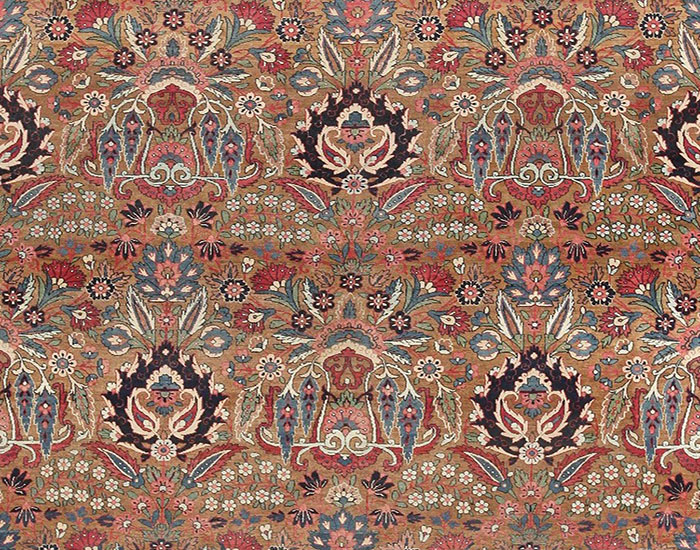
ARTICLE
Woven in Kerman, Southeast Persia (now Iran), Kerman carpets were introduced to India through trade routes with Iran and were widely used during the Mughal era. The most popular varieties of the carpets include those woven by the Afshar community settled in Sirjand, Shahr Babak and Rafsanjan, as well as the Laver-Kerman carpets from Ravar. Kerman carpets are divided into three categories based on their density — 70/35, 80/40 and 100/50 — where the first number refers to the number of warp strings across the width of the fabric and the second number indicates the number of weft sets in the length, measured per gireh (1 gireh = 7 cm or 24 inches). The rugs are knotted and made of sheep wool, with the occasional use of cotton and animal fibre. The weft is closely woven to the warp using several loops of wool to create a piled rug. Generally, the piles are woollen, with a cotton base, and handspun wool is preferred to obtain the desired texture. The patterns are symmetrical with a double weft, though some may have a single weft and a knot. Traditionally, natural dyes were used to create colour patterns, with light pastel tones for the base colour and cochineal-based, plum red for the designs. The arrangement of the knots, warp and weft of the carpet can be used to determine the origins of the carpet. The weavers use a naksha to render the designs on the carpet. The design consists of geometric and floral motifs, including individual boteh, interlinked boteh and vases in the borders and background patterns. Whereas there are design variations depending on the village and region where the carpet is produced, all Kerman carpets feature floral motifs, such as the carpets produced by the Kijar Afshars, which are densely floral and feature medallions. While the vase carpets have been attributed to different places, the broadly held view is that they originated from Kerman. Another common motif is the palmette, lancet-leaf and the hooked diamond subsidiary motif, which reflect a Turkish lineage. The 1950s saw a French influence on Kerman designs, such as the incorporation of rococo on the scrolling leaves and flowers on the carpet. Kerman carpets were widely exported till the First World War, even incorporating Biblical themes in their designs. However, the rapid industrialisation of the industry in the twentieth century due to increased demand in Europe led to a decline in the quality of the product. Today, many of the traditional carpets are regularly auctioned. Examples of Kerman carpets are also held in the collections of the Victoria and Albert Museum, London; the Albert Hall Museum, Jaipur; and the Textile Museum, Washington DC.
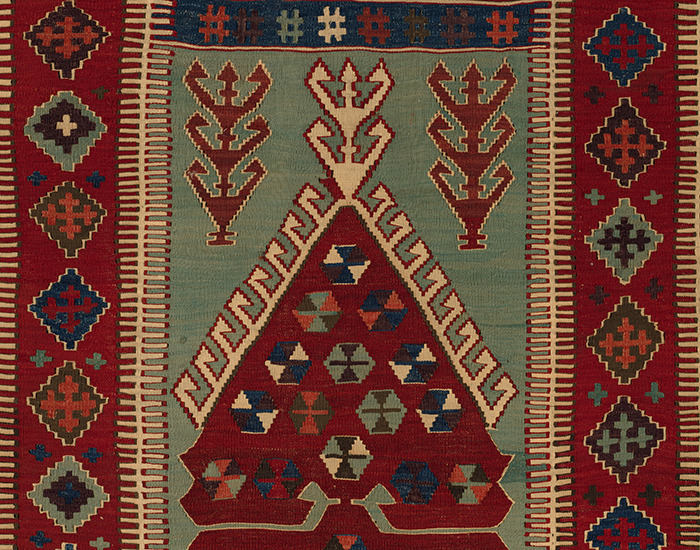
ARTICLE
Flatweave, pileless rugs usually made of wool, kilims are produced in Iran, Turkey, Central Asia and Afghanistan, with less expensive replicas produced in Agra and Lahore. Most kilims feature geometric and floral patterns as well as additional embellishments such as beading. The roots of the craft can be traced to Iran and Turan. It was introduced to India through the imperial carpet-weaving workshops of the Mughal Empire and flourished under the reign of emperor Akbar, who set up royal workshops in his palace in Agra as well as carpet-weaving centres in Agra, Delhi and Lahore. The carpets produced in these regions featured designs inspired by traditional Persian motifs and patterns. Most kilim designs are created by interweaving differently coloured warp and weft yarns using the slit weave technique. The slit is created by the gap between two patches of colours. Unlike the evenly spaced warp and weft of plain weaves, the tapestry weaves used in kilims feature spaced-out warps, over which the weft is densely packed to create weft-facing weaves that carry a pattern. The diagonal patterns and vertical slits strengthen the weaving as well as the overall structure of the rug and create bold and sharp designs. This also allows for reversible kilims featuring similar patterns on both sides. Kilims also use cotton, silk and animal hair (goat, horse or camel) in addition to wool. Whereas most kilims are made entirely of wool dyed in natural pigments drawn from plants, animals and minerals, some types alternate between using wool as the weft yarn and cotton as the warp yarn. Kilims often feature geometrical as well as floral designs depending on the weaving technique employed by the weaver; for example, the slit weave technique produces a diamond-shaped or triangular design with stepped or castellated patterns, while the somak weaving technique creates continuous, flowing patterns. Decorative beads and silver, gold and silk threads are also sometimes incorporated in the design. Most kilims carry motifs pertaining to specific beliefs and myths as well as symbols of luck, fertility and power. Traditional kilims also featured motifs drawn from the immediate surroundings of the weaver, primarily domestic items such as kettles and combs and natural imagery such as foliage. Today, kilims made with chemical and synthetic dyes are used not just as rugs and floor coverings but also as mule saddles, bags, upholstery, cushion covers and wall hangings. Antique kilims are held in the collections of numerous museums and galleries, including the Textile Museum, Washington DC; the Metropolitan Museum of Art, New York; the Museum of Turkish and Islamic Arts, Istanbul; and Sotheby’s, London.
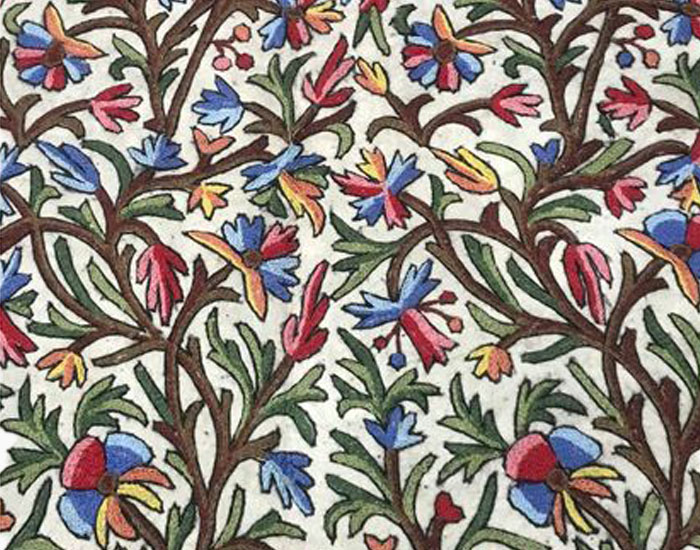
ARTICLE
Hand-felted and embroidered rugs produced in parts of Kashmir, Himachal Pradesh, Gujarat and Rajasthan, namda use felting instead of weaving, a technique that came to India from Iran and Turkey during the Mughal period. The technique of making a namda involves beating and fluffing the wool fibres with a wicker punja (comb) and then layering, matting and flattening. A minimum of three layers are prepared and each layer is spread separately, sprinkled with soapy water and pressed with a pinjra tool to enmesh and interlock the fibres. Each layer is flattened to a uniform size and dimension using water and heavy compression. This layered wool is then rolled out to rinse excess water, is washed with a cleaning agent and left in the sun to dry. Once completely dry, the rug is ready to use as plain or can be decorated using embroidery or appliqué. In the Kashmiri namda, cotton is often mixed with the wool fibre, making the base colour a light shade of white, which aesthetically makes room for vibrant embroidery. Most often the namdas are decorated with colourful aari and kashidakari embroidery using floral patterns and animal motifs such as the chinar tree, dachh (vine), cherry blossoms and pamposh (lotus). Namda making is a household craft practised primarily by the Muslim community and passed on from one generation to another. In Kashmir, namdas are used as mattresses and floor coverings as they are warm and cater to extreme cold weather conditions. In eastern part of Kutch, Pinjara and Mansoori communities practise the craft of making namdas as floor coverings – for the use of Darbar communities – and their process varies regarding the appliqué technique where a pattern of dyed wool is laid out first and then fused with other layers through compression. The making of namda rugs is a labour-intensive technique where a craftsman needs the assistance of three people to make two namdas in a day. Prominent manufacturing centres are situated in Tonk, Rajasthan and Srinagar, Kashmir where the rugs are sold in craft bazaars. There remains a notable demand for namdas in the urban cities and the international market, sustaining the craft through the years.
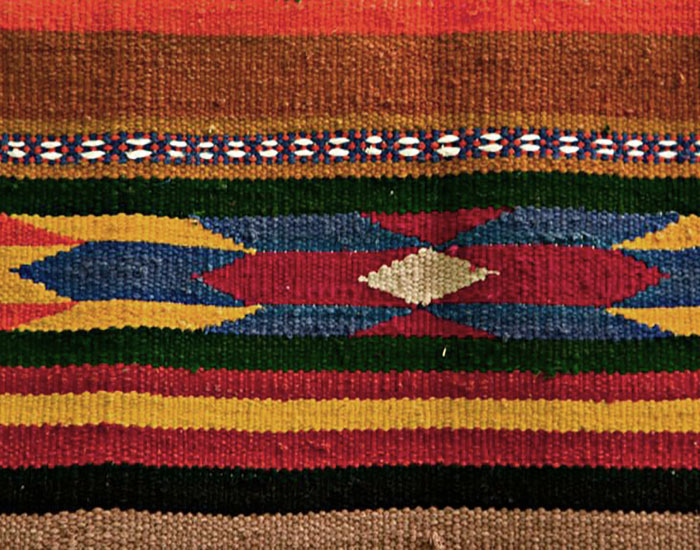
ARTICLE
A thick, flat-woven rug or carpet produced in Karnataka, India, that is primarily used as a floor covering, is known as Navalgund dhurrie. Navalgund or navedu in Kannada, refers to the peacock which frequently appears as a design motif in the dhurries. The origin of Navalgund dhurries goes back to the sixteenth century Bijapur when for the sake of safety and continuity of their craft, the jamkhana weavers migrated from Bijapur to Navalgund, amidst the power struggle between the Deccan Sultanate and the Vijayanagara empire. Navalgund dhurries are woven along the width on a vertical loom, locally referred to as khadav magga, with precise calculations on a naksha (graph). These are mostly weft-dominant where the warp consists of white cotton yarn and each design is unique. The designs include striped, stepped, serrated patterns with bright coloured wefts of red, yellow, blue and green, geometric designs and motifs of choukhas (dice game board), mor (peacock), charmor (peacock motif in four corners) and stylised intricate patterned mihrabs (niched arches). The dominant colour for the background is a bright red in most jamkhanas. The Navalgund dhurries are of various types and sizes – depending on their use – such as the jamkhana, which is used as a floor covering; the jainamaz, used as prayer mats; totalle jamkhana, used for cradles; and guddar which is used as a protective cover when storing grains. Towards the end of the nineteenth century due to rampant commercialisation of weaving in rural India, the design, colour sensitivity, dyeing of the Navalgund dhurries deteriorated significantly, stagnating the industry. To support the weavers, the Karnataka state government established a production centre and brought in artisans to work there but the number of artisans has fallen significantly due to the COVID-19 pandemic and the prolonged lockdowns in the state. In 2011, Navalgund dhurries received the Geographical Index (GI) tag from the government of India.
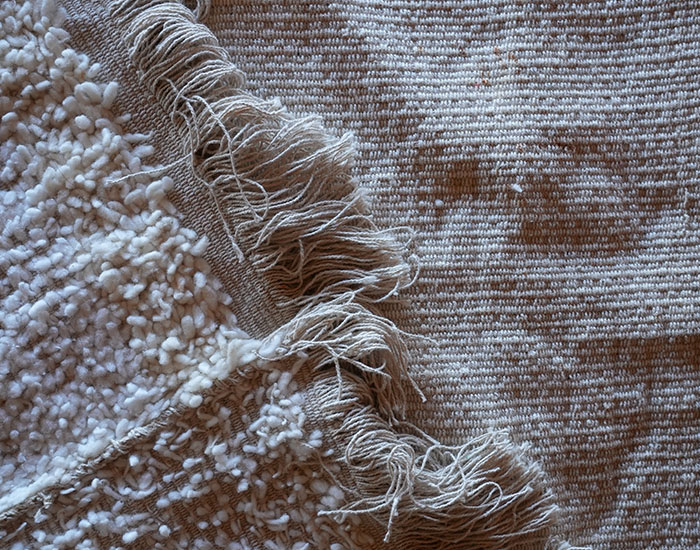
ARTICLE
Made by the indigenous Mising community of Assam also known as the Mishing or the Miri, this gadu is a thick fluffy blanket used during the winter season. Traditionally woven on a mini handloom, the process of weaving a gadu is intensive and can take up to a month. The warp of a gadu consists of thick, coarse cotton yarn, while the weft is formed by inserting three-inch pieces of soft, spun cotton one by one using a tool called the sumpa. As a result, one side of the blanket is fluffy while the other is coarse. An average gadu is 3 x 2.5 metres in size and is often formed by stitching two separate pieces together. The gadu is traditionally washed by soaking it for several days in an alkaline solution made of banana leaf ash mixed with water. The gadu is culturally significant in the Mising community. It is one of the gifts given to a bride by her mother, and the presence of a gadu in a household is considered to be a marker of social standing.
The decorative aspect of an art object is crucial to most Indian crafts, and is central to traditional beliefs about beauty and, in some cases, divinity or magic. This is outlined in aesthetic theories such as alamkara and dhwani, and put into practice through texts such as the Shilpa Shastras and the Raga Vibodha. Ornamentation is seen as an enlivening layer on existing craft objects and is applied to clothing, jewellery worn by human figures in art, the adornment of buildings with sculptures, the mood of a melody, and the inventive use of metaphor in language.
In some cases, materials with real-world value are used to ornament an object, such as gold and silver zari thread applied to Banarasi brocades and gota work in Rajasthan, or expensive pigments like ultramarine blue (derived from lapis lazuli) and gold used in illustrated manuscripts. Valuable materials may also be simulated, as in the case of beetle-wing embroidery, or embellishments like coins and cowrie shells used in Banjara embroidery. Temporary murals, such as Mandana, Sohrai and Khovar painting, are often used to mark important events by decorating a home or other important spaces. Ornamentation can also serve a talismanic function, as in the case of Kolam floor painting from Tamil Nadu, even when this is done by ritually marring existing decorative elements with motifs like the Nazar Battu in phulkari embroide
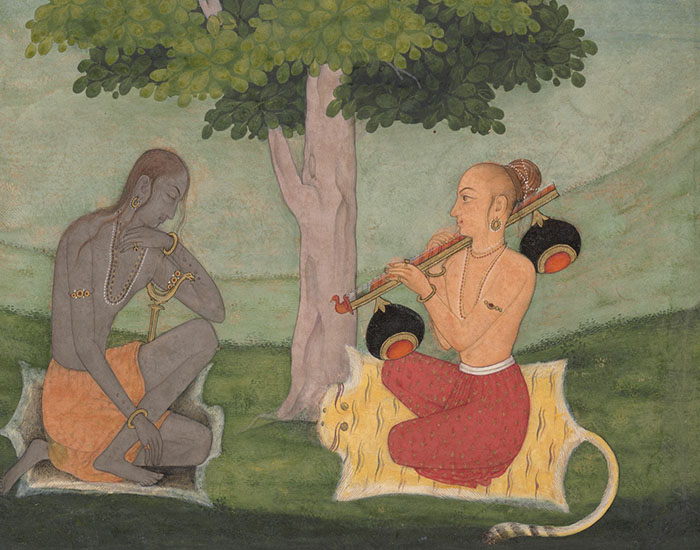
ARTICLE
Comprising a set of miniature paintings, a ragamala depicts the visualised forms of six ragas, or melodies, of Indian classical music as well as their derivatives or raginis. The term itself literally means “garland of ragas,” referring to both the musical and pictorial aspects of ragas and raginis. Ragamala paintings began to be made in the late fifteenth century, while ragas themselves have been in use in Indian classical music since the fifth century CE. The most prominent patrons of these paintings were the Rajput courts in present-day Rajasthan, for whom ragamala sets became an area of patronage within miniature painting. Ragamala paintings were historically made as a set of thirty-six or more folios, each accompanied by a Sanskrit verse or a mention of the associated raga. A raga, also known as a raag or ragam, is a specific series of notes arranged in fixed ascending and descending orders, with a prescribed degree of stress (called chalan) on each note. Each raga is meant to evoke a particular mood or atmosphere, through which its musical framework may be applied to other art forms, including the visual arts. While there are hundreds of ragas, the six ragas traditionally depicted in ragamala paintings are: bhairava, shri, malkauns, deepak, megh malhar and hindol. Within a ragmala, ragas typically represent seasons, weather changes or times of day. Further, each raga is personified as a human man, who is then paired with consorts (raginis), daughters (ragaputris) and sons (ragaputras), all of which are further derivations of the ragas found in Indian classical music. While the list of ragas and raginis in most ragamala paintings remains standard, variations and substitutions often occur in particular sets as a result of artistic liberty or the preferences of the patron. While the ragas were meant to represent the essence of seasonal and temporal change, the raginis were characters or nayikas whose individual stories added a human element to those seasons or times of day. Though ragas and raginis were not necessarily depicted in the same painting, the raga’s presence was always a part of a ragini painting in some form. For example, the ragini Bhairavi is depicted as a lone devotee of Shiva, at whose shrine she offers freshly plucked flowers, and the ragini Lalita is shown as a woman asleep in her bed while her lover departs, looking at her over his shoulder. Both these images, despite their many apparent differences, are meant to evoke the early morning bhairava raga, played in all seasons. The relationship between the raga and ragini is particularly important in ragamala paintings as a site for the exploration for romantic, erotic and devotional love. The increased patronage towards manuscript painting across the subcontinent in the sixteenth century coincided with the rise of the Bhakti movement. This resulted, among other things, in the depiction of love and divine devotion as nearly interchangeable concepts in Rajput painting. The earliest surviving example of ragamala painting is a set of ten images showing five ragas and five raginis, painted in the margins of a now lost manuscript made in 1475. These ragas are clearly divine figures, at least two of which can be identified as Shiva and Vishnu. However, the next instances of ragamala painting a century later show scenes of ragas and raginis in human form, particularly ones where raginis are longing for an absent lover. Such ragamala paintings were seen as a set of images describing the love between the human and the divine, evoking moods that could be playful, mournful, serene or secretive. This conflation of god with mortal and love with devotion, set against a lush, natural backdrop, was a result of emerging ideas of worship inspired by the Bhakti movement. Apart from Rajput kingdoms, ragamala paintings were also made for the Deccan courts of Ahmadnagar and Bijapur in the late sixteenth century, a period in which illustrated manuscripts received generous patronage in the region. Scholars speculate that Hindu feudal lords in the northern Deccan may also have commissioned a few ragamala sets around this time. By 1650, however, few ragamala sets were being made in the Deccan and many of these were supported by the patronage of Rajput courts, resulting in a hybrid style that catered to the tastes of specific Rajasthani courts while retaining the hand of Deccani artisans. In some cases, the facial features, costumes and accessories of ragas and raginis would appear overtly Mughal, despite not being made for the Mughal court. These may have been attempts by the vassal kingdoms in Rajasthan to gain favour with the Mughals by emulating their style or even painting these figures in the likeness of the Mughal royal family. From the late nineteenth century onwards, manuscript painting as a court art suffered a decline and, today, most ragamala sets have been dispersed across the world. Some examples can be found in the collections of the Metropolitan Museum of Art, New York, USA; the British Museum, London, UK; and the Salar Jung Museum, Hyderabad, to name a few.
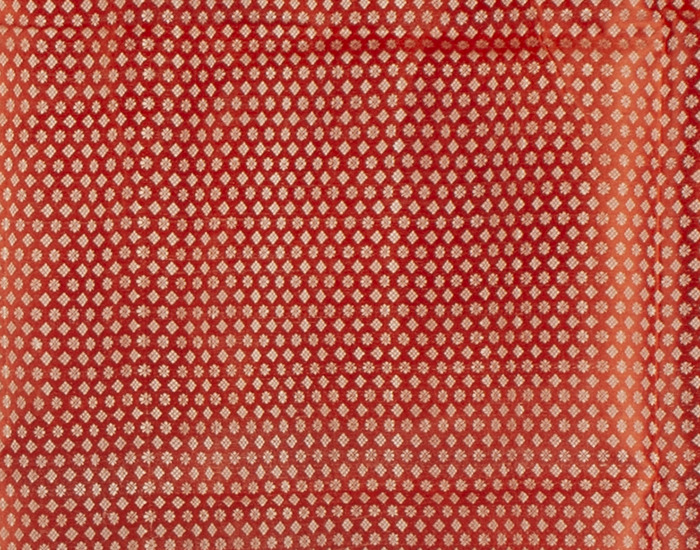
ARTICLE
Characterised by the use of rich gold and silver zari to weave motifs that appear embossed, the Benarasi brocade, named for the handloom weaving centre of Varanasi (formerly Benaras) from where it arose, has a distinctive style and language that has been developed over centuries. It is surmised that weaving techniques used to make brocades originated in India’s Vedic period (1750–500 BCE), based on the mention of hiranya vastra (cloth of gold) in the Rig Veda considered an allusion to brocades with heavy gold zari work. The brocade tradition, especially of Benaras, also has proposed links to Buddhism: Some scholars have suggested that patterns carved into stupas at Sarnath inspired the designs of textiles produced during the eighth and ninth centuries, such as devadushyas, that were then used to wrap around these stupas. It is also believed that the Buddha, upon renunciation, gave up his royal robes and instead dressed in kashika vastra, or cloth from Kashi. It is in fact claimed by the weavers of Varanasi that the Buddha was wrapped in Benarasi silk when he was cremated. Beginning early in the sixteenth century, the ruling Mughals, who were great patrons of the arts, introduced Indian artisans to a variety of designs and techniques from Persia (now Iran), which were subsequently incorporated into existing textile traditions. The Mughal elite, and later royalty from across India, patronised the rich Benarasi brocades, using them as part of their royal garb as well as to decorate their residences and courts, causing it to gain widespread renown and the weaving practice to flourish. Motifs inspired from Mughal miniature paintings and architecture — such as jaali, ashrafi, chand tara — along with floral and foliate designs continue to appear on Benarasi brocades alongside newer and more contemporary motifs. One of the most popular brocade textiles is the Benarasi silk saree, which is typically dyed red, fuchsia, green or indigo. The body of the saree features scattered zari and silk butis, while the pallu often features extensive and intricate zari brocade work, with motifs interspersed among jaali patterns and the angled parallel lines. The two corners on the outer edge of the pallu often feature a konia that is usually a kairi, paisley or floral buti. Narrow fringe-like patterns called jhalar are also characteristically found on the inner and outer edges of the saree. In addition to sarees, ornamental kinkhab brocades, with zari work so heavy that the silk base is obscured, are woven almost exclusively in Varanasi. Buddhist monasteries across India continue to patronise Varanasi’s craftsmen, who weave ceremonial fabrics such as or gyaser (or thiugyamo) which feature Buddhist motifs in the kinkhab style. Converting silk and zari yarn into brocades is a laborious process that involves several people, both men and women, and has historically been largely the preserve of the Ansari Muslim community. Every weaving establishment is headed by a grihastha, and the weavers working under him are known simply as karigars. Traditionally, the warp of the loom is wrapped around the warp beam or tanari by women. In preparation for the weaving, silk yarn is first boiled to remove traces of gum left by the silkworm, and sorted into hanks which are then dyed to achieve the desired colour, either by in-house dyers or specialised dyeing establishments near the weaving workshops. Once dry, the dyed yarn is wrapped onto a wheel before being transferred to spindles. Tanaris are also involved in wrapping threads around individual shuttles used to create designs. The zari, which may be used either in the warp or weft of Benarasi brocades is sourced from Surat in Gujarat or made locally in Varanasi. The number of zari or silk weft threads introduced into the fabric during the weaving process dictates the intricacy and the thickness of the brocade. A particular speciality of Benarasi brocades is the minakari brocade, where motifs are formed out of plain silk on a zari base, causing them to appear inlaid or embedded. The motifs to be woven into the fabric are drawn on paper within a numbered grid known as a naqsha by designers known as naqshabands. The designs are then coloured in, punched into cards by artisans known as patthakati and typically loaded onto a jacquard loom. Many thousands of cards are strung together to weave the richly brocaded fabrics of Varanasi. Once the fabric has been woven, it is taken off the loom and threads projecting from the edges are tidied using a needle. After this, an artisan known as the katorna carefully cuts the extra threads connecting the motifs on the reverse side of the brocade without damaging the cloth. This cloth is then held against light and carefully checked for flaws and cuts. It is subsequently stretched over a frame, sprayed with cleaning agents and polished, improving the shine and glaze of the metal threads. In the case of sarees, the fabrics are then usually sent to be ironed and folded for display in shops. Due to the high cost of the materials as well as the intense labour and skill needed to produce them, Benarasi brocades are considered a luxury fabric. While handwoven versions continue to be produced today, weaving communities have come under increasing pressure from mechanised reproductions of the fabric, which are often printed as opposed to woven. Gold-hued muga silk is also increasingly being used to imitate the lustre of the zari threads found in these brocades. Traditional handwoven Benarasi brocades have received a fillip from increasing institutional recognition and, in 2009, the Geographical Indication (GI) status from the Government of India for their territory-specific production and characteristics. In 2014, Ramlal Maurya, a master brocade weaver from Varanasi, was also conferred with the Sant Kabir award by the government. The Benarasi brocade, although still largely considered a luxury textile, has received much stimulus from organisations, individuals and the burgeoning fashion industry, to keep the long tradition of its production alive.
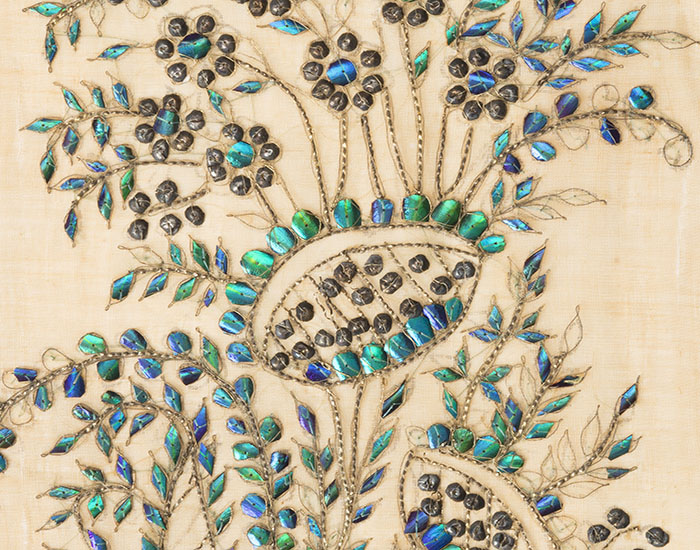
ARTICLE
Used to embellish clothing as well as home furnishings with the iridescent wings, or elytra, of the Jewel beetle of the Buprestidae family, beetle wing embroidery has been historically used in India, Southeast and East Asia and the Middle East. Their earliest recorded use in India dates back to the fifteenth century when the blue-green jewel tones of beetle wings were often paired with lustrous zardozi embroidery to decorate clothing worn to signify high status in the Mughal courts. Examples of this form of surface decoration began to appear in Europe, especially in countries such as England and France, which had well-established trade and colonial relations with Asia. During the Victorian era in Europe, this style of embroidery began to appear on gowns and accessories, and by the nineteenth century such embroidery work was being created in Benaras (now Varanasi), Calcutta (now Kolkata), Hyderabad and Madras (now Chennai), solely for the export market. A famous example of this was the “Peacock Dress” worn by Mary Victoria Leiter, or Lady Curzon the Vicereine of India, at the 1903 Delhi Durbar. The dress, now at Kedleston Hall, Derbyshire, was patterned like a peacock’s tail and was embroidered with zari and beetle wings. The wing casings of the Sternocera aequisignata are usually preferred because of their blue-green-purple iridescence as well as their durable coat of colour. In Japan, the wing casings of Chrysochroa fulgidissima, known as Tamamushi (‘jewel insect’), are used instead. The process of decoration is generally the same with minor regional variations. The casings are either sewn as a whole onto the material to be embroidered or are cut into small pieces, shaped and then stitched on the fabric, usually fine muslin or net, like sequins. In traditional examples like Mughal era clothing and turbans, they are usually added only around the edges of fabric due to their fragility and pierced using a fine retaining thread. In a few cases, particularly Victorian garments such as Lady Curzon’s Peacock Dress, one can see the casings embroidered in the body of the cloth as well. Today, medieval and colonial examples of beetle wing embroidery are preserved in the collections of the Victoria and Albert Museum in London, the City Palace collection in Jaipur, the Bharat Kala Bhavan at Benaras Hindu University and the National Museum in New Delhi. Since the beetle wing casings were part of elaborate garments that were rarely worn, they have largely survived well, even in cases where the textile itself may have deteriorated.
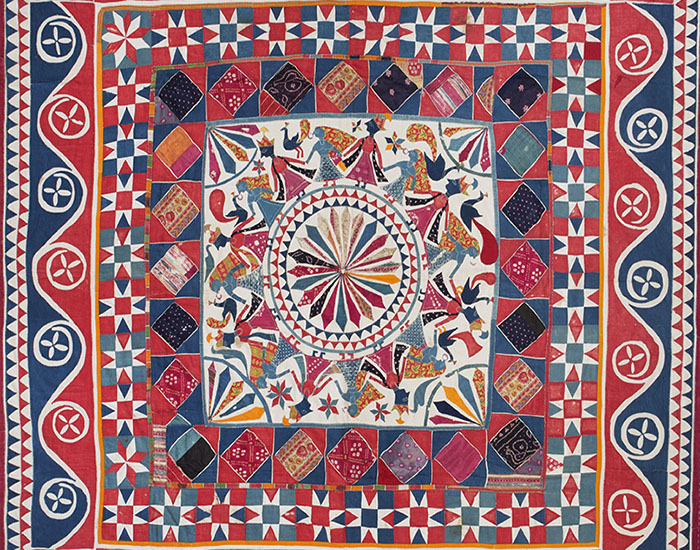
ARTICLE
An ornamental technique of sewing in which patterns and motifs are created by stitching layers of carefully cut cloth onto a base fabric. Its name is derived from the French verb appliquer, meaning “to put on.” Appliqué styles originated independently in many parts of the world, often alongside similar practices such as patchwork and quilting, most likely following the practice of covering tears by stitching small pieces of cloth over them. Several analogues of the technique exist around the world, varying greatly on both the intended use of the finished product as well as the cultural and regionally-specific motifs that appear on them. Forms of appliqué are particularly prevalent in the sartorial and textile traditions of South and Central America, some examples of which are mola reverse appliqué, practised by the Guna (formerly Kuna) people from Panama and Colombia; Chilean arpilleras, or patchwork pictures sewn on burlap cloth; and quilts appliquéd with chintz in eighteenth-century North America. There are several applique traditions in India, most traditionally used as a means to recycle leftover fabric. The oldest extant craft dates back to the twelfth century in Pipili, Odisha, where it is called Pipili chandua. The names of appliqué traditions in India, like the craft itself, differ between the many communities and regions in which they are practised. While several of them remain confined to their respective communities, some have come to be better known for their style and uses. In Pipili and Madurai (Tamil Nadu), appliqué has historically been used to decorate temple chariots and chattris; in Gujarat and Rajasthan, where it is known as katab, the tradition has flourished among the nomadic and pastoralist communities where it has been used to make camel and cattle covers, dowry and household items; in Himachal Pradesh and also to a greater extent in Tibet, intricate applique is used to create thangkas, or tapestries showing Buddhist religious narratives; in Bihar, khatwa appliqués have been used on shamianas, torans and for smaller items such as children’s caps and pillow covers; and in Maharashtra, the Banjara of Khandesh have generally used the technique to produce home furnishings and garments. There are two variations of the applique technique. In one, the overlying cloth may be cut into the desired shape and then stitched onto the base fabric to create patterns; while in the other, sometimes known as reverse appliqué, incisions are made in the layer of overlying fabric, revealing the base fabric to make patterns. Piping and embroidery may also be employed to lend detail or create outlines. The functions of appliqué textiles have evolved over time, often due to shifts in patronage. Most varieties do not attract specialised demand from outside their local economy and are often marketed nationally and internationally as generic “appliqué” products, rather than as regionally-specific products. Furthermore, these handmade goods are typically expensive because of the elaborate nature of the craft, and therefore face strong competition from cheaper, mass-produced textiles. Although artisans still receive commissions for traditional appliqué work today, the technique is now largely used for adorning clothing and household textiles such as curtains, cushion covers and tablecloths.

ARTICLE
The use of gold and silver ribbons, or gota, to embellish a variety of festive and ceremonial textiles, gota work can take the form of embroidery, lace or applique depending on the design. The craft has historically been associated with Rajasthan where it became popular among royal families before and during the British rule but has been used across India following industrialisation and the mass production of synthetic varieties of gota ribbons. Gota work, in both its traditional and contemporary avatars, remains a key element in the Indian fashion industry, and is especially used in bridal outfits and sarees. Gota ribbons were first made in medieval Lucknow by weaving gold or silver warp thread with cotton or silk weft. The widened surface of the fine flattened wire along with the shorter fibre wefts is the key reason for the gota’s sheen and lightness. The ribbons are often embellished or modified by artisans before being bought by designers to use in a variety of ways. Seekhi gota is a lace ribbon, usually used as an edge with little to no modification while gokhru embellishments are made by crimping together motifs cut from ribbons with thick wire, or pieces of the metal itself but is no longer practised due to the expense and the weight it adds to the fabric. To make phool gota, each plain ribbon, or a segment of it, is pleated into a circle to resemble a flower, then appliqued onto the fabric where it becomes part of a larger pattern. For the popular gota patti, meaning gota leaf, the ribbon is folded into some variation of an oval or diamond shape, back-stitched onto the fabric as part of motifs like florets, paisleys and peacocks, then hammered flat with a wooden implement. Alternatively, the gota patti form can be turned into a lace, as seen with bijiya gota, for which a row of diamond shapes are made in sequence on a plain weave ribbon without cutting it, which is then used as a border. Gota tukdi, another applique technique, involves cutting the ribbon into floral motifs and butas, and then sewing that down onto the base fabric. Gota applique is frequently paired with embroidery, usually along the borders of motifs, and in addition to garments, it is also used on traditional household furnishings like torans and Indian footwear like juttis. Apart from those mentioned above, other types of gota work include mothda, sal, bakhandi and lappa. In medieval and colonial era India, the royalty and nobility in the Mughal and Rajput courts of north India were the main consumers of gota work for garments, headdresses and footwear, establishing it as a marker of wealth and good fortune, or shagun. With the arrival of power looms in India in the early twentieth century, spinning the fine metal threads and weaving gota became a cheaper and faster process, making it affordable for ordinary people as a luxury good for special occasions. Substitutes for gota cloth, such as gilt, lurex or lesser metals like copper, are now commonly used in cheaper gota work, although ribbons made with real gold and silver are still prized for their quality and malleability. Their financial and cultural value also makes authentic gota work garments important heirlooms.

ARTICLE
A practice of mural art, mandana comprises floor and wall paintings, as well as painted relief art, on the exterior and interior surfaces of homes. Mandana as floor paintings is practised by various communities in Rajasthan, but the tradition of mural painting and clay relief art is primarily associated with the Meena community, who reside in Rajasthan, Gujarat and Madhya Pradesh. Within Rajasthan, the eastern districts of Sawai Madhopur, Tonk, Karoli and Dausa are considered to be the centres of the art form. The term, mandana, applies both to the technique and the completed piece itself. Traditionally made of red clay and chalk, mandana works are predominantly painted by women. As floor paintings, mandana are part of a diverse and long-established tradition of threshold decoration in India. In Rajasthan, floor mandana feature symbolic diagrams, wherein specific designs are created for specific occasions, from festivals such as Diwali, Gangaur and Makar Sankranti to ceremonies associated with childbirth, marriage and puberty. These designs are painted on the threshold of the house as well as in the prayer room, kitchen or inner courtyard. The knowledge of these designs and the technique of making them is passed down generationally from mother to daughter. In a traditional mandana, each section of the design links to a central area in the shape of a circle or a polygon and is bordered by a series of overlapping bands that lend the visual effect of a Moebius strip. The completed mandana is often surrounded by smaller motifs such as paglya, which symbolise footprints. Before mandana are drawn on the floor, the surface is prepared with wet cow dung and red clay or rati. The pigment is a solution of chalk, locally known as khari or kharia. While brushes may be used, the most common practice is to dip a cloth and squeeze it, letting the paint run down the fingers and onto the surface. A typical feature of floor and wall mandana is the intricate cross-hatching of varying thickness and style that fills the spaces between the outlines. In the case of wall mandana, the process begins after the monsoon, when mud houses are typically repaired and re-plastered. Following these repairs, a layer of cow dung and red clay is applied to the wall – a process locally known as lipai – providing a deep red base for the painting. Once the surface has been smoothened, the chalk solution is used to paint the surface. In Sawai Madhopur, wall mandana are made using two pigments: white from the chalk solution and red from the local red clay (geru) or haematite (hirmich). Brushes to paint wall mandana are made from date-palm or bamboo twigs, with one end of the twig crushed in a manner that forms bristles. Cotton swabs and reed grass are also used to apply the pigments. These wall paintings are usually done in the weeks leading up to Diwali, with women taking time out from their daily chores to paint. Within the Meena community, mandana are also used to adorn important spaces or add a decorative flourish in the interiors of homes. The granary — locally known as the kotha or kothi — is an important space in a Meena home and is decorated with geometric and floral mandana patterns. The hearth – also known as the chulha – is another space that is often decorated with mandana. A mandana made in relief and carved into the clay surface may further be embellished with mirrors, beads and coloured glass. While floor mandana have designs specific to an occasion, wall mandana use a wider array of motifs, inspired by wildlife or the social life of the community, as seen in motifs such as gujar-gujari (man and woman), bullock and camel carts. Unlike the mandana in Rajasthan, which is primarily made in white and red, more colours have been introduced in the designs made in Madhya Pradesh. Like other mural painting traditions that originated on mud surfaces, the mandana technique also faces a challenge with a decline in the number of mud houses. Local artists, however, have adapted their designs and motifs to paper and, in some cases, have also experimented with depicting modern themes using traditional techniques.
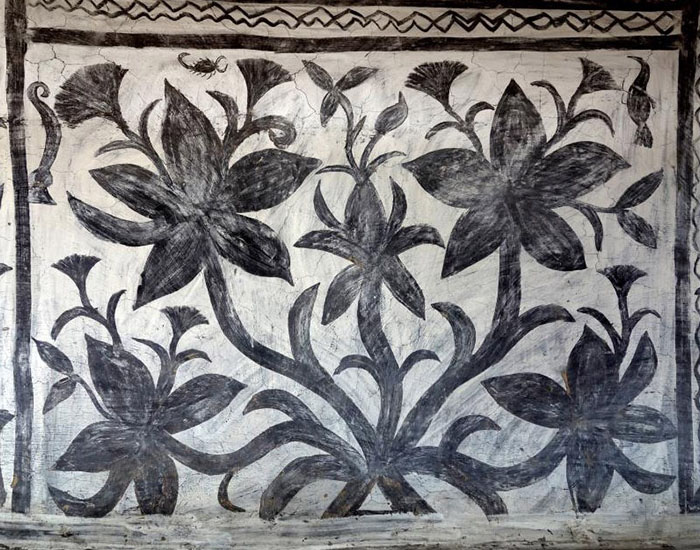
ARTICLE
A traditional mural painting used to decorate nuptial chambers, Khovar painting is practised by several indigenous and artisan communities residing in the Hazaribagh region of the eastern Indian state of Jharkhand. Along with Sohrai painting, Khovar is one of two historical mural-painting traditions of the region. Sohrai paintings mark the harvest festival – also called Sohrai – in October and November, whereas Khovar paintings mark the arrival of the wedding season, which begins in January and continues until the onset of the monsoon in June. The word Khovar is derived from kho, which locally means chamber or cave, and var, the word for a married couple. While there is little historical record of how and when Khovar painting emerged in the region, historians have linked these mural traditions to the rock art found in the Hazaribagh region, at the site of Isko and at the Satpahar Range, near the New Karanpura Valley. These sites – which were discovered in the early 1990s – are rock shelters and the painted art within these chambers has been dated to the meso-chalcolithic period (approximately 7000–4000 BCE). Historians have noted several similarities between the motifs and animal art in the rock shelters and the mural art practised by communities in the region. The painted shelters are locally also known as khovar and are believed to be ancient nuptial chambers. Among the Oraon people residing close to the rock shelters, the sites are still used for certain communal rituals. Khovar painting is done by women of the Santhal, Munda, Oraon, Agaria, Kurmi, Ghatwal, Ganju and Prajapati communities, as well as artisan groups such as the Ranas (carpenters), Telis (oil sellers) and Kumbhars (clay modellers). Under local marriage customs, the bridegroom spends the nuptial night at the bride’s home and this chamber is decorated with murals made by the bride’s mother and aunts. Khovar paintings may also be made on the exterior walls of the bride’s home. Like Sohrai painting, all pigments used are derived from different locally-found soils. A characteristic feature of Khovar painting is the use of the comb-cutting technique. The process begins with the application of manganese-rich clay, almost black in colour, onto a repaired and plastered surface. Once the black clay dries, the women apply a layer of white or cream-coloured clay and, while this layer is still wet, use pieces of comb or their fingers to scrape the layer and create paintings. The lighter layer of clay may be made of white kaolin (locally known as charak maati), cream-coloured earth (dhudhi maati) or yellow ochre (pila maati). The comb-cutting technique is also used to create Sohrai paintings, but these are distinguished from Khovar paintings by a wider colour palette. Themes commonly used in Khovar painting include the forest, aniconic forms, local animals and plants as well as geometric and linear patterns. In the Kurmi communities, Khovar art also features depictions of female animals, with their young shown in the womb, and human-animal conflict. With mud houses gradually being replaced by cement houses, Khovar painting is on the decline. The communities that practice it are also facing the challenges brought on by large-scale infrastructure projects in the region and the state. There has been an effort to help Khovar artists adapt the technique to paper or canvas. In such projects, the manganese-rich clay is dissolved using glue and water and then spread over the paper or canvas using cloth or a brush. The second, lighter layer is applied, and the pattern is crafted using a fine comb. In 2019, Khovar and Sohrai painting were accorded a Geographical Indications (GI) tag by the Government of India.
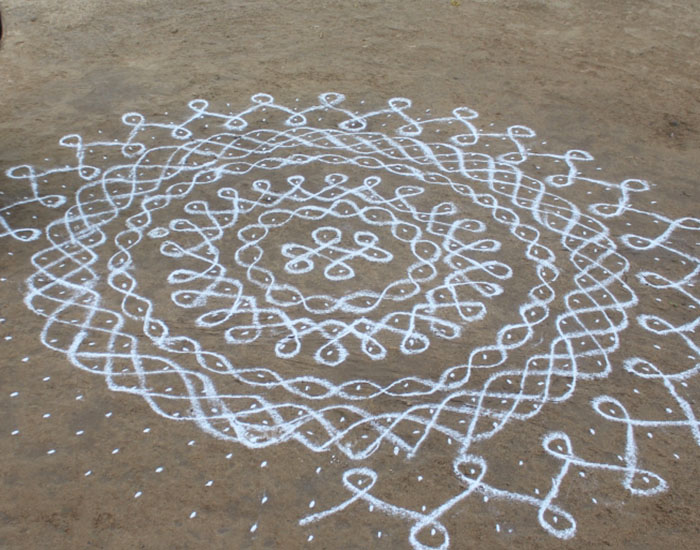
ARTICLE
A decorative floor design originating in Tamil Nadu, kolam is created traditionally with dry or wet rice flour and the designs are often geometric or based on a grid of dots. Kolam translates to “form” or “beauty” in Tamil and the earliest usage of the word as a form of decorative floor art is mentioned in texts such as the Madurai Meenatchiammai Kuram and Thiru Kutraala Kuravanji, dating to the sixteenth and seventeenth centuries respectively. The kolam is considered to be an invitation to the goddess Lakshmi, associated with wealth and prosperity; it is also believed to ward off the goddess Moodevi, a symbol of misfortune. The drawing of the kolam is a daily ritual that is taken up by the women of the house, before the break of dawn. The foundation of most kolam designs is a grid of dots, known as pulli. The designs created based on this matrix may be classified into two kinds — one where the lines loop around the dots, known as kambi kolam and another where the lines connect the dots in a particular pattern, known simply as pulli kolam. Within kambi kolams all lines must be drawn as closed loops. In designs where curved lines are drawn around the dots, it is known as chikku or sikku kolam. Even within pulli kolams, based on the lines used to connect the dots, designs may further be categorised as neli (curve) kolam, kodu (tessellated) kolam, woda pulli (a looped kolam with hexagonally packed dots) kolam or ner pulli (looped kolam with square-packed dots). According to scholars, kolam consists of the six categories of mathematical skills: counting, locating (identifying), measuring, designing, playing (experimenting) and explaining. For the women who practice the art of kolam, the designs are either passed on through generations or are created by experimenting with the permutations of dots and lines. The thickness and number of lines used to make the design may also vary based on how elaborate the kolam is. The ritual of drawing the kolam daily normally begins with sprinkling the ground or the surface with a mixture of cow-dung and water, making the surface damp for the rice flour to adhere to. The dry powder is pinched between the thumb and forefinger and sprinkled to create lines and dots that form the design. The use of rice flour is also beneficial for ants, birds and other small creatures to feed on. The dry rice flour may sometimes be replaced by chalk, limestone or powdered stone. In the case of the wet rice flour, a small piece of paper or cloth is dipped in it and squeezed between the middle and forefinger, and thumb, allowing the rice flour paste to run freely through the fingers which then act as nibs used for the drawing, known as makolam. The designs created with the wet paste last longer than the ones with the dry flour, though the ephemeral nature of the kolam, meant to disappear within the day, is a part of the ritual of kolam making. For special occasions, the white design of the kolam may be further accentuated by a red paste, made out of crushed red brick, known as kaavi. Types of kolams may also be classified based on the occasions that they are made for. Nalvaravu, or welcome kolams are popularly made on the thresholds of homes and carry lotus motifs, as a sacred symbol. Kolams during the harvest festival of Pongal, feature the chariot of the sun god, sugarcane, or the sun as important motifs, and may also be created in the kitchen around the stove, apart from being made at the threshold. During Janmashtami, kolam designs depict the footsteps of an infant Krishna entering the house. In addition during the auspicious month of Margazhi, (mid-December to mid-January), large kolams are made outside most homes and competitions are held to judge the best kolams. Muggu in Andhra Pradesh and Telangana, rangoli in Karnataka, sathiya in Gujarat, mandana in Rajasthan, aipan in Himachal, jhoti or chita in Odisha and chowkpurna in Uttar Pradesh, amongst several others, are other forms of floor decorative art that are similar to kolam. Contemporary designs of kolam have now come to accommodate other festivals such as Christmas. Additionally, stickers and stencils have also become popular and are available to recreate kolam designs.
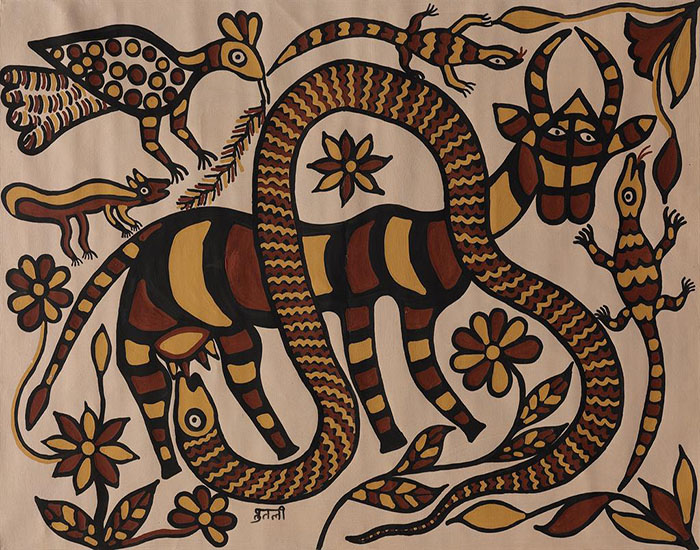
ARTICLE
Along with Khovar, Sohrai is one of two historical mural painting traditions of the Hazaribagh region of the eastern Indian state of Jharkhand. Sohrai murals are created on the external walls of homes to mark the festival of Sohrai and the harvest season, which lasts from late October to December. The word has its roots in the ancient word soro, which refers to the act of driving animals with a stick. Sohrai painting is practised by the women of several indigenous communities, including the Santhal, Munda, Oraon, Agaria, Kurmi, Ghatwal, Ganju and Prajapati communities. Sohrai is one of the chief festivals of the region, celebrated over five days after Diwali, and it marks the beginning of the winter harvest season. The celebration of cattle, central to the agricultural practices of the communities, is the main feature of this festival. On the second day of Sohrai, cattle are taken to the forest to graze and are bathed and brought back into the village, where women have painted Sohrai murals and floor art locally known as aripan. In the 1920s, the murals decorating the homes of these communities had been observed and recorded by administrators in the colonial era and by Indian anthropologist Sarat Chandra Roy. The discovery of painted shelters at Isko and close to the Satpahar Range near Hazaribagh in the 1990s provided historians with a link between rock art dating back to the meso-chalcolithic period (approximately 7000–4000 BCE) and existing artistic traditions in the region. Studies have found similarities between the motifs used in the painted shelters and those of the Sohrai and Khovar traditions. Among members of the Oraon community, who reside close to the sites, the rock shelters still serve as sites for certain community rituals. Sohrai painting encompasses motifs such as geometric figures, animals, flowers and plants, as well as representations of Shiva depicted as Pashupati, lord of the animals, in zoomorphic and anthropomorphic forms. The paintings are done by women, with the techniques and designs passed down from mother to daughter. The limited mobility of women in these communities has an influence on the motifs and designs and each village has developed a unique design style. When women move homes after marriage, they carry their traditional design knowledge with them into another environment, which introduces new characteristics into the existing styles. There is a more practical aspect to Sohrai painting as well: mud houses, on which these paintings are made, must be repaired and re-plastered following the monsoon, and the murals help provide another layer of protection to the structure, while also serving a decorative purpose. Once the mud houses have been repaired, women begin collecting materials for painting. All the pigments are obtained from local soils and, in some cases, from gruel made by mixing milk with ground rice from the previous year’s harvest. The palette is limited to black, red, yellow and white, although there may be variations depending on the soil available to different communities. Black is derived from manganese-rich clay, sourced from fields bordering forests. Red is derived from red ochre, locally known as gerua, or from haematite. Yellow comes from yellow earth ochre, which is locally known as nagri or pila maati, and white is derived from kaolin, locally known as charak maati. A cream-coloured soil, locally known as dhudhi maati, is also used in Sohrai painting. Kaolin is sourced from local tunnels, also known as chunna khaan. In the Sohrai art of the Ganju community, a purple-red pigment is also used, which is derived from haematite of the same colour. Water is used to dilute the soils, but the artists do not use any binders. The tools to apply the pigments include swabs of cloth, broken combs, nails, and twigs of the Sal tree fashioned into teeth cleaners, which are known as datwan or kuchi. The painting may be done by one of two methods. In the first, women coat the surface with a layer of white mud and, while the layer is still wet, paint on it using datwan or cloth swabs. Here, pigments are used in an order and carry symbolic value. Red is painted first, to denote the ancestors and fertility. Black represents the mark of Shiva and white, made from rice gruel, denotes food. In the second method, also known as the comb-cutting technique, a base layer of black clay is covered with white clay and, while the upper layer is still wet, patterns are drawn on it using a broken comb, fingers or nails. These details are then filled in with other pigments. Sohrai paintings of different communities have their own distinct characteristics. Those by the Kurmi community feature kamalban – a popular motif depicting a forest of lotuses – where finer details are made with the help of nails. The paintings of the Ghatwal and Agaria communities resemble stencil art: after the kaolin-clay layer has been applied, the wall is divided into rectangular segments and, on this layer, artists paint with darker clay in a way that leaves the base white layer exposed. Within the Munda community, which resides close to the rock-art site of Isko, artists paint community deities with their fingers and add vermilion and white spots to their art. Pashupati is often depicted as riding an animal or taking the form of a leaf. Sohrai painting, and mural painting traditions in the region in general, have been challenged by an array of factors over the last few decades. Cement and concrete houses are gradually replacing traditional mud houses. Jharkhand is also the site of several large-scale development and infrastructure projects, which threaten several communities with displacement. Efforts are being made by local organisations and individuals, such as Imam, to provide incentives to the artists to continue with the tradition and to train them to adapt the technique to paper and canvas. In 2019, Khovar and Sohrai painting were accorded a Geographical Indications (GI) tag by the Government of India.
A major result of the liberalisation of the Indian economy in 1991 was a surge in economic and cultural exchange between India and the world. Globalisation ushered in a sharp increase in the prices and sales of Indian art during the Indian Art Boom of the early 2000s. The Boom period established the careers of several emerging artists in India following the work of writers like Geeta Kapur, who laid out a historical backdrop of Indian Modernism. This sparked an academic interest in cultural production amidst the newly opened, fast-growing Indian economy, allowing for financial speculation on contemporary Indian art. Due to the rapid changes in the commercial infrastructure for Indian art, the Boom period is often criticised as the beginning of an era of opportunism, exclusivity and elitism in the Indian art community.
Artists of the time commented on changes in Indian consumption patterns and visual culture following liberalisation. They built on Modernist questions on how a nation is built, identified visible signs of India’s ascendant urban middle class, developed a vocabulary of symbols that emerged from uniquely Indian modernity and its tense relationship with the past, and exposed regional class and caste politics on large and small scales.

ARTICLE
With a practice that spans sculpture, painting, collage, video, photography and text, British-Indian artist Bharti Kher is known for her radical and heterogenous oeuvre, characterised by the recurring motif of the sperm-shaped bindi. Her art addresses issues of identity and culture that traverse the binaries of tradition and modernity, nature and technology and the spiritual and physical. Her work also engages with and subverts histories and categories of styles such as readymades, Narrative Figuration, Abstraction and Minimalism. She is best known for the scale of her sculptural installations. Born in London, Kher went on to study art at the Middlesex Polytechnic. She received a bachelor’s degree in fine art (painting) in 1988 from the Newcastle Polytechnic (now the University of Northumbria). During this period, she was deeply moved by the socio-political stirrings provoked by Margaret Thatcher’s brand of neoliberalism. When she relocated to Delhi in the early 1990s, she was confronted with the effects of globalisation and the sectarian strife in the aftermath of the Babri Masjid demolition (1992) and the Bombay riots (1992–93). Although not immediately reflected in her works, these events left a deep impression and were instrumental in shaping her artistic direction, resulting in works that served as a commentary on the nature of violence. Through the 1990s, Kher was occupied with finding a way to address the social issues of patriarchy, ritual taboos and superstitions in India in her art. Juxtaposing Indian cultural references against her wry sense of humour, she sought to investigate and transgress cultural codes from the perspective of an outsider looking in. This led her to adopt an almost ethnographic process of surveying, collecting and transforming objects with the aim of recasting the viewer’s relationship with them while situating the contemplative aspects of the works comfortably against their political implications. She started working with the bindi in 1993, using it as a material, much like paint or clay. Her unconventional use of the object introduces a duality to the bindi, stripping it of its mundane associations in the face of its domestic, ritual, consumerist and metaphysical connotations. One of her earliest bindi works, Spit and Swallow (1999), took the form of two separate panels, each bearing a large circle teeming with sperm-shaped bindis that radiated outwards in one and converged inwards in the other, meshing the symbols of male and female fertility. Other works feature felt bindis pasted over aluminium composite or painted boards — placed in concentric circles, divided into squares and rectangles, used in acentric configurations or in mandala-like geometries — as well as on maps and in satellite images. Another prominent part of Kher’s practice are her sculptural works. Created using various mediums and replete with chimeras and mythical figures, they challenge patriarchal and anthropocentric narratives. The Girl With The Hairy Lip Said No (2004) features a crochet tablecloth upon which lies broken porcelain and a cup with a fistful of hair — alluding to the perceived havoc wrought by the refusal of a marriage proposal by a girl. In the part-animal, part-human composite of Arione (2004), a dominatrix serves muffins on a tray upon which her naked breast rests, speaking to the repressed fantasies of womanhood. In her animal sculptures, Kher combines ferality with tenderness and innocence, covering the sculptures in a coat of colourful, pulsating bindis. Some of these works — such as a life-size elephant (The Skin Speaks a Language not its Own, 2007) or the heart of a whale (An Absence of Assignable Cause, 2007) — are modelled with anatomical accuracy and made to their original scale, challenging the dimensions of a gallery space. Kher also uses objects such as wooden wheels, mannequin body casts, pillars and architectural remains, such as in Impossible Triangle (2012). Kher’s work has attracted a large international audience, most prominently through her solo exhibitions that include Virus at the Baltic Centre for Contemporary Art (2008); A Wonderful Anarchy at Hauser & Wirth, Somerset (2019); A Consummate Joy at the Irish Museum of Modern Art, Dublin (2020); and An Unexpected Freedom of Chaos at the Galerie Perrotin, New York (2020). She has also participated in several group exhibitions at institutions such as Art Gallery of New South Wales; Kochi Biennale Foundation; Guggenheim Abu Dhabi; Museum of Contemporary Canadian Art, Toronto; Le Centre Pompidou, Paris; National Museum of Modern and Contemporary Art, Seoul; KHOJ International Artists’ Association, Delhi; and Yale University School of Art, New Haven. Her work is part of the permanent collections of the Tate Modern, London; the Walker Art Center, Minneapolis; the Vancouver Art Gallery; and the Devi Art Foundation in New Delhi. She won the Sanskriti Award in 2003 and the ARKEN Art Prize in 2010 and was bestowed the honour of Chevalier dans l’Ordre des Arts et des Lettres (Knight of the Order of Arts and Letters) by the French Government in 2015. Kher is married to artist Subodh Gupta and lives and works in Gurgaon, Haryana.
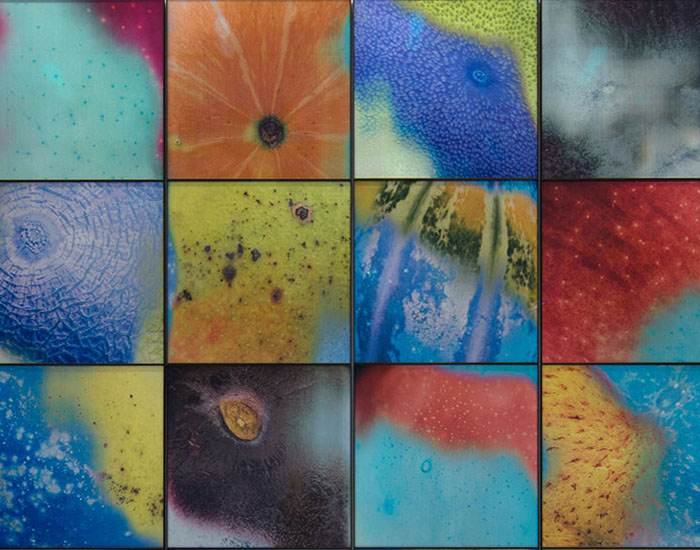
ARTICLE
A contemporary artist working across mediums such as painting, sculpture, video, photography and telescopes, Jitish Kallat’s work reflects on our current times, the cosmos and historical recall. Kallat received his BFA in painting from the Sir JJ School of Art, Mumbai, in 1996. This was immediately followed by his first solo exhibition at Chemould Prescott Road and Prithvi Gallery. Kallat received acclaim during his early years as a painter, his distinct visual style drawing from the streets of Mumbai and inspired by billboards, graffiti and political posters. He presented everyday life in the city with its bustle and vital movement in works such as Modus Vivendi (1000 people - 1000 homes, 2000). His work is marked by the graphic treatment of Mumbai’s urban landscape and its range of particular issues such as crises of housing and transportation, city planning, caste and religious strife and the onset of globalisation. Kallat’s work further studies universalised states of sustenance, birth, death and morality. In Traumanama (The Cry of the Gland, 2008), he paints abstract anatomical studies in formations of muscle, bone and lymph. His works such as Wind Study (2017), Circadian Study (2020), and Integer Study (2020) come together as odes to observation and carry references to natural cycles, mathematical arrangements and routine. More recently, Kallat has extended beyond the scope of painting to create sculptures, installations and new media work which have been celebrated for their attention to detail and monumentality. Epilogue (2011) — based on an earlier work, Conditions Apply (2007) — is an assemblage of 22,500 chapattis labelled through months and years, tracing out the 753 lunar cycles that quantify his father’s lifetime, where the chapati in its varying stages of consumption and roundness is symbolic of the moon. His sculptural elements are also used in framing, such as the bronze gargoyles depicting details of the colonial era Victoria Terminus railway station and holding artwork such as Haemoglyphics (Archipelago of Ashes, 2009). He uses text in several of his works; in The Lie of the Land and Humiliation Tax (2004), he appeals for religious tolerance and fraternity by using the transcript of a speech made by the Hindu thinker Swami Vivekananda in 1893 in Chicago. His seminal installation Public Note 3 (2011) once again recontextualised Swami Vivekananda’s speech, but this time in light of post-9/11 paranoia in the United States; the text of the speech was illuminated on the stairs of the museum in the bright colours of US Homeland Security’s threat-level code. In Covering Letter (2012), Gandhi's plea to Hitler urging him to not go to war and to maintain a peaceful world order is projected as a fog-screen installation, where the words appear and erode in a descending mist. This work was part of the Indian pavilion at the Venice Biennale in 2019. Kallat’s solo exhibitions have been displayed at the Art Institute of Chicago; Dr. Bhau Daji Lad Museum, Mumbai; the Ian Potter Museum of Art, Melbourne; Chhatrapati Shivaji Maharaj Vastu Sangrahalaya Museum, Mumbai; San Jose Museum of Art, to name a few. His work has also been shown at Tate Modern, London; Martin-Gropius-Bau, Berlin; the Gallery of Modern Art, Brisbane; Serpentine Galleries, London; and Mori Art Museum, Tokyo, among others. His work has also been shown at international biennales and expositions such as the Havana Biennale, Gwangju Biennale, Asia Pacific Triennale, and Fukuoka Asian Art Triennale, among others. Kallat’s work is part of several public and private collections, such as the Bihar Museum, Patna; Smithsonian Museum, Washington DC; Brooklyn Museum; Centre Georges Pompidou, Paris; and Devi Art Foundation, New Delhi. In 2014, he was appointed the curator and artistic director of the Kochi Muziris Biennale. His mid-career retrospective was held in 2017 at the National Gallery of Modern Art (NGMA), New Delhi titled Here After Here 1992–2017. Kallat is married to fellow artist Reena Saini Kallat. At the time of writing, he lives and works in Mumbai.
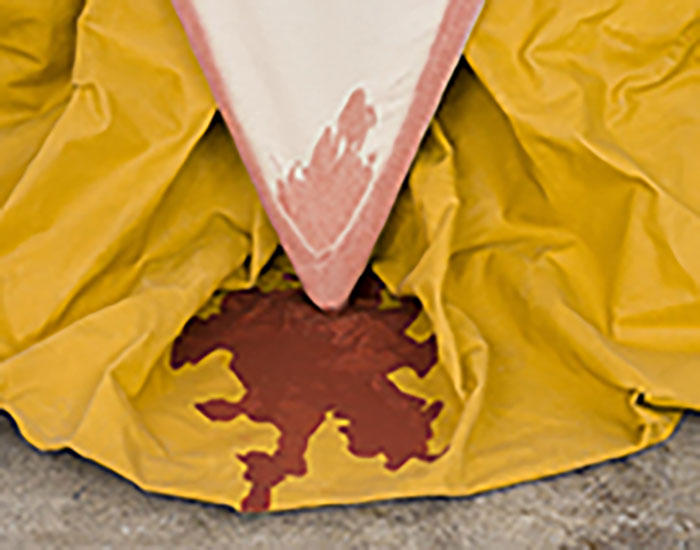
ARTICLE
A multidisciplinary artist based in Los Angeles and Mumbai, Neha Choksi works with performance-based film and video art, incorporating sculpture, photography and paper-based art. Often taking the form of physical situations and interventions, her art seeks to create a space for poetry, absurdity and humour in the lives of both its viewers and its subjects. Choksi’s work is rooted in simple, playful and memorable propositions based on philosophical questions about existence. It involves creating physical actions within unconventional yet poetic settings, which ultimately conclude with erasure or transformation. Born in Belleville, New Jersey, Choksi grew up in Mumbai but returned to the US for her college education. In 1997 she completed a double major in art and Greek from the University of California, Los Angeles and in 2000, a master’s in classics from Columbia University, New York. A deep interest in poetry underpinned both her choice of classics for her postgraduate studies and her subsequent practice in the visual and performative arts. A series of three video works titled Trilogy on Absenting: Leaf Fall, Minds to Lose, Iceboat (2007–13) embodies Choski’s most important concerns around time, loss, transience, memory, consciousness and transformation. In Leaf Fall (2007–8), a troop of actors pluck a tree bare over the course of a day, leaving behind a single autumnal leaf, which comes into prominence only in the absence of the others. Her thoughts on presence and absence found expression in their literal and physical sense in Minds to Lose (2008-11), during which she used anesthetics to investigate the universality of the experience of unconsciousness. Themes of transience and self-erasure took centre stage in Iceboat (2012–13), which showed the artist rowing a boat made of ice until it melts completely into the lake on which it was rowed. Later works include the multi-channel film Faith in Friction (2017), shot on the construction site of an expansive and modern Jain ashram. It involved a collaboration with several friends, using physical, gestural and vocal dialogue to explore the structures and limits of self-reliance and interdependence. The site of the work was deliberately chosen to inquire into the philosophy of individualism, central to many spiritual traditions and Western models of psychotherapy. Choksi’s work has featured in several notable group and solo exhibitions at venues and events such as the Asia Pacific Triennial, Brisbane and the Shanghai Biennale in 2012; the Kochi-Muziris Biennale in 2014; the Hayward Gallery Project Space, London, in 2015; the Hammer Museum, Los Angeles, in 2018; and the Dhaka Art Summit in 2016, 2018 and 2020. Choksi was honoured with the California Community Foundation Fellowship for Visual Artists in 2019 and the Individual Artist Fellowship from the City of Los Angeles in 2021. In 2017, she also won the India Today Best New Media Artist of the Year award. As of this writing, Choksi continues to live and work between Mumbai and Los Angeles, where she also serves as one of the editors of the arts journal X-TRA. Her work is represented by Project 88 in Mumbai.
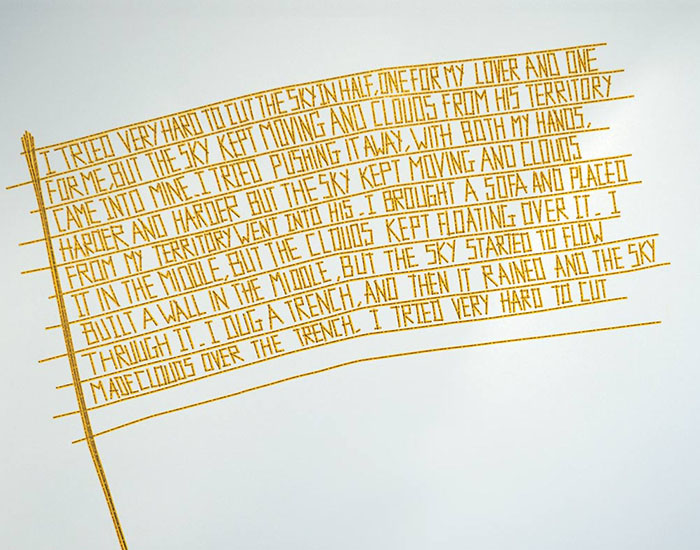
ARTICLE
A Mumbai-based multimedia and multi-format artist, Shilpa Gupta uses text, video and found objects along with drawings, interactive media installations and performance in her practice. The key concerns of her work are cultural identity, uncritical stereotypes, national borders, urban environments and the process of seeing and receiving synthesised images. Gupta was born in Mumbai and graduated with a BFA in sculpture from the Sir JJ School of Art in 1997. Her works are informed by the cosmopolitan environment of Mumbai and serve as deeply personal expressions of the friction between the fluidity of multiple inhabitations and the rigidity of language, gender, religion and map lines that result in complacency and fixed viewpoints. As a member of a generation of artists whose work responded to the political climate of the 1990s, Gupta’s critical gaze addresses religious fundamentalism and jingoism, resulting in recurring themes of identity, gender, religion, dissent and collective action, as well as the history and networks of globalism. In her work, Gupta draws on memory and desire to challenge dominant narratives and linguistic regimes. She uses non-linear narratives, discontinuous stories and multiple perspectives to blur the boundaries between art and communication in the age of globalisation. Her works, such as Memory (2007) — a site-specific installation which consisted of a cut-out of the word “memory” on a large white wall (reminiscent of the Berlin Wall) — illustrate the punctures in memory that cause recurring lapses in reason. For her series 100 Hand Drawn Maps of My Country (2008–), she traces maps drawn from memory by people from countries with troubled border histories, such as India, Canada, Israel, Palestine, France, Italy and South Korea, to create a multi-layered map that questions the idea of borders and nations as fixed concepts. Her work Blame (2002–04) was created as part of a public exchange project between India and Pakistan called Aar-Paar, in 2002 — the year of the Gujarat riots. This participatory work required volunteers on local trains to separate and distinguish fake blood in small bottles labelled “Blaming you makes me feel so good, so I blame you for what you cannot control, your religion, your nationality…” In another interactive performance titled There is No Explosive in This (2007), participants on the streets of London were invited to carry a cloth-covered bag printed with the name of the work. The work served to question people’s perceptions of and preoccupations with objects, carriers and sources of terror, as well as to critique art as a commodity. Her large-scale installation, For, In Your Tongue, I Can Not Fit, was part of the 2008 Kochi-Muziris Biennale. The installation consisted of one hundred metal spikes piercing sheets of paper containing verses by imprisoned and persecuted poets and authors writing in various languages, including Arabic, Azeri, Russian, Hindi, Spanish and English, accompanied by a hundred suspended microphones through which the verses were narrated. The work aimed to highlight the repeated political infringement of freedom of speech and expression across the world. Her work Untitled, first shown in 2009 at the Lyon Biennale and ten years later at the 58th Venice Biennale, demonstrated the inherent capabilities of manmade objects that are defined by their pre-assigned functions. Consisting of a mechanised metal gate with tall spikes designed to hit and break the wall upon which it was hinged, the installation blurred the boundaries between protection and vulnerability and took aim at constantly shifting geopolitical relationships. Gupta’s work has been shown at venues such as the Museum of Modern Art (MoMA), New York; the Solomon R Guggenheim Museum, New York; Tate Modern, London; Serpentine Gallery, London; Centre Pompidou, Paris; and Mori Museum, Japan. She was also awarded the Transmediale 2004 Award in Berlin; the International Artist of the Year award in 2004 by the South Asian Visual Artists Collective, Toronto; and the Sanskriti Pratishthan Award, 2004. Several of Gupta’s works and their prints, such as 01:14.9 (2012), There is No Explosive in This and There are No Borders Here (2006) have fetched significant sums at international auctions. At the time of writing, Gupta lives and works in Mumbai, India.
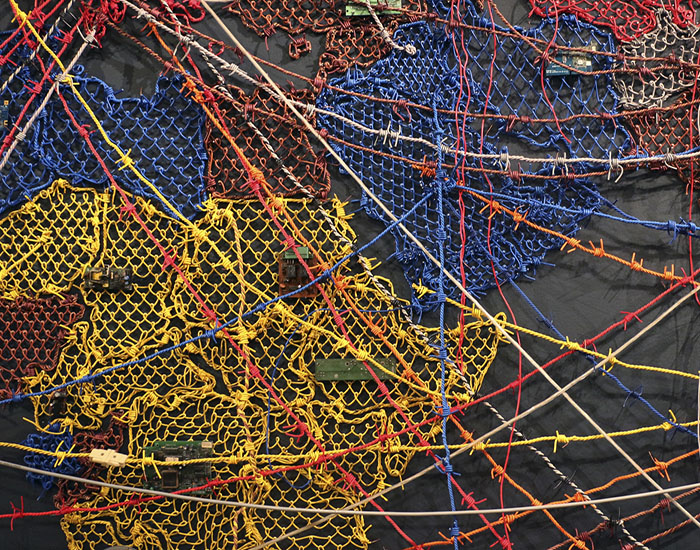
ARTICLE
A contemporary artist who works across mediums such as drawing, photography, sculpture and video Reena Saini Kallat was born in Delhi and received a BFA in painting from the Sir JJ School of Art, Mumbai in 1996. Her work ruminates on issues of migration, memory and the myths of the nation-state and is significantly informed by inquiries into the nature of nationhood, national borders, legal documents, bureaucracy, memorialisation and erasure. Throughout Kallat’s vast body of work, an array of thematic predilections can be outlined since her art works through a complex network of codes and motifs and reinvests them with meanings. One such motif is that of the rubber stamp. A recurring presence, the rubber stamp comes with its particular associations to bureaucracy and governmentality. While it symbolises sanction and power, Kallat inverts and inflates the rubber stamp to restage postcolonial dilemmas. In her monumental painted sculpture Untitled (Cobweb/Crossings) (2013), she created a cobweb composed out of hundreds of rubber stamps, each bearing the colonial name of an Indian street which has since then been replaced by an indigenous name, reflecting the nature and practice of decolonisation, while also bringing to fore the contested nature of history. Another motif present in her work is the electric wire, symbolising the Partition of India and resonating with Kallat’s family’s movement across the new border. In her work, the line is often a device that marks a range of incisions: the violence of the nation-state, the enclosure of borders, the interlinkage of global networks. It also becomes an instrument for hybridisation, merging composite forms to reflect on the history of the subcontinent. In retracing these lines of control in her work, Kallat points our attention to its geometric, cartographic and chronological fixity. For instance, in Leaking Lines (2019), she reinscribes the borderlines marked by the Partition: Radcliffe Line, Curzon Line and McMohan Line; the border appears abstract, underscoring the scale of its presence and absurdity. In Anatomy of a Distance (2014) and Half Oxygen (2014), wires are woven and embroidered. While the former is fitted with motion sensors that correspond to a divided landmass, the latter’s painstaking warp and weft create a pair of lungs — half of which takes the form of a banyan tree, the national tree of India, and the other half takes that of the deodar tree, the national tree of Pakistan. Kallat’s work has been widely exhibited at museums such as the National Museum of Asian Arts (Guimet, Paris), the Manchester Museum (UK), Dr Bhau Daji Lad Museum (Mumbai, India), Kennedy Centre (Washington DC, USA), Museum of Modern Art (New York, USA), Tate Modern (London, UK), Saatchi Gallery (London, UK), Arken Museum of Art (Denmark), ZKM Museum of Contemporary Art (Karlsruhe, Germany) Oscar Niemeyer Museum (Curitiba, Brazil), Museum of Contemporary Art (Shanghai, China). She has been part of international art fairs and biennales such as Bangkok Art Biennale (2020), Havana Biennial (2019), Busan Biennale (2016), Goteborg International Biennial for Contemporary Art (2011), the Vancouver International Sculpture Biennale (2011), the Asian Art Biennale, Taiwan (2009), among many others. Kallat’s work is part of several public and private collections including Manchester Museum (UK), Initial Access (Frank Cohen Collection, UK), Pizzuti Collection (Ohio, USA), Burger Collection (Hong Kong, China) Fondazione Golinelli (Bologna, Italy), Kiran Nadar Museum of Art (New Delhi, India), Dr. Bhau Daji Lad Museum (Mumbai, India) and National Gallery of Modern Art (New Delhi, India) among others. She is married to the artist Jitish Kallat and at the time of writing, Kallat lives and works in Mumbai.
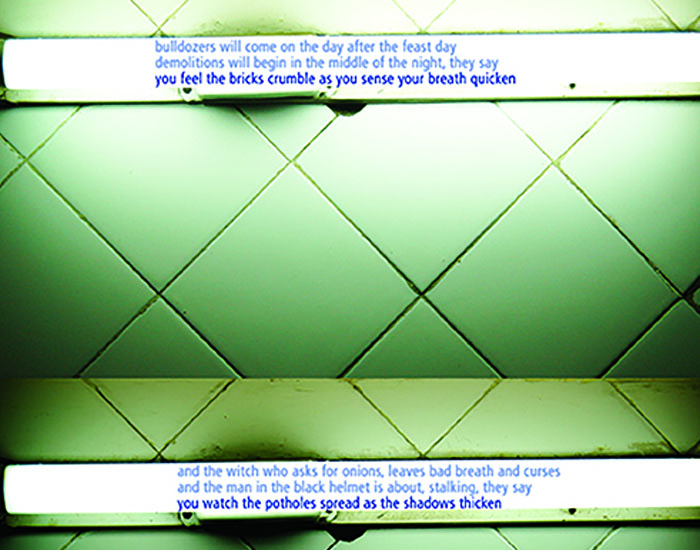
ARTICLE
Founded in 1992 by Jeebesh Bagchi, Monica Narula and Shuddhabrata Sengupta, Raqs Media Collective is a contemporary multimedia art practice based in Delhi. It explores themes of identity, location, power and history through a multidisciplinary practice that includes documentary filmmaking, new media installations, performance art, research, critical writing and curation. Formed a year after the trio graduated from the AJK Mass Communication Research Centre at Jamia Millia Islamia University, New Delhi, Raqs crystallised around the shared leftist tendencies and common critical concerns of its three members. Named for the Persian, Urdu and Arabic word used to denote the state of heightened consciousness achieved by whirling dervishes, Raqs is also an acronym for Rarely Asked Questions, a theme that is central to the Collective’s work. The artists collaborated on various freelance writing projects and productions through the early 1990s — such as director Pankaj Butalia’s documentary on the widows of Vrindavan — before formally coming together as the Collective. Inspired by the state of “kinetic contemplation” attained by whirling dervishes, their work centres around the relationship between space and time and identity and culture. Critical of the prevailing discourses of nationalism and multiculturalism, they look to other kinds of narratives to explain social and personal histories. Their practice defies the spatial and typological conventions of art through a combination of visual, academic and theoretical disciplines — ranging from filmmaking and political philosophy to criminology and the biological sciences. Between 2000 and 2013, the Collective grew more active in their roles as researchers, writers and intellectual provocateurs. They co-founded the Sarai Programme at the Centre for the Study of Developing Societies (CSDS) in Delhi, also serving on the editorial board of its publication, the Sarai Reader series. During this period, Raqs collaborated with researchers at the programme to produce work in a variety of forms that included film, photography, publications (online and print), installations, archival projects, public interventions, lecture-demonstrations and pedagogical experiments — establishing their multidisciplinary approach as a hallmark of their practice. Despite the fluid nature of their work and philosophical interests, the Collective often uses Delhi as the focal point of the dynamics they seek to examine, especially in their explorations of sites and locations. In 2002, they showed their work 28°28' N / 77°15' E:: 2001-2002 An Installation on the Coordinates of Everyday Life in Delhi at Documenta 11. The work consisted of printed stickers and signboards in Hindi, English, Turkish and German, alongside text, video and sound recordings – together forming a commentary on urban dispossession and the relationship between signages and legal prohibitions and the depletion of the commons. Raqs has shown at the Kochi-Muziris Biennale and other biennales in cities such as Venice, Liverpool, Istanbul and Taipei, as well as at institutions such as the Tate Britain, London; Centre Pompidou, Paris; Mori Museum, Tokyo; Art Unlimited, Basel; and the Hayward and Serpentine galleries, London. Some of their notable international curatorial projects include the exhibition The Rest of Now, for the 7th edition of Manifesta (2008), Bolzano, Italy, and an exhibition on contemporary Indian art titled Indian Highway at the Serpentine Gallery, London in 2008. In 2013, they presented a nine-month long exhibition, The Sarai Reader 09: The Exhibition, at the Devi Art Foundation, Delhi. Significant for its unique format as a dynamically unfolding exhibition, it gathered the works of practitioners across disciplines — including filmmakers, writers, performers, dancers, musicians and magicians — over the nine-month duration. In 2015, they presented the largest and most wide-ranging survey of their practice, spanning the previous decade, titled Untimely Calendar (Asamayavali), at the Jaipur House in the National Gallery of Modern Art, Delhi. The following year, they were nominated chief curators of the 11th edition of the Shanghai Biennale. They curated Five-Million Incidents in collaboration with the Goethe-Institut, Delhi and Kolkata from 2019–2021 and were appointed the artistic director of the 2020 Yokohama Triennale titled Afterglow. The Raqs Media Collective continues to practice out of Delhi.

ARTICLE
Born in Khagaul, Bihar, Subodh Gupta is an artist who specialises in installation art using readymades to reflect on issues of migration, class and globalisation. Objects of mass domestic utility — from cowpats to metal pots and pans, plates and oversized steel kitchen racks, sometimes cast in silver and gold — are his signature raw materials. Through Formalism, he draws attention to the social construction of value and presents the uneasy dynamics between faith and poverty, modernity and capitalism, and “lower-class values” and high art. Gupta’s father was a railway guard and his mother a homemaker. Railway networks and stainless steel utensils — symbols of his parents’ lives — became key signifiers of modernity in his later work. Gupta’s interest in art was initiated by his association with local theatre groups for whom he designed posters. He enrolled in the Patna College of Arts and Crafts in 1983 to receive formal art training. He also began working part-time — and later full-time — as an illustrator at a newspaper in Patna. In 1988, he quit his job and moved to Delhi to work as artist-in-residence at the government-run Garhi Studios, where he met fellow artist Bharti Kher, whom he subsequently married. Gupta’s works explore his experiences of growing up in a village in Bihar, playing on the migrant crisis, “cow-belt” politics, caste conflicts, illiteracy and poverty. One of his earliest works, Bihari (1999), features a field smeared with cow-dung with his face at the centre of the canvas, underscored by the Hindi word “bihari” outlined in Devanagari script with twinkling lights usually found decorating roadside tea and paan stalls. His work speaks to the dislocation and movement symptomatic of a globalised and urbanising economy: some of his paintings depict unidentified young men stacking plastic and fertiliser bags atop taxis and conveyor belts, or carrying cardboard boxes with international brand logos. Gupta frequently also uses cow dung to explore these dynamics. In his practice, cow dung is smeared all over his body or in the form of an elliptical structure within a white-cube setting, transforming its traditional and ritual associations of sanctity and purity to portray how the values associated with objects change across time, space and context. One of Gupta’s most significant moments came when he shifted from gestural abstraction to sculpture. The history of sculpture in India had previously ranged from benign abstraction to indigenous Pop Art. In this context, Gupta’s installations, primarily made of welded stainless steel utensils, with their social focus and monumental scale, subverted conventions of medium and material. At KHOJ International Artists Association, where Gupta worked from 1997, he also developed a rigorous engagement with painting, performance, video, installation and photography. In Very Hungry God (2006), Gupta used stainless steel utensils to convey a state of hunger to indicate the failure of the socialist state and the greed of the capitalist nation. His Line of Control (2008) is a large mushroom cloud made of steel and brass pots and pans, alluding to nuclear war. In 2009, Gupta held a solo show at Hauser & Wirth, London, where he explored Western art history through Et tu, Duchamp?, which featured a bronze cast of Marcel Duchamp’s moustachioed Mona Lisa (L.H.O.O.Q, 1919). Gupta also ventured into stage design by designing a set for French choreographer Angelin Preljoca’s show Creation (2010). In 2008, Gupta became among the earliest Indian artists to sell their work for more than USD 1 million (over INR 7 crores today). His oil painting, Saat Samundar Paar, fetched a price of USD 463,433 (over INR 3 crores today) at Saffronart’s online auction. The proceeds went towards relief efforts for the victims of the 2017 Bihar flood. Gupta displayed his mid-career survey show in 2012 at the National Gallery of Modern Art (NGMA), New Delhi. In 2013, he was bestowed the title of Chevalier dans l’Ordre des Arts et des Letters by the French government for his contribution to contemporary art. His subsequent international and domestic participations included exhibitions such as When Soak Becomes Spill (2015) at the Victoria and Albert Museum, London; Seven Billion Light Years (2015) at Hauser & Wirth, New York; Anahad/Unstruck (2016) at Famous Studios, Mumbai; and Invisible Reality (2016) at Hauser & Wirth, Somerset. In 2018, during the MeToo movement, Gupta was accused of sexual harassment by the @herdscenand account on Instagram. The artist denied the allegations and filed a civil defamation lawsuit, and resigned from the positions he held at the Serendipity Arts Foundation and KHOJ International Artists’ Association. In February 2019, Gupta dropped his civil defamation lawsuit in return for the withdrawal of the allegations made against him. At the time of writing, the artist continues to live and work in Delhi.
Introduced to India in the mid-nineteenth century by British officers, photography was meant to aid in anthropological and administrative surveys of the population. The practice acquired a commercial dimension through the emergence of photography studios, which were not obliged to fulfil colonial directives and could become a site of aesthetic possibilities. The lone travelling photographer and his limited equipment were soon replaced by purpose-built studios strategically situated in major cities, to better cater to British clientele and Indian royal families. Some grew into franchises that spanned multiple locations across the subcontinent.
The earliest photography studios in India were run by Europeans, who weren’t affiliated with the East India Company, such as F Schranhofer and Augustus G Roussac in 1849 and 1850 respectively. Soon after, British studios like Bourne & Shepherd, established in 1863, attained significant commercial success. This system of photography was adopted and perfected by Indian studios like Deen Dayal & Sons, established in 1874. Later Indian photography firms were notable for their innovations with the medium as well as the space, such as Mahatta & Co which started its studio on a houseboat, and the combination of painting and photography practised by Khubiram Gopilal in Nathdwara.
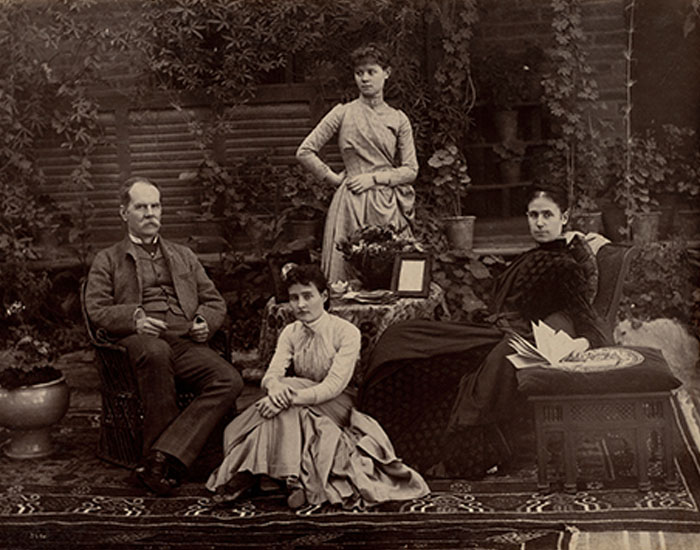
ARTICLE
Established by photographer Lala Deen Dayal in the mid-1870s, Deen Dayal & Sons was one of the first Indian-owned photography studio franchises and was known for its architectural and topographical views, as well as portraits of royalty and social elite. Deen Dayal established the first studio c. 1874 in Indore with the support of his patrons Maharaja Tukoji II and Henry Daly. He set up a second branch at Secunderabad in 1886, which was followed by a zenana studio in the same city in 1892, run by Mrs Kenny-Levick, the wife of a Times correspondent. The studio’s sizable collection of portraits of female subjects can be credited to such an arrangement. The Indore branch closed in 1894 — around the same time that the third and largest studio was set up in Bombay (now Mumbai). From 1885 onwards, Deen Dayal started enlisting the help of his sons and a growing roster of more than fifty Indian and European employees to run his studios. His staff included two German oil painters, an English manager, printers, mounters, attendants and chowkidars, as well as the Goan realist portraitist Antonio Xavier Trinade, who tinted photographs at the Bombay studio for a brief period. The studio’s vast body of work covered various scenes, from tea parties and hunts to processions and portraiture. As business grew, the studio also started selling prints. Copies of the studio catalogue reveal a large market for their “views” of native subjects, such as portraits of Indian dancing girls. They also sold albums which included collections of architectural views of India, as well as souvenir albums commemorating tours and visits of royal dignitaries such as the Czar of Russia, the Grand Duke Alexander of Russia and Lord and Lady Lansdowne. The studios extended Deen Dayal’s visual idiom to incorporate tonal shifts, contrasts in size and scale, and a juxtaposition of forms. Some of the images attributed to Deen Dayal were also likely produced by his studio, including an album documenting state-sponsored famine relief efforts commissioned by the Nizam of Hyderabad in 1899 (currently housed at the Andhra Pradesh State Archives). Following Deen Dayal’s death in 1905, the studio was taken over by his son Gyan Chand, and later his grandson Ami Chand, who dedicated himself towards the consolidation of Deen Dayal and the studio’s legacy. Nevertheless, the studio dwindled over time as competition grew and royal patronage reduced. After Ami Chand’s death in 1984, the family donated nearly 2,900 glass plate negatives, as well as a collection of studio registers and camera equipment, to the Indira Gandhi National Center for the Arts, New Delhi, in 1989.

ARTICLE
An early twentieth-century photographic studio set up in Ceylon (now Sri Lanka) and India, E. Del Tufo & Co specialised in portrait photography. Established by Inez Maria — born in 1876 in Kutch to an Italian merchant — and her husband Innocenzo del Tufo in both Colombo and Madras (now Chennai), the studio primarily provided individual and group portraiture services to affluent civilians as well as military personnel. It subsequently established branches in Bangalore (now Bengaluru), where the studio was attached to the Freemason’s Lodge in the cantonment, and in the hill station Ootacamund (now Ooty). A prominent sign at the storefront announced that the proprietors were “Photographers by special appointment to the King of Italy” – though the veracity of the claim has not been established – to ostensibly give the studio an edge in the increasingly competitive arena of studio photography.The studio’s name was changed to Madame Del Tufo in 1914, following the death of Innocenzo in 1912. Besides its standard photographic offerings, which also included developing and enlarging of negatives, it provided services such as hand-finishing and retouching (through pencil-shading and painting) and repairing wooden components of cameras. The studio printed its portraits as cabinet cards, while its landscapes and archaeological views, which it produced in smaller numbers, were in the form of postcards. As the sole owner of the studio after 1912, Inez Maria used the name Madame Del Tufo while undertaking her personal photography projects as well as her commercial studio work. She established herself as one of the early women photographers in Ceylon and built a reputation through her extensive photographic documentation of houses in the city. As a result of this phase of Inez Maria’s career, she and the firm are still closely associated with Sri Lanka, possibly more so than with Madras or India. The studio closed in 1930, and Inez Maria passed away in 1952. The legacy of E. Del Tufo & Co continues to have a relevant place in South Asian history. Photographs produced by the studio were shown at the Spectacular: Cities and People exhibition as part of the 2019 edition of the Krishnakriti Festival, Hyderabad, and at the 2015 exhibition Imaging the Isle Across at The National Museum, New Delhi.
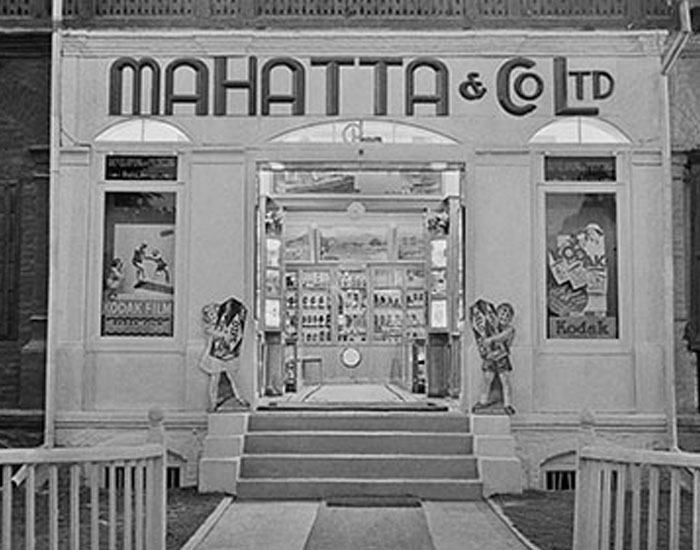
ARTICLE
Owned by the Mahatta family since its establishment in 1915, Mahatta & Co is a photography studio that has had branches in cities including Rawalpindi, Murree, Srinagar and New Delhi, where it is currently located. Apart from its famous clientele, the studio is also known for its long history, spanning the decades before and after India’s independence. Over the years, Mahatta & Co has undertaken traditional studio services such as portraiture for institutions and individuals, wedding photography and the development of photographic film. It previously provided services for hand-colouring monochrome photographs, and used to retail camera equipment and photographs of historic events and people. The first of its studios was established at the Bund, Srinagar, then a popular commercial part of the city by Amar Nath (AN) Mehta, who allegedly modified the spelling of “Mehta” when naming the studio to fit the way it was pronounced by British clients. Briefly, the studio also operated from a houseboat on the Jhelum river that flows through Jammu and Kashmir, possibly to better cater to the area’s many tourists, who might have been attracted to the novelty of a houseboat studio making simple portraits or selling idyllic prints of the landscape and lifestyle of the locals. In its early years, the studio — essentially AN Mehta — was also commissioned by the British military to document their troops in Kashmir. The next branch was opened in Gulmarg in 1921 but was destroyed in a fire in 1930. After this, two studios were set up at Rawalpindi and Murree in present-day Pakistan, but these were closed down after the Partition separated the establishments and the Mahatta family on either side of the new Indo-Pakistan border. The New Delhi branch was established in 1948 and continues to run as the main studio under AN Mehta’s grandsons Pavan and Pankaj, alongside the first branch in Srinagar. Madan Mahatta, the most well known member of the family, is considered to have introduced colour photography in commercial studios in India in 1954 when he returned to the country after completing his studies at Guilford School of Arts and Crafts, Surrey. Many of Mahatta & Co’s commissioned photographs of dignitaries during the British Raj are portraits taken after hunts along with the remains of the dead animals, as was typical of the time. Key figures whose portraits were shot by the studio include Jawaharlal Nehru, Indira Gandhi, Jacqueline Kennedy and the Dalai Lama. The studio also had a long association with royal families, especially Maharaja Hari Singh of Kashmir who regularly commissioned family portraits from Mahatta & Co. His son, and later Indian National Congress member, Karan Singh, has written the foreword to Pavan Mehta’s book Picturing a Century: Mahatta Studio and the History of Photography in India, 1915–2015, which traces the history of the studio’s work and was launched on World Photography Day, August 19, 2015, to commemorate the studio’s centenary year. Singh also inaugurated the exhibition accompanying the launch at the Indira Gandhi Centre for the Arts, New Delhi, which featured many iconic photographs made by the studio. At the time of writing, Mahatta & Co operates mainly from the first floor of its New Delhi establishment, having closed down its retail operations in 2017 on the ground floor due to the dwindling sales of film cameras and related products. The Srinagar branch now functions as a museum and photographic archive of the studio’s history and also houses a cafe. The studio founded indiapicture.in in 2006, which functions as a stock photography aggregator for Indian audiences, and launched a film production company called Studio Mahatta in 2012. Its main source of income remains the studio’s services, particularly wedding photography, which has been expanded to Bangkok by the family’s fourth-generation photographer, Arjun Mehta. Mahatta & Co continues to be regarded as an adaptive business in the dwindling field of photographic studios.
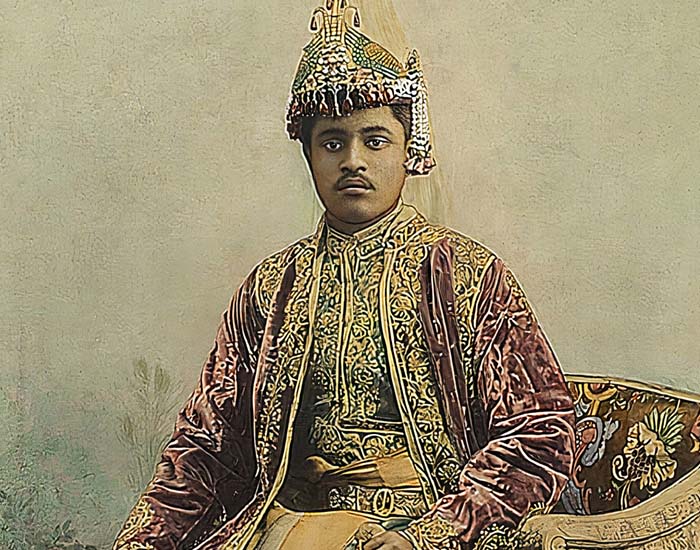
ARTICLE
Founded in 1882 by PA Johnston and Theodore Julius Hoffmann, Johnston & Hoffmann was the first and largest studio based in Calcutta (now Kolkata), with later branches being opened in Darjeeling, Shimla and Rangoon, Burma (now Yangon, Myanmar). The firm, probably the second-largest in India at the time after Bourne & Shepherd, produced portraits of British officers, wealthy Indian families and royalty. They were also commissioned with long term projects that involved travel, typically for ethnographic portraiture. The Calcutta studio was established in 1882 at 22 Chowringhee Road and continued to be the centre of operations throughout the firm’s lifetime. The next branch, in Rangoon, opened in 1889 but closed within a year. In 1890, Johnston & Hoffmann opened another branch in Darjeeling, and then later one in Shimla in the mid-1890s, a conjecture based on a surviving advertisement poster. After Johnston died in 1891, Hoffmann retained the firm’s name and continued to run the studio with the help of assistants. One of these, hired in 1905, was AD Long, who went on to take over the studio in 1928, after Hoffman’s death in 1921. The firm’s main source of income was the studio portraits of British officials, dignitaries and Indian elites belonging to royal families, including cabinet cards and cartes de visite. Notably, these include a portrait of a young Rabindranath and Mrinalini Tagore, a group photograph of Maharana Fateh Singh of Mewar with various British officers on the occasion of Queen Victoria’s Golden Jubilee in 1887 and a portrait of Maharaja Sir Bhagwati Prasad Singh of Balrampur, dated 1900, that was likely hand-coloured by an independent artist. At times, the firm also made photographic postcards featuring celebrity sitters, such as the actress Maie Ash, for whom they travelled to Southampton, England in 1906. Apart from studio portraits, Johnston & Hoffmann also accompanied European travellers and scholars on ethnographic surveys in the eastern Himalayan region and surrounding areas. In the 1880s, the firm was commissioned by LA Waddell to shoot and develop portraits of local people in Nepal, Sikkim and Tibet to highlight their cultural and ethnic identities. These were subsequently published in Waddell’s 1889 book, Among the Himalayas. Scholars have pointed out that with these images, as with many such ethnographic projects at the time, the presumed objective truth of a photograph masked certain deceptions and obscured the cultural fluidity of the region, such as the fact that many of the sitters were made to wear clothes that appeared sufficiently exotic to the European eye, or that some of the sitters were not from the areas that the book claimed to cover but instead from surrounding regions that had a shared population, mode of dress and customs with some variation. In July 1891, Hoffmann travelled with John Claude White, the Political Officer in Sikkim, to Kanchenjunga. The photographs from this trip were later published in White’s album Sikhim & Bhutan: Twenty-one Years on the North East Frontier 1887–1908 (1909), which was also printed by Johnston & Hoffmann. The franchise closed down sometime in the 1950s due to reasons presently unknown.
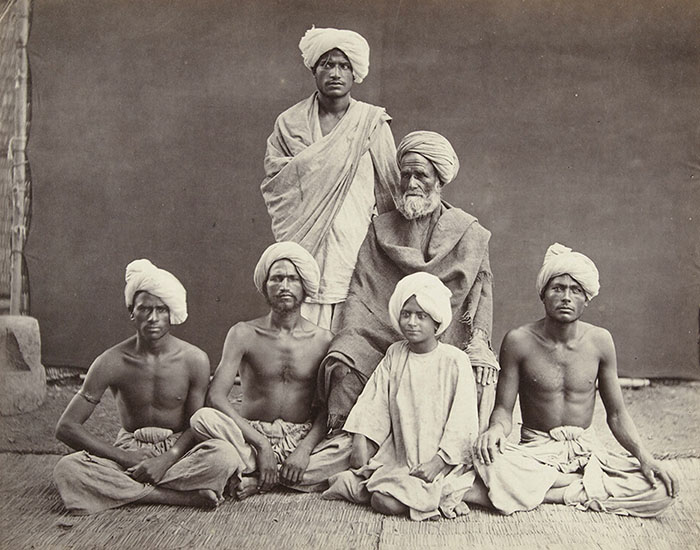
ARTICLE
One of England’s largest photography printing studios and archives of the nineteenth century, Francis Frith & Co produced and published prints of scenic views and monuments across England, continental Europe and Asia. Established by businessman-photographer Francis Frith in 1860, the company was a key player in the development of travel photography in nineteenth-century England and beyond, publishing prints in formats such as catalogues, albums and picture postcards. The studio remained active for over 110 years, until 1971, building an archive of 2,50,000 photographs and 60,000 plates depicting views from across the world. Among this collection are 882 images of views of India in three series, which although relatively few, evidenced an increasing interest among the British public for images from the unfamiliar lands and cultures in general, and India in particular. Frith’s business targeted the mass market by catering to Victorian aesthetic ideals of beauty and the lure of foreign lands, through visuals that conjured up spectacle and mystery. Scholars have also noted an orientalist aura in these photographs — Europeans posing among monuments in foreign lands and natives of those lands presented in an awkward, staged manner — elevate the landscapes through association in the former and render them mysterious and ‘other’ in the latter. The company was built on the commercial success of Frith’s photographic work from three expeditions to Egypt, Nubia (earlier part of Sudan), Palestine and Syria between 1856 and 1859. His travels to the historical and religious sites in these places were initially born of a personal interest and subsequently of an awareness of the commercial potential of such photography as his own. Bolstered by the reception to his photos in the lectures and exhibitions he held, Frith set up Francis Frith & Co in Reigate, a town in Surrey, which specialised in factory-scale, rapid, centralised printing of glass plate negatives. During his travels, and in his printing business, he made images in the standard (20 x 25 cm), mammoth (40 x 50 cm) and stereoscopic formats. In order to keep up with the demand for idealised and romantic travelscapes in England, Europe and beyond, the company began to acquire negatives from photographers and studios elsewhere; by 1876, it had acquired about four thousand images of Asia, Canada and the United States. Starting in 1850, the company commissioned three separate catalogues of topographic and architectural views of India. The first, thought to have been printed around 1870, consisted of about three hundred photos – many of which were of Kashmir, Spiti and Kulu; some of the Bombay Presidency ; and some assorted images of Delhi, Agra, Lucknow, Benares, Calcutta, Madras and Cawnpore (now Kanpur). The second, printed in 1874, contained three hundred more photographs, while the third 1893 edition consisted of 260 large-format (25 x 31 cm) photographs and smaller cabinet-card sized copies. Some of these formed a part of other series, such as the larger Universal Series — featuring some of their earlier prints from the Middle-East and elsewhere. Although most photos bore the stamp of the company, a few were signed by the photographers themselves. Some early images of Bombay and Calcutta, however, have been ascribed to William Johnson, JM Drury and Oscar Mallitte. Although travel photography was hardly a new phenomenon — French photographer Alexis de la Grange’s photos of India were published as early as 1850 — there were few in England who undertook the publishing and dissemination of such prints on the same scale as F Frith & Co While some such as the London publisher J. Hogart had already begun publishing views of India (especially of Tamil Nadu and Agra) by 1859, their stereoscopic prints, which had to be distributed with stereoscopic glasses, didn’t have the same impact in a rapidly-growing marketplace. In India as well there were photographers and successful owners of studios, such as Lala Deen Dayal and Samuel Bourne, who tended to concentrate more on the subjects and their aesthetic potential, rather than purely demand and commercial potential. Francis Frith & Co. therefore had a nearly unbroken monopoly until the 1940s, well after Frith’s death in 1898, especially in the postcard business after the postcard was approved by the British Post Office in 1902. The studio’s collection continued to grow through contributions from photographers who still abided by the strict standards imposed, until 1971 when the studio closed. The evolution of other photographic technologies and changes of taste and topography relegated the photographic products to a bygone era, and their collection fell into neglect. A substantial collection of the original glass plates was restored and is now maintained at the Birmingham City Library as an important record of nineteenth-century England and other geographies. The Victoria and Albert Museum, London, also carries a collection of over four thousand prints from their various catalogues.
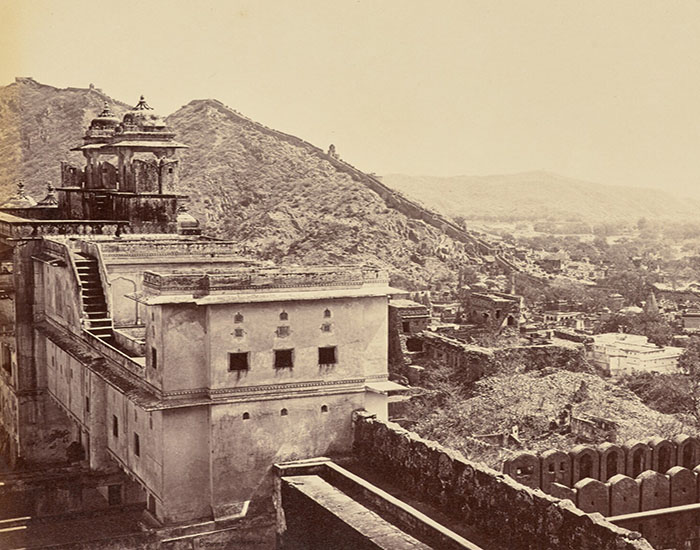
ARTICLE
One of the first commercial photography studios in India, Bourne & Shepherd was established in 1863 in Shimla, Himachal Pradesh, as a partnership between photographers Samuel Bourne and Charles Shepherd. The studio gained recognition for its architectural, landscape and topographical photographs, as well as portraits of Indian nobility, British officials and European travellers. While much of the studio’s work was sold commercially as travel souvenirs, it also gained prominence for its documentation of the geographical and topographical features of South Asia, particularly the Himalayan region. The studio’s photographs were also widely utilised in the scientific community for the topographical and sociological study of the Indian subcontinent. Beginning as a partnership between Bourne and photographer William Howard in Allahabad and known as Howard & Bourne, the studio was relocated to Shimla in 1863. Within a year, Shepherd joined the establishment, forming Howard, Bourne & Shepherd; Shepherd began managing the printing process in the studio, while Bourne photographed in the field. Bourne’s photographs of the Himalayas and Northern India, made from 1863–66, were well received in the international market. He also made the highest altitude photograph in the world at the time, at Manirang Pass, located at an altitude of 5,669 metres, which further boosted the popularity of the studio. By 1866, the studio had published a catalogue featuring over 1,500 images. The same year, following Howard’s departure to England, the studio was renamed Bourne & Shepherd, and a new branch was opened in Calcutta (present-day Kolkata). During the Second World War, the studio received several contracts to photograph British, American and Indian personnel. It was also commissioned to make photographs during the Delhi Durbar, when King George V visited India. After Bourne’s departure from India in 1870, photographer Colin Murray replaced him as the principal photographer at the studio and opened a branch in Bombay (present-day Mumbai) in 1876. In 1878, Shepherd also departed for England, and the studio and its archive were purchased by Murray. In 1991, the Kolkata branch of the studio caught fire, destroying much of the structure and archives. After a prolonged legal battle with the Life Insurance Corporation of India (LIC), which owns the building in which the studio was housed, Bourne & Shepherd shut down in 2016.
Photographic albums gained popularity soon after the camera arrived in mid-nineteenth-century India. Beginning in the 1850s, most photographic albums consisted of carte de visite portraits or card-sized photographs made in batches that fit onto a single plate, thus saving materials and money. Such albums were usually made by photographers such as Hurrychund Chintamon, on commissions from wealthy Indian families. A carte de visite album, unlike later ones that used full-sized photographs, was seen as an expensive but still affordable luxury that became an intergenerational heirloom. Scholars have stipulated that the photo album may have been particularly appealing due to its similarity to the muraqqa: albums of miniature paintings that were made for royal families or individuals in Islamic courts.
The assumption of truthfulness in a photograph was often undermined by the album format with photographers using staged scenes or techniques like combination printing. Ethnographic surveys by colonial officers took the form of photo books from the 1860s onwards, and are considered deeply problematic today. This medium was also used to stage exoticised or stereotypical scenes of Indian life meant to intrigue the viewer rather than reflect reality, such as Darogah Abbas Ali’s albums on the erstwhile court of Oudh at Lucknow.
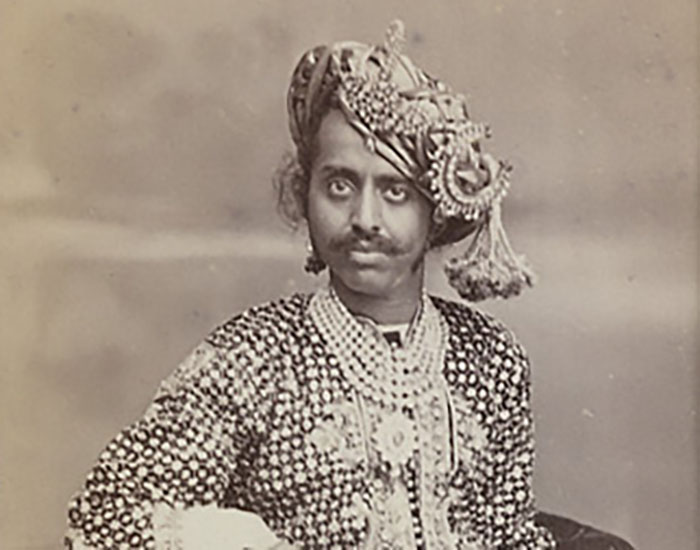
ARTICLE
A photographic format for small albumen prints, the carte de visite – French for “visiting card” – is typically associated with portraiture and consists of a 9 x 6 cm photographic print mounted on a slightly larger card of greater thickness. Introduced in the market in 1854, the carte de visite (or CdV) was very popular and widely distributed in Britain, France and their colonies due to its relative ease of production, small size and affordability. Its popularity peaked between the 1860s and 80s, especially among the rising middle classes who sought CdV portraits to express their social status and social connections as well as to use them as calling cards. In India, this format found patronage among the landed and mercantile classes, businessmen and the elite ranks of British officers, being produced by several notable photographers and studios, such as John Sache (Sache and Westfield), Samuel Bourne (Bourne & Shepherd), Johnston and Hoffman, Hurrychund Chintamon, Darogah Abbas Ali and Lala Deen Dayal. The innovation was patented by French photographer André Adolphe-Eugène Disdéri in 1854, although the general idea of a card-sized photograph has been independently attributed to many individuals before and after the patent. Disdéri’s patent initially described the process of exposing ten small images on one wet collodion plate, instead of a single picture. In addition to producing more exposures, this allowed the sitter to assume a variety of poses and for different props to be used in a single sitting. Disdéri’s cartes de visite portraits of monarchs and celebrities, which when sold as collectibles to the general public in the 1850s, widened their appeal and made portraiture more accessible to the middle classes. Aspiring to the symbolic status and aesthetic of aristocratic portraiture, they then began to commission portraits for family albums and for use in keepsakes such as pendants and pocket watches. When introduced in India by commercial photographers in the 1860s, the CdV was received with enthusiasm by the Indian elite. In the cosmopolitan and commercial hub of colonial Bombay (now Mumbai), CdVs were popularised largely by photographer Hurrychund Chintamon, among the earliest Indian photographers to have specialised in it. Here his patrons were mostly the local mercantile and business families — among whom were the Parsis, who not only enthusiastically received but also began producing these prints — as well as royalty, especially the Maharaja of Baroda, Malhar Rao. Further east in Lucknow, the landed gentry were featured in the form of 260 CdV portraits in photographer Darogah Abbas Ali’s An Illustrated Historical Album of the Rajas and Taaluqdars of Oudh (1880), which by dint of being printed in English and Urdu, catered equally to the local and the British elite. The British administrators found additional use for this format in their criminal and population management operations: similar sized photographs of prisoners could be taken en masse and moved swiftly between offices of the various police commissioners and superintendents to facilitate quick responses across the subcontinent in the event of prison breaks or large-scale searches. Such photographs were made by both official photographers of the British government and independent commercial studios such as Bourne & Shepherd and Raja Deen Dayal & Sons. By the late nineteenth century, cartes de visite began to go out of fashion, mainly due to the introduction of larger cabinet card prints in 1866, which were favoured for their clarity and detail, as well as the space available on the reverse side for personal messages and studio branding.

ARTICLE
The multi-volume photographic and print publication, The People of India: A Series of Photographic Illustrations, with Descriptive Letterpress, of The Races and Tribes of Hindustan, was an illustrative document of the various social and ethnic groups across the Indian subcontinent. This included several of the country’s native castes and tribes that were represented through a clinical and taxonomic gaze typical of colonial ethnography at the time. Primarily consisting of 468 annotated photographs compiled by chronicler John Forbes Watson and historian John William Kaye, the series was published by the Government of India under the British Crown. Containing over five hundred (15 x 11 cm) albumin prints accompanied by detailed descriptions by Capt. T. Meadows (administrator, novelist and artist), the publication also formed an exhibit in the India pavilion of the 1862 London Exhibition. Produced shortly after the 1857 Rebellion, The People of India is considered a significant early publication that integrated photography and colonial ethnography as tools of administration and governance. The undertaking started out as a personal project for the first viceroy of India, Charles Canning, and his wife Charlotte, who wanted to build a collection of photos of the native people of India. When formalised in 1861 as a call from the colonial offices to military officers to submit photographs with detailed notes on various social groups across the Indian subcontinent, the initial result was a large collection of inconsistently annotated images of varying quality. The classifications of subjects specified in the official circular included ethnicity, caste, social group, regional power, language, clothing, profession and attributes such as trustworthiness, honesty and propensity of violence. The years leading up to the formal dissolution of British East India Company rule in 1874, and the reorganisation of administrative power under the British Raj, allowed publications such as The People of India to gain added significance as a form of colonial control. However, the subjectivity of some of the series’ parameters, and a general lack of organisation, resulted in discrepancies, overlaps and omissions (it completely excluded communities of fewer than two thousand people), delaying the project until it was eventually passed, after the demise of the Cannings, into the remit of the Government of India. Despite the scope afforded by its hundreds of images and its simple format, the series was received poorly by the colonial elite, for whom it was ostensibly meant to serve as a guidebook on the locals. According to scholar and educator Syed Ahmad Khan, one of the foremost critics of the series, the Indian elite also viewed it poorly, as they thought the categorisation was demeaning to their own identities. Whatever the original intent, the project — touted by some scholars as a surveillance program rooted in early ethnology and criminology — was quickly dismissed during its time. The series has however, in the last fifty years, received renewed interest, especially from postcolonial scholarship, for its overt, if unarticulated, ethnographic ambitions. Of particular interest to scholars is its frequent focus on the varying degrees of criminality among the indigenous groups of the subcontinent. Scholars argue that the photography–ethnography model was introduced as a pseudo-scientific justification of colonial rule, by categorising the Indian people as an aggregate of largely regressive and barbaric groups, in order to exercise a deep, precise control over them. In addition, its indexing of social groups further perpetuated ill-informed and at times outright discriminatory belief systems held by many aspects of the Indian caste system. The contemporary position on the book series is that it was fuelled by the insecurity following the 1857 Rebellion by Indian troops in the colonial military and was the result of a profiling exercise carried out to help prevent other such insurgencies. The various interpretations and analyses themselves are not without their flaws and controversies, as they are all largely derivative. The foundational scholarship that underpins much of the discourse on this ethnographic series has been attributed to John Falconer and Christopher Pinney; the former’s A Pure Labour of Love (2002) is credited as the most exhaustive publishing history of the People of India series and the latter’s Camera Indica (1997) is thought to lay down the analytical framework of the series. Aside from its discrepancies and harmful taxonomy, there is now a clear consensus on the value of The People of India as an illustrative historical document of the early British Raj’s strategic and discriminatory use of photography as an ethnographic tool. In 1908 and 1992, two other volumes bearing the same title were also published, but each separately and with different motivations that had no direct connection to the first series. Meanwhile, the 1868 multi-volume series continues to be a subject of much scholarly debate.
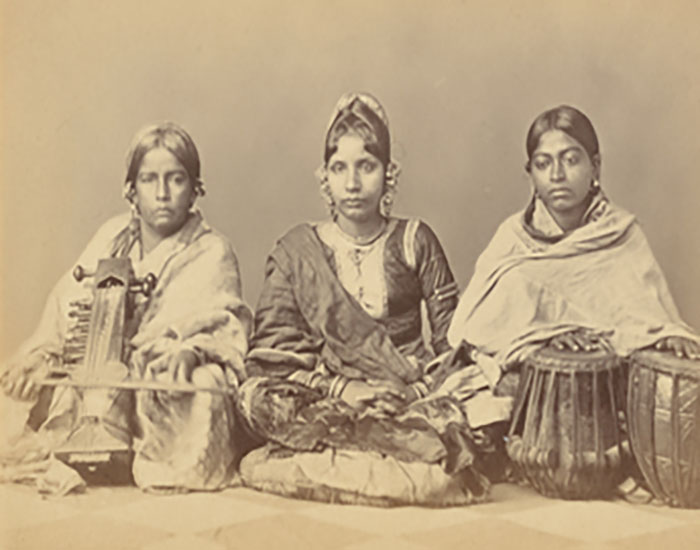
ARTICLE
A photographic album published in 1874 in Calcutta (now Kolkata), The Beauties of Lucknow consists of twenty-four portraits of women employed in the court of the princely state of Awadh (or Oudh). Although unsigned, the photographs and authorship of the book have been attributed to the Indian photographer Darogah Abbas Ali, who has also provided separate handwritten introductions in English and Urdu in the respective editions, suggesting an aesthetic link to the Mughal muraqqa tradition of illustrated albums. The full title of the album, as it appears in the English edition, is The Beauties of Lucknow Consisting of Twenty-Four Selected Photographed Portraits, Cabinet Size, of the Most Celebrated and Popular Living Histrionic Singers, Dancing Girls, and Actresses of the Oudh Court and of Lucknow. The Urdu edition was titled Haseenain-e Lucknow. In 1856, the kingdom of Awadh was annexed by the British East India Company, which argued that it was being ruled poorly by Wajid Ali Shah, a king known for his patronage of the arts, and of theatre and courtesan culture in particular. Despite their denunciation of the King, they continued to hold a fascination with his legendary court, prompting them to engage a photographer to capture and preserve the vitality and mystic appeal of royal courtly entertainment for posterity, in the form of a photographic album. The book features individual portraits of singers, courtesans, dancers and actors — multiple roles were often assumed by a single performer who was known as a tawaif — at the Lucknow court, with a particular emphasis on those who regularly enacted the popular Urdu work Indar Sabha. The two different introductions reinforce ideas of oriental luxury for the British public in the mainland while providing material memories of a gloried past for the Indian elite. It is believed that Ali attempted, through these albums, to advance the Indian cultural ethos (especially regarding women courtesans) as an alternative to the prevailing Victorian model. Photographs in The Beauties of Lucknow appear to have been taken in a studio setting and were printed in a cabinet card format (15 x 10.9 cm) as albumen prints and hand-pasted into the five albums. The larger size is all the more notable because the women’s faces are uncovered in all the images — something considered inappropriate, especially for Muslim women, at that time. It is believed that each copy of the book was intended to be treated like an item of luxury, as the photographs were hand-pasted and often unique to their respective editions. In both the title and the introduction to the book, Ali suggests that the women photographed in 1874 were already well-known performers who held a high status, although none of them were the original courtesan performers of Wajid Ali Shah’s court when he ruled eighteen years prior. Across the five extant editions, one finds that while the women photographed are the same, they are each shown in slightly different poses and angles depending on the edition, suggesting that Ali captured and printed multiple shots from each session with his sitters. It is known that following the annexation of Awadh, the tawaifs of the former king’s court, who had some of the highest incomes in the city and exerted much cultural influence, either fled or accompanied the king into exile, while subsequent performers lived in relative impoverishment under the new Victorian moral code. Therefore, despite its mandate to reenact history, the project could only go so far as to reimagine a lost era with the only remaining actors at its disposal. A later comparison of surviving copies of the book further revealed that some of the same women appeared under different names, possibly due to shuffling as a result of loose fixture, confounding claims to historical accuracy. Nonetheless, the album is universally acknowledged as one of the earliest products of a centuries-long popular fascination with the tawaifs of Indian courts. Photographs from The Beauties of Lucknow are housed in the George Eastman Museum, New York, USA; the Victoria and Albert Museum, London, UK; among the artist Amit Ambalal’s personal collection in Ahmedabad; the New York Public Library, USA; the Museum of Art and Photography (MAP), Bangalore; and the Alkazi Collection of Photography, New Delhi, which holds the only Lucknow-published and Urdu edition of the book.

ARTICLE
A two-volume photographic album of albumen prints by William Johnson and William Henderson, it details the appearance, costumes and lifestyles of the ethnic groups that constituted the population of colonial Bombay (now Mumbai). The volumes, titled The Oriental Races And Tribes, Residents And Visitors Of Bombay: A Series Of Photographs With Letter-press Descriptions, were published in London in 1863 and 1866, respectively. They are considered the first published ethnographic study of Indian people to use photographs. Whilst the focus of the albums were the people of Bombay (now Mumbai), the scope extended to surrounding regions — the first volume covers the regions of Gujarat, Kutch and Kathiawar, while the second encompasses the erstwhile Maratha region — to create an illustrative document of the local, immigrant and itinerant populations in and around the city. Introducing both volumes is an outline of the broad ethnographic composition of the country, the classifications and denominations used to map it and characterisations of communities including Parsis, Mohemmadans and Malays, likely to be found in Bombay. Prefacing each set of photos is a detailed description provided by scholars and British officials. Most of the images, composed in the style used in ethnographic studies, are of groups of figures attired in their traditional costumes, with captions detailing their caste, sect, race or other ethnic and cultural markers. Unlike comparable works such as The People of India (1868–75), the album focuses primarily on Bombay, which – to Johnson and Henderson – had come to assume an ethnic profile that seemed like a microcosm of South Asia. The city had not only become a major trading hub under British rule, attracting migrant workers and merchants from other parts of India, it had also become a gateway to the western coast of India for much of the historical Indian Ocean trade from West Asia and Eastern Africa. This strategic trading port therefore grew in cultural and commercial value, earning a reputation for being diverse and cosmopolitan. The album produced, therefore, served both as an ethnographic survey of the key regions of its colony and as a reminder of the authority and perceived civilisational superiority of the Crown, meant in part to quell the unease caused by the Indian Mutiny (1857–59). A majority of the images, produced as calotypes rather than the then-more-popular daguerreotypes, were taken by Johnson and Henderson and date back to the 1850s, during the early decades of photography’s invention in Europe. Several of these had previously appeared in the Indian Amateurs Photographic Album (IAPA), a monthly publication by the Photographic Society of Bombay. A small number of photos were taken by other professional photographers, such as Narayan Daji, brother of the reputed scholar Bhau Daji Lad – both of whom were also members of the Bombay Photographic Society – as well as by other society members, scholars and some amateurs. Images taken from the IAPA that had no distinctive backdrops were incorporated into the album using a process known as combination printing. In such instances, the portrait negatives were superimposed on landscape negatives that were carefully painted over to prevent overlap to produce images that showed the ethnic communities in their seemingly-original locales. The publishers had initially planned to publish three volumes of the book, with the third meant to cover miscellaneous groups of people not covered by the first two, but this was never published, for reasons presently unknown. At its time of publishing, the album was an important photographic record and administrative document of the Empire’s key territories in the subcontinent. It now serves as testimony to the thoroughgoing efforts of the British crown to enlist text and image in carrying out and consolidating its imperial mission. Copies of both volumes are, at the time of writing, maintained in the British Library, London, UK.
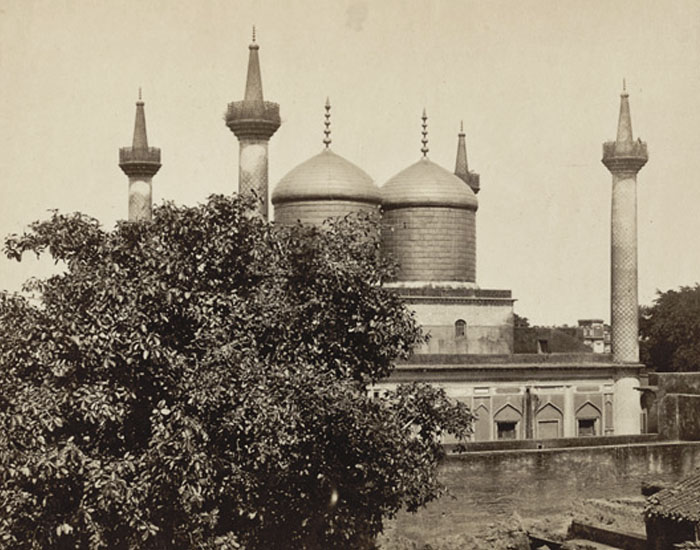
ARTICLE
A book of photographs authored by Darogah Abbas Ali and published in 1874, The Lucknow Album was intended as an illustrated guide to the monuments and ruins of Lucknow, the erstwhile capital of the kingdom of Oudh. The album was published in Calcutta (now Kolkata) by G. H. Rouse Baptist Mission Press, with the descriptive title The Lucknow Album Containing a Series of Fifty Photographic Views of Lucknow and Its Environs Together with a Large Sized Plan of the City. The albumen prints of the architectural views, each 9.5 x 6 cm, feature in the second half of the book along with the detailed fold-out map drafted by Abbas Ali himself, through skills acquired as a municipal engineer.The first contains the introductory text, explaining the rationale behind the album, followed by detailed descriptions of each of the monuments featured. The album, though primarily meant as a historical city guide for European tourists and visitors, also sought to memorialise the struggles of the ultimately triumphant Garrison of Lucknow during the Indian Mutiny. The order in which the photographs are presented follows the path taken by the British troops as they entered Lucknow from the southwest, circled to its easternmost end and proceeded westward through the city. Palaces, mosques and other religious and secular structures of historic importance that were damaged in the ensuing battle were photographed in their east–west orientation, following the logic of their sequencing. This attempt to visually retrace the passage of troops is believed to have been inspired by two earlier photographic series of the immediate aftermath of the Mutiny by Ahmad Ali Khan and Felice Beato, which allegedly followed the same direction of ordering of images. The sites and monuments featured are predominantly of local heritage and include Aulum Bagh (now part of the settlement of Alumbagh), Moti Mahal, Qaisar Bagh and the Najaf Ashraf. A smaller number of colonial structures and sites, such as St. Joseph and Christ’s Churches, La Martinière Boys’ College (now La Martinière College), Wingfield Park, Bruce’s Bridge and the Memorial of the Massacre of European Captives, also form a part of the photographic sequence. Strongly propagandist in its tone, the album presents Lucknow to a European audience as a site of pilgrimage — a memorial to the tragic (for the British) events of 1857. Made in response to the rising popularity of Lucknow as a tourist destination, especially after its devastation by the yearlong uprising, the album appealed to the Western and colonial tastes by providing a document of its rich architectural landscape on the brink of erasure; sentimentalising the city as a site of martyrdom (of slain soldiers and British residents); and providing eagerly sought-after glimpses of a famously decadent kingdom. To follow its mandate as a guidebook, the text also touches upon aspects of the local culture, such as the lifestyles and livelihoods of its ordinary people, popular events and festivals and what to expect on those dates. In a departure from the overall theme, The last three photographs in the album bear no connection to the Mutiny or the cultural splendours of the capital. They instead show the Shia shrines Dargah Hazrat Abbas, Kazmain Karbala and Talkatora Karbala — all of which were important religious hubs of the city. In the accompanying text, Abbas Ali urges travellers to join the Muharram procession, explaining the significance of the festival and its rituals. Some scholars have taken this thematic deviation to mean that he intended to introduce visitors to parts of Indian culture that they might otherwise miss, while some others believe that this might have been an attempt to draw a parallel between the martyrdom of British troops in Lucknow and those of Karbala, mourned during Muharram. Both these views demonstrate that the deviation was deliberate and most likely the result of an attempt, by the author, to leave an imprint of his identity in an otherwise expressly colonialist work. The original prints of work are held, at the time of writing, by the British Library, the Alkazi Collection and the Getty Research Institute.
Typically invoked to protect homes, temples or individuals, guardian spirits are a standard presence in Hindu, Buddhist and Jain iconography. These entities are most prominently represented when shown flanking doorways on buildings or in illustrated manuscripts and are depicted more subtly for individual protection in talismanic pendants and garments. Guardian spirits may sometimes be deities in their own right, such as the god Kubera who often assumes the role of a dvarapala, or doorway guardian, in Buddhist temples. While guardians such as Yakshas and Yakshis are depicted in a stately human form, others have animal or chimeric forms, such as Makaras or the many types of Yali. Fearsome entities such as these — also known as grotesques — are meant to represent the powerful natural forces controlled by the temple deity.
Outside organised religions, guardian spirits also occur in regional or Adivasi folklore, such as the Rakhondars of Goa, Jimmidaarin yaya worshipped by the Gond people and several others. Some deities are considered guardians by virtue of controlling diseases, such as the goddesses Sitala and Mariamma, who, it is believed, protect their devotees from smallpox.
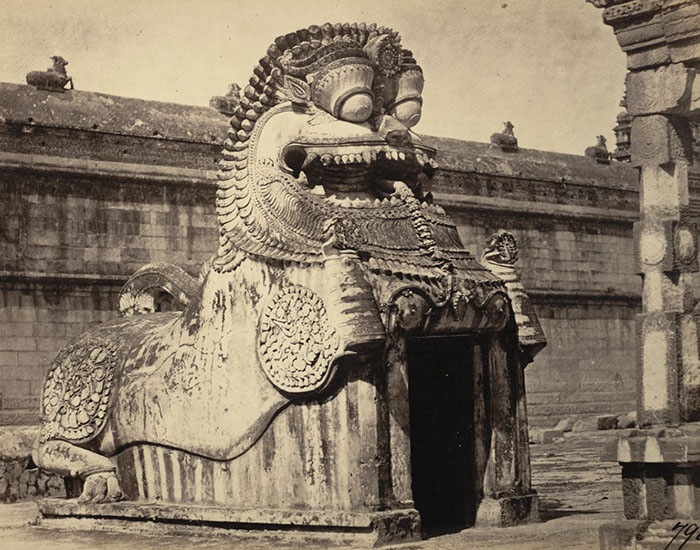
ARTICLE
Mythical composite creatures sculpted on pillars and pilasters across temples in South Asia, yalis, also known as vyalas, are most frequently depicted in late medieval and early modern temples in southern India. A yali is usually shown to have the body of a lion and the head of another animal, such as an elephant (when they are called a gaja yali), a human (known as a nara yali) or a dog (termed a svana yali). When the body is that of a tiger, the creature is called a shardula. It may also have horns and hooves. The term “yali” is derived from the Tamil and Sanskrit words for “fierce monster”. Among the earliest known yali sculptures were produced in the seventh or eighth centuries during the reign of the Pallava Dynasty of present-day northern Tamil Nadu, usually in temples related to Puranic Hinduism. These early depictions of the creatures positioned them squatting at the base of a column. They were also produced in Buddhist contexts through the early medieval period, where they were known as vyalakas and were usually paired with a makara. Yalis emerged as a ubiquitous decorative element in South Indian temples during the seventeenth and eighteenth centuries, particularly in temples built by Nayaka polities across Tamil Nadu in the post-Vijayanagara style. Nayaka period yali sculptures are usually two to three metres high, depicted in a rearing position with gaping mouths and bulging eyes and with a rider holding a sword or bow. They are usually shown emerging from composite columns; they may stand on smaller elephants or the mythical makara, or be accompanied by smaller yalis. Yali figures are considered to be a type of grotesque sculpture, meant to inspire fear and awe, and have iconographies similar to other composite mythological creatures, such as the hippogryph and sphinx of ancient Mesopotamia and Egypt. They are also associated with the mythical griffin. In northern India, yalis are common in the gajasimha (Sanskrit for “elephant-lion”) motif, depicting a fight between a lion and an elephant, showing the lion in a victorious pose. Yali figures are believed to act as guardians and protectors, shielding a temple from threats. The tame form of the yali, typically shown flanking short stairways attached to temple plinths with waterfalls emerging from their open mouth, is known as the surul-yali. Yalis were also considered divine vehicles for deities, and were used to signify heroism and the elemental forces of nature, tamed and controlled by being incorporated into architecture and sculpture. Yali figures are found at numerous cave and structural temples across India, including but not limited to the Tiger Cave at Saluvankuppam, the Airavateshvara temple at Dasarum, the Minakshi-Sundareshvara temple at Madurai, the Virupaksha temple at Hampi, Karnataka, the Kailasanatha Temple at Ellora and the Sun Temple at Konark.
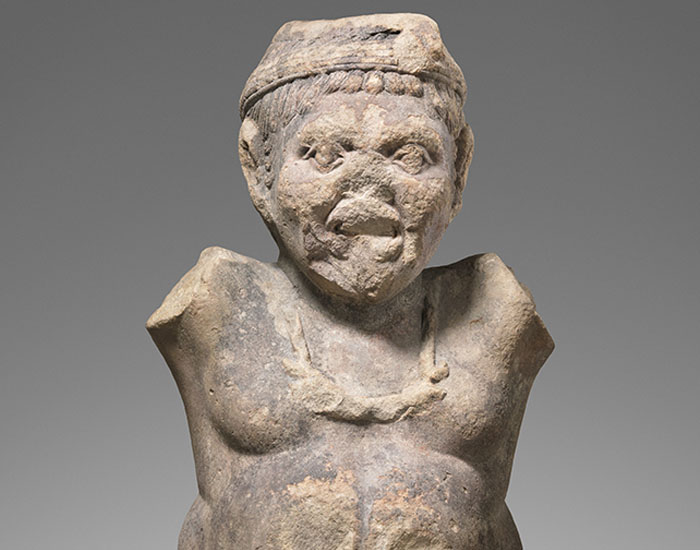
ARTICLE
Mythological figures often represented visually in a pair, the yaksha and yakshi are found across early Buddhist, Jain and Hindu art. Yakshas are male figures, and yakshis are their female counterparts. They were believed to be spirits that inhabited trees, mountains, rock mounds, rivers and oceans. Their prevalence in sculpture, usually in association with natural elements, is considered a sign of widespread nature worship in the early historic period. The earliest mentions of yakshas are found in the Jaiminiya Upanishad Brahmana, where the word is used only to describe a wondrous thing. By the time that epics such as the Ramayana were composed, yakshas were referred to as spirits or a group of figures similar to, but elevated and distinct from, ghosts and demons. In early Buddhist literature and sculpture, yakshas frequently appear in subordination to the Buddha; sources such as the Therigatha refer to them as guardian spirits who impart good morals. However, outside of the bounds of organised religions, many monumental yaksha figures were produced in the early historic period; these and some references in texts suggest that yakshas were worshipped as tutelary deities in some areas, as well as independent deities of trees or other natural entities. In Tibetan Buddhist sources, yakshas and yakshis are claimed to be people who served an individual or a community during their lifetime, reborn as benevolent spirits. Jain texts similarly claim that these spirits are reborn as mortal human beings once their merit has been exhausted. These may indicate that growing Buddhist and Jain institutions attempted to appropriate hitherto independent nature deities and cults into their metaphysical systems. Among the earliest known images of yakshas and yakshis can be found in sculptural reliefs on the Bharhut and Sanchi stupas. They are generally depicted as attendant figures, sometimes to the aniconic Buddha. This may be seen in sculptures from the Mauryan and post-Mauryan period, such as the yakshas from Parkham and Vidisha and the yakshis of Besnagar and Didarganj. In the last centuries BCE and early centuries CE, the yaksha iconography adopted softer features such as a prominent belly. This is especially prevalent in sculptures of Kubera, considered the king of yakshas in some traditions, but also the god of wealth in others. He is depicted with abundant jewellery and wears a dhoti tied underneath a protruding belly. The yaksha figure from Pitalkhora, Maharashtra may be considered an example of Kubera iconography. Kubera’s mounts include a horse, elephant or a ram. He is also depicted holding a mace or a club. The yaksha Manibhadra was also considered an important figure, with several Buddhist, Jain and Hindu literary references to his popularity and worship. The yaksha sculpture from Parkham is widely believed to be a representation of Manibhadra. Yakshis are generally depicted as voluptuous figures with nude upper bodies, wearing necklaces, bangles and anklets; their lower torsos and waists are decorated with clothing and more jewellery. Due to their associations with the natural world, they are often represented next to or holding onto trees; such yakshis are referred to as shalabhanjikas, which may reference the birth of the Buddha under the sala tree by Maya. They might also hold a pot with water or a lotus flower, both associated with fertility, or might be represented alongside a makara or naga.Yakshi figures are sometimes depicted standing on top of grotesque, dwarf-like figures, as seen in the Kushan period Bhuteshwar yakshi reliefs. Though yakshas and yakshis faded in popular Buddhism and Hinduism in the mid-first millennium CE, they were propitiated in some Tantric Buddhist rituals as the fulfillers of wishes. They continued to be depicted and sometimes worshipped in Jainism through the mediaeval period, where they are portrayed as attendant figures to the twenty-four Tirthankaras, with the yaksha on the left and yakshini on the right side.
The Bengal School, as it came to be known, was India’s earliest modern art movement. Revivalist and anti-colonial in its goals, the movement gained prominence after the Partition of Bengal in 1905 and grew out of an increasing disdain among the Indian art intelligentsia for Western aesthetic sensibilities and the exoticising gaze with which India’s natural, cultural and mythological heritage was often depicted. This included a rejection of Company paintings commissioned by British collectors and researchers, as well as the work of artists like Raja Ravi Varma who painted in a Western naturalist style.
The movement turned to Indian styles like miniature painting, Mysore painting, folk and indigenous art traditions, used local materials like tempura, and derived its subject matter from Indian history and mythology. Abanindranath Tagore and others also collaborated with Japanese artists in an attempt to formulate a pan-Asian aesthetic that stood in contrast to European Realism.
EB Havell and Abinandranath Tagore are considered the founders of the Bengal School. Other prominent artists in the movement include Abinandranath’s brothers Gaganendranath and Rabindranath Tagore, and from the following generation, Nandalal Bose, Kshitindranath Mukherjee, AR Chughtai, Asit Kumar Haldar and K Venkatappa. Significant institutions established by the movement include the Government College of Art, the Indian Society of Oriental Art and Visva-Bharati University in Shantiniketan.
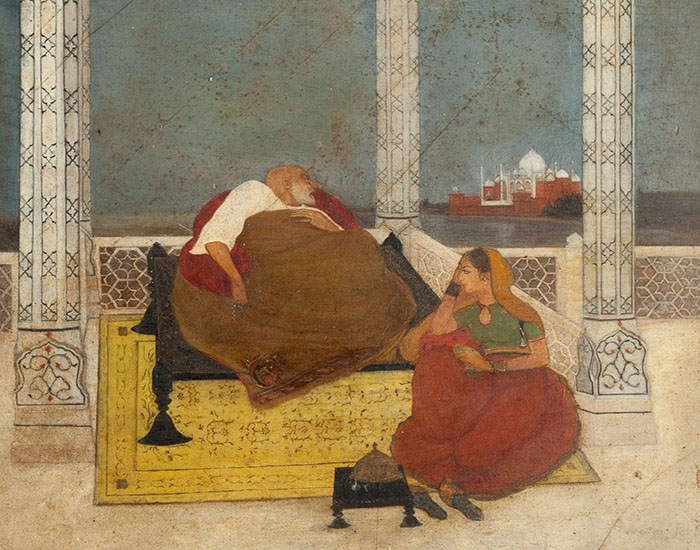
ARTICLE
Belonging to the influential Tagore family of Jorasanko, Calcutta (now Kolkata), Abanindranath Tagore emerged as an artist and writer at a time of great political and cultural upheaval in nineteenth-century India. He is credited with the first formal response to European artistic and aesthetic conventions and values, founding and spearheading the Bengal School — a movement that aimed to reimagine a distinctly Indian approach to visual art. Through his paintings, he rejected European and Academic Realism, promoting instead the ideals of Hindu spirituality and aesthetics to convey an authentic ‘Indianness’. For the development of this framework, he drew inspiration from the Japanese ink wash technique, a sombre colour palette, and stylistic elements from Mughal, Rajasthani and Pahari miniature painting. In his depictions — which included themes from Hindu mythology, history and Indian rural life — he sought to extract a pan-Indian visual motif and identity. As the Bengal School and his practice were contemporaneous with the Swadeshi movement of the early twentieth century, his work is also interpreted through a nationalist lens. This is perhaps most evident in his painting Bharat Mata (1905), which personified India in the form of a divine Hindu deity and went on to become an enduring symbol of the nation and India’s struggle for independence. Tagore was homeschooled during his early years, and when his talents became evident, he was sent to study art at Sanskrit College, Calcutta in the 1880s. He began his career as an illustrator, with some of his earliest works appearing alongside the poems of his uncles Rabindranath Tagore and Dwijendranath Tagore in the magazine Sadhana in 1892. In 1890, he enrolled in the *Government College of Art and Craft, Calcutta, where he met its principal EB Havell, an Orientalist scholar and pedagogue. Havell had advocated for and secured curricular changes that incorporated the study of Mughal miniatures and emphasised the importance of traditional handicrafts in the syllabi of the fine arts and decorative arts departments, respectively. His search for a unifying image for Indian art that foregrounded tradition over prevalent Indian and Western conventions found resonance in Tagore’s work and outlook. As such, his Modernism emerged as an alternative to that of the Western-influenced painter Raja Ravi Varma, announcing a clear break from the practical, aesthetic and social aspects of colonial art production and distribution. While Tagore’s status continued to be associated with social and cultural privilege, as was the case with Ravi Varma, he began to challenge the conventions within which his art was produced and consumed. Tagore took strict exception to the academic doctrines of life study, oil painting and Realism. He envisioned an environment where an informed and discerning class of art professionals (such as artists, critics and collectors) would be able to produce and consume art free of the demands of formal training, professional success and livelihood. Havell’s continued support of Tagore — in the form of journal articles introducing his works to a European audience and an exhibition of his paintings in the Government Art Gallery, Calcutta — along with AK Coomaraswamy and Sister Nivedita’s endorsements in the journals of Ramananda Chatterjee, Probashi and The Modern Review, brought him and his cause national and international recognition. Accompanying this increased visibility was the establishment of the Indian Society of Oriental Art, which grew organically out of a series of exhibitions of the members of the Bengal School — and with the aid of a number of influential Calcutta-based European Indophiles — around 1907. The Society, by virtue of being the first art salon in India, provided the ideal platform for the consolidation of the ‘Indianising’ agenda of the Bengal School. In the early experimental phase of his career, Tagore painted the Krishna Leela series (1895–97) based on Jayadeva’s text Geeta Govinda. Inspired by Kalidasa’s lyric poems Meghaduta and Ritusamhara, he painted The Traveller and The Lotus, The Banished Yaksha and The Siddhas from Upper Air. In these, he attempted in different ways — using composition, tone and technique — to inject elements of Romantic Naturalism into canonical pictorial traditions. Paintings that Tagore made in the Mughal miniature style between 1902 and 1905, which incorporated bhava, were met with great success, winning him awards in the Congress Industrial Exhibition (1902–03) and the Delhi Durbar Exhibition (1911). The most celebrated work from this experiment is Passing of Shah Jahan, where the intricate and material image of the Agra Fort stands in stark contrast to the frail and dying figure of Shah Jahan, who is attended to by his daughter Jahanara. The death of Tagore’s daughter during the plague in Calcutta at the end of the nineteenth century had created an impact on the artist that became apparent in the emotive quality of the series, and of this painting in particular. His iconic Bharat Mata painting was modelled after his daughter and directly reflected this loss. Tagore is famously credited with introducing and promoting the use of the Japanese ink wash technique, which he learnt from the disciples of Japanese artist Okakura Kakuzo, whom the Tagores hosted at Jorasanko in 1903 and who shared his desire for formulating a pan-Asian aesthetic in opposition to Western Realism. His appointment as vice-principal of the Government College of Art in 1905 also allowed him to incorporate Indian painting into the curriculum. This gave a much-needed boost to traditional Indian art forms and nurtured the emergence of modern Indian artists. By the 1920s, however, as the influence of the Bengal School decreased, Tagore withdrew from public life and into a more personal practice of painting, illustrating and writing. He resigned from his post at the Government College of Art in 1915, but continued to remain active in academia, delivering a series of twenty-nine lectures on Indian art, aesthetics and philosophy at Calcutta University as the Rani Bageswari Professor of Indian Fine Arts between 1921 and 1929. While these developments took place, Tagore continued his artistic practice, distancing himself from the demands of nationalism and the Swadeshi movement. In this final phase of his career, he painted the Playmate (1925) and Pigeon series (1939–40) — landscape and animal studies that explored themes of talking animals and mythological tales inspired by his childhood stories. His Arabian Nights series (1930) recasts the stories of ancient Baghdad in contemporary urban settings. The Kabikankan and Krishnamangal series (1939) are his last known works. Tagore’s contribution to art and the evolution of an autonomous identity for modernity in India is bolstered by his legacy of children’s literature and illustration. A prolific writer with a gift for narration, Tagore authored and illustrated several books for children and young adults; notable among them are Raj-Kahini (1916), Sakuntala and Kshiter-Putul (1895–96), Nahush and Buro-Angla. He also wrote several treatises on art, such as Bharat Silpa Sadanga (‘Six Limbs of Painting’) (1921) and Artistic Anatomy (1914). Towards the end of his career, he released a three-part memoir comprising Apan Katha (published as a book only in 1946), Gharoa (1941) and Jorasankor Dhare (1944), the first of which was authored by him and the others by Rani Chanda, to whom he had narrated the stories. After his death in 1951, his entire collection of paintings was donated to the Rabindra Bharati Society, where they were kept in storage and not displayed publicly. In the last few decades, the paintings from the second phase of his career have been rediscovered by scholars such as KG Subramanyan, Tapati Guha-Thakurta and R Siva Kumar, who have attempted to read his later work outside the nationalist mould he was cast into during his lifetime.

ARTICLE
One of the oldest art institutions in India, the Government College of Art and Craft is regarded as the birthplace of the *Bengal School, a nineteenth-century art movement that rejected European Modernism for a distinctly Indian approach to visual arts. Founded in 1839 by the English surgeon Frederick Corbyn at Garanhata, Chitpur, as the Calcutta Mechanics Institution, it was renamed and moved to its present location near the Indian Museum, Kolkata in 1892. It is also known as the Government School of Art and Craft, the Calcutta School of Art and the Government School of Art. The College was originally established with the aim of providing Indian youth with an education in industrial skills to widen their intellectual horizons and expand their scope for employment. Under HH Locke’s leadership (1865–85) the institution produced artists and designers trained in the Western academic tradition, through courses on lithography, wood engraving, photography, painting and modelling design. This changed after EB Havell took charge as the principal in 1896 and discontinued instruction based on British academic principles. Along with the vice principal Abanindranath Tagore, Havell worked to develop the tenets of Indian Modernism and incorporate them in the curriculum. During this period, the College rejected the Western pedagogical and aesthetic sensibilities predominant within art institutions in the country, instead shifting the focus to Indian design, applied arts, traditional handicrafts and the decorative arts. Several new courses were introduced, teaching techniques such as fresco painting, lacquerwork and stained-glass painting. This provided the early impetus for the development of the Bengal School, which emphasised traditional Indian art forms, including Mughal and Pahari miniatures, the traditional handicrafts of India and ancient scriptures such as the Vedas. Several alumni of the College emerged as founding figures of Indian modernism, such as Asit Kumar Haldar, Nandalal Bose, Biren De, Haren Das, Lalu Prasad Shaw, Paresh Maity, Mukul Dey and more. Dey served as the institution’s principal from 1928 to 1943 and initiated its first publication, Our Magazine, in 1931, publishing reproductions of works by faculty and students. Now affiliated with the University of Calcutta, the College offers Bachelor of Fine Arts and Master of Fine Arts programmes in sculpture, graphic design, textiles, ceramic art and pottery, design (wood and leather) and painting. It also began offering a doctoral degree in the fine arts in 2005 and is one of the only institutions in the country to offer specialised programmes in Indian painting. Additionally, it organises cultural events such as film screenings, workshops, lectures and annual exhibitions. At the time of writing, the institution is headed by Chhatrapati Dutta, who has been the principal since 2017.
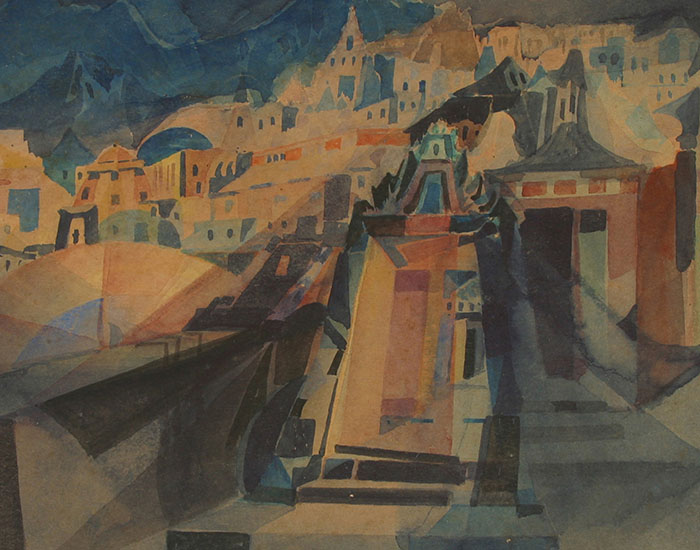
ARTICLE
An artist, actor, and stage and costume designer, Gaganendranath Tagore belonged to the distinguished Tagore family of Jorasanko in Calcutta (now Kolkata). Events in his personal life, the influence of his family members, his own taste in the theatrical arts, and his love for literature and travel helped him develop a largely original and individualistic style of art. Tagore’s works — the earliest of which date back to 1905 — depict an extremely wide variety of subjects in various styles, evidence of multiple influences including Japanese ink wash techniques and Cubism. Although he was an artist in his own right, Tagore’s life and works have not received as much scholarly attention as those of his younger brother Abanindranath and his uncle Rabindranath. Although he was actively involved in acting, designing stages and costumes for various plays under the influence and encouragement of his uncle, it was not until 1907 that Tagore seriously began painting, after the untimely death of his son. He had no formal education in art, although he later took art lessons under Harinarayan Basu, a painter and then-principal of the Government School of Art. Tagore had been active in the nationalist politics of the time, took part in the Swadeshi movement and was part of the anti-colonial organisation Anusilan Samity. Simultaneously, the Bengal School began gaining traction under EB Havell and Abanindranath, and through this association as well as his own contributions, notably the co-founding the Indian Society of Oriental Art with the latter in 1907, Tagore came to the fore as an artist in his own right. The earliest phase of Gaganendranath’s paintings include sketches, mostly sea views influenced by Japanese brushwork and sumi-e ink painting — done with a few quick brush strokes and thin washes of colour on postcards he sent from Puri to his daughter in 1907. Tagore was not only influenced by the technique of the Japanese but also what conceptually formed the subject of their art — such as everyday sceneries — as seen in his landscapes Early Morning Scene in Calcutta and Women at the Ganges. One of his finest works from the period, Banyan Tree (1911), depicts an instance of ink painting where bright and dark tones of fluid ink are juxtaposed to highlight the density and largeness of the huge banyan tree. He also created landscapes with minimal contrast in tone and hue, such as Boat Padma with Flock of Birds, suggesting influences of Impressionist art. His other early works include portraits in pencil and ink of his family members, such as his sister Sunayani Devi, acquaintances such as the art historian Anand Coomaraswamy, as well as visitors to his home, such as pundits and Bengali kirtankars. It is said that in order to relieve the shock of Tagore losing his son, the larger family arranged kirtans and kathas in which he made many sketches of kirtankars, most notably of Shibu Kirtania. Other important works from exhibiting this style include his illustrations for Rabindranath’s autobiography Jeevansmriti (1912), Crow (1912), Arrival of Tutor in Rain, Abanindranath Tagore Painting while Smoking Hooka and Portrait Study of Mrs. Gaganendranath Tagore. Besides Jeevansmriti, Tagore also made illustrations for some of Rabindranath's short stories, including Kabuliwala, Phalguni and some poems from Gitanjali. He was adept at using creative elements to depict light in his paintings, best showcased by his use of a gold background in some of his Himalayan landscapes from around 1912, such as the Head of the Mahadeva and Kanchangjunga to depict shimmering light. Pilgrims, religious figures and scenes of rituals, formed one of his main subjects across different styles of painting. This was visible in his paintings derived from the text Chaitanya Charitamala, which were exhibited along with works of Abanindranath in an exhibition of the Calcutta School of Art held in Paris and London in 1914. Rabindranath had also set up the Bichitra Club at the Tagore residence in 1915 with Abanindranath as its first teacher and Tagore as its first director, later becoming its driving force. Soon after though, he began to withdraw from his brother’s nationalist leanings and moved into a more poetic and dramatic style of painting with fantastical imagery, most prominently seen in his Himalayan landscapes and night scenes from 1916 onwards. In 1916, he also drew a Plan of a Stage, probably for Rabindranath’s play titled Dakghar, which showed the relative positioning of all the elements of a stage including the backdrop and the position of doors and curtains. His theatre-related activities also led him closer to satirical paintings, which were caricatures and cartoons based on critical perspectives on contemporary middle-class Bengali society, particularly on the so-called Bhadralok culture. Birup Bajra (“Strange Thunderbolt”) and Adbhut Lok (“Realm of Absurd”) — both published in 1917 — are some of his earliest satirical works. From the 1920s, he went on to experiment with the Cubist style of painting, which involved depicting multiple viewpoints and jagged edges. The first of his Cubist paintings were published in the journal Rupam in 1922, with an accompanying article by the art historian Stella Kramrisch titled An Indian Cubist, crediting Tagore for introducing Cubism in India along with his own successful stylistic and conceptual reinvention and innovation. In the same year, his Cubist paintings, including his famous House of Mystery, had their first public viewing at the exhibition of famous Bauhaus artists, marking an important milestone in Indian art. His works, including Dwarkapuri and Swarnapuri from 1925, are examples of him imagining legendary and mythical images of cities in Cubist watercolour. In his later paintings we find increasing references to stage props, partition screens, overlapping planes and artificial stage lighting, including portraits in black and white or darker shades, such as Nandini: Heroine from Rabindranath’s drama Rakta and Jagadish Chandra Bose Demonstrating his New Apparatus, both from 1925. In 1930, at age sixty-three, Tagore suffered a cerebral stroke that left him paralysed and unable to speak. He died eight years later, without being able to produce any paintings during this final period. Most of his works today can be found at the Victoria Memorial Hall, Kolkata, which were transferred from the Rabindra Bharati Society. His illustrated copies of Jeevansmriti can be found in Kala Bhavana.
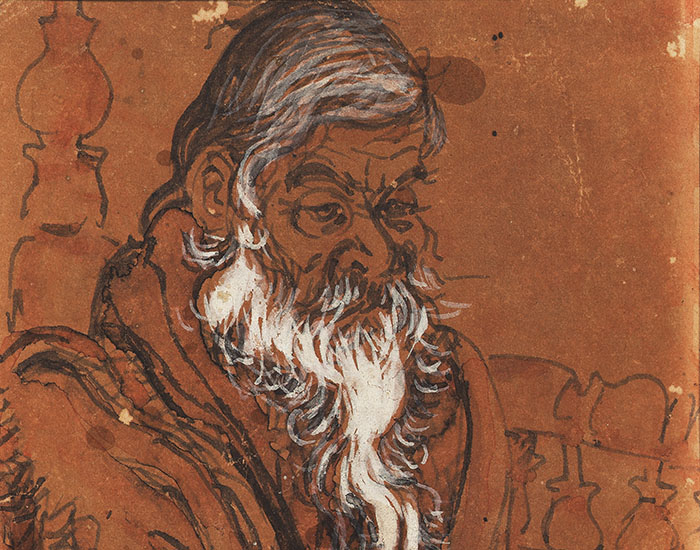
ARTICLE
A British art historian, educator and administrator who worked in India in the late nineteenth and early twentieth century, Ernest Binfield Havell is known for pioneering a shift in art education from Western to Indian modes, motivating the emergence of the Bengal School of Art. He is also considered to be largely responsible for promoting Indian art in European art markets, encouraging Western art patrons to support Indian artists and artistic traditions. Havell was born in Berkshire and graduated from the Royal College of Art, London. He studied art in Italy and worked in studios in Paris until 1884, when he travelled to India as the superintendent of the Madras School of Art (now the Government College of Fine Arts, Chennai). After his arrival, Havell conducted a series of surveys on art industries in the Madras Presidency for the colonial government. In 1896, Havell was appointed principal of the the Calcutta Art School (now the Government College of Art and Craft, Kolkata) and the attached art gallery — a role he held until 1905. Along with Abanindranath Tagore, Havell revised the curriculum to move away from traditional European arts pedagogy to focus on an Indian modernism that derived from Indian art forms, transforming the school from a fine art academy to a school of Indian design and crafts. He also replaced the European paintings and sculptures in the gallery with Asian art objects. Havell’s reforms focused on three areas: advocating for the inclusion of traditional Indian art forms within the international canon; reimagining the British art education policy in India; and adapting traditional Indian art forms to Modern approaches to art. These reforms, particularly his focus on the traditional decorative arts, were also subject to considerable scrutiny, with critics accusing him of seemingly fostering an Orientalist, and by extension, imperialistic attitude towards India. Despite this, his reforms contributed significantly to the emergence of the Bengal School as well as the establishment of the Indian Society of Oriental Art in Calcutta in 1907. Havell returned to England in 1906, where he actively worked towards mobilising support for Indian art and promoting a reformed British art education policy in India. He established the India Society in London in 1910 with support from prominent figures in the arts such as designer William Morris and AK Coomaraswamy. He also published several works on Indian art history influenced by his understanding of Indian philosophy and mythology, including Indian Sculpture and Painting (1908), The Ideals of Indian Art (1911) and Indian Architecture (1913). Havell died in Oxford in 1934.
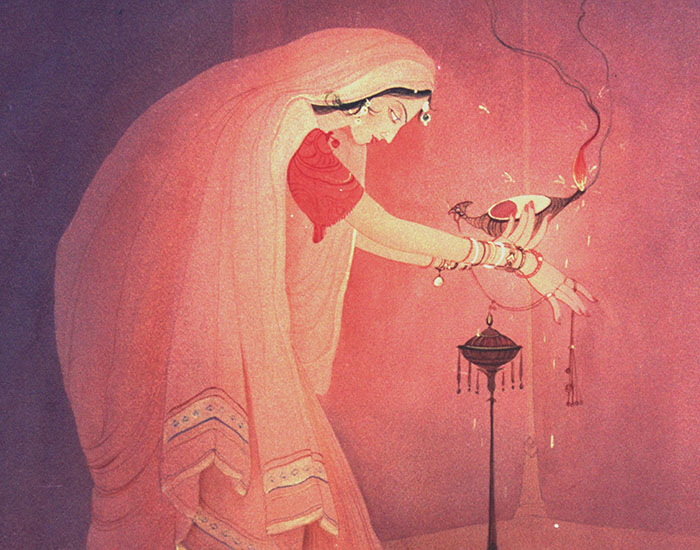
ARTICLE
Founded at the turn of the twentieth century by EB Havell and Abanindranath Tagore, the Bengal School was a Modernist Indian art movement that came about in an atmosphere of nationalistic fervour in colonial India. During this time, undivided Bengal had emerged as an epicentre of cultural agitation that, among other things, initiated a concerted move away from formal European aesthetic ideals. The search for a national visual identity that was both historically rooted in the subcontinent and modern in its outlook came to be realised as the Bengal School. It sought to reject the aesthetic sensibilities of European Academic painting and replace it with cultural frames of reference which its members considered authentically Indian. The Government College of Art and Craft, Kolkata, the Indian Society of Oriental Art, the Bichitra Club and Jorasanko, were the centres of pre-Independence India’s first major campaign for artistic freedom and its first attempt to define Modernism by its own terms. Artists influenced by and associated with the Bengal School include Nandalal Bose, Kshitindranath Mukherjee, AR Chugtai, Asit Kumar Haldar, Sunayani Devi, Mukul Dey and K Venkatappa — many of whom were taught directly by Tagore. At its core was a Revivalist agenda that found resonance in the anti-colonial sentiments and the Swadeshi ideology that was gaining currency at the time — and which grew stronger after the partition of Bengal in 1905. This coincided with a growing distaste among the Indian intelligentsia for the Company Paintings commissioned by British collectors and administrators, which its dissenters believed imposed a colonial and exotising gaze on India’s natural, cultural and social landscape. The Bengal artistic programme was also, in part, a response to the populist paintings of Raja Ravi Varma, which portrayed Hindu mythological themes in the Western Academic tradition. The subsequent mass production of these paintings was criticised and rejected as inauthentic and profane by idealogues such as Sister Nivedita and AK Coomaraswamy. Simultaneously, the Bengal School undertook an examination of pre-colonial artistic traditions, including Mughal miniature painting, Rajasthani miniature painting, Pahari miniature painting and folk visual culture, as well as corresponding materials and subjects such as tempera and religious mythology. They sought to create a pan-Asian aesthetic that was a counterpoint to European Realism and Academic Formalism. The visual idiom that emerged was characterised by the use of a sombre colour palette and Romantic depictions of themes such as landscapes, rural life, Hindu mythology and history. However, evidence of the influences of Art Nouveau and a Pre-Raphaelite affinity to nature and natural forms challenged the Bengal School’s claims to homegrown authenticity. Instead, some scholars offer a model of divergence from Western art movements and pedagogy. As the principal of the Government College of Art and Craft between 1896 and 1905, Havell encouraged the study of decorative arts in the handicrafts traditions of India, as well as the visual vocabulary of Mughal miniatures, in an attempt to elevate the values of Indian spiritualism over Western industrialism and materialism. However, this notion of spiritual contrast, which steered him towards the codified traditions of the Vedas and other Hindu scriptures, resulted in his problematic conflation of Indian nationality with Hinduism. This approach of valourising an idealised Indian past was criticised and denounced for subverting the emerging nationalist movement in the subcontinent. Whatever the criticisms that may have arisen, Havell is responsible for laying the pedagogical foundations of the Bengal School by ushering in curricular changes and shaping revolutionary thinkers and new visual idioms. Its influence can also be attributed to the proliferation of the journals Probashi and The Modern Review, which promoted painting from India. Several of Abanindranath Tagore’s students were also instrumental in disseminating the values and methodologies of the Bengal School across the nation through their contributions to both art and academia. As such, it gradually created a space for modern art in India outside Western academic institutions and brought with it a culture of art journals, critics, art salons and a new art-consuming middle class that espoused its revivalistic thrust as a product of and a response to the dominant colonial forces. By the 1920s, the influence of the Bengal School began to wane. The painters associated with it introduced little to no alterations to their style and soon began facing the same problems as the traditions to which they were responding. Further, the establishment of Kala Bhavana at Shantiniketan (in erstwhile Bengal) under Rabindranth Tagore brought with it different ideals and conceptions of both art and the nation. Nandalal Bose’s appointment at Kala Bhavana in 1922, following his exit from the Indian Society of Oriental Art, marked a final and decisive break from the Bengal School’s dual approach and its mission of formulating universal standards of ‘Indianness.’ The legacy of the Bengal School, in terms of its aesthetic and technical contributions, if not its ideological foundations, still lives on in the Government College of Art and in Kala Bhavana.

ARTICLE
Founded in 1915 in Calcutta (now Kolkata) by the Tagore family, the Bichitra Club was a studio that explored various styles and methods of painting and printmaking. It derives its name from the Bengali word bichitra, meaning “variety,” a reference to the plurality of styles and artistic and intellectual visions of its members. The Club was an important cultural institution in Calcutta in the early twentieth century, providing a space for writers and artists to meet and hold discussions. Rabindranath Tagore was its primary patron, while Gaganendranath Tagore served as the director and Abanindranath Tagore was its first teacher. Other notable members included Mukul Chandra Dey, Surendranath Kar and Nandalal Bose. The meetings and salons of the Club were held in the Tagores’ ancestral home in Jorasanko. The Club also offered studio space and lessons in drawing, music and theatre, and later, industrial arts such as pottery and carpentry. It also acted as a library that housed over seven thousand books from the collections of the Tagore family. The Club was created by practitioners of the Bengal School, but its members adopted several artistic and intellectual approaches. For instance, Gaganendranath Tagore abandoned the Revivalist aesthetic of the Bengal School and turned to exploring Cubism in his work, while Abanindranath Tagore, who used the Japanese wash technique in his paintings, also encouraged printmaking techniques, woodcuts and lithographs.In 1916, after Rabindranath Tagore travelled abroad, the club’s activities dwindled and eventually stopped altogether. Tagore subsequently appointed Japanese artist Kampo Arai to reignite membership and interest in the club. Between 1917–18, Arai encouraged the adoption of new techniques and collaborations, including Japanese methods of painting, initiating what is considered to be the club’s most fruitful year. Interest and activity in the club nevertheless dwindled by the mid-1920s, and it was eventually dissolved, although the exact year of its conclusion remains unknown.
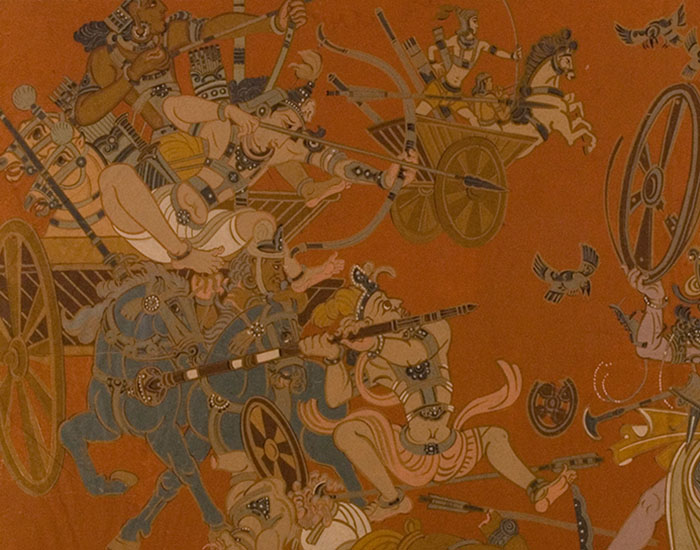
ARTICLE
A pedagogue and one of the first Indian Modern artists, Nandalal Bose is known for his contributions to the visual identity of the Indian nationalist movement and newly-independent India. As the first principal of the pioneering art school Kala Bhavana in Shantiniketan, he was among the earliest and most influential art educators in India. Working in watercolour and tempera, he is also considered one of the earliest practitioners of linocuts in India, a number of which he printed on postcards that later came to acquire significant value as collectibles. His works demonstrate a range of styles and influences, including the Revivalism and cultural nationalism of the Bengal School, as well as the ideas of scholars such as EB Havell and *Sister Nivedita. His later, more individualistic work was informed by his direct and indirect associations with influential figures such as Rabindranath Tagore, Mahatma Gandhi, AK Coomaraswamy and Okakura Kakuzo, along with his documentary study of the Ajanta murals. Born to a middle-class Bengali family at Haveli Kharagpur, in the Munger district of Bihar, Bose was introduced to art at a young age. Influenced by his mother, Kshetramoni Devi, who would fashion innovative toys and dolls to keep him entertained, Bose proved especially adept at clay modelling, and used his skills in decorating the pandals, or floats, for the annual celebration of Durga Puja. He moved to Calcutta (now Kolkata) in 1897 to study at the Central Collegiate School and later pursued commerce at his family’s insistence at the Presidency College in 1905. He eventually managed to convince them to let him attend the Government School of Art (now the Government College of Art and Craft), Calcutta, where he practised under the tutelage of EB Havell and Abanindranath Tagore, along with his peer Surendranath Ganguly. His first exposure to the works of Raja Ravi Varma and Abanindranath Tagore was through the monthly Bengali magazine Probashi (or Prabasi), started in 1906. Abanindranath Tagore’s paintings from this time made a particularly strong impression on the young Bose, reflected in his own work, such as the exemplary Mahasweta. His other early watercolour paintings, such as Sati (1907) — later reproduced by Bose as an aquatint in 1943 — internalised the nationalist politics of the time, and brought him recognition even while he was a student. In 1907, he obtained a travel scholarship from the then-newly established Indian Society of Oriental Art, for which he accompanied the scholar OC Gangoly on a study tour of the temple art of South India. About a decade later, Bose’s artistic outlook and aesthetic sensibilities underwent a change after two related events — a personal encounter with Japanese art through the works of Arai Kempo in 1916, and his first visit to China and Japan in 1924. By the time Bose took the reins of the newly established Kala Bhavana in 1922, he had already gained eminence under the ideological guidance of the Bengal School and grown dissatisfied with the limits placed upon art by the Swadeshi movement. His engagement with Rabindranath Tagore deepened his distrust of the prevailing nationalist doctrines and opened his mind to the possibility of an original, modern Indian art that could also be universal. His subsequent experiences of teaching and practising at Shantiniketan brought him closer to his immediate environment. His work moved away from mythological subjects and embraced art as an extension of life. During this period, he focused on a number of projects closely tied with daily life at Shantiniketan — he organised art fairs, worked on murals, set design, posters and costumes, and illustrated children’s literature. Thus, in his most productive phase in the 1930s and 1940s, Bose brought his wide range of styles and influences to bear not just on his art, but also in his contributions to the community at Kala Bhavana. In his role of principal and teacher there he influenced students who later became eminent artists, including Ramkinkar Baij and Benode Behari Mukherjee. Bose also published his own books on art: Drishti o Srishti and Shilpa Charcha (1956). In 1930, when Gandhi launched the Dandi March, Bose commemorated the event with a linocut image of him with his walking stick, which has become an archetypical image since. On Gandhi’s request, he also made a number of posters for the Haripura Session of the Indian National Congress in 1938, drawing on the art traditions, celebrations and everyday scenes of rural India. He also illustrated Rabindranath Tagore’s book collection Sahaj Path (first published in 1937) with linocut prints. Bose also produced a number of paintings in his distinctive idiom, among which was the celebrated work, Sabari in Her Youth (1941–42), depicting a scene from the Ramayana in which a young girl, possibly of indigenous background, is perched upon the branches of a tree waiting for Rama to redeem her. Inspired to revive the mural painting tradition of India, he produced important works such as the landscape Bagadar Road (Hazaribagh) (1943) — rendered in tempera, like the frescoes at the Ajanta Caves, which it sought to pay tribute to — and Abhimanyu Vadh (1946–47), a narrative scene from the Mahabharata that portrays the entrapment and killing of the mythological hero, Abhimanyu. In 1946, he also created wall murals for the Kirti Mandir, a memorial for Mohandas and Kasturba Gandhi in Baroda. Among the many testaments to his commitment to building a visual and cultural national identity was the original manuscript of the Constitution of India (enacted in 1950), which he, along with his students, hand-illustrated. Jawaharlal Nehru, India’s first prime minister, famously requested Bose to design the emblems of the Government's highest civilian awards — the Padma Shri and the Bharat Ratna — underlining Bose’s status as an artist at the forefront of a newly independent India. Most of his paintings are held today by the National Gallery of Modern Art, New Delhi, and in private collections in India and abroad. Bose’s public participation in nationalist discourses, his pedagogic contributions and the wide visibility of his art positioned him among the most influential new Indian Modernists. A recipient of the Padma Vibhushan in 1954, Bose was also awarded a Fellowship of the Lalit Kala Akademi in 1956, an honorary DLitt from the University of Calcutta in 1957 and the Tagore Birth Centenary Medal by the Asiatic Society of Bengal in 1965. In 1993, the Government of India issued a postage stamp of Bose’s painting Pratiksha to commemorate his birth centenary.
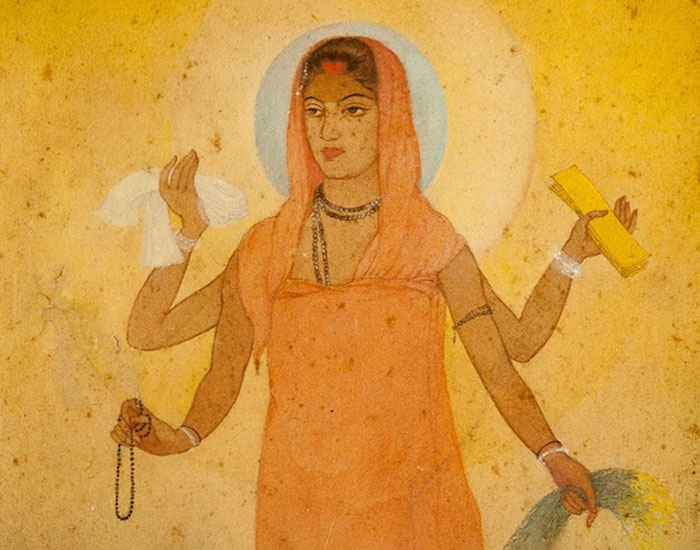
ARTICLE
Originating with the Bengal School in Calcutta (now Kolkata) in the mid-nineteenth century, Revivalism is a key art movement of Indian Modernism, characterised by a focus on Indian cultural, political and artistic identity through the revival of art forms such as folk art, Hindu imagery and a celebration of humanism. Prominent artists of the movement include Rabindranath Tagore, Abanindranath Tagore, Nandalal Bose, Sunayani Devi, Mukul Dey and Asit Kumar Haldar, among others. The origins of the movement can be traced to the Great Exhibition of 1851, London, which presented new trends in industrial design and the Arts and Crafts movement of British artist William Morris, perpetuating a desire for the revival and preservation of traditional art industries in England. This sentiment was reflected in India and further reinforced by the showing of Indian ornamental arts in the Great Exhibition. The Swadeshi movement and the Bengal School were also instrumental to the perpetuation of Revivalism and its reinvigoration of Indian classical culture and artistic methods in the face of British colonisation, therefore counteracting European impositions on Indian cultural practices. In India, the movement sought to promote national industry and artforms by encouraging the practice and production of uniquely Indian styles. The interpretation of a new ‘Indian’ art and aesthetic is usually attributed to Abanindranath Tagore and developed during the turn of the nineteenth century, when European realism was at its peak in Indian art, notably in Company paintings and the works of artists such as Raja Ravi Varma. In contrast, Revivalist works were marked by the adoption of traditional Indian art forms and styles, such as Mughal, Rajashtani and Pahari miniature styles. Abanindranath Tagore also adapted Japanese and Chinese artistic practices, such the wash painting technique, to Indian themes with the aim of developing a pan-Asian artistic style that exists independently of Western ideals. The adoption of such techniques was instrumental in lending Revivalist works their characteristic colour-harmony, as in Abanindranath Tagore’s The Birth of Krishna (1895–97). While there were stylistic differences among the Revivalist artists, they were nonetheless marked by a commonality of palette and materials, with sombre colour schemes and simplistic figures, as well as Indian symbolism. A notable work is Abanindranath Tagore’s Bharat Mata (1905), which shows a young woman holding objects representative of India in her four arms. Similarly, Bose’s painting Sati (c. 1908), while widely differing in style and content, demonstrates a similar tonal palette and lightly washed colour gradations to create a naturalistic figure in a dream-like background. The movement also gained traction among critics, notably AK Coomaraswamy and EB Havell. Coomaraswamy advocated for the independent evolution of Indian idealism and art historical achievements in his essay Art and Swadeshi (1912), whereas Havell supported the Bengal School’s Revivalism in his role as principal of the Government College of Art and Craft, Calcutta, urging students to investigate Indian as opposed to British modes of artistic expression. While Revivalism developed as a means of honouring the artistic past of the Indian culture in the face of colonial forces, the movement’s inclination towards idealism and the religious undertones in the artworks have been strongly critiqued, with proponents such as Havell being variously considered champions of Indian art and artists and propagators of British colonial agenda and ideological nationalism that were instrumental to extending British rule in India. Works by Revivalist artists remain imperative to illustrating the cultural landscape of India at the turn of the century, with the nation moving towards independence. In 2014, the National Gallery of Modern Art, Bengaluru, exhibited works by core Bengal School artists such as Abanindranath Tagore, Bose and Devi to mark India’s sixty-eighth year of independence. Curatorially split into two segments, the first segment showed works by practitioners of Revivalist traditions while the second segment showed the works of artists who broke from Revivalist traditions, such as Jamini Roy and Prodosh Das Gupta. Revivalism dwindled in the early-twentieth century with the development of individualistic and Modernist practices and schools. Despite the movement’s emphasis on a return to historical and traditional art forms, it has also been considered vital to the development of Modernist and individualistic art practices in India, enabling artists such as Roy and Das Gupta to break away from the strict artistic trajectories to explore new aesthetic movements.
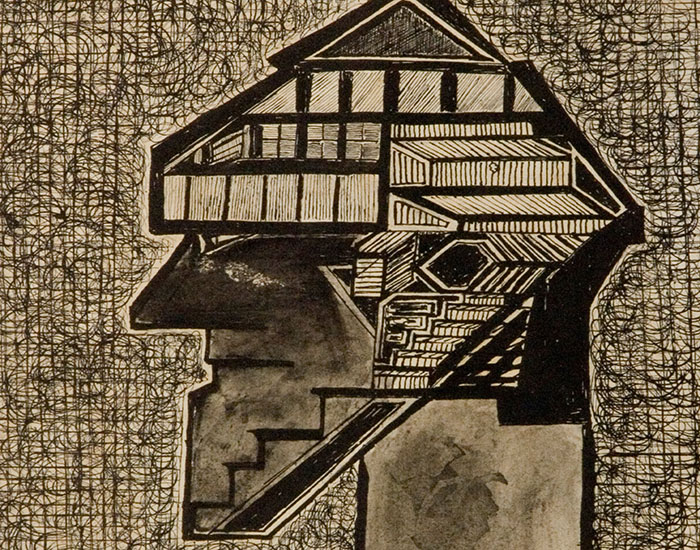
ARTICLE
Born into the influential Tagore family of Jorasanko in Calcutta (now Kolkata), Rabindranath Tagore was a famed poet, philosopher, writer, dramatist, educationalist and artist in colonial India. An important literary figure in the twentieth century, he received the Nobel Prize in Literature in 1913 for his collection of poems, Gitanjali. Tagore’s pedagogic and artistic career marks an important shift for art in India, as it moved away from the Nationalist-Revivalist Bengal School and envisioned a Modernism based on cross-cultural exchange and universal Humanist values. As a self-taught painter, he produced over 2,500 works throughout his life, which were exhibited across Europe, the USA and Asia in the 1920s and ’30s. Tagore’s views on Indian art evolved through the first half of the twentieth century. In the early 1900s, he endorsed the Academic Realism of Raja Ravi Varma’s paintings, which combined a Post-Renaissance Western style with subjects and scenes from Indian mythology and history. Then, he aligned his views with those of EB Havell, his nephew Abanindranath Tagore and the Bengal School, supporting their rejection of Western Realism and revival of medieval miniature painting traditions. He was among those who supported Havell’s controversial change in the syllabus of the Government College of Art and Craft, Calcutta, in which Indian paintings were introduced into the formal academic curriculum. With the end of his involvement in the Swadeshi movement in the early 1900s, Tagore’s politics also began to shift away from the brand of nationalism that viewed Western influences and the revival of authentic Eastern traditions as a binary. His philosophy of art sought to bridge the gap between the East and the West by pursuing a non-hierarchical exchange of ideas. He rejected the Bengal School’s idea of an authentic and essentialised ‘Indianness’ and was inspired by the developments in the Western art world, including Impressionism, Surrealism, Primitivism and art forms and practices from China and Japan. His final and most decisive ideological shift took place in the wake of his extensive travels, between 1912 and 1932, and encounters with Modern and Postmodern art in Europe and the USA. During his first visit to Japan in 1916, Tagore was deeply moved by the culture and its linking of art, everyday life and nature. He invited the students of Okakura Kakuzo to Jorasanko to share the techniques and values of their art in support of a pan-Asian aesthetic. In 1918, he established Kala Bhavana in Shantiniketan, where his ideas of universal Humanism and cross-cultural exchange found resonance. The school later became a part of Visva-Bharati as the first faculty of fine arts in an Indian university. Here, he taught his students the value of cultural and intellectual openness and the interconnectedness of art, nature and life through unconventional and alternative approaches. Through Shantiniketan, he not only espoused a willingness to learn from other cultures, but also attempted to make art that catered to the needs of its immediate community, inspired by the Japanese view of beauty in everyday art. During his last visit to Japan in 1924, however, he became disillusioned by the country’s move towards a Western-inspired nationalism and was vocal about his dissenting opinion. Tagore’s own artistic career began with drawing over the struck-out lines in his manuscripts. These spontaneous and unplanned sketches often took the shape of flowers, beasts, fantastical creatures and abstract figurations. He started painting in the 1920s, when he was well into his sixties, after he had already formulated his philosophy of art and gained international repute for his literary achievements. Scholars believe that Tagore began paintings as a result of being influenced by the different art styles and movements he encountered during his international travels. His art was introspective, an expression of his own individuality, personality and a deep-rooted cultural consciousness. He designated art to the realm of the unconscious, due to which his artistic productions had abstract elements. Though he was partially colour-blind, he used bold pigments, albeit in a limited palette, uninhibited strokes and unorthodox materials such as rags, swabs of cotton and his fingers to paint. Geometric shapes appear regularly in his work, as do giant ovoid faces. A sense of rhythm was central to his style, with themes ranging from faces, masks, natural and zoomorphic figures, human groups, individual figures and landscapes. This rhythmic articulation of lines has led some scholars to see traces of the Art Nouveau style in his work but only as incidental to his more immersive and Expressionist style. The most famous, and perhaps most discussed, of his works features a series of faces that are interpreted as masks. The haunting face of a woman with pensive eyes — a recurring motif in his repertoire — is often interpreted as the looming memory of his intellectual companion and sister-in-law Kadambari, who died by suicide a few months after Tagore’s marriage. His later portraits were known to cause discomfort to viewers, owing to the subjects staring back at them. These portraits had heavily lit foreheads, exaggerated noses and a despondent and dramatic air, shot through with a sense of darkness and pain. Tagore also painted landscapes depicting rural Bengal, inspired by Shantiniketan and his time at the Tagore family estates in erstwhile East Bengal. He also famously never named or dated his paintings in order to free them from the constrictions of identity, specificity, language and chronology in keeping with his universalist philosophy. After Tagore’s death in 1941, the legacy of his art was preserved and perpetuated through the Kala Bhavana. His art was proclaimed a National Treasure in 1972 and was prevented from being exported out of the country, although his work had already come to be found in collections abroad. In 1997, art historian R Siva Kumar curated the show, Shantiniketan: The Making of a Contextual Modernism for the National Gallery of Modern Art, New Delhi, to celebrate fifty years of Indian independence. Since then Contextual Modernism has become an important framework to examine the work of Tagore and other early Kala Bhavana artists.
A category of artists who emerged out of an interaction between Indian and European culture and scientific exploration after the British East India Company gained administrative control over Bengal in 1757, were known as Company painters. Company rule resulted in the loss of courtly patronage for artists in India, which led to artists and craftsmen from the courtly centres in Bengal migrating to cities such as Patna and Murshidabad, which had viable commercial markets.
The East India Company and its officials, such as William Fraser and James Skinner, often operated as middlemen, putting visiting naturalists and ethnographers in touch with local artists who could be commissioned to visually document the subjects of the survey. The Company school had several centres across the subcontinent, populated by artists who had been trained in local traditional Indian painting styles and then adopted conventions of Western art, such as perspective, chiaroscuro and the picturesque. Indian painters thus played a major role in creating these early ethnographic and scientific records of the natural and cultural features of India, including flora, fauna, geology, costumes, architecture and street scenes. Notable artists of the Company painting school included Sewak Ram of Patna and Ghulam Ali Khan of Delhi.
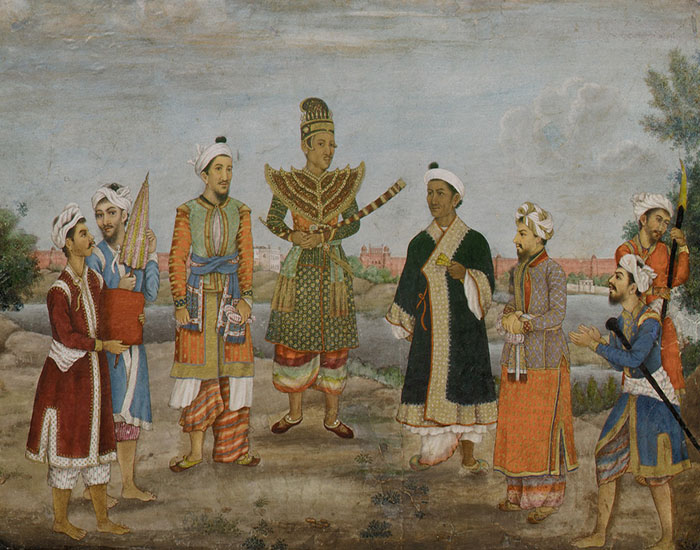
ARTICLE
Painting in the years 1817–52 while primarily based in what is now New Delhi, Ghulam Ali Khan is best known for his work in the Company School. His career traces a period of transformation of painting in North India, as Khan adapted his style for patrons varying from Mughal emperors in his early years to the officers of the East India Company from the mid-point of his career. From 1817 onwards, Khan was a painter in the courts of the Mughal emperors Akbar II and Bahadur Shah II, following which he worked intermittently for the last Mughal emperor, Bahadur Shah Zafar, until 1852. As the Mughal court’s political influence and financial resources dwindled, he maintained simultaneous employment at the regional courts of Alwar and Jhajjar, while also working on commissions by officers of the East India Company such as William and James Fraser and James Skinner. By the 1830s, William Fraser was his principal patron, for whom he worked on the Fraser Album. Khan came from a family of court painters. His uncle Ghulam Murtaza Khan was a painter in the court of Akbar II and was known to render his figures with controlled naturalism. Faiz Ali Khan, his brother, worked on architectural views for Thomas Metcalfe, and another relative, Mazhar Ali Khan, was the principal architectural painter commissioned by Metcalfe for the Delhi Book. Khan’s work travelled between different conventions and modes — portraiture, architecture, topography, genre scenes and manuscript illustration. His 1817 painting of the diwan-e-khas (Hall of Special Audience) of the Red Fort established a trend towards topographical and architectural subjects in the Mughal idiom. He was the first Mughal artist to move out of the conventions of miniature painting and towards a picturesque mode. This is evident in his architectural views, such as the exterior of the Red Fort painted in 1822. At the court of Maharao Raja Binne Singh of Alwar, he made paintings for the illustrated manuscript of Gulistan by Sa’di. While working on the Fraser Album, he developed a unique Indo-European pictorial vocabulary. In his work for Skinner, his unique style is rendered in great detail and proportion with a series of large watercolour and gouache paintings that depict Skinner’s military regiment, life on his estate and sweeping views of his grounds. Khan’s multifaceted career elucidates the shifting tides of painting with the transformation of political life in the subcontinent as well as the newly emergent aesthetic that was mediated by it.
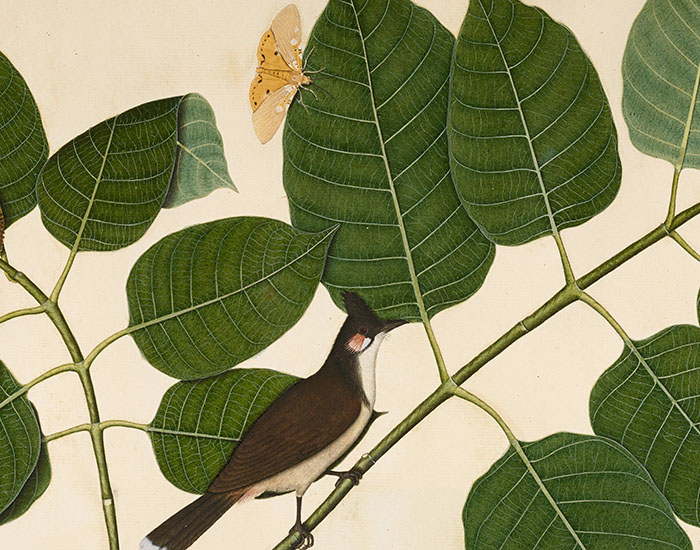
ARTICLE
A school of painting that emerged in the Indian subcontinent during the late eighteenth century, Company painting was a hybrid style that was influenced by European painting styles as well as existing painting traditions in India, bringing together the visual idioms of Mughal and Rajput miniature painting with Western modes such as Victorian Illusionism and the picturesque. Other influences included prints from Europe as well as the works of landscape painters such as Thomas and William Daniell. Notable artists of the Company painting school included Sewak Ram of Patna and Ghulam Ali Khan of Delhi. Company painting emerged out of a sustained interaction between Indian and European culture after the British East India Company gained administrative control over Bengal in 1757. Company rule resulted in the loss of courtly patronage for artists in India, which led to artists and craftsmen from the courtly centres in Bengal migrating to cities such as Patna and Murshidabad, which had viable commercial markets. Indian artists who had been trained in the conventions of Western art, such as perspective, chiaroscuro and the picturesque, were absorbed in the administrative apparatus of the East India Company and employed to create an ethnographic record of the people, landscape, culture and traditions of India, including costumes, professions, architecture and street scenes. There were also a number of artists who came from Europe, particularly Britain. Sustained by the East India Company and its officials, such as William Fraser and James Skinner, the Company School had several centres across the subcontinent, with the work influenced by the local subject matter and pre-existing styles. Commonly commissioned subjects included depictions of flora and fauna, personal collections of animals, estates, monumental architecture, banquets and parties, servants, carriages and horses. Beyond commissions, the artists also began producing standard sets of paintings. Instead of the traditional gouache, the paintings were characteristically made in watercolour and were distinct in their treatment of linear perspective and shading. They were rendered on paper, occasionally on ivory, and bound as folios in albums. Even as it spread over the subcontinent, the Company Painting style remained concentrated in centres of British influence such as Delhi, Lucknow, Varanasi, Kolkata, Murshidabad, Patna, Thanjavur and Tiruchirapalli. It lasted through the nineteenth century, also spreading to colonial centres in Myanmar, Nepal and Sri Lanka, until being replaced by the medium of photography. A large number of Company paintings were entrusted to the East India Company’s Museum as gifts from Company officials. After its closure, the collection was transferred to the Victoria and Albert Museum, London, which, along with the British Library, contains the largest body of Company paintings.
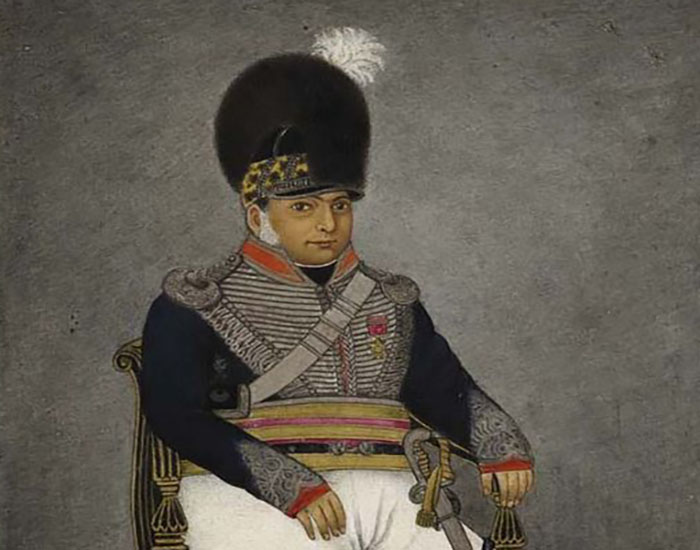
ARTICLE
A soldier and leading patron of Delhi artists in the nineteenth century, James Skinner is known for his authorship of several books, notably the Kitab-i tashrih al-aqvam (“History of the origin and distinguishing marks of the different castes of India”), as well as raising the cavalry regiment known as Skinner’s Horse. Skinner was born to a Scottish father and a Rajput mother in Calcutta (now Kolkata). His mixed ethnicity prevented him from becoming a confirmed officer under the British crown, and he began his career as a mercenary in the Maratha cavalry, later joining the Irregular Cavalry Corps, which served the British Army when needed. When William Fraser was appointed the Commissioner of Delhi, Skinner was given the responsibility of establishing his cavalry on the outskirts of Hansi, Haryana. Around the same period, in the early 1820s, Skinner began absorbing the painters working for Fraser into his own circle. Skinner was fluent in Persian and wrote two books — Kitab-i tashrih al-aqvam (1825), which contained 120 paintings and is currently in the collection of the British Library, and Tazkirat al-Umara (“Biographies of the Nobles”) (1830), which featured thirty-eight paintings. While the former is a taxonomic and ethnographic record of castes in India, accompanied by individual and descriptive portraits of the subjects, the latter presents the history of royal families of Haryana, Punjab and Rajasthan. From 1825 to 1828, he commissioned Ghulam Ali Khan to paint a number of images, notably three watercolours: one portraying his cavalry regiment at Hansi in 1827–28 and the other two depicting his newly built St James Church in Delhi in 1836. These paintings served the purpose of both documentation as well as positioning Skinner as a land-owning noble and an elite military officer in Delhi society. Skinner was made lieutenant-colonel (1828), and later, a colonel within the British army. He died in 1841 in Hansi.
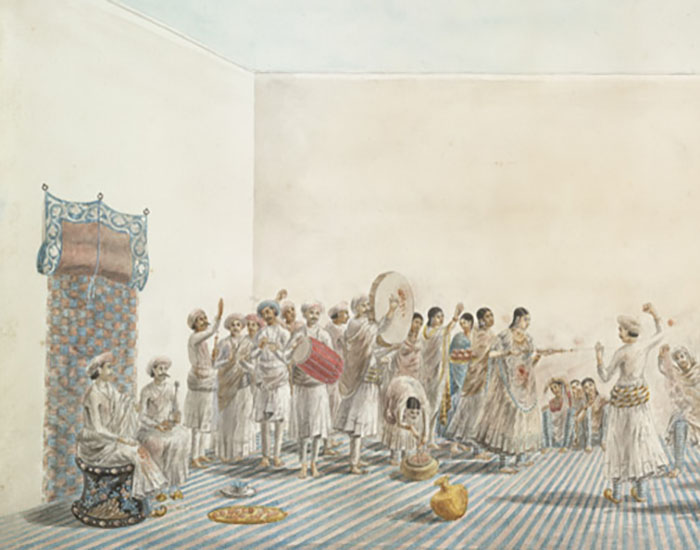
ARTICLE
Also known as Patna Kalam, the Patna School is a style of painting grouped under the Indo-British Company School of painting. It originated in Patna and various other parts of Bihar, primarily Danapur and Arrah, in the mid-eighteenth century in response to early British travellers’ interest in documenting the country and its people. The resulting paintings provided a glimpse into the prevailing local environments, livelihoods, clothing and festivals, as well as extant flora and fauna, and were made and sold as sets of snapshots, or firkas, patronised primarily by employees of the British East India Company. Prominent artists of the school include Hulas Lal, who is considered an early master, Sewak Ram, Sona Bai, Shiv Lal, Daksho Bibi, Shiva Dayal and Mahadeo Lal. The School is a derivative of Mughal miniature painting, which was largely practised in courts. The decline in patronage under Aurangzeb’s rule in the seventeenth century, coupled with a shift in the tastes of Indian patrons – who favoured the work of visiting European painters – forced several local artists to migrate to various parts of the country, away from these courts. One such group settled in Murshidabad, Bengal, enabled by the support of Nawab Mir Jafar, the first Nawab of Bengal installed by the British East India Company. During this period, the painters came in contact with officials from the British East India Company, as well as local businessmen who commissioned paintings of the people, monuments and flora and fauna of India. However, dwindling support and patronage from Mir Miran, son and descendant of Mir Jafar, and the subsequent decline of Murshidabad uprooted the painters, who then resettled in Patna around 1760. By then, Patna had become a prosperous centre of new activities following the influx of Dutch, Chinese and Portuguese settlers trading in cotton, sugar, indigo, opium and spices. Artist groups settled primarily in the Maccharhatta, Lodi Katra Chowk and Diwan Mohalla localities of Patna city, making portraits for local kings, nawabs, landlords, officers, businessmen and soldiers. Some artists of the School flourished in the court of Raja Ishwari Narayan Singh of Benaras (now Varanasi), while others worked in smaller provinces such as Bettiah, Darbhanga, Purnia, Gaya and Arrah. The result was the emergence of a composite style of painting, in which the brilliant colours of the Mughal style met the British manner of shading. The ornate borders of Mughal painting were abandoned in favour of a plain white background, which helped draw attention to the subject. Despite thorough knowledge of the scientific perspective, painters of the School, like their Mughal antecedents, used this knowledge only when it contributed to the pattern or decorative quality of the overall image. The style also largely adhered to the material conventions of Mughal miniatures, with the exception of the surface — whereas Mughal miniatures were executed on paper or cloth, artists from the Patna School used a variety of surfaces, ranging from paper to mica, silk, vellum, bone and round ivory. The paper used was either locally produced or imported from Nepal. Colours were made from mineral or natural materials, such as fruits, flowers, barks of trees and blue and red stones, and were prepared in the monsoon (to avoid dust particles) and applied in the winter. All paintings were executed in Kajli Siyahi, which involves applying paint directly on the surface with the brush without a prior drawing or outline. Artists created their own brushes with hair from squirrels and horses and feathers from pigeons and eagles for variations in thickness. Java stippling, which consists of dots that look like barley grains, was characteristic of the School’s work, as they gave the painting the appearance of a print. Since these paintings were bought by European traders as souvenirs, portraiture emerged as the prevalent subject, and the depiction of everyday activities and occupations of the locals became an enduring theme. The School’s paintings were an articulation of the people, especially the working classes within the city, depicting drummers, coppersmiths, local congregations, dancers and singers, as well as various religions and celebrations. The established demand for firkas also coincided with the establishment of the Bihar Lithography — a press set up by Sir Charles D’Oyly and assisted by Jairam Das — which produced books on Indian life and customs that were possibly inspired by and in turn influenced the School’s artists. The press was instrumental in producing prints in large volumes to meet growing demand which, coupled with the advent of photography, led to the School’s decline. The passing of Ishwari Prasad, widely considered to be its last famous artist, in 1950 marked the end of a two-hundred-year-long tradition. The Bihar government has since attempted to revive the art form, notably through releasing calendar prints of the School’s paintings in 2010. Institutional collections of work from the Patna School exist in the Patna Museum; Khuda Baksh Oriental Library, Patna; Patna University’s College of Arts and Crafts; The National Museum, New Delhi; the Victoria and Albert Museum, London; and private collections around the world.
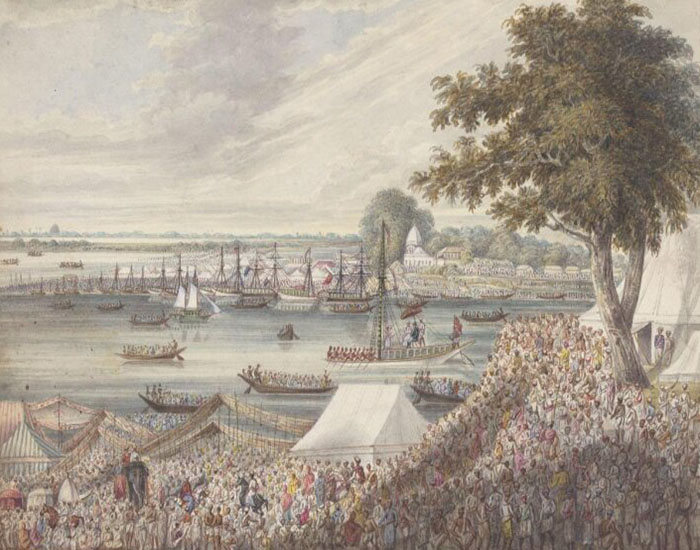
ARTICLE
A prominent Company School artist, Sewak Ram’s work defined the distinct stylistic elements of the Patna School of Painting. However, little is known about his early or personal life; it is believed that he moved to Patna in the 1790s from Murshidabad to find work as a painter in the bazaar, where he attained popularity. The period between 1750 and 1760 witnessed the political ascendancy of the British East India Company and the waning power of the Nawab of Murshidabad. It was during this time that artists, who were left with little or no royal patronage, migrated to Patna. Despite its political instability, Patna was a booming commercial centre and the artists of the Patna School found a market for their art in the city. By the time Ram began working, the Patna School was well established. Similar to the Murshidabad School, the Patna painters had absorbed European influences such as the use of watercolours and painting subjects such as festivals, which held great appeal for Europeans. Ram’s work introduced a formal style which became characteristic of Patna painting; he painted in a technique known as Kajli Siyahi where pictures were painted directly with a brush, instead of first creating outlines. The human figure was painted with precision, with identifiably sharp noses, thick eyebrows and deep-set eyes. The paintings have a sombre colour palette, influenced by European prints, with either sepia and ochre overtones, while clothing is depicted with dull whites and greys and using light and occasional colour. Ram was well known for his crowd scenes depicting festivals, processions and interiors which he painted in the Murshidabad model, while also focusing on figure studies in the foreground. Among his most popular works are scenes of Muharram processions and prayers at an imambara. By the 1820s, his large-scale paintings of ceremonies and festivities were being collected by governors-general of India such as Lord Minto and Lord Amherst. His work was studied by the Patna painters, as evidenced by the presence of his paintings in the collection of Ishwari Prasad, who was grandson to Ram’s contemporary Shiva Lal. His successors continued following his model of painting until the nineteenth century. Presently, his work is part of private collections as well as on display at the Victoria & Albert Museum, London.
Known for their intricacy and small scale, miniature paintings in medieval India were composed into personal albums (or muraqqas) and manuscripts where they illustrated the accompanying text. Such manuscripts largely consisted of romances, epics, works of fantasy, travel literature, religious texts and biographies.
The tradition of miniature painting in the Indian subcontinent has been traced to palm leaf manuscripts made in the ninth century under Pala patronage in eastern India and Nepal. From the eleventh century onwards, Jain manuscript painting began to be practised in the west and central India, first on palm leaf and then, with the introduction of paper from West Asia in the fourteenth century, in large paper codices as well. These palm leaf paintings had a limited but bold colour palette and used innovative compositions to pair the text with images.
The painting style of the Safavid court in Persia exerted a heavy influence on Mughal and Deccan miniature painting in the late sixteenth century. Mughal painting was especially influential due to the empire’s political power, and this naturalistic, restrained and yet heavily ornamented style was often imitated by smaller kingdoms. Rajasthani, Deccan, Maratha and Pahari courts often employed artists who had trained in the Mughal style, although these schools eventually came to be known for their own unique styles, techniques and subject matter.
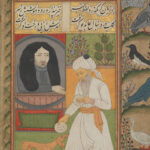
Comprising the manuscript illustration traditions patronised by the sultanates of Ahmadnagar,…
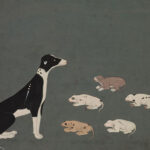
The traditions of manuscript painting that emerged in the Rajput courts…
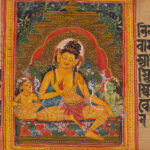
Bound and painted palm-leaf books commissioned during the reign of the…
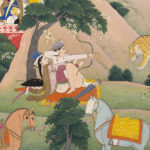
Manuscript and muraqqa illustration traditions in kingdoms at the foothills of…
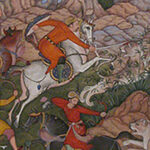
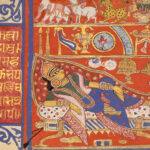
The process of stamping designs fabric using dye-soaked, hand-carved wooden blocks is known as woodblock printing.
The convenience of combining motifs and intricate patterns on different blocks to create unique designs made the resulting textile affordable and appealing. Some of the more popular block printing traditions include ajrakh, bagh, bagru, sanganeri, saudagiri, mata ni pachedi, namavali and balotra, as well as the less popular traditions of the Chhimba community in Punjab and the more recent printing practices in Serampore of West Bengal.
Although block printing is believed to have been practised in a rudimentary form as early as the Indus Valley civilisation, the earliest material evidence of these textiles and their international trade came from fragments of cloth from Gujarat, found in Egypt and Indonesia, dated to the thirteenth or fourteenth century. The Indian Ocean trade in Indian textiles continued until it was taken over by the British East India Company and the Crown in the nineteenth century.
While several Indian communities practise the craft, the Khatris and Chippas in the country’s northwestern regions are the oldest known communities to have been continuously involved in block printing, going back as far as the sixteenth century.
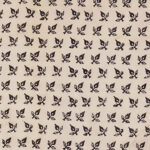
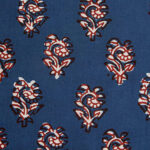
This block printing technique for textiles derives its name Balotra from the city in the…
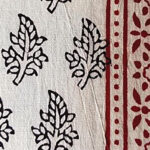
A traditional form of block printing locally known as thappa chhapai using natural dyes, Bagh…

A textile block printing technique that features repeated floral buti arranged in various…
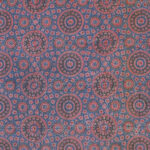
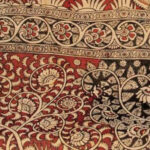
A form of kalamkari from southern India, where designs are printed, instead of being drawn…
Indian textile dyes date back four thousand years, with the earliest evidence being madder-dyed cloth fragments from Mohenjo-Daro dating to the second millennium BCE. Trade of dyes may have begun in this same period, based on the traces of indigo found in Egyptian tombs and the later records of trade with the Mediterranean world. Commercial activity around natural dyes reached its height during the medieval and early colonial periods in the form of block-printed and kalamkari cloth before they were largely replaced by European synthetic dyes.
Indian dyes were coveted not only for their vibrancy and their use in inventive textiles but also because of the carefully guarded traditional dyeing processes, which often involved the application of mineral salts or mordants that fixed the colour to the fabric, making the colours uniquely durable. Shades of blue made from indigo, black from haritaki (black myrobalan) and khair (acacia bark), and a range of reds, lilac and burgundy made from manjistha (madder), chay root, aal (Indian mulberry) and lac insects were the longest-lasting dyes, which is why these colours are still visible on fabric thousands of years later. Yellow dyes are made mainly from haldi (turmeric root) and to a lesser extent kusumba (safflower), palash (Parrot tree) flowers and pomegranate rind. However, natural yellow dyes are relatively short-lived compared to blue or red, as are mixed dyes that use a yellow element, such as greens and oranges.
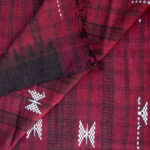
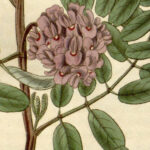
A natural dye extracted from the Indigofera tinctoria plant native to South Asia, indigo dye…
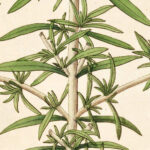

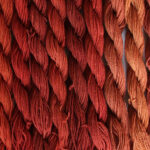
A natural red colorant extracted from the roots of the Indian madder or manjistha (Rubia…
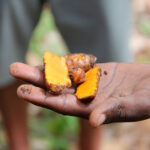
A bright yellow natural dye derived from the turmeric plant (Curcuma longa) native to South…
Indian mask-making traditions are typically practised by specific non-dominant castes or Adivasi communities. They are worn as part of a costume in a range of traditional performances from martial arts like Chhau to narrative dance forms like Kathakali. In most dance or theatre forms, masks are used as a way of maintaining iconographical consistency regardless of the performer, while in others, such as Cham and Bhagavata Mela Natakam, the mask is also a way to channel a supernatural entity. In a few traditions, the mask is also considered a sacred object, such as the Bhuta mask or the Narasimha mask used in Prahlad Nataka performances.
Most Indian masks are made of perishable materials like paper pulp or wood, and as a result, surviving historical examples are rare and much more recent than the performances in which they are used. In some cases, such as Kathakali, the mask is actually a thick and vivid layer of make-up that effectively replaces the performer’s face. Exceptions to this perishability include bronze Bhuta masks, examples of which date back to the eighteenth century.
Mask-making, like many Adivasi and folk traditions, is typically inherited and is less frequently practised today due to insufficient commercial incentives.
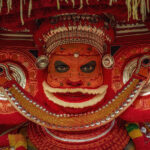
Part of the costuming of Theyyam performers in Kerala, Theyyam masks combine face painting and masks…
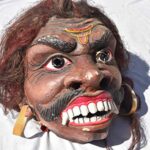
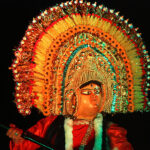
Large, colourful masks of clay and wood, chhau masks are used for chhau performances in…
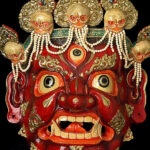
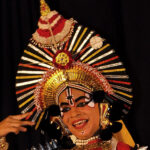
Colourful masks used in open-air performances in the coastal parts of Karnataka and northern Kerala,…
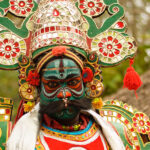
Painted facial makeup and masks, therukoothu masks are used for therukoothu performances. The…
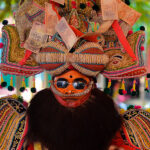
Two closely linked embroidery traditions historically practiced by the women of undivided Punjab since the late medieval period, both phulkari and bagh embroidery involve the arrangement of floral, geometric and sometimes narrative imagery on a red base fabric, also known as khaddar. Literally meaning “flower work,” phulkari is recognised by its neat, regular patterns that leave large portions of the khaddar visible. With the bagh embroidery — bagh means garden — the khaddar is almost completely covered, exposed only as thin lines in the design. Hence the name, which likens the embroidered garment to a field of flowers. Due to the intricate work involved, baghs are almost never made today.
The origins of the crafts are debated, with some scholars suggesting that it was introduced to India through Central Asia by the Jat community in the late medieval period, while others state that the craft is a variation of Persian embroidery designs.
Traditionally, odhinis and chaddars were embroidered and these were often given as gifts at major events in women’s lives, particularly marriage. The nineteenth and early twentieth centuries saw the beginning of the commercial application of the craft on other garments, such as coats, for women living in the cities. Following the Partition, phulkari and bagh embroidery went into a decline in India and Pakistan through the 1950s, but has since been partially revived and commercialised through efforts by government and corporate entities.

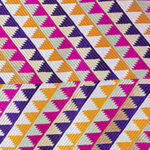
A textile tradition practised in the Punjab region of India and Pakistan as well as…
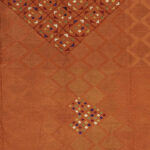
A type of bagh characterised by a large, decorated triangle along its longer sides, ghunghat…
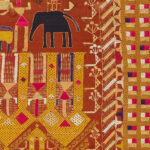
A type of phulkari typically donated to temples and gurudwaras, darshan dwar phulkari has a…
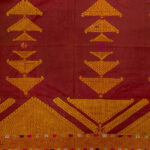
A reversible phulkari that features prominently in wedding rituals, a chope is a large red…
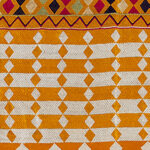
An embroidery tradition historically practiced and inherited by the women of Punjab in India and…
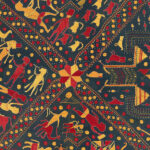
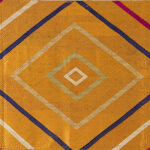
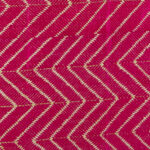

A type of phulkari embellished with sheeshe (small, dull pieces of glass) that are stitched…
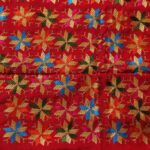
A type of phulkari worn by Punjabi brides during their wedding ceremonies, the suber phulkari…
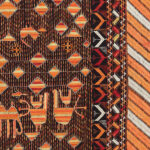
A type of phulkari that depicts human and animal forms, often in a narrative format,…
Mudras are a set of hand gestures and finger positions that serve as symbols in Buddhist art, representing the Buddha’s various roles and states of mind. Mudras were first seen in statues from Gandhara in the first century, and appear to have been codified by the third century.
The fingers of the hand are thought to represent five levels of consciousness needed to attain buddhahood, therefore various gestural configurations are seen as syntheses of these factors. Mudras also represent the dominant themes in particular episodes of the Buddha’s life, making the gestures useful as narrative and pedagogical devices for viewers familiar with the symbolism. They are typically shown being performed by figures of religious authority such as the Buddha and bodhisattvas.
Of the large number of gestures that had subsequently evolved, the five primary mudras are the abhaya mudra (the most common), the dharmachakra mudra, the bhumisparsha mudra, the varada mudra and the dhyana mudra.
Mudras are also found in Hindu and Jain iconography, albeit to a lesser extent and only after being established in Buddhism. Classical dance forms, particularly those in India that have emerged in association with religion, also feature a repertoire of mudras.
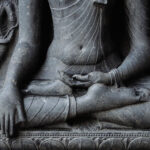
A symbolic gesture in Buddhist iconography and practice – and one of five common mudras…
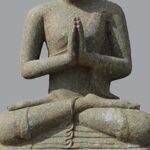
One of the stylised hand gestures, or mudras, commonly found in Buddhist and Hindu iconography,…
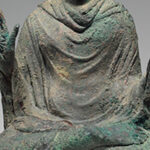
One of the five commonly depicted mudras in Buddhism, the abhaya mudra is associated with…

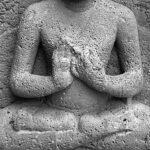
The most common of the five main mudras in Buddhist art, the dharmachakra mudra is…
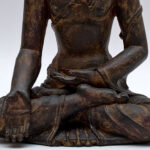
Folk painting traditions in India are distinct from murals and illustrated manuscripts because they are intended for a mass audience and are often moved from place to place by performers who use these paintings as narrative aids.
In many such painting traditions including Phad, Cheriyal and Manjusha, the painting and performance of the narrator is a joint effort and is undertaken by artisans from non-dominant caste communities. The content of the paintings varies from tradition to tradition but typically has a strong regional character, whether it is entirely devoted to the deified folk heroes of Phad paintings, or the regional versions of the Puranas illustrated in Cheriyal painting. In the case of traditions like Patua, illustrations are tailored to the myths and stories of the communities that make up each town or village that the performers visit.
At times, but not always, the performances are attended by audiences that belong to Adivasi and non-dominant caste groups. Such arrangements are a major component in regional networks among marginalised groups, in addition to barter and trade textiles, produce and handicraft items.
In painting traditions like Patachitra and Phad, as well as related practices like mask-making, the objects themselves have sacred value and are treated as portable shrines.
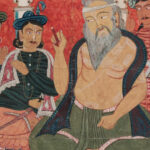
A folk tradition of scroll-painting in Bengal, patua combines visual and oral storytelling narrated by…
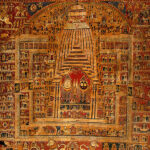
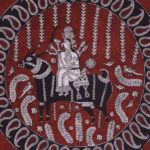
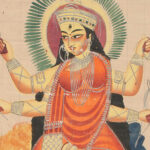
A tradition of watercolour painting that originated in Calcutta (now Kolkata), Kalighat painting…

A narrative painting and performance tradition, Cheriyal scroll painting has been practised in the town…
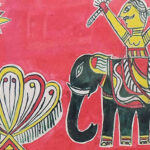
Practised primarily in Bhagalpur, Bihar, Manjusha painting includes narrative scrolls, murals as well as painted…
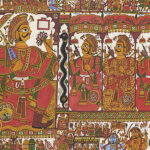
A form of scroll painting from the Mewar region of Rajasthan, Phad painting chronicles the…
The Indian subcontinent is home to several traditional tabletop games, including some that have come to be known by other names today, such as Snakes and Ladders (originally known as Moksha Patam) and Ludo (Pachisi). Games and game ideas moved to and from India along trade routes: Ganjifa was brought to India by the Mughals, Naqsh was a confluence of Ganjifa and card games played by Portuguese sailors, and Pallanguzhi arrived through trade with eastern Africa, where its ancestor mancala was invented. Games like Moksha Patam, Carrom and Pachisi travelled to Europe, UK and USA through colonial agents.
Indian board games are typically cross and circle games with randomisers, played by two to four players. The players’ status was reflected in the choice of game or the type of board, with emperors like Akbar playing a life-sized version of Chaupar. At one time considered talismans and even a form of currency, cowrie shells were used as an affordable randomiser or token for board games by most people, while wealthier classes used ivory dice.
The idea of luck in games, extrapolated as divine play, is a recurring theme in Indian mythology, notably in the Mahabharata and the Skanda Purana. Most Indian tabletop games contain underlying moral commentary and heavy symbolism. Among variations of Ganjifa, the images on the cards and the suit divisions are indicative of the social and religious context from which they emerged.
A sculpture or building made by cutting a single piece of rock into the desired shape is called a monolith. Monolithic architecture may be considered a subset of rock-cut architecture; it is carved internally and externally, while still attached to the surrounding landscape. Monolithic sculpture, however, may be separated from its original location and moved elsewhere, prime examples of which are the Lion Capital at Sarnath, the Gomateshvara statue at Shravanabelagola, Karnataka and the Ugra Narasimha statue at Hampi.
The decision to carve a living rock is widely assumed to have been based, at least partially, on convenience as evenly sized blocks did not have to be quarried and transported to the construction site. Another reason is spiritual; living rock architecture is seen to possess a connection to nature. The earliest example is the caves in the Barabar hills where Buddhist ascetics could take refuge from the weather since caves (even artificial ones) were considered an extension of the natural world as opposed to the material civilisation which the ascetics had disavowed. Such monolithic architecture has thus been reserved exclusively for ambitious religious buildings, such as the Pancha Rathas at Mahabalipuram and the Kailasanatha temple in Ellora.
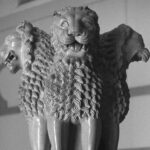

Also known as the Kailasa and Cave 16, the Kailasanatha temple at Ellora is the…
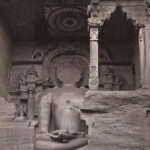
Stone sculptures, often reliefs, that are carved from living rock and are typically…
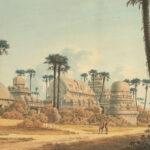
A complex of five monolithic, rock-cut, granite structures located in Mamallapuram in Tamil Nadu, the…
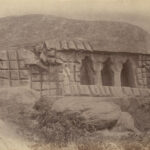
Two rock-cut shrines excavated during the seventh and eighth centuries CE, the Thirumalapuram cave shrines…
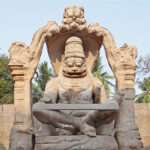
A large granite statue of Narasimha, the Ugra Narasimha statue was commissioned in…
India’s international trade history is extensive and it can be divided based on periods and routes. Trade primarily occurred in the Indian Ocean from the Bronze Age onwards and arguably still continues, connecting the Indian peninsula to Southeast Asia, the Persian Gulf ports, the Red Sea ports and the East African coast. The oldest known use of this route was between the Indus Valley cities and ports in ancient Egypt and Mesopotamia, as evidenced by stamp seals, textiles dyed with indigo and madder root, and agate beads.
Following the expansion of the overland and maritime silk routes, Indian trade with the Mediterranean reached its peak in the first century CE, leading to artefacts like an ivory yakshi statue — believed to be from either Bagram or Bharuch — finding its way to Pompeii. Mediaeval Indian Ocean trade, particularly in the case of dyed cotton textiles with kalamkari or block-printed designs, flourished until colonial encroachments in the eighteenth century. Thereafter, Indian goods became models for imitation and alteration during the British Raj, eventually being replaced through mechanisation. This effectively ended the major role that India played in global trade until the country’s economy was liberalised in 1991.
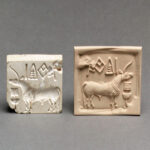
Square or rectangular objects used for stamping that are typically made from steatite, featuring carvings…
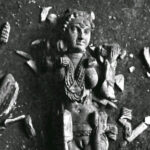
A carved ivory statuette of a female figure, the Pompeii Lakshmi was recovered during archeological…


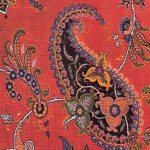
Recognisable by its stylised almond-like shape, the badaam motif bears visual similarities to the Persian…
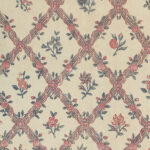
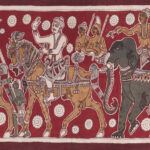
A textile tradition where cotton textiles are traditionally hand-painted with pictorial narratives through a bamboo…
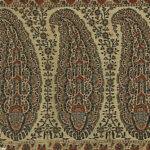
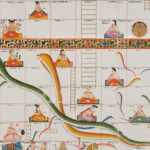
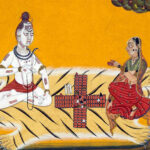
Early Indian photographers were usually hobbyists from wealthy families, as they had access to the equipment and leisure time needed to practice the craft. Typically male — with rare exceptions like Annapurna Dutta — these photographers imitated British and European practitioners in their methods and choice of subjects. This included monuments, landscapes and portraits. The latter included commissioned portraits of royalty or wealthy clients, and anthropological documentation of Indians from non-dominant caste or indigenous groups. This exchange between Western and Indian photographers occurred mainly through journals, exhibitions and amateur photographic societies in Bombay, Madras and Calcutta (now Mumbai, Chennai and Kolkata, respectively).
By the twentieth century, cameras were affordable (while still being a major investment) and portable, making it feasible to learn and apply photography as a skill. Photographers and photojournalists, such as Narayan Virkar, Homai Vyarawalla and Kulwant Roy, were more conscious of the socio-political applications of the camera than their nineteenth-century predecessors. They documented the freedom movement, took portraits of prominent leaders, and captured instances of colonial suppression. Others, like AL Syed, Mitter Bedi and Madan Mahatta, worked in homegrown industries that had embraced photography, such as fine art, cinema, advertising and tourism.
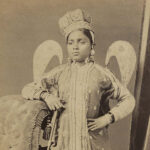
A professional photographer and engineer from Lucknow, present-day Uttar Pradesh, Darogah Abbas Ali…
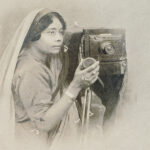
Born in 1894 in undivided Bengal, Annapurna Dutta was one of the first professional female…

A twentieth-century photographer known for his images of rural India and life in the princely…
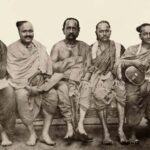
A nineteenth-century photographer, doctor and academic, Narayan Daji was one of the few Indian members…
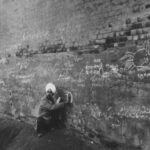
An Indian portrait photographer and photojournalist who was active in the early twentieth century, Narayan…

Known for his photographic practice and pro-reform state policies, Sawai Ram Singh II…
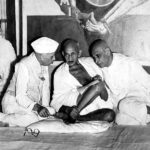
A pioneering Indian photojournalist photographing for much of the twentieth century, Kulwant Roy…
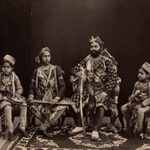
A pioneering Indian photographer in British India, Lala Deen Dayal, also known as Raja Deen…
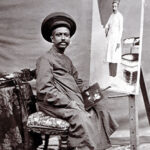
One of India’s earliest commercial photographers who specialised in portraiture, Hurrychund Chintamon was based in…

An official photographer for the British government and a widely recognised photojournalist from…
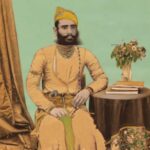
One of the chief painters and photographers associated with the Shrinathji Temple at Nathdwara, Rajasthan,…
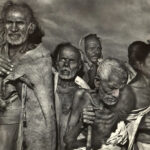
An Indian photojournalist whose work spans much of the twentieth century, Sunil Janah documented India…
Re-discovered art objects from pre-modern India provide valuable clues about the artistic styles, patronage, material use and religious iconography of their time and place. In rare instances, however, objects of clear importance but no context are found, sparking debate among historians about their place in South Asian history. When ensuing debates are sustained over time, they often elevate the artwork well beyond its actual historical significance.
Colonial-era historians have been accused of making ill-fitting comparisons between Indian art and movements in European history, such as Gothic architecture or Hellenistic sculpture. Early Indian art historians who received a Western education but whose values were shaped by the independence movement, may bring a nationalistic lens that emphasises the antiquity of an Indian art object while rejecting the foreign influences it may have received. The effect of colonisation — and by extension, Victorian morality — in India can be seen in writing that forefronts the spirituality of Indian art, while downplaying the importance of violent or erotic imagery. In some cases, over-extrapolation motivated by religious agendas may pose as fact, creating myths for later historians to dispel.
Practical factors that affect the process of reassembling this lost context include technological limitations for dating artefacts, lost or missing objects, undeciphered languages and so forth.
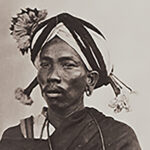
The multi-volume photographic and print publication, The People of India: A Series of Photographic Illustrations,…
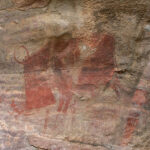
Also known as Bhimbetka Shelter III F-19 and Bull Rock, this rock shelter derives its…
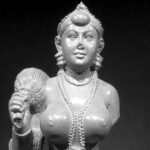
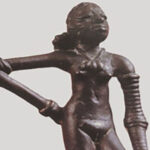
A bronze statuette depicting a free-standing nude female, the Dancing Girl was excavated from the…
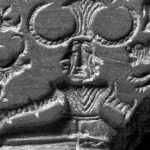

A carved ivory statuette of a female figure, the Pompeii Lakshmi was recovered during archeological…
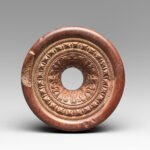
Small ring-shaped stones, typically made from sandstone or steatite, with a carved upper surface that…
Dating back to the tenth century, traditional Indian hand-knotted carpets and rugs rose to prominence in the sixteenth century under sustained Mughal patronage. Carpets were a major trade textile in the colonial period as well and were sometimes made by inmates in prisons.
Indian carpets are typically made of knotted wool with a woven cotton base. Most traditions use the asymmetrical Persian knot, for which a strand of yarn is tied around two adjacent warp threads, and fineness is determined by the kind and number of knots. Carpets typically feature recurring motifs, including palmettes, geometrical shapes, flowers, the tree of life and occasionally, animals. Some Indian carpets also contain representations of landscapes.
Since the sixteenth century, many Indian carpet varieties have borrowed design elements from Iran and Central Asia; but they were soon distinguished from these traditions by the relatively brighter colours of Indian dyes. Additionally, Tibetan rugs like khabdan have been produced by Tibetan artisans at centres in Himachal Pradesh and Assam since the 1950s.
Notable types of carpets and rugs from across India include gabba, kaleen, galeecha and dhurrie. Most historic carpet and rug manufacturing centres were located in the northern and western regions of the Indian subcontinent, while contemporary centres include some in the south and north-east India as well.


Woven in Kerman, Southeast Persia (now Iran), Kerman carpets were introduced to India through trade…
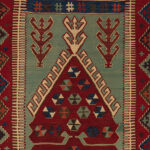
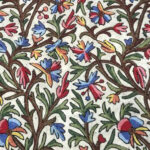
Hand-felted and embroidered rugs produced in parts of Kashmir, Himachal Pradesh, Gujarat and Rajasthan, namda…
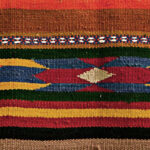
A thick, flat-woven rug or carpet produced in Karnataka, India, that is primarily used as…
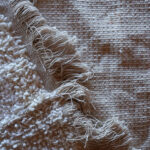
The decorative aspect of an art object is crucial to most Indian crafts, and is central to traditional beliefs about beauty and, in some cases, divinity or magic. This is outlined in aesthetic theories such as alamkara and dhwani, and put into practice through texts such as the Shilpa Shastras and the Raga Vibodha. Ornamentation is seen as an enlivening layer on existing craft objects and is applied to clothing, jewellery worn by human figures in art, the adornment of buildings with sculptures, the mood of a melody, and the inventive use of metaphor in language.
In some cases, materials with real-world value are used to ornament an object, such as gold and silver zari thread applied to Banarasi brocades and gota work in Rajasthan, or expensive pigments like ultramarine blue (derived from lapis lazuli) and gold used in illustrated manuscripts. Valuable materials may also be simulated, as in the case of beetle-wing embroidery, or embellishments like coins and cowrie shells used in Banjara embroidery. Temporary murals, such as Mandana, Sohrai and Khovar painting, are often used to mark important events by decorating a home or other important spaces. Ornamentation can also serve a talismanic function, as in the case of Kolam floor painting from Tamil Nadu, even when this is done by ritually marring existing decorative elements with motifs like the Nazar Battu in phulkari embroide
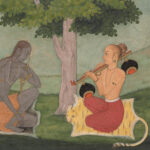
Comprising a set of miniature paintings, a ragamala depicts the visualised forms of…
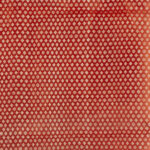
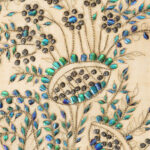
Used to embellish clothing as well as home furnishings with the iridescent wings,…
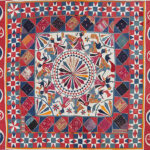
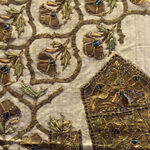

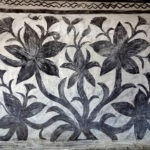
A traditional mural painting used to decorate nuptial chambers, Khovar painting is practised by several…
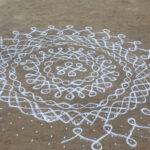
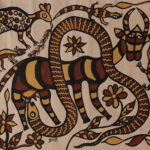
Along with Khovar, Sohrai is one of two historical mural painting traditions of the Hazaribagh…
A major result of the liberalisation of the Indian economy in 1991 was a surge in economic and cultural exchange between India and the world. Globalisation ushered in a sharp increase in the prices and sales of Indian art during the Indian Art Boom of the early 2000s. The Boom period established the careers of several emerging artists in India following the work of writers like Geeta Kapur, who laid out a historical backdrop of Indian Modernism. This sparked an academic interest in cultural production amidst the newly opened, fast-growing Indian economy, allowing for financial speculation on contemporary Indian art. Due to the rapid changes in the commercial infrastructure for Indian art, the Boom period is often criticised as the beginning of an era of opportunism, exclusivity and elitism in the Indian art community.
Artists of the time commented on changes in Indian consumption patterns and visual culture following liberalisation. They built on Modernist questions on how a nation is built, identified visible signs of India’s ascendant urban middle class, developed a vocabulary of symbols that emerged from uniquely Indian modernity and its tense relationship with the past, and exposed regional class and caste politics on large and small scales.
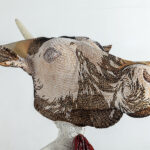
With a practice that spans sculpture, painting, collage, video, photography and text, British-Indian…
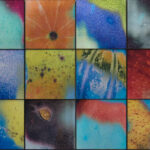
A contemporary artist working across mediums such as painting, sculpture, video, photography and telescopes, Jitish…
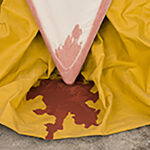
A multidisciplinary artist based in Los Angeles and Mumbai, Neha Choksi works with performance-based film…
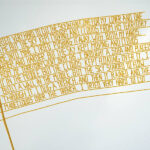
A Mumbai-based multimedia and multi-format artist, Shilpa Gupta uses text, video and found…
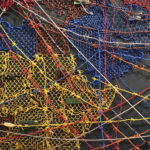
A contemporary artist who works across mediums such as drawing, photography, sculpture and…

Founded in 1992 by Jeebesh Bagchi, Monica Narula and Shuddhabrata Sengupta, Raqs Media Collective is…
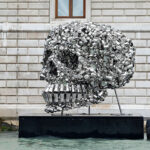
Born in Khagaul, Bihar, Subodh Gupta is an artist who specialises in installation art using…
Introduced to India in the mid-nineteenth century by British officers, photography was meant to aid in anthropological and administrative surveys of the population. The practice acquired a commercial dimension through the emergence of photography studios, which were not obliged to fulfil colonial directives and could become a site of aesthetic possibilities. The lone travelling photographer and his limited equipment were soon replaced by purpose-built studios strategically situated in major cities, to better cater to British clientele and Indian royal families. Some grew into franchises that spanned multiple locations across the subcontinent.
The earliest photography studios in India were run by Europeans, who weren’t affiliated with the East India Company, such as F Schranhofer and Augustus G Roussac in 1849 and 1850 respectively. Soon after, British studios like Bourne & Shepherd, established in 1863, attained significant commercial success. This system of photography was adopted and perfected by Indian studios like Deen Dayal & Sons, established in 1874. Later Indian photography firms were notable for their innovations with the medium as well as the space, such as Mahatta & Co which started its studio on a houseboat, and the combination of painting and photography practised by Khubiram Gopilal in Nathdwara.
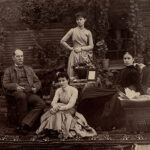
Established by photographer Lala Deen Dayal in the mid-1870s, Deen Dayal & Sons was one…

An early twentieth-century photographic studio set up in Ceylon (now Sri Lanka) and India, E.…


Founded in 1882 by PA Johnston and Theodore Julius Hoffmann, Johnston & Hoffmann…
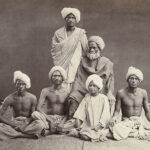
One of England’s largest photography printing studios and archives of the nineteenth century, Francis Frith…
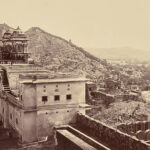
One of the first commercial photography studios in India, Bourne & Shepherd was established in…
Photographic albums gained popularity soon after the camera arrived in mid-nineteenth-century India. Beginning in the 1850s, most photographic albums consisted of carte de visite portraits or card-sized photographs made in batches that fit onto a single plate, thus saving materials and money. Such albums were usually made by photographers such as Hurrychund Chintamon, on commissions from wealthy Indian families. A carte de visite album, unlike later ones that used full-sized photographs, was seen as an expensive but still affordable luxury that became an intergenerational heirloom. Scholars have stipulated that the photo album may have been particularly appealing due to its similarity to the muraqqa: albums of miniature paintings that were made for royal families or individuals in Islamic courts.
The assumption of truthfulness in a photograph was often undermined by the album format with photographers using staged scenes or techniques like combination printing. Ethnographic surveys by colonial officers took the form of photo books from the 1860s onwards, and are considered deeply problematic today. This medium was also used to stage exoticised or stereotypical scenes of Indian life meant to intrigue the viewer rather than reflect reality, such as Darogah Abbas Ali’s albums on the erstwhile court of Oudh at Lucknow.

A photographic format for small albumen prints, the carte de visite – French for “visiting…

The multi-volume photographic and print publication, The People of India: A Series of Photographic Illustrations,…
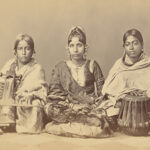
A photographic album published in 1874 in Calcutta (now Kolkata), The Beauties of Lucknow consists…
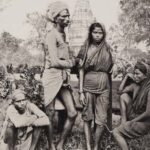
A two-volume photographic album of albumen prints by William Johnson and William Henderson, it…
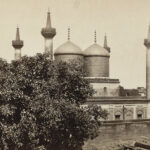
A book of photographs authored by Darogah Abbas Ali and published in 1874, The Lucknow…
Typically invoked to protect homes, temples or individuals, guardian spirits are a standard presence in Hindu, Buddhist and Jain iconography. These entities are most prominently represented when shown flanking doorways on buildings or in illustrated manuscripts and are depicted more subtly for individual protection in talismanic pendants and garments. Guardian spirits may sometimes be deities in their own right, such as the god Kubera who often assumes the role of a dvarapala, or doorway guardian, in Buddhist temples. While guardians such as Yakshas and Yakshis are depicted in a stately human form, others have animal or chimeric forms, such as Makaras or the many types of Yali. Fearsome entities such as these — also known as grotesques — are meant to represent the powerful natural forces controlled by the temple deity.
Outside organised religions, guardian spirits also occur in regional or Adivasi folklore, such as the Rakhondars of Goa, Jimmidaarin yaya worshipped by the Gond people and several others. Some deities are considered guardians by virtue of controlling diseases, such as the goddesses Sitala and Mariamma, who, it is believed, protect their devotees from smallpox.
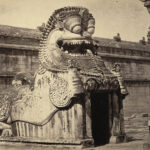
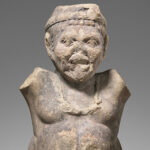
Mythological figures often represented visually in a pair, the yaksha and yakshi are…
The Bengal School, as it came to be known, was India’s earliest modern art movement. Revivalist and anti-colonial in its goals, the movement gained prominence after the Partition of Bengal in 1905 and grew out of an increasing disdain among the Indian art intelligentsia for Western aesthetic sensibilities and the exoticising gaze with which India’s natural, cultural and mythological heritage was often depicted. This included a rejection of Company paintings commissioned by British collectors and researchers, as well as the work of artists like Raja Ravi Varma who painted in a Western naturalist style.
The movement turned to Indian styles like miniature painting, Mysore painting, folk and indigenous art traditions, used local materials like tempura, and derived its subject matter from Indian history and mythology. Abanindranath Tagore and others also collaborated with Japanese artists in an attempt to formulate a pan-Asian aesthetic that stood in contrast to European Realism.
EB Havell and Abinandranath Tagore are considered the founders of the Bengal School. Other prominent artists in the movement include Abinandranath’s brothers Gaganendranath and Rabindranath Tagore, and from the following generation, Nandalal Bose, Kshitindranath Mukherjee, AR Chughtai, Asit Kumar Haldar and K Venkatappa. Significant institutions established by the movement include the Government College of Art, the Indian Society of Oriental Art and Visva-Bharati University in Shantiniketan.
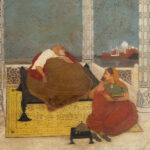
Belonging to the influential Tagore family of Jorasanko, Calcutta (now Kolkata), Abanindranath Tagore…

One of the oldest art institutions in India, the Government College of Art and Craft…
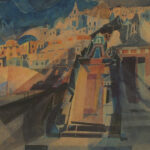
An artist, actor, and stage and costume designer, Gaganendranath Tagore belonged to the…
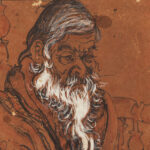
A British art historian, educator and administrator who worked in India in the late nineteenth…
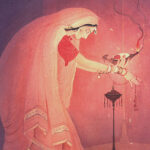
Founded at the turn of the twentieth century by EB Havell and Abanindranath Tagore, the…

Founded in 1915 in Calcutta (now Kolkata) by the Tagore family, the Bichitra Club was…
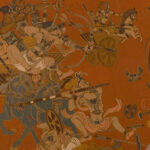
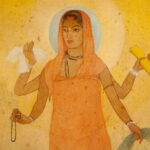
Originating with the Bengal School in Calcutta (now Kolkata) in the mid-nineteenth century,…
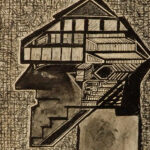
Born into the influential Tagore family of Jorasanko in Calcutta (now Kolkata), Rabindranath…
A category of artists who emerged out of an interaction between Indian and European culture and scientific exploration after the British East India Company gained administrative control over Bengal in 1757, were known as Company painters. Company rule resulted in the loss of courtly patronage for artists in India, which led to artists and craftsmen from the courtly centres in Bengal migrating to cities such as Patna and Murshidabad, which had viable commercial markets.
The East India Company and its officials, such as William Fraser and James Skinner, often operated as middlemen, putting visiting naturalists and ethnographers in touch with local artists who could be commissioned to visually document the subjects of the survey. The Company school had several centres across the subcontinent, populated by artists who had been trained in local traditional Indian painting styles and then adopted conventions of Western art, such as perspective, chiaroscuro and the picturesque. Indian painters thus played a major role in creating these early ethnographic and scientific records of the natural and cultural features of India, including flora, fauna, geology, costumes, architecture and street scenes. Notable artists of the Company painting school included Sewak Ram of Patna and Ghulam Ali Khan of Delhi.
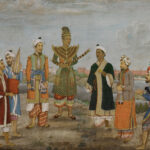
Painting in the years 1817–52 while primarily based in what is now New Delhi, Ghulam…
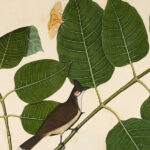


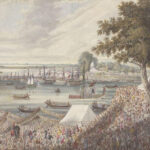
A prominent Company School artist, Sewak Ram’s work defined the distinct stylistic elements of the…